Daniel Gordon Soutar's Influence on Local Golf Courses: Some History Notes

Fairfax Corporation. (1936). Professional golfer Daniel Souter wearing a flat cap and swinging a wood club with onlookers, New South Wales, 12 August 1936 Retrieved from http://nla.gov.au/nla.obj-161889598
In Pittwater two courses were officially opened within months of each other at Bayview (1924) and Mona Vale (1925), and these had been preceded by a courses at Palm Beach (1923 onward - officially granted land in 1926) and were followed by one at Avalon Beach (1926) and then Elanora Heights (1929), both of which were designed by Soutar and have steep pitches. Mr. Soutar is also credited with fixing a few problems at the Manly Golf Club and with the extensions to 18 holes at Long Reef, and his wife and himself appear to have a hand in early Balgowlah Golf Club works. Decades prior to that, one 9-hole course attached to The Oaks-La Corniche grounds was the first local course Daniel Soutar played at in February 1911, months before he would become the professional attached to the Manly course and club.
Although these Pittwater golf links were all only small nine-hole links to begin with, their presence in every place being subdivided and sold for holiday camps or holiday homes, along with whole pages in newspapers being devoted to the sport of golf, alike they now are to the various codes of football, signalled Australians had shifted from being purely a race of workers as the notion of playing a sport took hold.
Early Scottish golf courses, which gave this game to the world, were primarily laid out on 'links land'; soil-covered sand dunes directly inland from beaches and this gave rise to the term "golf links", particularly applied to seaside courses and those built on naturally sandy soil inland. The word "links" itself comes via the Scots language from the Old English word hlinc: "rising ground, ridge" and refers to an area of coastal sand dunes and sometimes to open parkland. Clearly Pittwater, which had been compared by early visitors to the lochs and hills of Scotland, and its coastal plains in all the areas south to Manly, were very well suited to this game and their addition as an attraction was cited from earliest instances as a way to attract visitors and permanent residents.
SEASIDE GOLF LINKS
D. G. SOUTAR'S VIEWS
An interesting series of articles on golf written by D. G. Soutar, the Manly professional, and one of the greatest players in Australia, are appearing in 'The Sydney Sun.' In one of them he dealt with the 'Want of Seaside 'Links' and he made such complimentary reference to Newcastle that his remarks are worth quoting. He wrote: —
At this time of the year, when most golfers are on holidays, one cannot but notice the dearth of really good seaside links and the opportunity that invites shire and municipal councils or private enterprise to cater for that class of the community. Golf is a universal game, and Its devotees will follow the flag more zealously than the devotees of any other sport. This has been proved over and over again both in America and the Old Country, where every opportunity has been taken to foster the spirit. Some 20 years ago the railway companies In Great Britain went to the trouble of marking the different golf courses up on their maps in red so that golfers would know where they could enjoy the sport. The game became so popuIar that golf courses sprang up everywhere, and it became a question as to whether it would be advisable to mark the golf courses or paint the whole map red.
Many a village In Scotland owes its existence to the establishing of golf links, and at least one in New South Wales — Leura — has the same distinction. Take the golf courses away from these places, and the places are done.
Sandy Soil, with Grass
Most of the seaside links that we read about — St. Andrews, Prestwick, Deal, Sandwich, to mention some of the championship courses — are laid out on land that would he classed as good grazing land, but not suitable for intense cultivation. They are ideal golf courses — sandy soil, with grass short and carpety.
There must be similar country in New South Wales. Take a radius from Newcastle in the north to Jervis Bay in the south. Both are within easy reach of Sydney by rail or car. The links of the Newcastle club at Stockton are my ideal of a seaside course, although to the casual observer the scrub may be at drawback; but when estimating the possibilities of a probable seaside golf course It must be taken into consideration that all our seaside country is scrubby, and when It is cleared it comes very close to the recognised standard.
When travelling by tram or train I often think of such and such a place as good golfing country. For example, the land on which the township of Brookvale, outside Manly, is built would have made a golf course that golfers would enjoy. Further out, Mona Vale is most suitable country for golf, and a course laid out there was for a time most popular, but for some reason was allowed to lapse. The country around Tuggerah Lakes and Wyong is most suitable for golf, being sandy and level, but undulating. Anyone considering the question of establishing golf links north of Sydney ought to keep the Tuggerah-Wyong District in view. SEASIDE GOLF LINKS (1919, February 14). The Newcastle Sun (NSW : 1918 - 1954), p. 3. Retrieved from http://nla.gov.au/nla.news-article159376079
Although Mr. Soutar refers to Mona Vale's links having 'lapsed' and those he played on, the newly opened ones in early 1911 on the La Corniche property when it came under the auspices of Rickard's, were gone, Mona Vale Golf Club holds records which indicate there were a few greens available, made by locals.
Golf, a sport which may be played in any season, is among our oldest sports, along with the kicking of a ball with the feet:
In 1349 football is mentioned in a statute of Edward III., who objected to the game not so much for itself, but as "tending to discourage the practice of shooting, upon which the military strength of England depended." The King, writing in that year to the sheriffs of London, says that "the skill at shooting with arrows was almost totally laid aside for the purpose, of various useless and unlawful games," and the sheriffs are thereupon commanded to suppress "such idle practices."
Forty years, after, Richard II passed a similar statute (12 Rich. II, c. 6, A.D. 1389), forbidding throughout the kingdom "all playing at tennise, football, and other, games called corte, dice, casting of the stone, kailes, and other such importune games."
Scotland evidently saw military decadence in both golf and football, for in 1457 James III. decreed that four times every year reviews and displays of weapons were to be held, and "footballe and golfe be utterly cryed down and not to be used.' . Notes. (1902, May 3). Australian Town and Country Journal (Sydney, NSW : 1870 - 1907), p. 52. Retrieved from http://nla.gov.au/nla.news-article71523462
James IV lifted the ban in 1502 when he became a golfer himself, with golf clubs first recorded in 1503–1504: "For golf clubbes and balles to the King that he playit with".
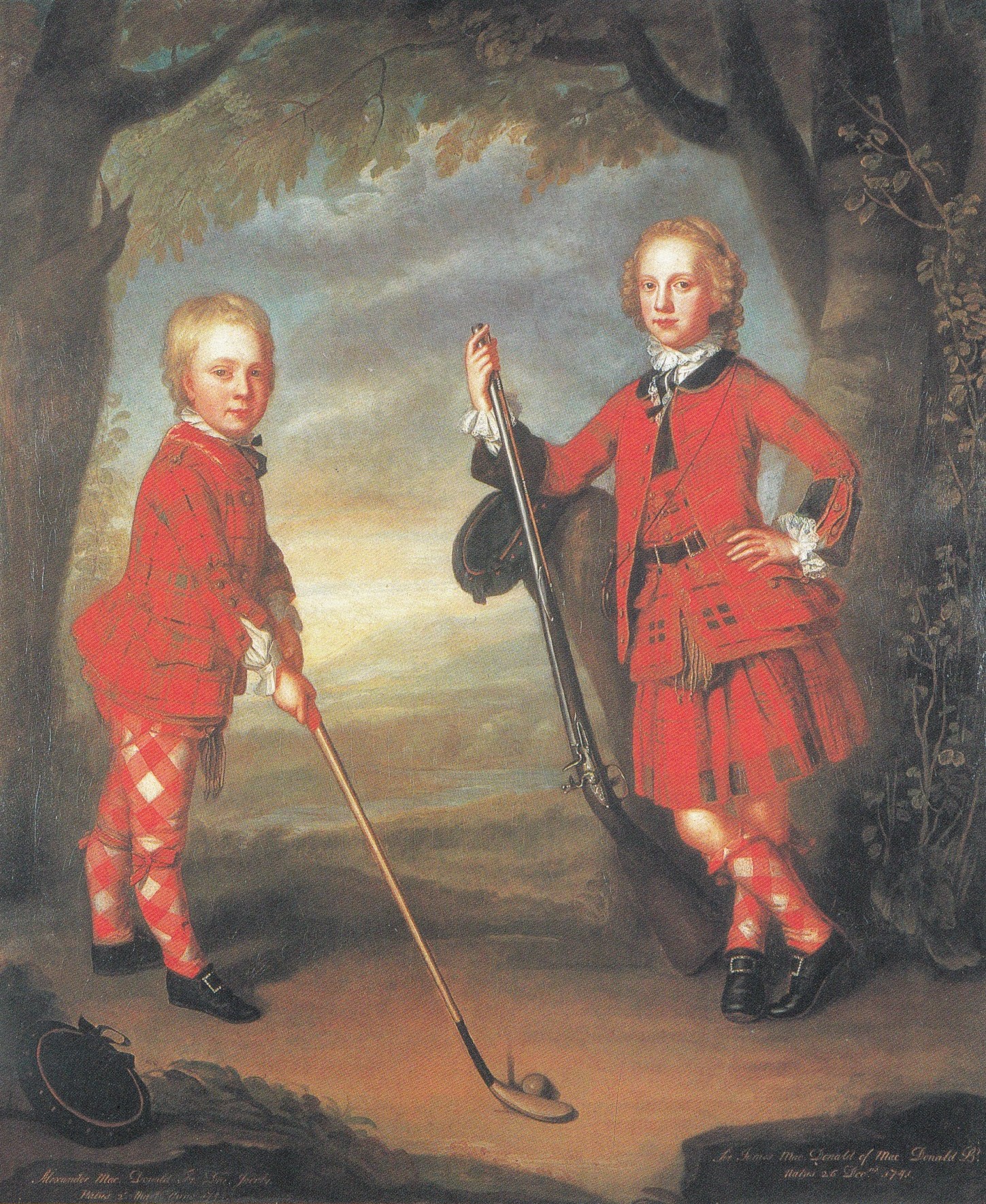
The MacDonald boys playing golf, attributed to William Mosman. 1741, National Galleries of Scotland.
Born on December 3rd, 1882 at Carmyllie, Scotland, to James and Anne, Daniel Soutar's family moved to Carnoustie when he was five, where he would later learn to play golf over these famous links. He was the second eldest in a family of 11 and left school at age 12 to earn a wage to help with costs at home. He was a regular caddie at Carnoustie, after early forays into soccer and cricket, earning nine pence per round and at 14 became an apprentice carpenter and eventually a cabinet-maker. Those he became friends with and played against were Carnegie ‘Neg’ Clark and James Herd ‘Jas’ Scott and although both were slightly older, Dan managed to beat them. At the age of 16, Dan beat ‘Neg’ 2 and 1 in the final of the Dalhousie Cup at Carnoustie - although he relates that win was almost thwarted by the attentions of a wee terrier - a breed well-know for their love of round things and chasing those round things:
" MY BEST."
NO. 7— D. a SOUTAR, GOLFER A GREAT MATCH AT SIXTEEN.
D. G. Soutar is the best-performed golfer in Australia. Ho is a marvel of consistency. His deeds in the open championship over a series of years show that his play is of the highest standard, for when he . has not won I he has been near the top. . He is famed as a match player. He is a firm believer in the statement that "a hole is never lost until It Is won."
He started off on his victorious career in Australia as an amateur, and then went, over to the professional . ranks. Although he has won many championships he regards the winning of a match on his own village links In Scotland when he was 13 ' years of age as his best performance.
Here is his story: — ,
"Asking me to decide upon and describe my best performance in the golfing line, that will necessitate some memory-brushing ' I have played In many matches, and as a fair number of them have been close, It is very hard to decide which Is the best;
"It very often happens that In a match a player knows exactly the crucial point, and It may be missed by all those looking on, as there is generally a 'something that seems to say that the match Is won, barring accidents. I have had two) or three experiences of this sort, so it may be of Interest to mention them.
"The first time I experienced this feeling with anything like certainty happened when playing tho final of the amateur championship of Australia at Adelaide In 1903. My opponent In the final was, perhaps, the best ..match player in Australia, J. D. Howden, and we had a very good go.
'The final of the championship consists of 36 holes match play, and we finished all square at the end of the first. 18, although weak putting lost me a hole or two.
"The first hole after lunch was halved, and I won the second, my opponent hooking his approach shot out of bounds three times. My lead was short-lived, as Mr. Howden got In some of his fireworks, and averaged under fours for tho next seven holes. I was two down at the turn. However, I did not lose heart, as I was playing well, and I thought my chance would come as soon as lie made a mistake. The chances were that he would go off a little, as he was playing too well to last. Especially Is this so In a final tie. I felt that if I took the opportunity when It came the match was mine. It I turned out exactly as I thought it would.
The tenth hole on the Glenelg course was partially blind, and the top of the flag could only be seen for the approach shot. We j both had good drives, and he had to play the odd. What I had been waiting for happened. He did not get a proper hold of his approach, and was some £0 yards short of I the green. I felt my chance had come. I took plenty of time over my approach shot, reached the green, and won the hole in four to five.
"I never looked back after that, and won the match and championship by 3 up and 1 to play. It may appear like taking liberties to ever suggest being confident of winning against such a hard fighter and splendid player as J. D. Howden, but nevertheless that is exactly how I felt on that occasion. I have no doubt that the majority of players have experienced the same sensation at some time or other during their careers.
"The next occasion on which I felt like that was when I won the open championship of Australia at Sandringham in 1905. At the end of the third round the Hon. M. Scott led the field by two strokes, while I was second, and as we were playing together, it was practically a match between us, as the next player on the list was a few strokes worse.
"By the time the fifth hole was reached I had made up the leeway and was playing well within myself, while my opponent was flying signals of distress. To get to the sixth tee at Sandringham a walk of about 60 or 70 yards is necessary, and I remember remarking to my caddie that the match was mine if I did not make a mistake at the next hole.
"The sixth hole is one I have never been In love with, although it is an easy enough hole, and I would be satisfied to write 4 on my card every time I play a championship there. However, I played the hole carefully and got my 4, while Mr. Scott sliced his drive and got into the rough. That was the beginning of the end, as he went to pieces after that, and I won very easily.
"A match that I took part in, which has been described as the best match ever played in Sydney, was against Carnegie Clark, at Rose Bay, in 1906, I think. I forget the details now, but two incidents are still fresh In my mind. At that time the fifth hole was played from the present tee on to a green alongside the present twelfth.
"Clark had the honor, and played a very good tee shot, the ball coming to rest about 12 feet from the hole, and It appeared even closer from the tee, I then played my sh and got let ween his ball and tho hole. He just missed his putt, and I holed mine, winning the hole in 2 to 3. '
"At the next hole we both had good drives straight down the fairway, and Clark had to play the odd. At that time the sixth green was over tho road, and alongside the fence surrounding tho old clubhouse. Clark played his approach shot, and went out of bounds over the fence. Dropping another ball he made the same .mistake, and consequently had to play 'three more.' He pushed his next shot to the right of the green, and as I made no mistake with my shot, and reached the green, he gave up the hole. Eventually I won on tho last green, if I remember rightly, and allowing a 4 to the hole, which I did not hole out, I was round In 72 strokes-figures which speak for themselves.
"I also had another good match at Rose Bay, against Jack Donald. Somehow or other, I could not get going properly going out. lie was not playing too well, either, and I was one up at the turn, but the play v/as not of the best. He won the eleventh and twelfth, and became one up, and I remember my caddie saying I would have to buck up, as he had a 'deaner' on the match.
"The thirteenth is a bogey 5, and Donald and I both got on the green, in two. He had to putt first, and nearly holed out, his ball stopping about three inches from the hole, and just leaving me sufficient room to get' past. I putted, and holed out In 3, which was hard luck for Donald, as he was down in 4. being still one under bogey. However, he was to get a farther down at the next hole, as I holed a 2 to his 3. and he thus lost two holes in succession, although he had done each of them under bogey. This was the turning point In the match, as I won on the last green by two holes.
"Another hard match that I had was against J. D. Howden, at Botany, in the first inter-State match in 1904. He played first man for Victoria, and I occupied a similar position for New South "Wales. We had a ding-dong go, and finished all square. I remember I had rather an interesting finish, as we were both on the green In two. It was a temporary green, as the medal grass was too soft owing to the heavy rain. With our run-up putts we were both short, he being about four feet from the hole, while I was a shade further away.
The green was very bumpy, and four and six feet putts are easily missed on the best of greens, but we each holed out and halved the hole. Mr. Howden created a bit of a sensation that day by carrying the ditch at the fifteenth with his second shot and nearly getting a three, a feat that the longest drivers would not attempt unless there was a strong following wind."
"Although those matches I have described were all strenuous, and the finish on the right side for me, I think my best performance took place away back In 1899, on the Carnoustie links, in Scotland, when I was sixteen years of age.
"At the beginning of that year I had joined the Carnoustie Artisan Club as a junior member, and I am safe in saying that at that time the club had some of the best ' players In Scotland in its ranks. The player who won any of the knock-out tournaments had to play all he knew to win.
There were two tournaments that were very keenly played, namely, the 'Caledonia Kittle,' carrying with it the championship of the club, and the 'Dalhousie Cup,' a handicap event.
"Being such a youngster and a new member, I did not Intend to enter for the cup, but my pals advised me to, and I sent along my name and was given a handicap of 6. I got through the early matches fairly easily and was drawn In the semi-final.
"I think it was David Bell, the best player In the club at that time. I early established a lead, and at the tenth hole was in tho very comfortable position of 4 up and still had three strokes to get. At -the eleventh we were on the green in the 'like', and as I had a stroke I had a putt for the hole. I can remember what followed as if it only happened yesterday.
"I had just settled down to putt when I heard the pitter-patter of a dog's feet, and on looking up I saw a little terrier running towards me. Of course, there was the usual cry from the crowd, but the little fellow paid no attention to them and calmly watched what I was about to do. I went to putt again and he started his trot. I stopped, and so did he. This was a bit too much, and he was 'shooed' off the green, but I suppose the Incident upset me and I took three putts and lost the hole.
"I lost three out of the next four holes and we wore all square and three to play-rather a serious position to be in after being 4 up arid S to play. The next hole was rather difficult, as a creek had to be crossed twice, and we each took 5, but I won the hole as I had a stroke. "At the next hole I holed a good putt for a 3 and won the match 2 up and 1 to play, and I also won the final by the same margin.
"That I think, can justly be termed my best, as it was the first big match I had played in, and it was a case of an untried youngster against a seasoned veteran. When the match was all square and 3 to play it was odds on the veteran winning, but, fortunately for me, It happened otherwise. Now I come to think of it that dog had a narrow escape, as I have seen a putter broken over a dog's back for less."

D. G. SOUTAR.
"MY BEST." (1913, July 6). The Sun (Sydney, NSW : 1910 - 1954), p. 17 (SUNDAY EDITION). Retrieved from http://nla.gov.au/nla.news-article229674638
An earlier reference to Carnousite:
I quoted the other day from a letter sent by a Carnoustie man at White Cliffs to 'Niblick' in the 'Leader,' to the effect that 'D. G. Soutar, the Australian open champion, is unworthy even to caddy for some Carnoustie players who recently went under engagement to America.' P. Robertson was the only name mentioned. 'Niblick' quoted Mr. Hugh Macneil and a Victorian authority just returned, the one .is expressing the view that Soutar could hold his own in any company, and the other that he would come in the class next to the leaders of the world's golf— Braid, Vardon, Taylor, and Herd. As I was satisfied that the man at White Cliffs was putting Soutar's status before he left Carnoustie unfairly'— he has, we know, improved very much since — I asked Soutar for the actual statement of his handicaps and performances at Carnoustie, and this is the result: —
'For about three years before I left home I was a scratch player of the Carnoustie Golf Club, and played third in the interclub matches against St. Andrew's and the other artisan golf clubs.
I won the Gold Cross (scratch), Dalhousie Cup (handicap 6), in the year 1899; tied for the Stirling Cross and Neilston Medal from scratch, 1901; Runner-up in the Caledonia Kettle competition (which carries with it the club championship) to the Peter Robertson who is mentioned in the letter to the 'Leader;' runner-up in the Dalhousie Cup competition, 1902, to Robert Harris (who represented Scotland in the international match with England).
I have also played for the 'Evening Telegraph' Cup, but I was never very successful in that competition, the fourth round being the furthest I could go. This competition carries with it the amateur championship of Scotland, and has been won by F. Scroggie, 1904, 1905; R. Harris, 1902, both of the Carnoustie Golf Club; and I may mention that Willie Smith, ex-American champion, 1900; Alexander Smith, runner-up in the American championship for the last two or three years; Robert S. Simpson, the best professional in Chicago, George A. Low, the late David Bell, Peter Robertson, and his brother David (who was runner-up for the 'Telegraph' Cup to' Fred. McKenzie, of St. Andrews) were all scratch players of the Carnoustie Club.
Soutar is one of the most modest of golfers, and never talks of the position he has won in the golf world of Australia, or of his performances elsewhere, but the mere fact that the Carnoustie handicappers considered it necessary to put him in line with this galaxy of talent is evidence of what was thought of him by the leading artisan club of Scotland, so many of whose players have become famous, either while retaining their amateur status, or subsequently to their relinquishing it to enter the professional ranks. GOLF. (1906, January 3). The Sydney Mail and New South Wales Advertiser (NSW : 1871 - 1912), p. 58. Retrieved from http://nla.gov.au/nla.news-article164039876
In 1902 Carnegie ‘Neg’ Clark, who had turned professional, accepted a three year contract with Holdsworth MacPherson in one of the large stores in Sydney. The position required him to promote the game of golf throughout New South Wales, teach and sell golfing products. So well did he do that he sent a cable to then 20 year old Dan and James whilst they were en-route to settle in South Africa. The text essentially read “do not stop in Cape Colony proceed on to Port Jackson, employment arranged”.
Dan Soutar was employed by the same firm as Clark, although in a different department. ‘Jas’ Scott was employed as a golf professional, manager and greenkeeper at the Blue Mountains Golf Club - now known as Leura Golf Club - which was Clark’s first course design in Australia in 1902.
Dan, still an amateur, joined the Marrickville Golf Club - today’s Bonnie Doon Golf Club - that played a course laid out over Gannon’s Paddock between the Sydney suburbs of Tempe and Sydenham. Only three months after arriving in Australia, he entered and won the 1903 Australian Amateur Championship played at the Adelaide Golf Club’s links at Glenelg, beating fellow Scotchman Jim Howden 3 and 1 in the final. Watching Soutar win was Herbert ‘Cargie’ Rymill, who later credited this experience as igniting his passion for golf, leading to his own career as South Australia’s finest golf architect.
That same year, Mr. Soutar won the New South Wales Amateur Championship and repeated the feat the following year. He entered the very first Australian Open Championship in 1904, and finished a creditable third, beating Carnegie Clark by one stroke.
MR. G. D. SOUTAR.
The winner of this year's competition for the Australian golf championship is Mr. G. D. Soutar, who has allowed but little time to elapse before demonstrating to us that he knows perfectly well how to play the game. It is only a few months ago since he came to Australia from Scotland. Mr. Soutar threw in his lot with the Marrickville Club, and for it he has performed with great success. He is the 'top notcher' of the club, and, as far as that goes, there are few his superiors. Another thing, he is popular with almost all golfing enthusiasts. Mr. Soutar is a tall, broad-shouldered young man of about 23 years of age. He learnt golf on the Carnoustie links, Scotland.

(From, a photo. specially taken for the 'Evening News.’) MR. G. D. SOUTAR. (1903, July 6). Evening News (Sydney, NSW : 1869 - 1931), p. 6. Retrieved from http://nla.gov.au/nla.news-article115857037
When Clark’s store contract expired in 1905, the Royal Sydney Golf Club offered him a position as professional, at double the salary the then professional, Victor East, was receiving. East moved to the Australian Golf Club and ‘Neg’ asked Dan to join him as his partner at Royal Sydney. Soutar accepted and thus turned professional - there was no special requirements for golfers to be deemed professional in those early days, however if one derived an income from the game, they were considered as such.
GOLF
BY FOOZLER.
The first general meeting of the R.S.G.C. to be held in the new clubhouse has been fixed for Wednesday fortnight (February 1). Already there are a sheaf of notice's of motion in connection with it, the various changes involved' in possession of the new clubhouse and course having inspired .members to suggest various reforms, which they calculate would best meet the larger operations.
Carnegie Clark, the well known professional, brought by Holdsword, Macpherson, and Co. from Carnoustie, and D. J. Soutar, ex-amateur champion champion of Australia and holder of the New South Wales amateur championship, have been engaged as professionals to the Royal Sydney Golf Club. As they were under contract with Holdsworth, Macpherson, and Co. it. has been mutually arranged that they shall' continue to carry on that firm's work, but when one is at the firm s establishment or in the country it is guaranteed that the other shall be always available at the Rose Bay clubhouse. To this end they have been given a cottage residence in the clubhouse grounds, as well as the club shop.
Popplewell, who has for some time been assistant to East, and East himself, who has been professional to the club since the death of J. Scott, assist the new firm. Clark and Soutar, on results, form the strongest professional combination in Australasia, Soutar's record as an amateur is well known. He had opportunity of meeting the leading Australian professionals in the open competition at Botany in 1903, and defeated all comers, ' Clark o'conmng next place. Soutar again met the professionals-this time of Australasia— in the open championship at Botany in 1904, and again led them, the first two places being occupied by the R.M.G.C. amateurs, Hon. M. Scott, O Hyland, 323. Next came Soutar, 324, and Clark, 325. Clark at the same meeting won the match confined to professionals, defeating Maclaren in the final. GOLF. (1905, January 18). The Sydney Mail and New South Wales Advertiser (NSW : 1871 - 1912), p. 183. Retrieved from http://nla.gov.au/nla.news-article164031266
In his first year as professional, Dan won the 1905 Australian Open and the Australian PGA Championship. He won the PGA again in 1906 and 1907, and in 1910. He remained with Clark at the Royal Sydney Golf Club until 1907 and during that time, not only wrote Australia’s first textbook on golf (The Australian Golfer) and taught many influential people, but also designed some wonderful layouts. He also met his future wife who was a bridesmaid at the 1906 wedding between Carnegie Clark and Alice Fullarton, another person with Scotch heritage.
He next moved to Leura in the Blue Mountains where in 1909 he and Annis Jackson married.
A very pretty but quiet wedding took place in the Presbyterian Church, Wentworth Falls, on Wednesday afternoon, the contracting parties being Mr. D. J. Soutar, manager of the present Leura Golf Club, and Mrs. Annas Jackson, of Sydney. The Rev. R. A. Redmond officiated. After the ceremony the bridal couple returned to the Palace, Leura, where breakfast was served. The happy couple have taken up their abode at 'Blink Bonnie,' Leura Mall. The presents were numerous and costly. LEURA. (1909, March 20). The Blue Mountain Echo (NSW : 1909 - 1928), p. 8. Retrieved from http://nla.gov.au/nla.news-article107957511
In our last week's district news we mentioned a pretty wedding having taken place at Leura, between Mrs. Annas Jackson and Mr. Soutar. The lady's name should have read Miss Annis Jackson. LEURA. (1909, March 27). The Blue Mountain Echo (NSW : 1909 - 1928), p. 8. Retrieved from http://nla.gov.au/nla.news-article107958613
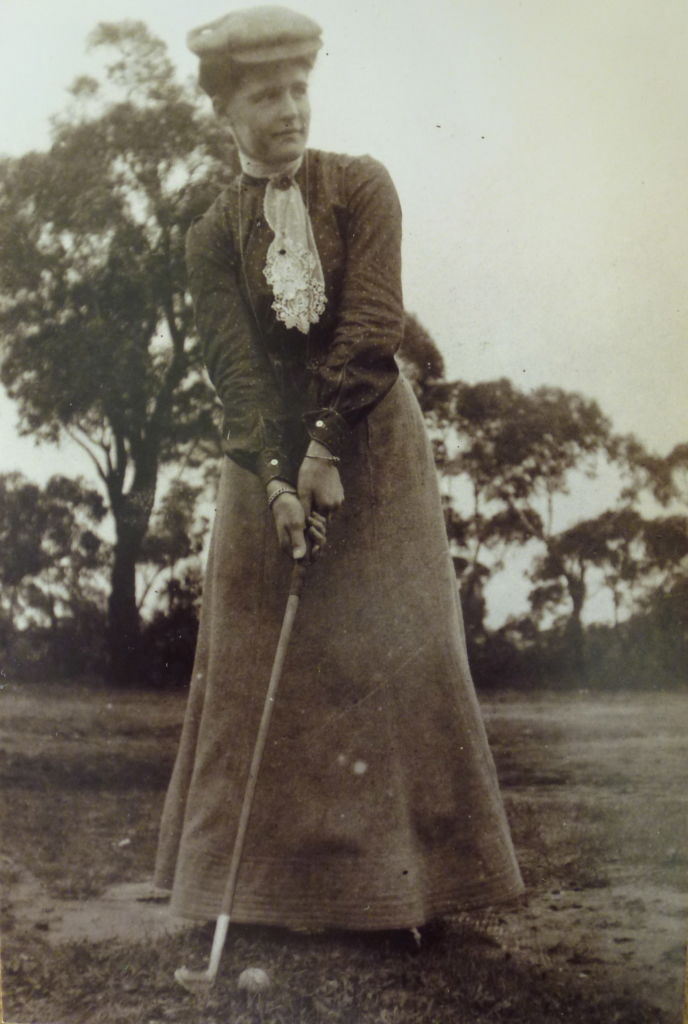
Annis Soutar (nee Jackson) pre 1910 - playing at Blackheath in the Blue Mountains - photo from the Historical Collection of the Long Reef Golf Club - where Annis was later a Life Member.
Soutar's Success.
Mr. A. G. Fowler, the Leura photographer, closed his guessing competition on Wednesday evening. The query was : ' When did A. G. Fowler start business in Leura ?' The successful guesser, out of 71 essays, was Mr. D. Soutar, Secretary of the Golf Links at Leura, who guessed within six days of the actual date. Wonder if Mr. Soutar hails from the Land of Stars and Stripes, the Yanks are the only real ' 'guessers' ' we know of. Soutar's Success. (1910, March 19). The Blue Mountain Echo (NSW : 1909 - 1928), p. 9. Retrieved from http://nla.gov.au/nla.news-article107958160
Children of the union:
SOUTAR DOUGLAS G 15792/1910 DANIEL G ANNIS KATOOMBA
SOUTAR GORDON R 25978/1913 DANIEL G ANNIS MANLY
SOUTAR HEATHER J 19022/1917 DANIEL G ANNIS MANLY
SOUTAR.—March 20 at Weyhill, Clifford avenue, Manly, the wife of D. G. Soutar, of a son. Family Notices (1913, April 5). The Sydney Morning Herald (NSW : 1842 - 1954), p. 18. Retrieved from http://nla.gov.au/nla.news-article15410235
LOST, 27th, Child’s Grey Woollen Coat near Manly wharf Return Weyhill, Clifford avenue. Manly Advertising (1918, December 31). The Sydney Morning Herald (NSW : 1842 - 1954), p. 5. Retrieved from http://nla.gov.au/nla.news-article15817937
By the Spring of 1911 he was appointed professional at the Manly Golf Club, which had commenced in 1903. Golf Australia explains the role of a Professional attached to a Golf Club as:
Whether employed on the club’s staff or as a contractor, the club professional is often the main person charged with the responsibility of running the day to day golf operations of the club. As the golf industry changes to adapt to the modern game, so too do the skills and diversity of PGA of Australia Members. The PGA of Australia comprises of more than 2,600 dedicated men and women promoting the game of golf both within Australia and overseas in the roles of Club Professionals, Assistant Professionals, Teaching Professionals, Senior Professionals, Senior Tournament Professionals and future Members, Trainees.
Terry Smith, writing in his book Australian Golf - The First 100 Years, tells of how Mr. Soutar put the following sign up on the door of his professional shop at Manly:
Learn the Fundamentals of Golf SWINGING SWEARING CHEATING Practice balls 5/- a bucket Some of them round.
The Manly Golf Course and Club, a private club, had commenced earlier in 1903. The Manly Golf Club's History of its formation gives a meeting of May 6th, 1903 where a group of 12 formed themselves into the 'Manly Golfers' and had been preceded a few years prior to that by:
When young Harris Woods brought a newly-acquired golf club to the family’s Fairlight home in 1901, he and his brother Cam started hitting golf balls in the fields surrounding Fairlight House. Their developing enthusiasm for the game led them to map out three golf holes, and then to suggest their friends George J Wilkinson and Arthur Hilliard join them.
Watched by bemused cows and curious neighbours, the four would play their golf with much laughter and occasional argument, using their own golf balls but sharing just the one club.
After a year or two the group had grown to 12 and they moved one mile north to Farrell’s paddock and continued to play regularly on what became a six-hole layout. [2.]
By the Spring of that same year had a team competing in some of the earliest inter-club matches:
Golf.
In the medal match of the Parramatta Golf Club, a rather remarkable result was achieved, when four of the members each scored a century. Mr. J. C. Wilson was on scratch, and Dr. Bowman and Messrs. Jacob and Seouller received a handicap of four points.
The Manly players will visit Parramatta links to-day and meet local players. As both sides are pretty equal, a good game is expected. Golf. (1903, September 5). The Cumberland Argus and Fruitgrowers Advocate (Parramatta, NSW : 1888 - 1950), p. 5. Retrieved from http://nla.gov.au/nla.news-article85692450
Results of that match:
Golf.
Parramatta v. Manly.
Parramatta defeated Manly at Parramatta on Saturday by 30 holes. The scores were : —
Parramatta- Manly.
J.C.Wilson.. .. 4 A. H. Hilliard 0
G. C. Scouller . . 3 L. Mansfield . . 0
Dr. Bowman . . 0 H. Morris . . 0
A. F. Jaoob . . . . 5 H. Smith . . 0
A. I. Oakes eq. H. Woods ..eg.
F.G.Morton .. 0 F. S. Smith .. 1
W. J. Moroy .. 3 L. Wade .. 0
F. W. Todhunter . . 4 K. Smith . . 0
H. McGill . . . . G J. Woods . . 0
Totals .. 31 1
Golf. (1903, September 9). The Cumberland Argus and Fruitgrowers Advocate (Parramatta, NSW : 1888 - 1950), p. 3. Retrieved from http://nla.gov.au/nla.news-article85686678
Situated adjacent to Manly Lagoon the course was subject to the whims of water and weather and flooding of the course persisted during the first few decades. This is how it looked in and around that area 1903:
MANLY to CURL CURL.
VIEWS ALONG THE ROUTE AND AT THE TERMINUS.
The newest of Sydney's tram services began running on Saturday. It extends from the Manly wharfs to the Curl Curl Lagoon, running down the Corso and along the ocean beach— otherwise the Steyne — 1 mile 40 chains. Ultimately it is intended to extend the line to Pittwater. Steam trams are being utilised in the service.
.jpg?timestamp=1574879500132)
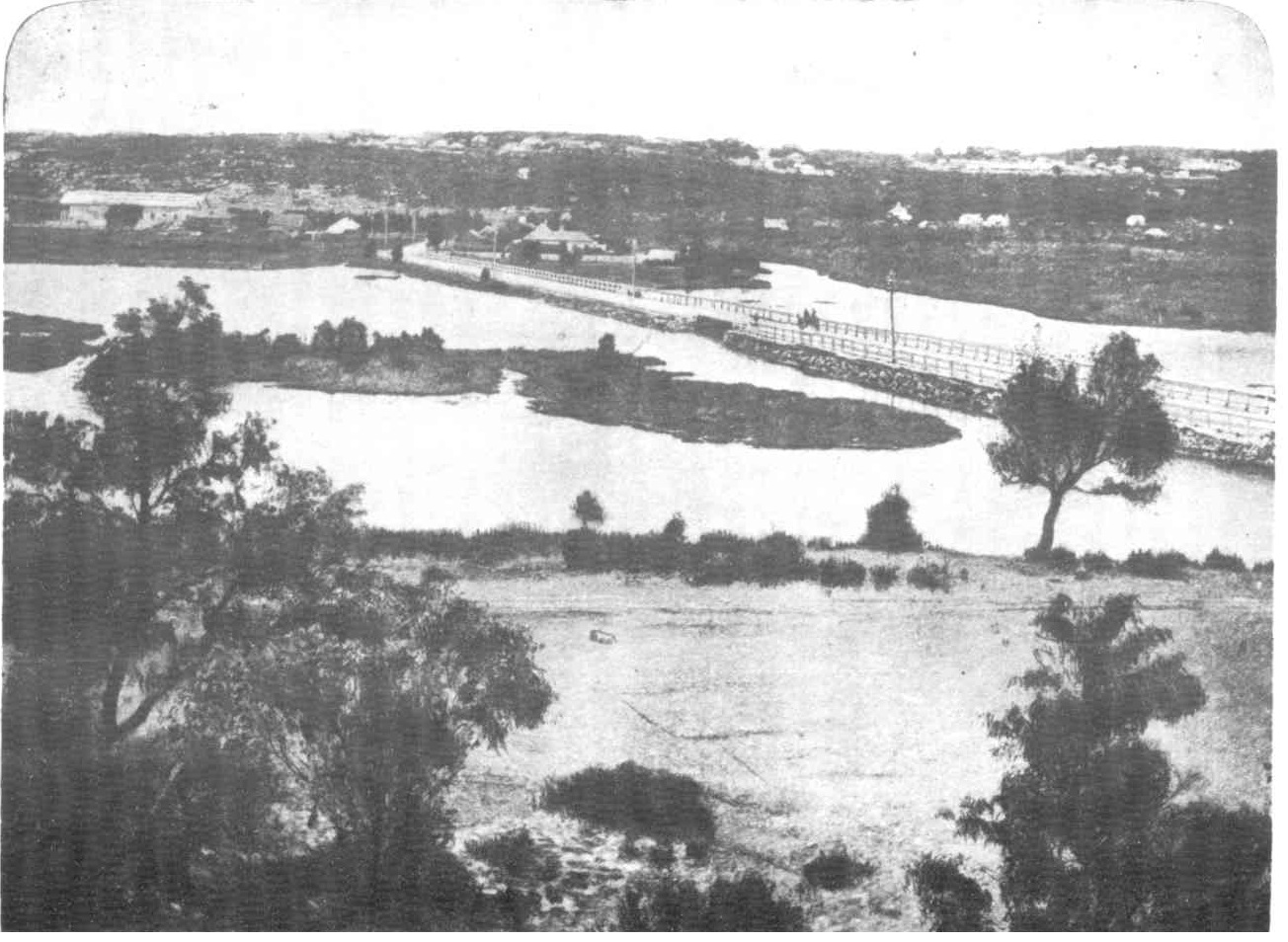
THE TRAM SHEDS AND TERMINUS AT CURL-CURL. From the other side of the Lagoon.
.jpg?timestamp=1574879535436)
CURL CURL END OF OCEAN BEACH.
.jpg?timestamp=1574879567792)
THE TRAM AT THE WHARFS.
.jpg?timestamp=1574879612469)
A DIP IN THE LAGOON.
.jpg?timestamp=1574879649080)
AT THE OCEAN BEACH. AT THE TERMINUS.
.jpg?timestamp=1574879703444)
LAGOON AND OCEAN BEACH FROM FRESHWATER HILL.
.jpg?timestamp=1574879752076)
WHERE THE LAGOON RUNS INTO THE OCEAN.
.jpg?timestamp=1574879780577)
ON THE CORSO.
MANLY to CURL CURL. (1903, February 18). The Sydney Mail and New South Wales Advertiser (NSW : 1871 - 1912), p. 416. Retrieved from http://nla.gov.au/nla.news-article163781666
The Manly tram, running from Curl Curl Lagoon (Manly end) to Manly, had its first day of public operation on Saturday 14th of February 1903, steam motor 41 operated the service hauling a single trailer, except between 3-04pm and 10-15pm when a second car had to be attached to cope with the heavy traffic. Some 2910 fares were collected on that first day yielding £12-2s-6d.
K. McCarthy, in The Manly Tramways - N.S.W. 1903-1939- A. 1903-1907 The Steam and Horse Tramway Era. (Trolley Wire, October 1979) states:
During that day paper bags of sand were thrown at the trams, but the police were called to stop this practice.
The Manly Depot staff at this stage were attached to Fort Macquarie Depot. Ticket Examiner Moore was originally destined to be in charge of the undertaking but he declined the job and Examiner Stuart Smith was appointed instead on 5 February 1903. Tickets bearing the depot code "MY" were issued twice each week from Fort Macquarie Depot. As the short journey only amounted to one fare section the following tickets were issued:-
Adult "down" journey - Id. 1st section pink.
Adult "up" journey - Id. 2nd section white.
Child journey - Id. brown.
During June 1903 the Tramway Department reached the decision that extreme economy of operation was required on the Manly tramway. An answer emerged in the adoption of horse operation to replace steam traction.
During 1901 two horse cars were fitted with 24 inch wheels, renumbered 293 and 292 respectively in the new electric tram roster and employed as electric trailer cars. These two vehicles returned to horse operation for the Manly Tramway. In a letter dated 26 June 1903, Electrical Engineer Brain informed Traffic Superintendent Kneeshaw that if these trams retained their smaller 24 inch diameter wheels at Manly, they could be available for horse working in ten days at a preparation cost of £11-2-0 per car. If 30 inch wheels had to be refitted the preparation costs would amount to £22-5-0 per vehicle and they would not be available for traffic for another three weeks. In addition the open point mechanisms in the Manly Depot yard had to be planked to prevent the horse from tripping.
The tram drawn by a horse, so soon after its previous tram had been opened, was ridiculed in the papers of the day:
THE MANLY TRAMWAY.
The Manly tram, which is run by horse-power in its most primitive form, namely, by attaching a horse to the front of the car, cost the country, Mr. O'Sullivan states. £10,538, or, excluding the land, £10.428. This amount the Minister says, includes the erection of a large engine-shed and fittings. He does not indicate in what way the erection of an engine-shed assists the running of a horse-drawn tram, and he omits any reference to stable accommodation. The figures quoted were given In the Legislative Assembly in answer to a question by Mr. Fallick, as was also the fact that the tramshed cost £2821, and "would serve for present and future tramways near Manly, including the extension, to the Spit." Questioned as to the cost of the land for the sheds, the Minister explained that that matter "had not yet been altogether fixed." THE MANLY TRAMWAY. (1903, July 31). The Daily Telegraph (Sydney, NSW : 1883 - 1930), p. 4. Retrieved from http://nla.gov.au/nla.news-article237555022
For more visit: Tram Memorabilia - Historic Daylight Run For Sydney Light Rail Begins 80 Years After Last Tram To Narrabeen Closed
In November 1905, The Australian Golf Union accepted an application from the Manly Golfers to become affiliated and in May 1906 a meeting of the Manly Golfers determined to change their name to “The Manly Golf Club”. It was agreed in August of 1906 that women be admitted to the playing membership of the Club, and in September that year 16 ladies were duly elected.
The two men now known as the club’s Founding Members, Dr Rowley Pope and his brother Norman Pope, acquired land to the west of Farrell’s paddock, and in May 1908 the first 18-hole layout on the present site was opened to much local fanfare. [2.]
MANLY CLUB.
The second annual meeting of the Manly Golf Club was held at the Steyne Hotel on Wednesday last. The president of the club (Dr. David Thomas) was in the chair,and there were about 40 members present. The annual report and treasurer's statement were adopted. The report showed that the club was at present playing over nine holes of the new links, but the committee confidently anticipated that the full 18 hole course would be available during the coming month. A new clubhouse had been erected on the links. The following office-hearers were elected for the ensuing year:— President, Dr. David Thomas; captain, Dr. Roland J. Pope: joint hon. secretaries. H. D. L. Woods and A. V. Milliard; hon, treasurer, G.T. Wilkinson: committee, C. G. Freeman, W. Hunter-Smith, H. N. Pope, and A. H. Uther; auditors, O. Crossman and R. Wyly. MANLY CLUB. (1908, April 13). The Daily Telegraph (Sydney, NSW : 1883 - 1930), p. 7. Retrieved from http://nla.gov.au/nla.news-article238135260
Manly Club's opening competition, an open event, has been postponed for two or three weeks. GOLF GOSSIP (1908, May 2). The Arrow (Sydney, NSW : 1896 - 1912), p. 6. Retrieved from http://nla.gov.au/nla.news-article103465469
The Manly links were officially opened with a game of golf, of course:
The new Manly golf links received their official baptism on Saturday, when the metropolitan and suburban players met there in deadly contest. To the evolution of golf links there is no end. Apparently they can be formed of anything, from the congenial soil and grass growing on the seashore to the most agricultural of pastures. But golf links, like poets, are born, and not made, and this making of bricks without straw has frequently proved a thorn in the flesh to committees and golfers alike.
But in Manly is the real thing, though it must have cost an enormous amount of courage and energy in the beginning to lead up to the eminently successful results of to-day. The thing has been done, and In future years hundreds — aye-, thousands — of delighted golfers will come and be conquered by the natural beauties of the links.
Here is a course undulating and varied, which will eventually be just over 6000 yards In lengths. At present its length is about 5000 yards. It contains the usual eighteen holes, scarcely one of which lacks feature or variety. This is a big thing to say, of course but the opinion is not only that of this deponent, but it is also shared by the leading players who shaped there on Saturday. There are all kinds of holes, and the lengths thereof vary from 90 yards to 610 yards.
Most of the greens are well guarded by bunkers, and the erratic driver will soon come to grief, as there are difficulties sufficient to test the skill of an expert, and bring out the varied strokes stowed away in his repertory. Another good feature is that the holes are set at many different angles, so that the skill of players will be tested all round the course, no matter in what direction the wind is blowing.
The first of the putting greens was only put down about 12 months ago, and yet they will favorably compare with any around Sydney. The links are the absolute property of Dr. R. J. Pope and H. Norman Pope, each owning an equal share. These two gentlemen expended over £6000 in purchasing the land, and nearly £4000 have since been spent by them on the course, and Manly folk should be deeply grateful to them for all that they have done to further increase the popularity of this famous seaside resort.
The Manly Club are fortunate in possessing such good hon. secretaries as A. V. Hilliard and H. D. L. Woods. The club's subscriptions are most reasonable, viz., £2 2s for bona-fide residents of Manly, £2 2s for members of any metropolitan or suburban club, so long as they continue as members of such last-mentioned club, as if they cease such membership they must pay an entrance of £3 3s and a subscription of. £3 3s to Manly Club. This provision has been made so as not to gain members at the expense of other clubs. Country clubs' members are admitted for £1 1s each.
In Saturday's match the Suburbanites won by 8 matches 82 holes to 8 matches 31 holes, but two of the metropolitan players had bloodless victories, as their opponents, Brown and Blaxland, did not urn up. Thus the Metropolitan side was credited with 2 wins 12 holes to nil. Mackenzie, Godbolt, Kent, Padfield, Kidd, Aitken, Adams, and Pockley scored wins for the victors, whilst O'Brien, Marks, Riindlo, White, Stephen, and Laidley were victorious on the losing side. GOLF GOSSIP (1908, May 23 - Saturday). The Arrow (Sydney, NSW : 1896 - 1912), p. 12. Retrieved from http://nla.gov.au/nla.news-article103467046
A few insights on this course and club from 1909:
MANLY G.C. COURSE
The number of golf courses of New South Wales has just been increased by the establishment of one at Manly, which compares favourably with the best in Australia.
The links are reached after a tram ride skirting the ocean beach, and are remarkably pretty. At present the club house is situated on the north east extremity of on area of the 100 acres which comprise the links, but this clubhouse will eventually be shifted to within easy distance of the first tee, a few hundred yards to the south. Looking at this first tee from the club-house, the richness in colour contrast of the surrounding scrub on the one side and a succession of blooming flame trees on the other is striking. Away to the west lies a picturesque bank of hilly country.
The land now occupied was prior to November,1905, mostly dense scrub and swamp. By herculean labour this scrub has been cleared, and the swamp drained into Curl Curl Lagoon. For the permanent drainage it is proposed to clear away sand and rock, and to erect training walls to carry the water into the ocean - a North Coast river mouth on a small scale. One of the effects of the drainage to date has been to lower the soil 2ft on the big swamp, and another is to make available for public settlement many hundreds of acres of immense value.
The first hole is a short 180 yards, but there are difficulties which require a very accurate first stroke to avoid trouble. The drive for the second hole must carry the road and the intervening rough, a distance of 140 yards from the tee, and there is golf trouble on either side, and a fairly steep bank guarding the green. To get to the third there is level country for 300 yards, with a drain in front of the green nestling in between two stone outcrops. A slight climb up the rocks brings the player to the fourth tee, a hole of 150 yards. This offers no difficulties to a clean stroke, but inaccuracy brings trouble from which it is hard to escape. The golfers' pass leads down from the rock. It is a natural cleft, about 2ft wide.
The fifth hole, one of the long ones of the course (530 yards) carries with it perhaps more trouble than any. It is guarded by a large sand and water bunker, the avoidance of which leads to a fine undulating green. There are no difficulties on the way to the sixth except the rough adjacent to the tee, but the seventh requires an accurate drive, heavy trouble arising from a shot off the fairway.
The eighth, known as the peninsula - for it is surrounded by water on three sides - is a short 90 yards hole. This is considered by those who have played on the leading courses in the Commonwealth as being the best short hole in Australia. The ninth requires a good carry for the drive and a straight run up the green, and holing out the journey for home begins.
Here players are at the tram terminus and in the course, as it has been laid out, they have the option at present of starting either at the tenth or the first hole. There are plenty of difficulties from the tee shot, and the green is heavily bunkered. The course to the eleventh is over flat country, the green being situated between two creeks. The twelfth is a short hole of 135 yards which does not present any difficulties to the perfect shot. The obstacles on the way to the thirteenth hole are two creeks which may catch the first and the second shot if badly played. The fourteenth (610 yards) is the longest hole south of the line. The tee shot takes the accurate player between the plantations, giving room for a full second shot, after which a carry of about 160 yards is wanted to avoid trouble. The way to the fifteenth leads slightly uphill. When the proper bunker has been made at this hole nothing but a very good shot will be of ad- vantage. From the sixteenth tee a drop shot of about 135 yards is required to a sloping green upon which it is not easy to stay, except with a high ball. This green stands next to the peninsula in the necessity for exercising the keenest judgment of stroke. The seventeenth hole is guarded by three bunkers, and it requires an accurate drive and approach to stay on the green. At the eighteenth a short cut over the rough is offered to those who are game enough to try it, but the majority favour making an elbow hole of it. This is the green near the flame trees, which is met on the road to the first tee.
Speaking generally, the course may be said to be one for good golfers, where good shots meet with their reward. Heavy trouble awaits the man who makes a mistake. The great object which has been borne in mind in laying out the course is the improvement of golf in this country, and is the effect of a study of English, European, and American practice. An in- stance of this may be seen at the new fourth hole, which is in course of construction and which follows on the lines of one of the holes at Garden City course, New York, the home of W. J. Travers, who won the English amateur championship in 1904. That course is universally admitted to be the best in the United States. This new fourth hole will be used for the first time in the Soutar-Donald match of 72 holes on the 10th and 22nd insts, which is for a purse of £25, subscribed by a few members of the Manly Golf Club. In going to this fourth hole the player has to find his way between two sets of parallel mounds 15yds apart, with pothole bunkers out- side them. If the player fails to find his way between these mounds he will be surrounded with difficulties.
There is further country, which has not yet been developed other than by clearing, which is described by Soutar as the best on the links. It will accommodate a hole of about 520yds, with the green situated on an island in the lagoon. The width of water round this island varies from 15 to 50 yards, and the use of this country must wait for the permanent draining of the lagoon, which is now under the consideration of the Government.
The bogey for the course is 78, and on Saturday Mr O. H. O'Brien, the State champion, in the scratch competition, established a record of 78. J. Donald has gone round in 76, but that not in competition. Mr. O'Brien's figures were:- Out - 3, 4, 4, 4, 6, 5, 3, 3, 4-36, in - 3, 6, 3, 4, 6, 5, 4, 5, 4-42, total, 78.
The open meeting just terminated by the Manly Club is the first golf week promoted by any club in N.S.W., and it met with remarkable success, no fewer than 367 entries having been received. As showing the rapid growth of the club it may be mentioned that 12 months ago there were only 60 members and now there are 150. It was only in December, 1903, the club came on to this course, yet in January and February last the green and fees amounted to £50. This means that during those two months over 1000 rounds were played by visitors. It may be mentioned that when the course is finished it will be a little over 6000yds in extent. MANLY G.C. COURSE. (1909, May 10). The Sydney Morning Herald (NSW : 1842 - 1954), p. 10. Retrieved from http://nla.gov.au/nla.news-article15056932

Golf Links and Curl Curl, Manly, Sydney, N.S.W. circa - early 1900s
SUBURBAN NEWS.
MANLY LAGOON DRAINAGE
The future progress and development of North Manly and district greatly depends on the success of the drainage of the Manly Lagoon. For years past the local councils have been agitating for a proper system of drainage to overcome the danger and in-convenience of flood waters that rush down the stream from the hills and creeks in the vicinity of Brook-vale and French's Forest. The Government has now in hand a scheme for overcoming the trouble, and huge monier pipes are being placed in double rows from the mouth of the lagoon at Queenscliff Headland right on to the rocks, where the heavy seas break. There is a fine tract of land, extending for miles up the northern side of the bridge, dividing the Manly Municipality and the Warringah Shire. With proper drainage this land would be largely availed of for building and other purposes. The Manly Council and the shire councillors lave in view a scheme for turning the lowlands into recreation grounds and parks when the lagoon works are completed.
Another important project that will add to the attraction and beauty of the district is the forming, of a marine parade around the headland at Queenscliff; to connect Freshwater Beach and Curl Curl with Manly-parade and the ocean beach at South Steyne right on to Fairy Bower. The rapid development of Manly in late years has been extending northwards, and in a few years the district in the vicinity of the golf links will be all laid out in well formed streets. The drainage works will be completed within a few months. SUBURBAN NEWS. (1910, August 10). The Sydney Morning Herald (NSW : 1842 - 1954), p. 10. Retrieved from http://nla.gov.au/nla.news-article15170697
PROFESSIONALS AT GOLF
SOUTAR AND KIRKWOOD WIN AT MANLY EXHIBITION MATCHES SHOULD BE ENCOURAGED
FINE PROMISE OF THE YOUTHFUL MANLY PLAYER.
The Manly links have been slowly drying after last week's deluge, and though still on the soft and slow side, were in very fair condition for the challenge four-ball, 36-hole match between D. G. Soutar and J. Kirkwood, of the Manly Golf Club, and F. Popplewell and A. W. East, of Kensington. The match ended by Soutar and Kirkwood being 6 up and 5 after being 1 up at the end of the morning round. ' Soutar played as well as he always does, and showed his best form except in his putting, where he seemed to have lost touch. Kirkwood was not up to his usual form in the morning, but in the afternoon played beautiful golf, which was quite a treat to watch. Seldom has there been seen a player who looks less like making a mistake than he does. Popplewell's long game was perfect, but he failed to do himself justice on the greens, letting chances slip on several occasions. East played good sound golf all day, and often saved the situation by holing a long putt.
THE MORNING ROUND.
The first hole was halved in fours. Soutar’s second shot luckily ran through the bunker, but Popplewell, who was bunkered -with, his second, laid his approach dead. At the second Popplewell laid his third shot about 6ft from the pia, but missed, and the hole was halved in 5's, after indifferent play by the others. East got a good 2 at the third hole, his tee Bliot being about 10ft from the flag. Kirkwood and Popplewell were short, and Soutar overran the green. - East was on the fourth green with his second, two flae shots. Soutar had a difficult 10ft putt for a three which he missed, and 4's resulted. South and Kirk-wood, with well-played 5's, won the fifth, Popplewell and' East being bunkered with their seconds. Soutar, after slicing his drive at the sixth, laid his niblick approach dead, and holed in three, as did Popplewell, who sunk a long putt. The other two had 4's. East, Popplewell and Kirkwood were on the seventh green with their tee shots. Kirkwood, sinking a long putt for 2, won the hole from the others, who took 3. Kirkwood and East just missed a 3 at the eighth, which was halved in 4. The ninth was halved in 4's, which left the local men 1 up. At the 10th, Soutar and Kirkwood getting on to the green with their drives, only managed to halve in 4, after their opponents playing very badly. Soutar, with a 4 at the 11th, placed them 2 up. The 12th was halved in 4 by Kirkwood and Popplewell. Soutar having pulled his drive into the rough required 5, as did East, who topped his second into the bunker after a very fine drive. The short 13th was halved in 3's. Soutar, toeing in the rough with his first, holed a long putt, Popplewell having a chance for a 2, and missed. The 14th 'was won by Soutar and Kirkwood getting 5's to their opponents 6's. - The 15th was halved in 4, each having a 10ft putt for a 3. Kirkwood and Soutar both failed at the 16th, Kirkwood picking up, their opponents winning in 3. East obtained the second 2 of the round at the 17th, his tee shot being about 10ft from the flag, and reduced their deficit to 1 down. At the 18th East, Soutar and Popplewell got good drives, Kirkwood pulling badly into the rough. Soutar sliced his second, but managed to obtain a 5, and halve with Popplewell, who was well over the bunker with his second, but refused 3 more; Soutar and Kirkwood were 1 up at this stage.
THE AFTERNOON.
In the afternoon a large gallery followed the match with interest, and were well rewarded for their trouble. At the first hole Soutar and Kirkwood had 10ft putts for 3, but missed, and the hole was halved in 4. The second was well played, all being on the green with their third, East holing in a brilliant putt, won it in 4 to 5. Popplewell was short at the third, and took 4, East, however, obtaining a 3 halved. The fourth was won by Kirkwood holing a short putt for 4, again making them 1 up. At the fifth East topped his tee shot into the bunker: Popplewell laid his third dead, and putted out in 4, the rest taking 6. Kirkwood and East played well at the sixth, and halved .in regulation 4's. Popplewell and Soutar taking 5. All played inaccurate tee shots at the short seventh. Kirkwood, with a good chip shot and putt, took the hole in 3 to 4. Soutar picking up. Kirkwood, with a brilliant 3, won the eighth, Popplewell requiring the same number to reach the green. The ninth was halved in a regulation 4, all haying good drives and seconds. Soutar and Kirkwood -won the 10th in 3. East and Popplewell, pushing their tee shots out of the right and duffing their chip shots, requiring 4. Kirkwood at the 11th (385yds), as is his habit, laid his second-dead, and holed out in 3. Popplewell just lipped with a long approach putt, and took 4. Soutar, not to be outdone by his partner, played two fine shots to the green at the 12th (375yds), holed his putt for a 3. East could not do better than 4. The bogey of the last two holes is 5. Kirkwood was the only player to reach the green at the short 13th, the rest making bad ?tee shots and equally 'bad seconds. Kirkwood holed in 3, and so the much talked of and discussed match went to Soutar and Kirkwood by 6 and 5. The afternoon round of the Manly pair was almost unbeatable, and I should imagine it will be a long time before any pair is found to beat them on their own links. It would appear to be a much fairer arrangement to take them away from home, though it is doubtful if it would make much difference, as Kirkwood's' score of 68 at Rose Bay in competition is only one worse than his 67 at Manly, and it is a' matter of indifference apparently to Soutar where he plays, or whether the links are hard or sandy. Anyway, these exhibition matches ought to be encouraged as they are an education to the spectator as well as pleasure. It would I think be even more interesting if a foursome could be arranged. In the morning Popplewell did a 73, Soutar a 74, East a 76, and Kirkwood a 77. PROFESSIONALS AT GOLF (1914, June 28). Sunday Times (Sydney, NSW : 1895 - 1930), p. 16. Retrieved from http://nla.gov.au/nla.news-article120354236
MANLY GOLF LINKS
OWNERS' ULTIMATUM
The owners of the Manly golf links have given the club an option to purchase, which must be exercised by Monday next, and unless this Is done the links will be cut up into building allotments. MANLY GOLF LINKS (1916, July 27). The Sun (Sydney, NSW : 1910 - 1954), p. 4 (FINAL EXTRA). Retrieved from http://nla.gov.au/nla.news-article223383506
MANLY GOLF LINKS
"IDEAL SITE FOR RACECOURSE"
At last night's conference between Manly and Warringah Councils, the public spirit of the Manly Golf Club was praised by Councillor Williams. He said that when the club was faced by a possible loss of the links, the members quickly decided to purchase the ground for themselves, the price being £15,000. Alderman Patison remarked that the links were an ideal site for a racecourse, and he knew of two or three people who would gladly have bought the land with this in view. The idea of a racecourse was not warmly applauded by members of the conference. MANLY GOLF LINKS (1916, August 15). The Sun (Sydney, NSW : 1910 - 1954), p. 6. Retrieved from http://nla.gov.au/nla.news-article223379474
MANLY GOLF LINKS SOLD
Dr. R. J. Pope and Mr. H. N. Pope, owners of the Manly Golf Links, have accepted an offer made for the purchase of the property. The result will be that the area will be retained for the playing of golf. MANLY GOLF LINKS SOLD (1916, September 26). The Sun (Sydney, NSW : 1910 - 1954), p. 2 (FINAL EXTRA). Retrieved from http://nla.gov.au/nla.news-article223375246
The land and links were purchased by club members - more on Manly Golf Club and surrounds under Extras.
Daniel Soutar's first recorded game at a course in Pittwater occurs in February 1911, at the 'La Corniche' golf links that were attached and part of the grounds of that former The Oaks establishment of George Brock.
' THE OAKS," MONA VALE.
One of the most interesting places on the coach road between Mosman and Newport is "The Oaks," the home of Mr. G. S. Brock. Just after passing the Mona Vale Stores, you see on your right a picturesque group of buildings. The style is very attractive and uncommon in this country. A large gateway lets you into the grounds, where tame kangaroos and other animals, are playing about on the grass. Some fine dogs greet your approach to the main buildings where, if you are fortunate, you will find Mr. Brock at leisure - for he is a very busy man.
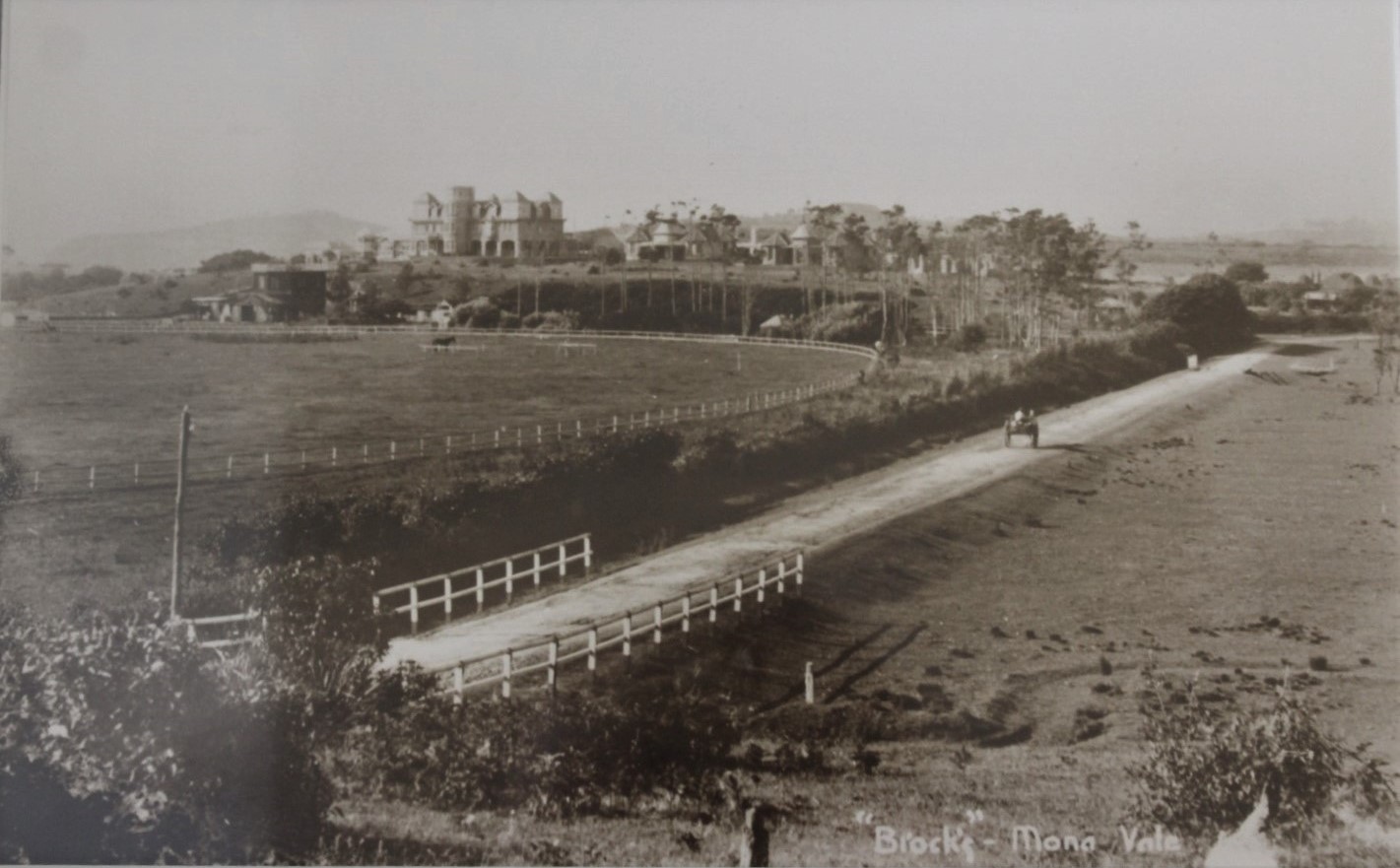
Mr. Brock has made a great impression upon the district.
He is of average height, compactly built, with strong features. His face reminds one of the old Romans as they have been pictured for us. He is clean shaven, quick in speech, and direct-in his utterance, very prompt and somewhat masterful in manner. A man, that can be plainly seen,— a man of strong individuality. He stands alone, and requires no support but his own keen brain and active body. He is a man to take the lead and keep it, a man who by his greater pushfulness makes enemies as well as friends.
One of the most noticeable buildings about the place is Circular in Shape. The ground floor is used as stables, and here Mr. Brock has some fine horses, including the stallion " Souvenir,", a beautiful and spirited Arab that seems to understand every word his master says to him. On the next floor is a music room, with piano, organ and other instruments. Being circular, it is splendidly adapted for dancing. Among the articles hung upon the walls are fencing foils and boxing gloves,—and a glance at the face of the proprietor will convey to you the hint that if you are not anxious for violent exercise you had better at all hazards retain his hearty good will. There are other buildings on the heights above this one, in course of erection. They are intended for a grand series of residences, and there will be a Great Central Hall, with contiguous apartments for the use of all the residents. This hill overlooks the ocean, and gives a splendid view of the bright Pacific.
The beach is but a few yards off to the left, on land, is a fine racecourse in front a lake, on which swim black swans, some of them paying devoted attention to their floating nests. There are other birds and animals in the lake. Gambolling after one of the young ladies is an alema, a curious animal, something between a monkey and kangaroo, very pretty and perfectly harmless. Mr. Brock purposes starting A Dairy on the other side of the racecourse from the houses, for the use of the residents. He has had many handsome offers for the estate, but refused them all. Several of the would-be purchasers wished to turn it into a pleasure resort, but as the probability was they would get a licence and sell drink Mr. Brock promptly refused to consider their proposals. As soon as the Government begin in earnest to build the Spit to Newport Tramway, Mr. Brock promises to put on 200 men to complete all the work which for years he has planned for this beautiful country home. If they do not start it in a reasonable time he may himself install a 80 passenger Motor-Coach, but only to "The Oaks" and only for the service of the people living there. Families will be able to come to the Oaks and stay any length of time at moderate expense enjoying all the delights of country and … farm life—without all the work. ' '
There is an Art Gallery also in the buildings, where Mr. Brock, junior, plies his capable brush. The walls are covered with his pictures, all showing marked talent. On the way from America, the land of novelty, is A Sculpturing Machine, which a skilled operator can make facsimiles of a human face simultaneously. From the photographs of the it is a wonderful affair, costing a pounds. The marble busts can turned out very fast and cheap,—say 5 or 6 hours for about a pound a piece' quite knocks out hand work—but it requires a hand to guide the rapidly cutting chisels, and the hand of an artist in order for good results. A sculptor, however, can with one of these machines of much better work than with the hand only. The instruments that do the cut resemble somewhat the little cutters dentists use to bore out teeth for stopping. They have only to be moved over the marble slowly and the lifelike image is graven. When the tram was started from Manly Mr. Brock put on about 200 Men to get the place ready, but when that fine project fell in pieces he took most of the men off again. He keeps a brick kiln going constantly, and there are always men employed building.
Some day " The Oaks " will be the name of one of the finest health resorts in the world,-meantime it is a most comfortable and beautiful home. “THE OAKS,” (1904, September 3). The Mosman Mail (NSW : 1898 - 1906), p. 4. Retrieved from http://nla.gov.au/nla.news-article247008613
There had already been a small course links at The Oaks, as can be seen in this 1907 sales advertisement and later that same year sales brochure when the property was being sold out from under him:
TO HOTELKEEPERS, AMUSEMENT CATERERS, SPORTING CLUB PROPRIETORS. BY ORDER OF THE MORTGAGEES. THE OAKS. MONA VALE.. PITTWATER.
This MAGNIFICENT and UNIQUE PROPERTY comprising about 114 acres, under TORRENS TITLE is situated 10 miles from MANLY, about 500 yards from the Rock Lily Hotel, on the main road to Pittwater and Newport, rendering it accessible from the city by either MOTOR CARS or COACH, has large FRONTAGES to DARLEY STREET, 'the PITT WATER-ROAD, BASSET STREET, and the PACIFIC OCEAN'!
THE BUILDINGS specially designed for a RESIDENCE of a PERFECT SANATORIUM, with Cottages for families attached, of brick on concrete foundation with Mansard roof with promenade, contain imposing MAIN ENTRANCE and HALL, billiard-room, lounge, smoking-room, 25 bedrooms, extra large dining hall, 6 bathrooms, and most up-to-date domestic arrangements, and servants' quarters.
ADJOINING THE CLUB-HOUSE is a STUDIO MUSIC-ROOM, with artistic lead-light windows and ceilings. LARGE FERNERY. A Short Distance from the main building is an octagonal house of brick and wood, containing in the upper portion BALL-ROOM (12ft x 42ft), -with up-to-date arrangements in basement.
IN the GROUNDS are the THREE BRICK COTTAGES above referred to, also TWO OTHERS in course of construction, and on the far side of the grounds is a six-roomed W.B. Cottage, with tiled roof.
THE GROUNDS are tastefully laid out with ornamental shrubs, lawns, and statues in front of the CLUB-HOUSE, while an area of about 40 acres opposite has been made ready for SPORTING purposes. GOLF, POLO, CRICKET, FOOTBALL, LAWN TENNIS, etc, and a 6-furlong Racecourse.'
THE PROPERTY. DELIGHTFULLY SITUATED on the shores of the PACIFIC OCEAN, embraces large beach Frontage where SURF Bathing can be indulged in without risk. Added to other attractions there is a NATURAL FRESH WATER LAKE in the grounds, enhancing their beauty, and at the same time affording a PERMANENT WATER SUPPLY. '
CONSIDERING the rapid strides in Motoring as a means of transit, and the unrivalled position of the health and holiday resort, there should be a great future FOR THE OAKS.
BATT, RODD, AND PURVES, LTD, have been instructed to sell the above by PUBLIC AUCTION, at their Rooms, 88 Pitt-street. Next TUESDAY, the 7th of MAY, at 11.30 a.m. MESSRs. Minter, Simpson and Co., solicitors for the Mortgagee. Advertising. (1907, April 27). The Sydney Morning Herald (NSW : 1842 - 1954), p. 22. Retrieved from http://nla.gov.au/nla.news-article28153265
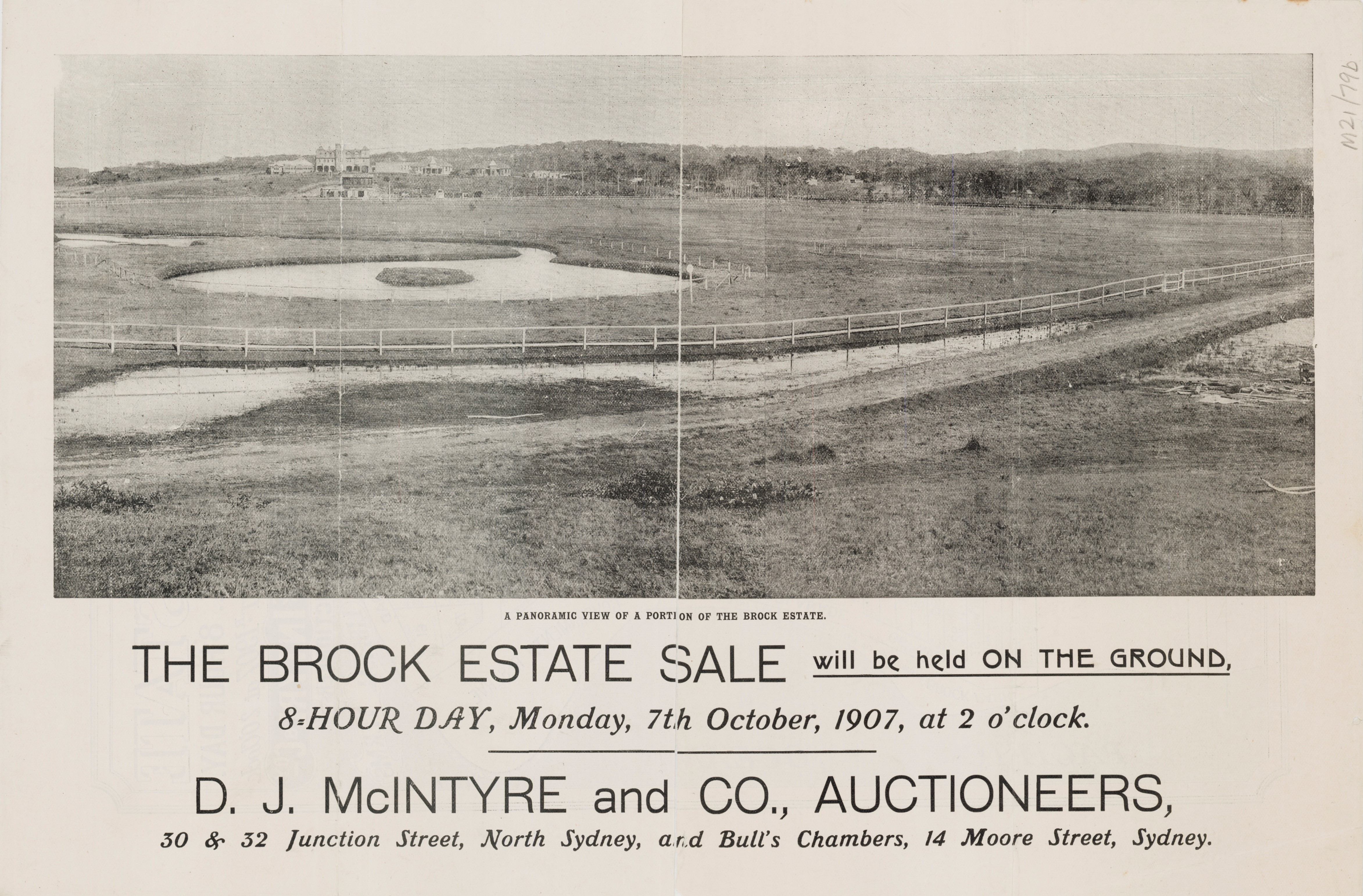
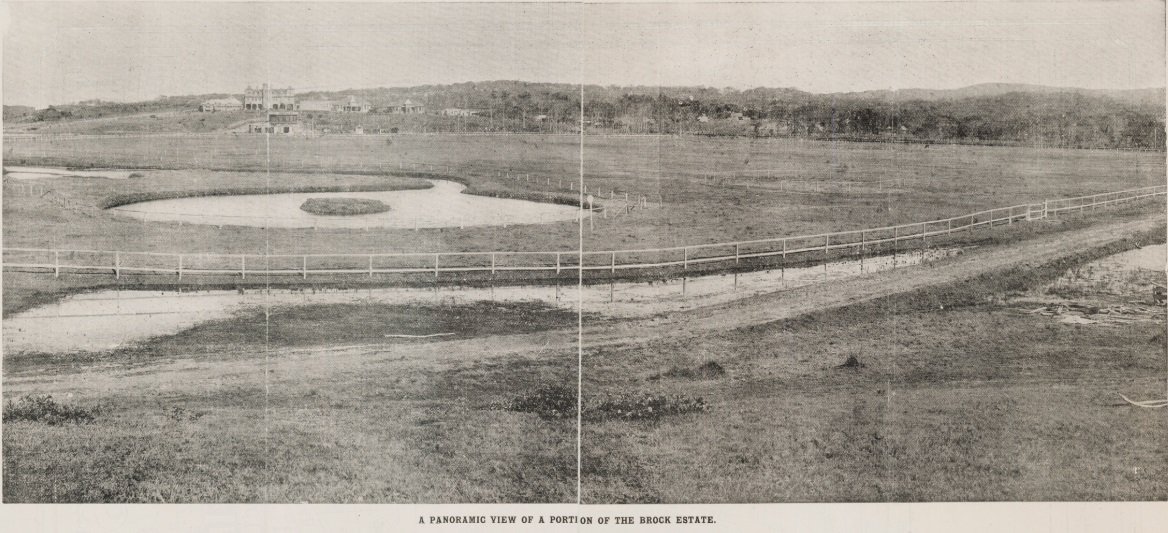
The Brock Estate - 1907, inner page brochure, Item No.: c046820077, Mona Vale Subdivisions, Courtesy State Library of NSW
Eventually the property was sold to the government by its 'mortgagees' who onsold it:
Mona Vale Estate.-Mr. George Crowley, managing director of the City Mutual Life, writes as follows:-In your Issue of yesterday's date Mr. Brock Bays, "to carry on I had to seek financial assistance. Promises made to me were not fulfilled, and now I find myself left with the debt of the building material to the tune of £1600." As It is pretty generally known that the society was the vendor of the property to the Government, this might give rise to misapprehension. Any promises that were made by this society to Mr. Brock were amply fulfilled. INSTITUTE OF ARCHITECTS. (1909, March 25). The Sydney Morning Herald (NSW : 1842 - 1954), p. 6. Retrieved from http://nla.gov.au/nla.news-article15045735
There is more on Mr. Crowley in: Pittwater Roads II: Where the Streets Have Your name - Avalon Beach
MONA VALE HYDRO.
The ceremony of opening the Mona Vale Hydro formerly known as Brocks Mansion Pittwater took place yesterday afternoon. The estate which has a frontage to the beach was recently acquired by Mr Arthur Rickard of this city and he has leased the house to Mr Fox as a hydro and the polo grounds as golf links.
Upwards of 80 people accepted invitations and in the unavoidable absence of the Minister for Works the ceremony of opening the hydro was performed by Mrs Griffith.
A dinner presided over by Mr Arthur Rickard followed, among those present being Mrs Griffith, Mr G B Edwards MP and Mrs Edwards, Dr Arthur M L A mil Mrs Arthur, Mr E W Quirk (president of the Warringah Shire Council) Mr D Hogan (town clerk Manly) Mr P J Carew (Warringah Shire clerk) Mr J J Mulligan, Mr Jas. Rickard, Mr G Crowley, Mr J W Duesbury, Mr Robey, Mr G Morgan, Mr Scott Fell and Mr Robey.
Mr Quirk proposed the toast of the Federal and State Parliaments coupled with the names of Mr G P Edwards M P and Dr Arthur MLA both of whom responded.
Dr Arthur M L A submitted Success to the Hydro which was acknowledged by Mr Arthur Rickard (who said that the surfing beach on the estate was one of the safest in the State) and by Mr Fox the lessee. MONA VALE HYDRO. (1910, December 23). The Sydney Morning Herald (NSW : 1842 - 1954), p. 8. Retrieved from http://nla.gov.au/nla.news-article15190827
From then on attracting people to the 'Mona Vale Hydro' was the goal and a golf links of nine holes was party of that:
WHERE TO SPEND THE WEEK END. MONA VALE
(BY MARCUS SUBURBUS.)
THE STORY OF BROCK'S FOLLY.
.... Mr. F. W. Fox, who is a well-known gentleman, and has been long and honorably identified with city business life, and his good lady, Mrs. Foy (who has large and fashionable guest establishments at Neutral Bay), are to be complimented upon their enterprise in undertaking this venture, and deserve every possible success. For several years past, and particularly since surf-bathing became popular, the need has been felt of a really first-class accommodation house near the seashore. The hotels and boarding-houses at the beaches have proved, inadequate to accommodate, in the best style the great and growing number of families who desire to spend their summer vacation at the seaside. Taking a furnished cottage is the only other, alternative, and this has decided disadvantages. In the first place, the majority of people cannot afford a sufficiently long vacation to make it worth while. Again, the responsibility of house keeping greatly detracts from the pleasure of a holiday. Is it any wonder then that the question is asked again and again: "Where is there a really first-class place to stay, at the sea side, where one may enjoy every comfort and have absolute peace and quiet— a place equal to the resorts of Europe and America?" We now have the answer: in the Mona Vale Hydro. The building alone is a source of never-ending delight. It is as the pictures denote, a palatial structure, and an architectural triumph. The decorations, both externally and Internally, are extremely artistic, and a constant pleasure to the eye. This octagonal building is constructed of brick and wood. The upper portion contains a ballroom 42 x 42, with a specially-constructed floor. The main entrance hall is lavish, and the mansion contains, all beautifully designed, a -billiard-room, ladies' lounge, promenade roof, smoke-room, ballroom, and theatre. The dining hall, which, is about 36'x 72 feet, is very large, and Imposing. The sights of the building alone should prove a continual joy to those who are fortunate enough to secure apartments there. It is quite a pleasure to roam around the mansion with its great staircases, its stained glass windows, its huge columns, Its beautiful mantels, and the general ornateness of its spacious rooms. There are 25 bedrooms and six bathrooms in the main building, though there are adjacent cottages where there is more accommodation. One of these, for example, is extremely handsome with its tiled roof and its large crescent-shaped tiled verandah with bay windows on each side. The front door of this villa gives entrance to a very large reception room, and attached to the premises there is a studio and music saloon, built of brick, with large lead-light, windows and wood-panelled ceilings. Both from, the Mansion and the adjoining buildings glorious views are to be obtained. For miles the coast, broken into enchanting bays and coves, yields a panorama of great beauty, and the charming undulating character of the back country reveals some exquisite landscapes. Here, then, is delicious peacefulness and rest with nature smiling all around one. Everything has been done by Mr. Fox to ensure the comfort of his guests. He has arranged a cuisine of the highest standard; hot and cold baths are to be obtained in plenty; every room is handsomely furnished; there is a large motor garage and accessories.
The hydro is particularly well suited to business men who desire to get away from the city for a few weeks and recuperate their physical and mental faculties, or for country people who need a change at the seaside. No better place than this could be found for the enjoyment of all healthy natural pleasures. What was intended as a racecourse and polo ground now makes ideal golf links, and devotees of this sport could not be better provided for.
As already pointed out, surf-bathing may be enjoyed with every degree of comfort and safety. There are also facilities for tennis and cricket, and plenty of good fishing may be obtained. The hydro is, therefore, not only a magnificent structure sumptuously furnished— it is the home site of all those pleasures that do most to make life worth living. A convenient motor service to and from Manly has been established, and the business man who must attend the city daily is thoroughly provided for in the time-table. For the benefit of the touring -motorist; equestrians, and others, Mr. Fox has arranged to cater for lunches, dinners, and afternoon teas, and can provide for parties or picnics of any description by previous notice.
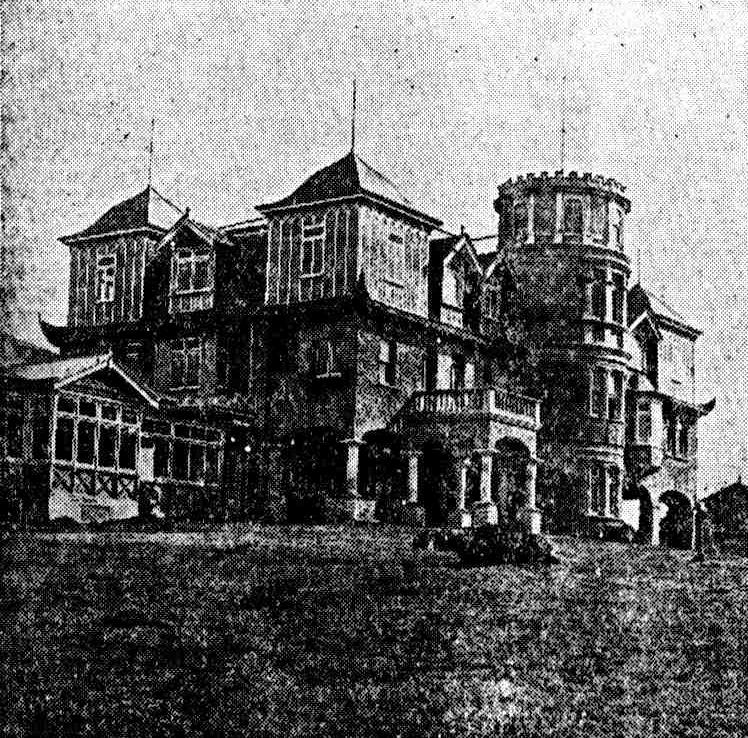
ANOTHER VIEW OF THE HYDRO.
WHERE TO SPEND THE WEEK END. (1910, December 25). The Sun : Sunday Edition (Sydney, NSW : 1910), p. 11. Retrieved from http://nla.gov.au/nla.news-article231015197
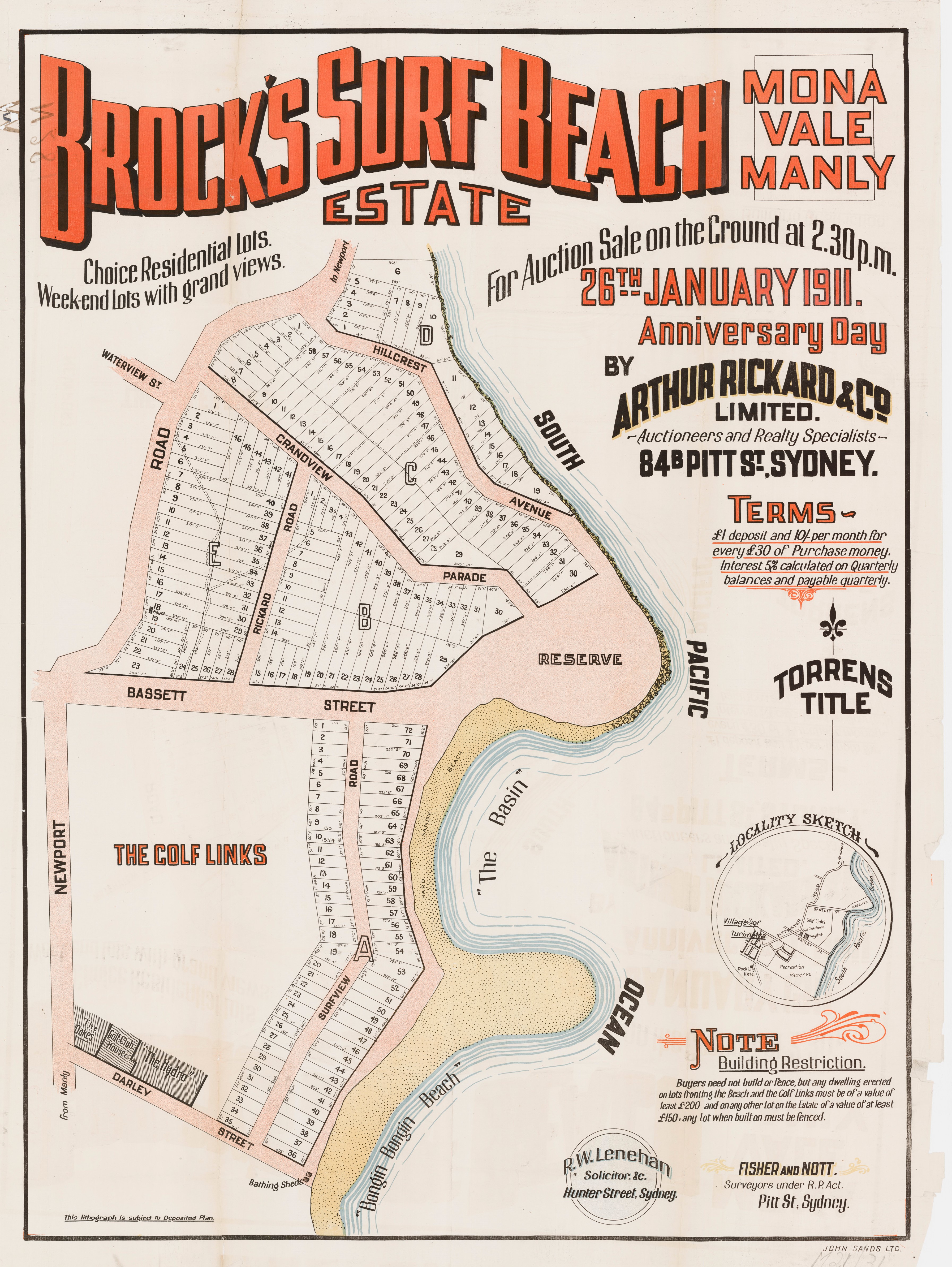
GOLF - OPENING AT MONA VALE.
The new course at Mona Vale will be opened on Saturday next, with open amateur and professional events. For amateurs there will be an open 18 holes stroke handicap for three trophies; while the professionals will compete in a scratch medal handicap, for substantial cash prizes. Entries, accompanied with club handicaps, close with O. H. O'Brien, 83 Pitt-street, not later than Wednesday next. OPENING AT MONA VALE. (1911, February 18 - Saturday). The Daily Telegraph (Sydney, NSW : 1883 - 1930), p. 20. Retrieved from http://nla.gov.au/nla.news-article238724181
Mona Vale Golf Links
Following is the draw for open amateur and professional 18 holes handicap, to be played on Saturday: -
W. S. Laidley v V. East, L.R.O. Sealy v Merrilees, Gordon Craig v Carnegie Clark, P.R. Russell v L. J. Osborne, E. Lehoneq v F. Amphlett, R. A. Crowther V F. Middows, F. O’Brien v T S Cheadle, N. C. Moses v D. G. Soutar, Horace Ireland v Fred. Alderson, D.S.K. Miller v J W Westgarth, A R Minter v O H O’Brien, M C Tilbury v E Scott Scott, F J Ewens v Dr. T S Kirkland, S J Douglass v J R Lawson, P Briz v W C Douglass, J Porious V C A Cowdery, J Clark v C J Gaut, H O Clissold v H A Clark, C W Bennett v M’William, P G Sharpe v R T Hilder, V G Fisher v J N Graham, J Z Huie v E R Jenkins, G Rankin v C A Fraser, W A Windeyer v J Donald.
Competitors may arrange their arrange their own times for starting, and are requested to bring their own caddies. A special drag will leave Manly wharf at 12 noon on Saturday, returning after play.
Rule 4 of the special rules for stroke competitions has been suspended for the day. Additional entries will be received at the post. MONA VALE GOLF LINKS. (1911, February 24). The Sydney Morning Herald (NSW : 1842 - 1954), p. 10. Retrieved from http://nla.gov.au/nla.news-article15246015
An open handicap for amateurs, 18 holes against bogey, will be played off today at Kensington, and an open competition for professionals and amateurs will also be disposed of at the new course at Mona Vale. GOLF GOSSIP (1911, February 25 - Saturday). The Arrow (Sydney, NSW : 1896 - 1912), p. 7. Retrieved from http://nla.gov.au/nla.news-article122142299
As can be read below, apart from a few descriptions of the nine holes, a J Donald was the professional attached to the Manly club when these matches took place:
GOLF GOSSIP.
BIG DAY AT MONA VALE.
(By FAIRWAY.)
Under most delightful weather conditions, and in the presence of a large gathering of golfers, which included a good sprinkling of the fair sex, the new nine-hole course at Mona Vale was officially opened on Saturday. Several players went down the night before, and stayed at Fox's Hydro (most conveniently situated near the first tee) while a motor 'bus containing 16 took the early starters down next morning. The remainder, numbering about two score, found transit in a special coach and private cars.
The motor 'bus arrived at the Hydro at 10.30 a.m., after experiencing two short stoppages. The first was at the golf club, where Messrs. W. A. Walton and A. L. Rotter had occasion to call for their clubs, etc. Here, in order to save time, a "sprint" prize of two whiskies was offered to the one who was first back at the car. The distance, roughly, was 200 yards, and the prize, was carried off by "Tiny," settling up being done on arrival at the Narrabeen Hotel.
As both belong to the heavyweight division the incident created much amusement. After Messrs, Rotter and Walton were re-seated the car proceeded on its way. Curl Curl and Brookvale were passed without incident, but when turning a corner approaching Narrabeen the car missed running a snake down by the narrowest of margins. It was at once pulled up, but the reptile was too slick, for notwithstanding a searching investigation by Messrs. Alderson and Osborne, made good its escape. The journey was again resumed, and nothing further occurred till the Hydro was reached, where Mr. Walton signed his name in the visitor's book and then all adjourned to the first tee.
The Mona Vale course, considering the time it has been under construction (a little over seven weeks) was in remarkably good condition, and reflects great credit to F. T. O'Brien, the Killara professional, and T. Black, greenkeeper. The former supervised matters, while the latter carried the work out in a first-class manner.
Sitting, on the verandah of the Hydro a beautiful outlook presents itself, for the links wearing a luxuriantly green appearance stretch below in a miniature valley, which runs to within a few yards of the sea beach. It is a fine sporting course, and contains several very good holes. The first hole takes a deal of playing, either with or against the wind, for it is situated on a peninsular, which is reached by a water carry of fully 149 yards. The fine expanse of water between the tee and the green acted as a great trap for balls on Saturday. However, those who plumped balls in did not lose them (if they were floaters), for a boy with a small canoe was stationed at the water's edge, and immediately a ball went in he made after it.
The sixth (400 yards) is another good hole, severely bunkered round the green. The eighth is an interesting short hole of the bottle-neck variety, having bunkers both sides of the green, with just an opening facing the tee to admit of an accurately-pitched maahic shot going through. The turf all through is firm and good, and the greens, which at present are very true, are improving every day.
THE PLAY.
The programme contained two competitions, i.e; an amateur 18-holes stroke handicap, and a scratch event for professionals. The former attracted an excellent entry, and the play exhibited by the low-mark men was especially good. The winning card, 85, 29—05, was furnished by a dark horse — E. R. Jenkins, of Manly. For a long-mark man his golf was an eye-opener, for he went out In 43, and home in 42, the total being made up by good steady golf. He is handicapped at Manly on 24, but, judging by his display of Saturday, I should say he has been treated far too generously, and could do with a substantial reduction. J. Z. Huie, 84, 13—71, and Fred. Alderson, 87, 16—71, divided honors for second place, and then followed L. R. Oswald Scaly (6) and A. R. Minter (10), with net 72. Sealy's card showed steady going, he went out in 38 and came home in 40, the second half being spoilt by sixes at the 12th and 14th. Next in order came W. S. L'tidley, 77, 4 — 73, and T. S. Cheadle, 78, 5—73. Both these young players exhibited fine form, the former securing the honor of best gross score.
Laidley played attractive golf from the tees, and, as usual, made very few mistakes on the greens. His card read: — Out 3346 3 043 5—30 In 4 4 5 0 4 6 4 4 5-41 Cheadle's score read 39 both ways, and contained three three's and a two.
For the professional event there was quite a representative entry. First prize was eventually carried off by the open champion, Carnegie Clark, who negotiated the round in the good figures of 75. Clark started well with a three and two fours, and kept up a steady run of play to the ninth, which he reached in 30.
The sixth hole (400 yards) is worthy of special mention, for at this hole Clark notched a magnificent three. lie made a beautiful drive, and then placed a three-quarter deck a few yards from the pin, from which he holed a line putt. It was a brilliant piece of play, for this green is very difficult to approach, being almost an island. On the second nine he was a trifle too careful, with the result that he dropped one or two strokes, still ho kept going steadily to the finish, and handed in a second nine of 39. His figures were:— Out 3 4 1 5 3 3 5 4 5-36 In 5 3 4 4 5 5 5 3 5-«39
The outstanding features of his game were good driving and accurate approaching.
D. G. Soutar and J. V. East tied with scores of 76. Soutar did the first nine in 36, and the second in 40. Dame Fortune was exceedingly unkind to him at the ninth, for at that hole after gelling what looked a perfect drive from the tee the ball could not be found, and had evidently sunk in the soft ground at this spot, or else lodged in the drain (from which one is allowed to pick out without penalty). As it was not definitely known that the ball was in the ditch, Soutar had no alternative but to go back, tee another ball, andd play three from the tee. One incident, therefore cost him two strokes, which was indeed unfortunate, for in the end he was only beaten for first prize by one. East played a nice, all-round game, going out in 39 and coming home in 37. It was a very hot match round, containing four threes and cue two.
J. Donald occupied third place with a card of 78. The Manly professional after taking 14 for the first three holes, put in a brilliant run to the 12th, as follows:— 4, 2, 5, 3, 2, 0, 4, 3, 3— total, 32. Disaster, however, befell him at the 13th and 14lh, and in the end his completed round totalled 78. F. O'Brien followed with 81 and then came P. G. Merrilees 84. O'Brien's card was marred by a 9 at the 6th, where he found the water hazard and tried unsuccessfully to play out. The latter was hampered somewhat in having charge of the course arrangements.
The opening wag an unqualified success, and I feel certain that the resort will quickly become a very popular one amongst golfers. Mr. Fox, at the Hydro, made everyone comfortable, and looked after the inside arrangements in his best manner, with the remit that the large gathering broke up well satisfied with their day's outing.
On the same afternoon a meeting was held at the Hydro, and a local Golf Club formed, named the Pittwater District Club. The chair was occupied by Mr. J. Portus, who explained the financial position, and pointed out the great attraction the club would be to the district. Mr. P. T. Taylor was unanimously elected president, and Messrs. W. A, Windeyer, O. H. O'Brien, C. E. Cowdery. C. J. Grant, J. Portus, and Frank Middows as a committee to draw up rules, etc., and convene a meeting. Mr. C. W. Bennett was elected hon. secretary, but as he was unavoidably absent, and pending his acceptance of the position, the duties were undertaken by Mr. O'Brien. GOLF GOSSIP. (1911, March 1). The Daily Telegraph (Sydney, NSW : 1883 - 1930), p. 17. Retrieved from http://nla.gov.au/nla.news-article238718477
More results:
Golf.
COMPETITIONS AT MONA VALE. NOTES ON THE PLAY.
The event of the week was the opening of the new links at Mona Vale. Those who took part in the event were favored with splendid weather.
The teeing grounds and fairways were very good, and the greens, although somewhat on the small side, were in first-class order, and quite true. The course is only a nine ball one, and not very long, although some of the holes, notably the fourth, sixth and ninth, are of fair length. Two 18- hole stroke competitions were held, one for amateurs and one for professionals. The latter was quite a representative event for all the leading professionals of the State took part, with the exception of F. Popplewell, who, owing to illness, was, unfortunately, unable to compete.
The open champion, Carnegie Clark returned the best card, his driving and approaching were splendid. His figures were as follows: out: 3. 4. 4.3. 3. 3. 5. .4, 5-36: home. 5, 3, 4,4,4, 5, 5, 5, 3, 5, -39, thus making his round 75. He was closely followed by D. G. Soutar 76, 36 out and 40 home. J. V. East also returned a card of 76, taking 36 over the first and 39 over the remainder.
Soutar was most unfortunate and would probably have been successful in carrying off the prize but for very bad luck at the ninth hole. His golf had been very steady, and at the ninth he got a beautiful drive, which appeared to finish in a ditch about 220 yards from the tee. There was a local rule in force empowering players who go into this ditch with their drives to lift out and drop without penalty. Soutar was unable to find his ball, and as there was some doubt as to whether it reached the ditch, he was obliged to go back to the tee and play another ball, incurring a penalty by two strokes.
The amateur event went to E. R. Jenkins (20), who returned a particularly good card of 63 net.' The handicappers appears to have underestimated his abilities. Among the short handicap men to do well were L. R. Oswald-Sealy, 78-6, 72: W. S. Laidley 77-4: 73 and T. S. Cheadle 78— 5. 73. Laidley returned the best gross score. He was particularly good over the first nine, being 36 at the turn. He fell away somewhat on the homeward journey, the last nine holes costing him 41. His card read as follows:— Out. 3. 3. 3,4. 5. 3… home, 4. 4. .8. 6, (. 6.'4. 4. 5—
The Australian Golf Club held an open bogey competition, but owing to the number of players who visited Mona Vale, the entry was not as large as usual. …. Golf. (1911, February 28). Evening News (Sydney, NSW : 1869 - 1931), p. 8. Retrieved from http://nla.gov.au/nla.news-article113935028
The golf course at Mona Vale was opened on Saturday with competitions for amateurs and professionals. The latter was won by the open champion, Carnegie Clark, with a splendid round of 75, in which he exhibited all his old skill. D.G. Soutar and J. V. East also showed fine form, and tied for second place with cards of 76 GOLF GOSSIP (1911, March 4). The Arrow (Sydney, NSW : 1896 - 1912), p. 7. Retrieved from http://nla.gov.au/nla.news-article122138181
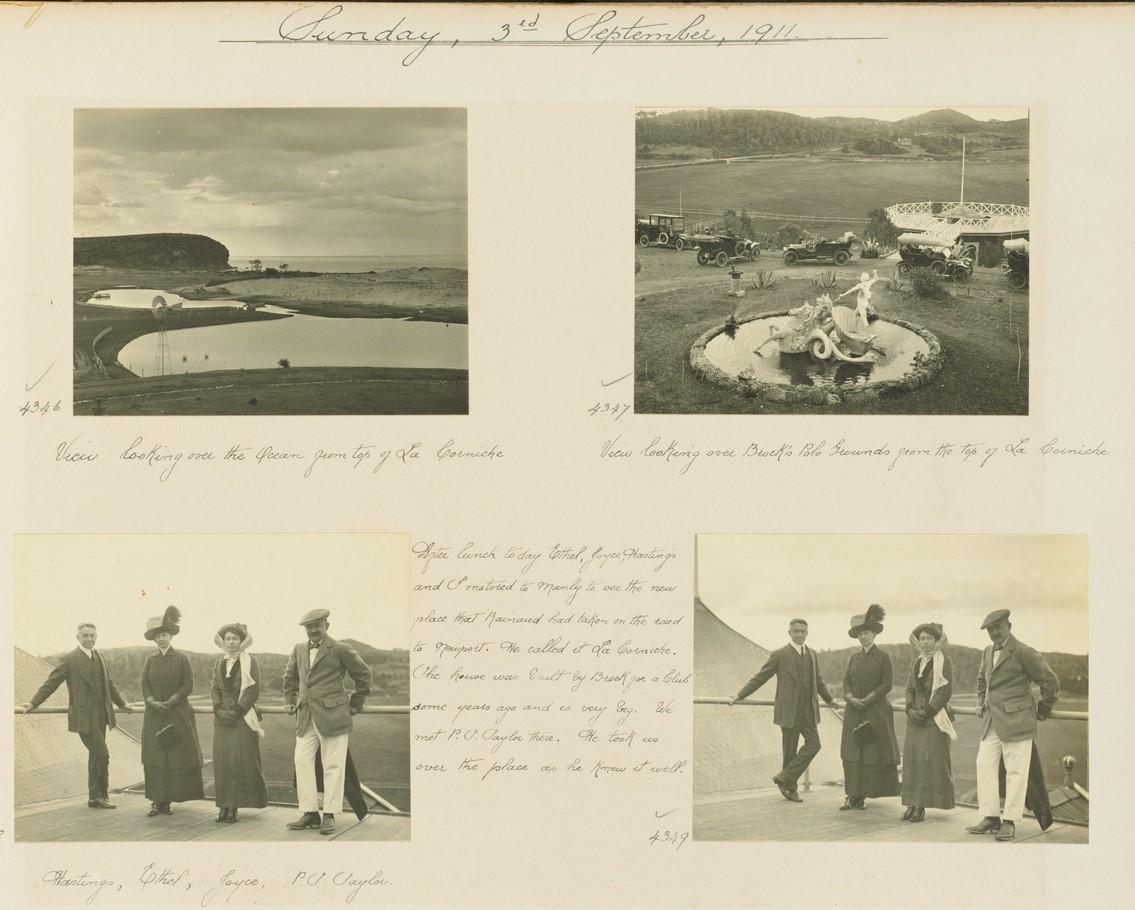
Sunday, September 3rd, 1911, From Allen Family Album. Item a3289053h, from Album 57: Photographs of the Allen family.
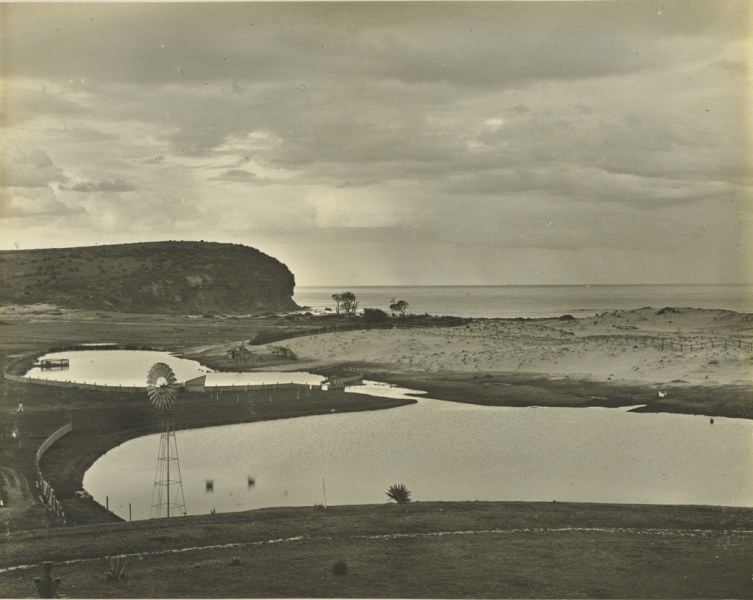
FROM: Album 57: Photographs of the Allen family, 2 May 1911 - 7 October 1911 Digital Order No. a3289055; 'Top: Enlargement of view taken from Brock's House, near Newport, September 3rd, 1911. and Digital Order No. a3289054; 'Below Enlargement of view taken from Brock's house, 3rd of September, 1911 'Enlargement of view taken looking over the Polo Grounds. The road up the hill leads to Barrenjoey'. Both Courtesy State Library of NSW. Shows the 'lake' verges of the Black Swamp were still present on Brock's former land holding in 1911 and possibly where the boy with his canoe went out to fetch errant golf balls.
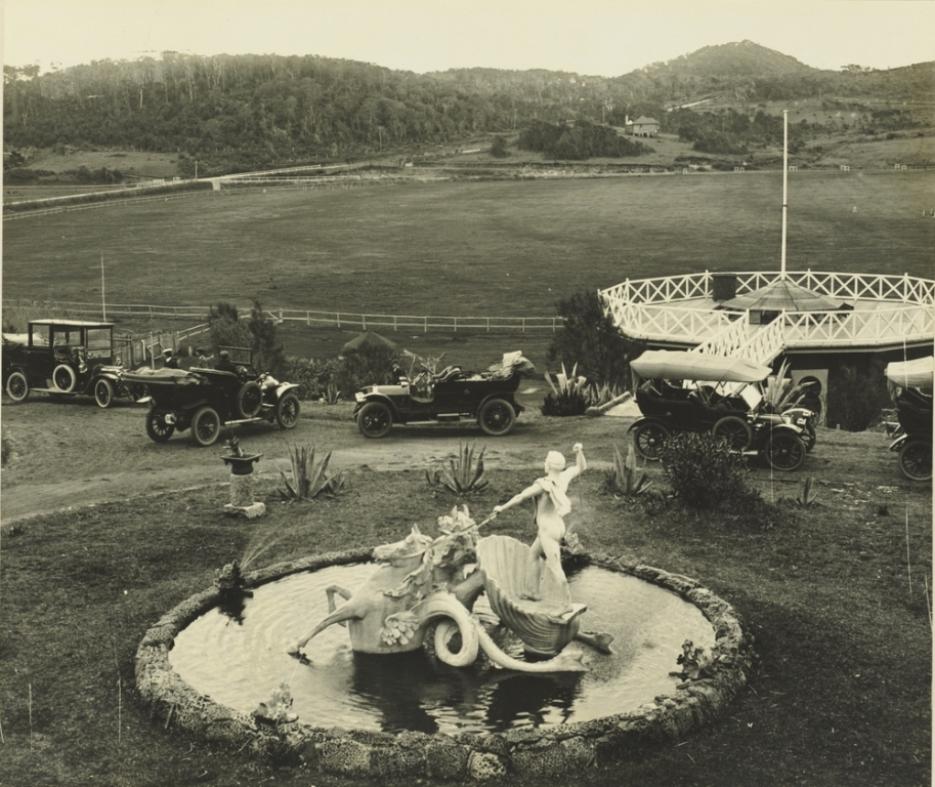
By the Spring 1911 Mr. Soutar was at Manly teaching:
D. G. Soutar, the Manly professional, showed during last week in practice round with pupils that he is able to put his theory into practice.
Twice he went round in 71, and followed theses fine performances up with a 70, his card reading:— -
Out ..p. 4 5 3 5 4 4 2 4 3—34
Bogey 5 5 3 5 6 4 3 4 5 — 40 .
In 4 5 4 3 6 4 33 4 — 36
Bogey 4 5 5 3 6 4 4 3 4 — 38
The amatour record for the links is held by Apperly, with a 74. GENERAL. (1911, October 25). The Daily Telegraph (Sydney, NSW : 1883 - 1930), p. 16. Retrieved from http://nla.gov.au/nla.news-article239197319
The Fox-Foy 'Hydro' didn't last long. Sources state the building was renamed 'La Corniche' by Rainaud, a French Restauranter who originally ran a successful tea room, restaurant and boarding house at Church Point-Bayview until a tragedy occurred. He brought the name with him when taking over these premises. Visit: La Corniche, Bayview

Advertising. (1911, September 9). The Sydney Morning Herald (NSW : 1842 - 1954), p. 18. Retrieved from http://nla.gov.au/nla.news-article15272695
BROCK'S MANSION BURNED.
BIG BLAZE AT MONA VALE. beautiful landmark destroyed.
Damage estimated at £12,000.
No fire- fighting appliances available.
"La Corniche," a mansion at Mona Vale, which occupied a commanding position on the road between Manly and Newport, was destroyed by fire early this morning. Flames were discovered at 10 minutes to 1. At half-past 2 only portions of the walls, and they rickety, were standing.
The building was palatial In Its dimensions and appointments, and contained in all 38 rooms, 28 of which were bedrooms. It was originally designed for The Oaks Polo Club, and was built by Mr. G. S. Brock at a cost which has been set down at £32,000. Before the building was completed, however, it was acquired by Mr. Arthur Rickard, who brought It up to date and then let It to M. and Mme. Rainaud, at one time chef to Sir Harry Rawson. Instead of being used as a polo club it became a fashionable boardinghouse, and on account of its situation and its surroundings, including surfing and golf, it became exceedingly popular. There were 30 boarders in the place at the time of the fire.
The fire started in the large dining hall, and was discovered before it had a very strong hold of the room, but not in time to be beaten out. There was a hue and cry raised throughout the building, and boarders were running to and fro to ascertain the extent of, their danger and the possibilities of saving their effects. The flames spread with great rapidity, but happily not In the direction of the staircase, and many of the people were, therefore, able to dash about and get their property outside.
Those on the second and third floors, however, did not take the risk which running up and down the stairs involved, and threw most of their belongings out of the windows. In ten minutes the flames -had begun to light up the hills on either side, and to throw long reflections out to sea. The boarders were all out of the building by ' this .time, and the menfolk were assisting the staff (numbering 20) to remove the furniture. They continued in this until the flames drove them back, and were successful in getting out a piano and other big stuff. But What was saved was a mere fraction of what was lost.
All that the people could do was to stand by and watch. There was water— the sea could be heard roaring in to shore all the time — but there was no means of pumping it into the building. No fire-fighting appliances which would avail anything were kept on the premises, there is no depot in the vicinity, and though a boarder motored to Manly post haste and reported the blaze the firemen did not go out, because they could have done nothing if they had.
There were very few incidents in connection with the fire. Everybody was got out expeditiously, and though there were several cases where ladles fainted they were never in danger. Even the pets of the house were saved, though one had a narrow escape. It was a little white pussy, and it mewed and mewed pitifully on the window sill of a room from which smoke was already issuing. One of the girls attached to the staff saw its plight and darted into the building and out again with her charge in a few seconds.
Mr. Scott Fell, who has a house in the grounds of La Corniche, provided accommodation for the boarders for the rest of the night. As bad as the consequences were they might have been worse. If the blaze, for instance, had started nearer to tho stairway than it did, it is quite possible that the escape of the boarders would have been cut off, and the only exit would have been through the windows, a course . of action which would practically have endangered limbs if not life. Then, again, the wind was blowing out to sea. Had it blown from the sea, it Is not unlikely that two cottages and the Casino, nearer the roadway, would have gone, while the motor garage, where four motor-cars were kept, would almost certainly have been gutted.
The most remarkable circumstance in connection with the fire was associated with the telephone. When the blaze was found to be so serious Mr. A. Davis tore the 'phone from the wall and carried it outside. Later in the morning an electrician fitted it up on to the fence— the only piece of the fence which escaped tho flames— and a trial showed that though the wires had been through the heat of the flames, the 'phone was still in order, and the Manly exchange could be distinctly heard. The boarders relished the good fortune, because it enabled them to send reassuring messages to their friends.
Mr. Rickard stated this morning that the building and furniture was insured in the New Zealand Insurance Co. for £6000, and that he was therefore a fairly heavy loser, seeing that his estimate of the value of the building was £10,000. The furniture was valued at £2000. Mrs. Mueller (wife of Dr. Mueller, of Macquarie-street), Messrs. Harvey, A. Davis Earle Hermann, Toohey, L. A. and R. V. Minnett, Lotrois, and others of the boarders, were also sufferers by the fire. Mr. Rainaud lost silver, linen, &c., to the value of £250, which was uninsured.
The origin of the fire cannot he determined, but It is believed that It was caused by a lighted match or cigar butt carelessly thrown on to the carpet in the dining-room. Mrs. Rainaud heard a noise in the dining-room, which she attributed to burglars, and on getting out of bed found the place ablaze.
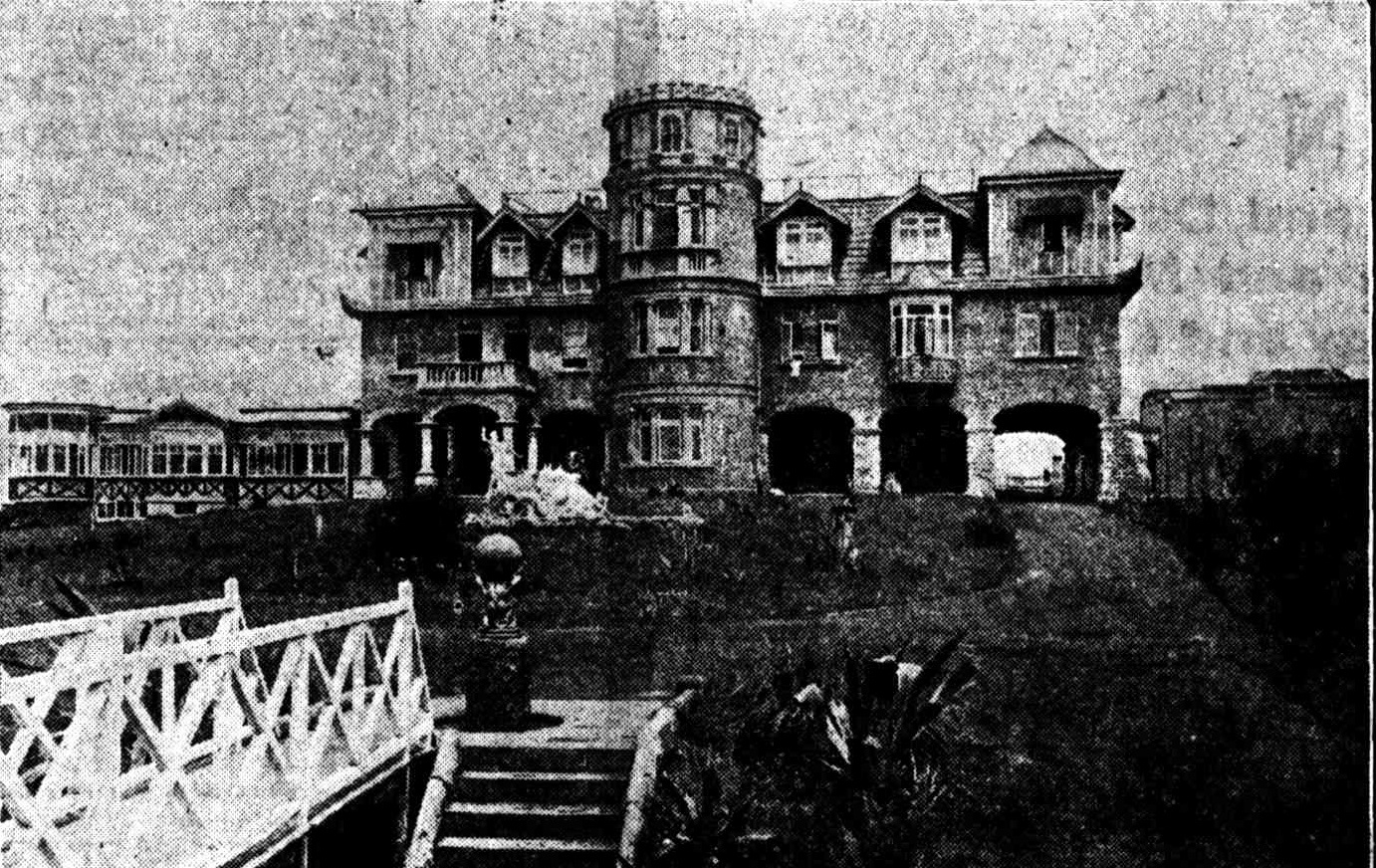
Mona Vale Hydro, the scene of a disastrous fire which occurred in the early hours of this morning. BROCK'S MANSION BURNED. (1912, January 8). The Sun (Sydney, NSW : 1910 - 1954), p. 1. Retrieved from http://nla.gov.au/nla.news-article222004219
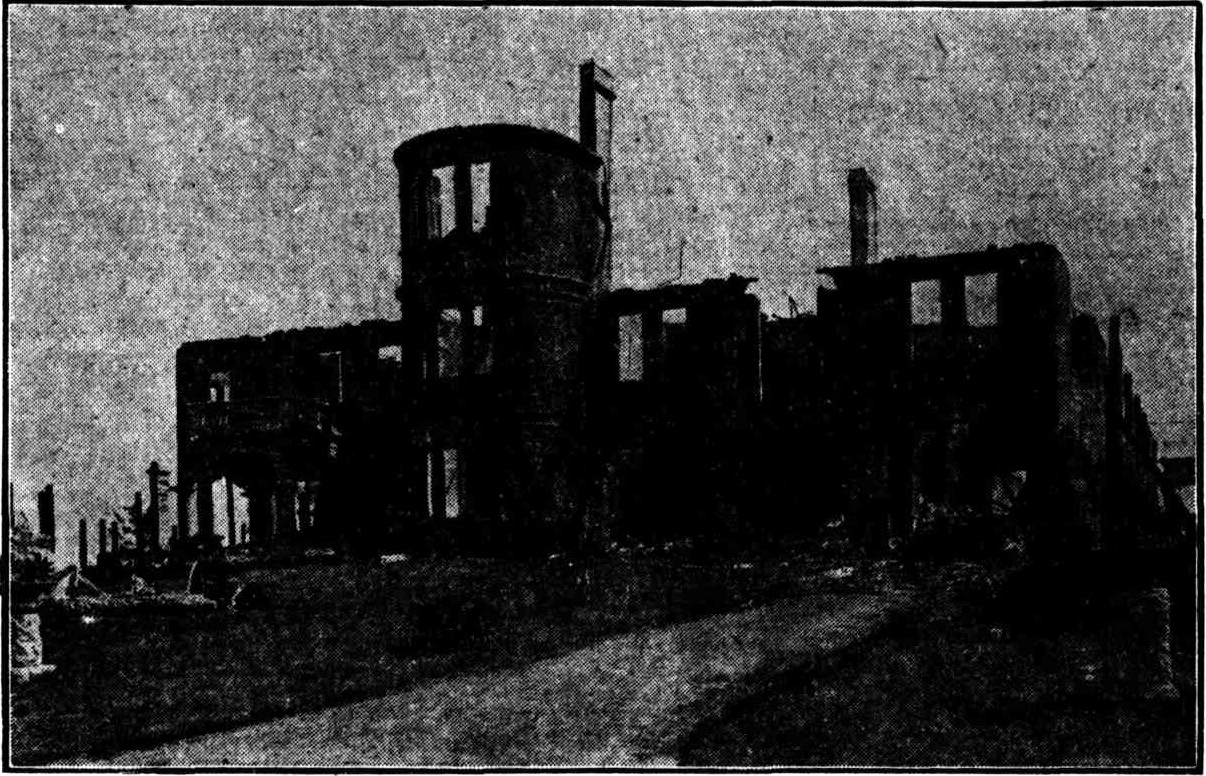
Ruins of "Brock's Mansions," at Mona Vale, destroyed by fire on Monday morning. The fate of the handsome pile of buildings is a grim finale to the financial tragedy that overtook the plucky builder, Mr. G. S . Brock, in its erection. No title (1912, January 10 - Wednesday). The Sun (Sydney, NSW : 1910 - 1954), p. 1 (FINAL EXTRA). Retrieved from http://nla.gov.au/nla.news-article222002216
The lands sales continued with plans for new golf links where they had once been:
The Call the Surf. - -This is just the kind of weather when the call of the surf Is more insistent than ever. The trouble about the close-In surf resorts Is that they are so crowded. What you probably desire Is a good, safe surf beach, reasonably handy to town, where you can enjoy the pleasure of a good long "shoot" without danger to yourself or to others. We can offer you just this at BROCK'S ESTATE, MONA VALE. Second Subdivision.
This property Includes the site of the late Hydro, formerly known as Brock's Mansions, and which, under the title of "La Corniche," was destroyed by fire last year. This site is, of course, the finest in Mona Vale, which In turn possesses the finest surf beach on the Manly-Newport coast. It commands magnificent views, and Is within a minute or two or the ocean.
The building materials, foundations, &c., salvaged, will also be offered, together with some excellent cottages adjoining the late main building.
The remainder of the property Is situated on the grounds that hitherto constituted the Golf Links, adjoining the beach, and making fine level week-end or home-site blocks. New Links will be laid out shortly, running right back to the main road.
The Journey to Mona Vale has been much shortened by the recent extension of the Manly-Brookvale-Narrabeen tramline, and g It is expected that before long the line will be further extended to Mona Vale Itself. AUCTION, SATURDAY, JANUARY 25 AT 3 P.M., ON THE GROUND. Properties such as this, close to the surf, and in the popular Manly-Newport district, are becoming very scarce, and should meet with a ready demand. The Easy Terms of £1 down and 10/ monthly for every £30 purchased should form an extra inducement to prospective buyers. Torrens Title. THE PASSWORD TO PROSPERITY— RICHARD'S EASY TERMS. Advertising (1913, January 5). The Sun (Sydney, NSW : 1910 - 1954), p. 23. Retrieved from http://nla.gov.au/nla.news-article228696943
Mona Vale Golf Club history states that about 1920, a grey-bearded Scot named McFarlane scratched out a crude three-hole golf course and began to attract fellow hackers to his course. There was a family of Dr. John Stuart MacFarlane (1853-1943) of Gladesville, who had a holiday property at Newport Beach.
Slowly the number of players grew and it became necessary to expand and relocate the course, parts of which encroached on private land. Kitchener Park, which was owned by the Commonwealth but vested in Warringah Council, was chosen as the site for the new golf course and permission was obtained to develop it. A nine-hole golf course was developed by voluntary labour and a greenkeeper was hired about 1925 to maintain the course. In March 1927, it was decided to establish a proper club and draw up a constitution and rules.
NEW CLUB FORMED
A golf club has recently been formed at Mona Vale, and will be known is the Mona Vale Golf Club. Registration of the club has been applied for, and a constitution and rules have been drawn up. The club possesses a nine hole course, and negotiations are being conducted with a view to obtaining sufficient land to have an eighteen hole course at an early date.
The club is situated immediately behind the La Corniche Hotel where excellent accommodation is provided for members. Non-members are also being catered for and the green fees are very reasonable.
The committee and officers are Mr E H Caten as president, Mr Hewitt as treasurer, Mr Howard Hewitt is captain.
A large number of applications have already been received for membership, and full information can be obtained from the hon secretary, Mr Sydney D Horne care of La Corniche Hotel, Mona Vale. NEW CLUB FORMED. (1927, March 9). The Sydney Morning Herald (NSW : 1842 - 1954), p. 19. Retrieved from http://nla.gov.au/nla.news-article16360080
Mr. Hope-Caten was a journalist and in publishing:
DISSOLUTION Of PARTNERSHIP.
IT is hereby notified that the partnership existing between Ernest Hope Caten, James Harold Murdoch and Leslie Hope Caten, carrying on business at 1 Bond street, Sydney, under the style and firm of The Liquor Trades Publishing Company and The Hotel Supply Company has been dissolved by mutual consent as and from the 15th instant, the said James Harold Murdoch retiring. The business will in future be conducted by the said Ernest Hope Caten and Leslie Hope Caten, who will receive all moneys and discharge all liabilities.'
Dated this 15th day of January, 1926.
E. HOPE CATEN.
J. H. MURDOCH.
L. HOPE CATEN.
DISSOLUTION OF PARTNERSHIP. (1926, January 22). Government Gazette of the State of New South Wales (Sydney, NSW : 1901 - 2001), p. 434. Retrieved from http://nla.gov.au/nla.news-article223019129
Around the time of the First World War (1914-1918), Kitchener Park was owned by the Commonwealth Defence Department and administered by Warringah Council. Some sources state Kitchener Park may be named after Lord Kitchener due to his activities during the First World War including his visit to Australia.
During the 1930s Council drained 10 hectares of an area known as Black Swamp (now the golf course). The golf club was located on land to the north, and they provided the funds in return for a fifteen-year lease of the drained land. The soil was composed of dried reeds forming peat with a heavy salt content (indicating that it was once a seabed). The club possessed no club house, so a tent was used until one could be obtained. Eventually an old ambulance station on the corner of Pittwater and Barrenjoey Roads was obtained and moved to the course to become the first clubhouse. Over the years the clubhouse was expanded and a veranda was added. [3.]
The local constable of Mona Vale:
J. T. Hewitt has had the pleasure of recording the first hole in one at Mona Vale since the club was formed 12 months ago. A pretty little sea side course, Mona Vale should attract good entries for Its mixed foursomes competitions. In the last, which signalised the opening of the season, 46 pairs competed, the winners being Mr. Stevenson and Mrs. Austin, who had a nett 76. A club-house is being built, and the Warringah Council has granted the club a further 65 acres. Before long Mona Vale hopes to blossom into a full 18 holes course. FORE (1928, March 28). The Sun (Sydney, NSW : 1910 - 1954), p. 4 (LAST RACE EDITION). Retrieved from http://nla.gov.au/nla.news-article222018007
And annual balls were a feature of the club:
MONA VALE "CHOIR"
Golf Club Celebration ;
LUSTY shouts of "Bogey, Bogey," followed the singing of "The More We Are Together" by the Mona Vale Golf Club, at its second annual ball last night, at the Wentworth; Soprano, tenor, contralto, and baritone voices— 300 of them - entered wholeheartedly into the fun-Guessing competitions were arranged, but the most popular With the men was, that with a prize of two bottles of champagne for the winner. "This dance certainly does sparkle," was one comment. Almost every table showed the club's color, cerise, and was decorated, with candy golf sticks, and masses of flowers. Gown of Ring Velvet The president, Mr. E. Hope-Caten, and Mrs. Caten, the latter in black ring velvet, entertained Mrs, K. Hume, in shot taffeta; Mr. and Mrs. I Corkery, the latter wearing white satin; Mr. Julius Colin, Mr; and Mrs. P. H. Vyner, the latter in apricot beaded chiffon; Mr. Vyner, Mr. R. G. Jamieson and Mrs-Jamieson, who chose black lace; Mrs. I. V. Byrne, in gold brocade! and black lace; Miss D. Hill, wearing shell pink beaded chiffon; Miss P. Gillingham, in rose beaded georgette; Miss M. Burke, who wore black beaded chiffon, and Messrs. H- Marks, R. H. Modlin, and H. L. Askey. Secretary's Party The guests of the honorary secretary, Mr- H- S. Luscombe, and Mrs. Buscombe, were Mr. and Mrs. H. R. Stevenson, the latter in flame lace and tulle; Mr. Frank Loneon and Mrs. Loneon, who wore jade green satin; Mr. and Mrs. G. Mulhall, the latter in buttercup taffeta and black trimmings; Miss D. Wilson, wearing sapphire blue shot taffeta; Mrs. S. Finney, wearing black velvet; Mrs. J. R. Little', who chose gold sequins over green charmeuse; Miss S. Finney, in powder blue georgette and gold lace; Mr- and Mrs. G. Bombelli, the latter in , blush pink chiffon; Mr. Jeffrey and Mrs; Jeffrey, who wore black velvet; Mr. and Mrs. H. S. Harvey, the latter in blue taffeta; Miss E. Gardiner, who wore silver lame; Miss K. Boulton, in gold sequins; Mr. F. Johns and Mr. A. Johns." Mesdames S. Wiseman and H. Coghlan combined parties. Among their guests were Mr. and Mrs. E. W. Abrahams, Mr. and Mrs. M'Coy, Dr. and Mrs. G. S. Thompson.; Miss Yeo, Miss. V. Allen, Mrs. Stuart,' Harvey , Mrs Morrell, and Mr. John. Henry. With the honorary treasurer; Mr. R. M. Pegler, and Mrs. Pegler, were Miss" Chambers, Mrs. Vallmer, Miss A. Byrne, Miss L. Gay, Miss H West, Mrs. D. Henderson, Miss O. Fernandez, 'and Messrs. Henderson,, E. S. Leech, and Williams. MONA VALE "CHOIR" (1928, June 30). The Daily Telegraph (Sydney, NSW : 1883 - 1930), p. 12. Retrieved from http://nla.gov.au/nla.news-article246780583
MONA VALE CLUB.
The draw for the qualifying round of the Mona Vale Club championship to be played on August 12 is:
J. T Hewitt v L. Hope-Caten, 10 a m ; M. Meyers v S. Wiseman 10.3; J. W. Austin, senior v C. 0. FIakiner 10.6. D. B Young v E. H. Hewitt, 10.9; F lane v E. Hope-Caten, 10.12; G. Steanes v C. B Cook, 10 15: F. Oakden v C. A Cooper. 10.18; J Colin v F. Loneon, 10.21; A. E Cook v H. Coglan. 10 24; H. Samuels v W. Burston. 10 27; P. G Scott v C. Hawker, 10 30: H Fletcher v H. S. Luscombe. 10 33; A Shaw v J. W. Austin, junior, 10.36; H. Stevenson v E. G. Fletcher, 10.39; J W. Shoosmith v F Brooks, 10.42: W. A. Hill v H Baker. 10.45; H. White v E. H. Donges, 10 48; J. H. Marks v R. Pegler, 10 51; Mrs H Coghlan v Mrs. Twyford, 10.51; Mrs. Wiseman v Mrs. Austin, 10.57. MONA VALE CLUB. (1928, August 11). The Sydney Morning Herald (NSW : 1842 - 1954), p. 18. Retrieved from http://nla.gov.au/nla.news-article16485928
MONA VALE AND KOGARAH.
Two of the younger clubs in Mona Vale and Kogarah have signified their Intention of assisting In the cause of greater representation on the proposed new council. The Kogarah club committee unanimously carried the following resolution:
"That this committee of the Kogarah Golf Club disagrees with the amendments made by the New South Wales Golf Council, in the constitutions of the proposed New South Wales Golf Association, but considers that further efforts should be made to adjust the differences which have arisen." MONA VALE AND KOGARAH. (1930, February 14). The Sydney Morning Herald (NSW : 1842 - 1954), p. 17. Retrieved from http://nla.gov.au/nla.news-article16626235
LOCAL CONTROL?
— GOLF AT MONA VALE
COUNCIL SUPPORTS CLUB
A proposal to bring the Mona Vale Golf Club under the control of local ratepayers, and permanent residents was unanimously rejected last night by the Warringah Shire Council. The request came from the Mona Vale Progress Association which urged the council to take Immediate steps to secure the necessary change in the club's control. Councillor Austin said that there was an agitation by a small minority at Mona Vale to get the management of the club into its own hands. He moved that at no time would the council require such an alteration of the golf club's rules as would Interfere with the present method of electing the committee. This was carried unanimously.
A letter from members of the club, Who are ratepayers, stated that the present committee had their full confidence, and that the method of electing the committee was satisfactory. The letter further stated that five out of the 22 local ratepayers in the club were members of the club committee, while seven put of the remaining non-ratepaying members Of the club constituted the rest of the committee.
"A FAIR DEAL"
Councillor Robertson considered that the local members were getting a fair deal from the club, which had converted swamp and bush lands into h handsome golf links. He hoped that the interest of non-ratepaying members would be maintained, as It was the council's policy to encourage visitors to the district. He pointed out that ratepayers and local residents were admitted to the club without entrance fee. and also paid a lower annual subscription than outside members. He knew that every possible effort had been made to Induce all other local people to Join the club, and that no local applicant had ever been refused membership. LOCAL CONTROL? (1930, June 17). The Sun (Sydney, NSW : 1910 - 1954), p. 10 (FINAL EXTRA). Retrieved from http://nla.gov.au/nla.news-article224262942
In 1931 the links were reorganised on the present day Kitchener Park:
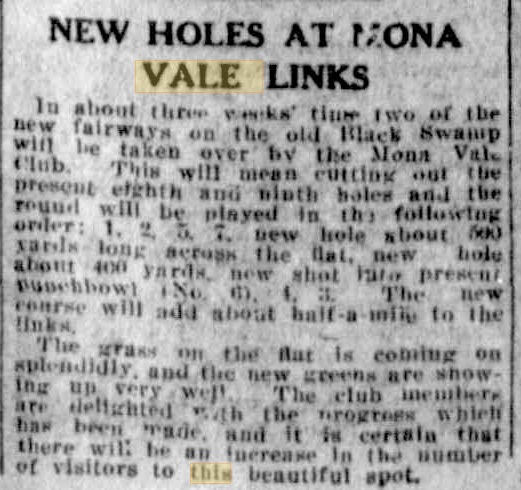
NEW HOLES AT MONA VALE LINKS (1931, June 17). The Labor Daily (Sydney, NSW : 1924 - 1938), p. 6. Retrieved from http://nla.gov.au/nla.news-article236590581
Schoolboy Gives Cheek to Par!
HOLES OUT IN ONE AT MONA VALE . L. WOOLFE, a school boy of 17 years, had a remarkable round in the grade match at Mona Vale yesterday. He was playing ninth man, did par for the first nine holes, and holed the ninth, 112 yards, in one. Schoolboy Gives Cheek to Par!. (1932, August 21). Truth(Sydney, NSW : 1894 - 1954), p. 7. Retrieved from http://nla.gov.au/nla.news-article169142001
NEW NINE
MONA VALE GOLF CLUB
Formed six years ago the Mona Vale Golf Club has proved to be one of the most popular of the smaller courses and because of the patronage accorded it, the committee has decided to add another nine.
A sub-committee comprising Messrs. J. F. Bowden, J. W. Austin and A. Reardon has been Instructed to enter into negotiations for the acquisition of sufficient land to bring the course up to the full size. The cost of the new extension when completed is expected to be in the vicinity of £1500, Already the club has assets valued at £3000 and should have no difficulty in financing the new venture. NEW NINE (1933, March 8). The Sun (Sydney, NSW : 1910 - 1954), p. 5 (LAST RACE EDITION). Retrieved from http://nla.gov.au/nla.news-article229055787
MONA VALE GOLF COURSE.
The official opening of the new course at Mona Vale will take place on September 5. The remaining two holes will then be in play extending the course to 6182 yards.. The new No 7 green and No 8 tee are practically on the water’s edge.
To mark the opening professionals who will be In Sydney for the open championship have been invited to take part in an 18 holes stroke event with several of the leading Sydney professionals. Among those who have accepted Invitations to play are -Rufus Stewart W Harvey and W Robertson of South Australia, E. Naismith, A. Spence and L Wood of Victoria M L Kelly N G von Nida W Bolger V Richardson F. Byre W. Thomson, Alex Thomson (the Mona Vale Professionals) and W Holder of Sydney. Play will begin at 1.30pm following a dinner at which the visitors will be the guests of the president (Mr. W.W. Hill). No charge will be made to witness the play. MONA VALE GOLF COURSE. (1937, August 28). The Sydney Morning Herald (NSW : 1842 - 1954), p. 23. Retrieved from http://nla.gov.au/nla.news-article17375544
During the early stages of the Second World War (1939-45); the Defence Department set up a camp on the south-eastern corner of Kitchener Park and the army took over the golf course. Barbed wire entanglements were installed along the fairways adjacent to the beach and a tank trap extended from Turrimetta Head through the golf course to Mona Vale headland. Several machine gun pits were established on the golf course.
A little on a founding member who did not get to see the realisation of 18 tees:
MR. V. L. H. COGHLAN.
Mr. V L H Coghlan of Milson-road Cremorne, who was widely known in sporting Press and broadcasting circles died yesterday in hospital after an illness of three months. Mr Coghlan who was a native of Perth was associated with several newspapers in Western Australia, on both the literary and advertising sides. He came to Sydney 15 years ago and joined the "Sunday Times ' and later was on the staff of the ' Daily Telegraph " Subsequently he turned his attention to radio and was the Sydney representative of several interstate broadcasting stations. Mr Coghlan was an enthusiastic golfer and was one of the founders of the Mona Vale club, of which he was president for four years. He is survived by Mrs Coghlan. MR. V. L. H. COGHLAN. (1935, June 13). The Sydney Morning Herald (NSW : 1842 - 1954), p. 15. Retrieved from http://nla.gov.au/nla.news-article17202238
And a few resident among the names who attended this gentleman's funeral service:
MR. V. L. H. COGHLAN. Representatives of the Press, broadcasting companies and the Australian Journalists' Association attended the funeral of Mr V L H Coghlan, of Milson-road, Cremorne which took place at Rookwood yesterday. There was a service at the Crematorium. The chief mourners were -Messrs A G, S J, and J H Wiseman (brothers-in-law) and Mr Clifford Wiseman (nephew). Others present included-Mrs Vere Graham Dr McIntyre Mr J Wilson Jun and Mr B Rogers (representing Shipping Newspapers Ltd), Mr H Samuels (representing the Bulletin ) Mr T W Spencer (chairman) and Mr J E Davenport (trustee) representing the Australian Journalists Association Benevolent Fund Mr M Goldberg and Mr C C Faulkiner and Messrs B Luscombe Goldstein R Hutchison Clive Cooper William Hill Charles Ramses Gordon Neillry D White N Strack J Moore J Austin R Pepler (Mona Vale Golf Club) J Searle and C Searle (Balgowlah Golf Club) T Trousdale, Hardy P Russell J Hill J S McNamara Sutherland T Fletcher T Levy and P Moteon. MR. V. L. H. COGHLAN. (1935, June 14).The Sydney Morning Herald (NSW : 1842 - 1954), p. 12. Retrieved from http://nla.gov.au/nla.news-article17186530
The game of golf, and having a set of green links as a central part of land subdivisions, seems to have taken hold with those who were turning paddocks into places were homes could be built. At Long Reef, Avalon Beach and Elanora Heights Dan Soutar's expertise as a Golf Course Architect was prevailed on to design and supervise the layout of courses.
The first modifications to a local golf course by Mr. Soutar were at Manly:
GOLF NOTES
GEZIRA SPORTING CLUB : MANLY CHANGES
By AULD REEKIE.
In response to numerous requests, including some from Melbourne, I give particulars of the alterations that the committee propose to carry out on the Manly golf course. The scheme is drawn up by D. G. Soutar, and was called for in order to release, if necessary, the valuable land on which the tenth hole is laid out, to do away to a great extent with the drains which intersect the course at most of the holes, and make for congestion through the players having to locate the balls in the water and then fish them out. They are a very unfair form of hazard, as the scratch and back marker are both penalised to the same extent — the loss of a stroke.
The length of holes in yards and bogeys of the present course are : Out . . .. 302 494 137 374 565 292 160 2« 310-2*1 Bogey ..A f- 3 5 « 4 3 i 4 — S3 Home .. 130 385 377 132 590 2&J 212 09 375-2661 Bogey ..3053 04436 — 38 Giving a total length of 5542 yards with a bogey of 76,'while the new course will have a bogey of 79 and a length of 5886 yards, which will be extended to o»w 6000 yards. The new figures will be: Out .... 312 360 308 458 140 385 497 292 450-303] liogey .. fl 3 4 u it 56 4 5 — 40 Home .. 325 340 383 146 400 501 110 262 388— 2S5J Bogey .. i 4 5 3 5 6 3 4 6 — 39
At present the public road is played over on three occasions, whereas in the new scheme this will be done away with. To the majority of golfers it will no doubt cause a good deal of surprise, as a great many of them looked upon the present course as a first-class holiday test of golf, but there can be no doubt that the alteration will be a decided improvement and bring the course up to a championship standard, notwithstanding that it will be very flat, the elimination of the tenth taking away — with the exception of, perhaps, the eleventh— the only hole of a hilly nature. Strange to say, J. S. Worthington objected to many of the American courses as being too hilly and having too many blind holes, a notable exception being Travis course at Garden City, New York. He goes on to state that a fiat course is always the best test of golf — firstly, because you obtain no assistance from the hilly slopes, and every yard you go must be brought about by your own exertions; secondly, what is more important still, is the fact that it is always more difficult to judge distances on a flat course, which is a very important element in the game. Under the scheme, which has been adopted by the committee, the network of drains adjacent to the fifth and eighth greens and the sixth and eighth tees will be done away with. The arrangement will also do away with playing over the road at the second and fourteenth holes.
One of the causes, Soutar informs me, of the flooding of the lower part of that links adjacent to the fifth green and approaches, is that a drain was cut right in the heart of the course to link up with an arm of the lagoon at a right angle, the result being that the water banked up and soon flooded the low lying part of the course. To minimise this flooding the drain will be blocked at its entrance ta the links to the left of the twelfth fairway, and deflected into the drain in front of the twelfth green, and will now through a very small corner of the links instead of into the heart of the course, at present. When this has been done the only drain on the course will be the present one from the vicinity of the ninth tee, which flows into an arm of the lagoon at the 'Peninsula,' the one m front of the eleventh green, which will be extended to connect with the deflected water somewhere in the vicinity of the back tee at the present fourteenth hole, and the third drain at the twelfth, which will become the main drain for the storm water outside the course. That this will be a decided improvement can be seen at a glance by anyone who knows the present course— and most golfers do— as all the drains on that part of the course beyond the road going to the second with the exception of the two mentioned, in front of the eleventh and twelfth greens, can be filled up when required. The water hole in front of the present sixth tee will be extended and deepened to form an artificial lake, and be a beauty spot instead of a muddy swamp, as at present. This lake will not be played over, but will be so extended that it will divide the present sixth and eighth fairways, which, under the new scheme, will become the eighth and ninth fairways. GOLF NOTES (1918, May 22). Referee (Sydney, NSW : 1886 - 1939), p. 12. Retrieved from http://nla.gov.au/nla.news-article120302201
While speaking about golf courses in 1921, he states:
GOLF
COMPARING COURSES Nature Always Best
(By D. G. Soutar)
The cabled interview with Kirkwood, wherein he states that the American courses were better than the British courses that he played over, is most interesting. When it is remembered that St. Andrews was the course over which the open championship was decided, and where Kirkwood scored his greatest triumph, making all due allowances for his splendid play at Oxley and Gleneagles, it comes somewhat in the nature of a surprise to find the classic course relegated to a subordinate position.
This opinion, if cabled broadcast, will be sharply contested both in America and Britain, and ther question will naturally arise:
“Is Kirkwood’s opinion worth considering?”
“By what standard does he compare the respective courses?”
Personally, I think that, up to a point, Kirkwood is capable of giving a valuable opinion upon the question, but his experience on Australian courses would naturally, but probably unconsciously, bias him towards the American courses. Golf in America is little, if at all, older than golf in Australia, and the leading courses are made courses the same as they are out here.
GOLFING ATMOSPHERE
All the championship courses of the British Isles are natural, therefore the merits of the respective courses must be estimated from different viewpoints. Other things being equal, nature must win every time. There is the true golfing atmosphere which cannot be exuded by a made course. Time alone can create that pervading Influence.
Some time ago, when comparing Australian courses, I expressed the opinion that there was practically nothing to choose between Kensington and Sandringham. When making that statement I was comparing them from an Australian point of view. From a true golfing point of view Kensington stands alone, with Seaton (Adelaide) the next best. Their surrounding give them an ‘'atmosphere'’ which cannot be copied.
From the point of age, Sandringham is the oldest course of the three, but Kensington and Seaton were golfing country long before they were discovered. A good golf course is a matter of evolution and cannot be created in a year or two. The best golfing country may be spoilt through the holes being badly laid out or when laid out to the best advantage, through the green not being up to that standard of perfection to harmonise in making the ideal course.
THE MODERN COURSE
Taking Sandringham as a good example —which it undoubtedly is - of the modern made course it could not be compared with St. Andrew and other old-world seaside courses, but it would probably compare more than favourably with the best in America. That is a tribute to the amount of thought which the green committee gave in planning the course and the skill shown in carrying out the scheme. They have done their work well. The green committee is the most important committee in connection with a golf club, and great care should be exercised in selecting the best men or man to carry out the duties.
The game has reached that stage when only the best will suffice. The policy to be adopted should be carefully thought out, and when decided upon the best advice obtained to enable that policy to be consummated. A committee — either of one man or a number — may decide upon a scheme which will be an improvement, and yet they might be incapable of planning It properly. They may decide that an alteration in some of the holes would be an Improvement; that new bunkers would demand more skilful play; or that some of the greens would be better if they were re-modelled.
MONEY WASTED
Some green committee essay this task when they haven't the faintest idea of how to go about It. The result is that the work is of no value and money has been wasted. It remains for their successors to benefit by the mistake and carry out the work with efficiency. Therein lies the proper function of a green committee. That fact is now being recognised, and will be more so in the future.
The popularity of the game demands more courses. New clubs will be formed In districts where ground is available. With suitable ground another Kensington could be formed, and an opportunity arise to lay out a course embracing all the good features and eliminating any bad ones that exist in present courses. The experience gained has been invaluable, and when the new courses are being formed it is to be hoped that experience will be used to the best advantage. GOLF (1921, November 1). The Sun (Sydney, NSW : 1910 - 1954), p. 5 (FINAL EXTRA). Retrieved from http://nla.gov.au/nla.news-article223485243
In stating 'the true golfing atmosphere cannot be exuded by a made course' Soutar is referring to the origins of golf links that ascribe to those made by Nature being the best; these are 'formed by wind and vegetated by nature'.
Links as the oldest style of golf course, first developed in Scotland, is land that is typically characterised by dunes, an undulating surface, and a sandy soil unsuitable for arable farming but which readily supports various indigenous browntop bent and red fescue grasses. Together, the soil and grasses result in the firm turf associated with links courses and the 'running' game. The hard surface typical of the links-style course allows balls to "run" out much farther than on softer turf course after a fairway landing. Often players will land the ball well before the green and allow it to run up onto the green rather than landing it on the green in the more targeted-landing style used on softer surfaces.
Links courses worked and work, still, with the natural landscape of these strips of lands along the Scottish and Irish coasts. They incorporate the land's slopes and turns, the fairways often have a natural roll to them. Wind can be a major factor in the game on a links course. Although purists claim that true links courses are located only in the part of the world where they originated, courses built in the links tradition are found worldwide.
Origin of 'Links Suburban and Our Association Activities : 6000 Players. Good Scoring at Rose Bay
(By 'AULD REEKIE.')
A reader asks the deflnition of the term links in golf? Links and course are used to designate where golf is played, but the words have a different meaning. There are no golf links in Australia, using the word links in its correct sense. 'Links' are the open downs or heath on which golf is played. 'Course' is that portion of the links on which the game ought to be played, generally bounded on either side by rough ground or other hazard.
SIR WALTER SIMPSON, in 'The Art of Golf,' says that the grounds on which golf is played are called links, being the barren, sandy soil from which the sea has retired in recent geological times. In their natural state links are covered with long, rank henty grass and gorse. These get worn away by sheep and golfers, and short, springy, sandy turf is disclosed. The part of the links thus worn is the course. He goes on to refer to the course thereafter. On the coast of England the links are situated and' divided into numerous golf courses. This is the meaning of the term links, which is obviously misapplied unless usage makes the term links also -mean a course.
SIX THOUSAND PLAYERS. The association has been in existence since 1902, and to-day comprises nine district associations in which there are 102 clubs and about 6000 players. The District Associations are : Blue Mountains, Far South Coast, and Tablelands, Newcastle, Hunter River, Northern Rivers, Riverina, South Coast and Tablelands, Suburban, and Western. The country championship was won by O. D. Meares, with B. C. J.. Bettington runner-up, while of the eight teams that entered for the teams' championship, the Blue Mountains team won. GOLF (1927, May 4). Referee (Sydney, NSW : 1886 - 1939), p. 16. Retrieved from http://nla.gov.au/nla.news-article127910560
Daniel Soutar was much in demand as a designer of golf courses after his early forays into designing the Wentworth Falls course (opened in 1915) and his redesign at Manly. With children to feed and house, the extra money that came with this work was more than welcome. In fact 1923 was a very busy course design year for him and this article speaks of his work in this field during the months preceding his design for Avalon being announced:
LAYING OUT COURSES
Soutar for North Queensland
D. G. Soutar is a busy man these days. Apart front his work touching the game at Moore Park, his services have been eagerly sought after to lay out new courses. At the beginning of the year the Elsternwick (Victoria) Club prevailed upon him to Inspect the ground and lay-out its new course at Cheltenham. He has also laid-out the new courses at Roseville, Middle Head, Mittagong, and the extension of Wentworth Falls to eighteen holes. The laying-out of the proposed new courses on the Botany water reserve have also been placed in his hands. His fame as a golf architect has travelled to North Queensland, and he leaves for Townsville on Saturday next to Inspect new ground purchased by the North Queensland Club and lay-out the course. Soutar intended visiting Melbourne to defend his title of professional champion of Victoria, but will have to forfeit, he was also too busy to spare the time to go to Adelaide to play in the Australian championship. Although he has made few appearances in big golf this year he is far from being finished as a player. Laying-out golf courses Is remunerative work, and must be done as opportunities arise, while the winning at championships can wait. He hopes to be amongst them next year. LAYING OUT COURSES (1923, October 23). The Sun (Sydney, NSW : 1910 - 1954), p. 5 (FINAL EXTRA). Retrieved from http://nla.gov.au/nla.news-article222674408
In 1924 work commenced on clearing the site for the Avalon Golf Course in Pittwater to a design by Daniel Soutar. The course was open for play in mid 1926. His likeness, and the fact that he had designed the course, was used in many advertisements for land subdivisions.
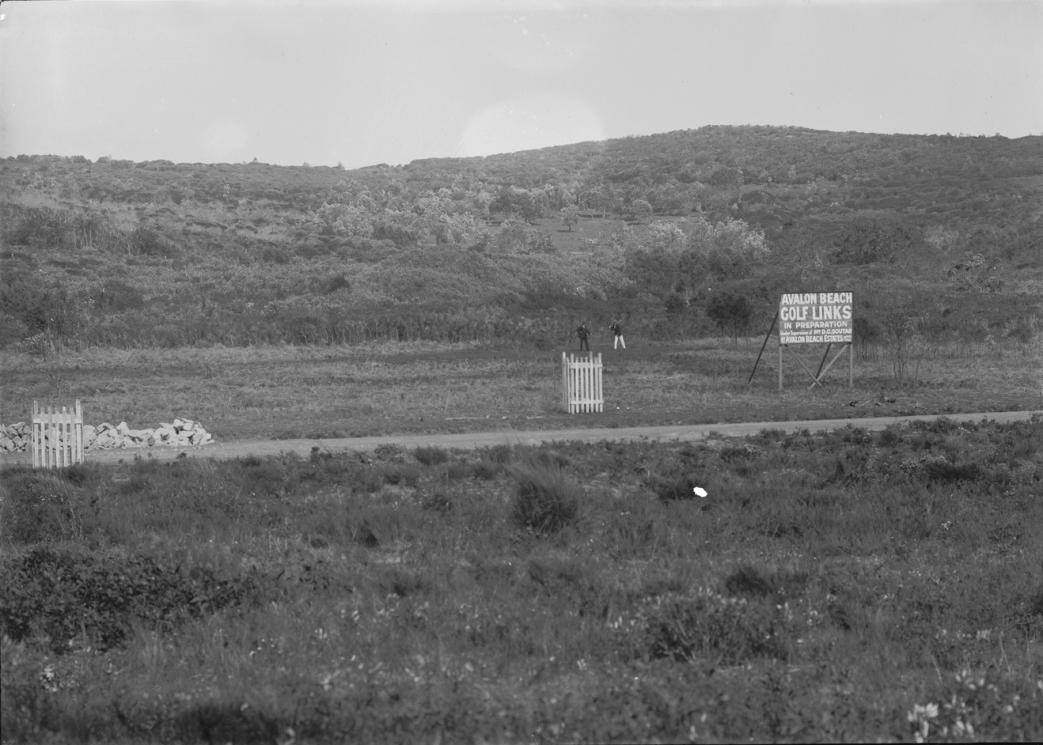
GOLF 4
Millions Club

.jpg?timestamp=1574892779955)
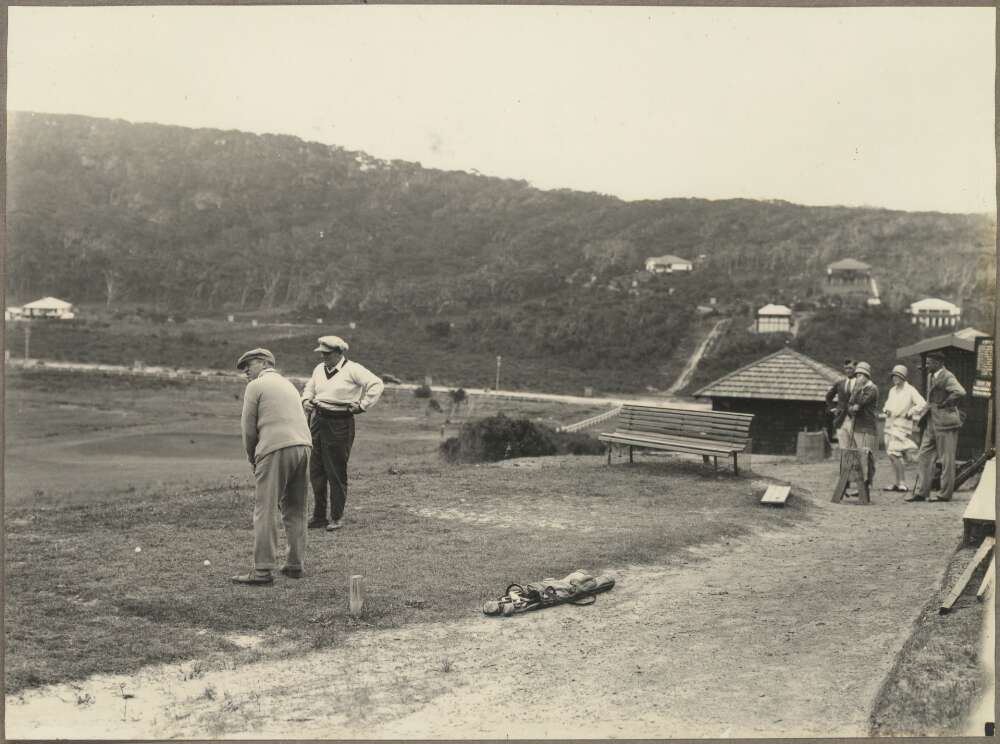
The 'new' Barrenjoey Road appears among advertisement for Avalon Beach Land sales towards the end of 1927 and includes those famous panoramas made by EB Studios that show us how the golf links looked then:
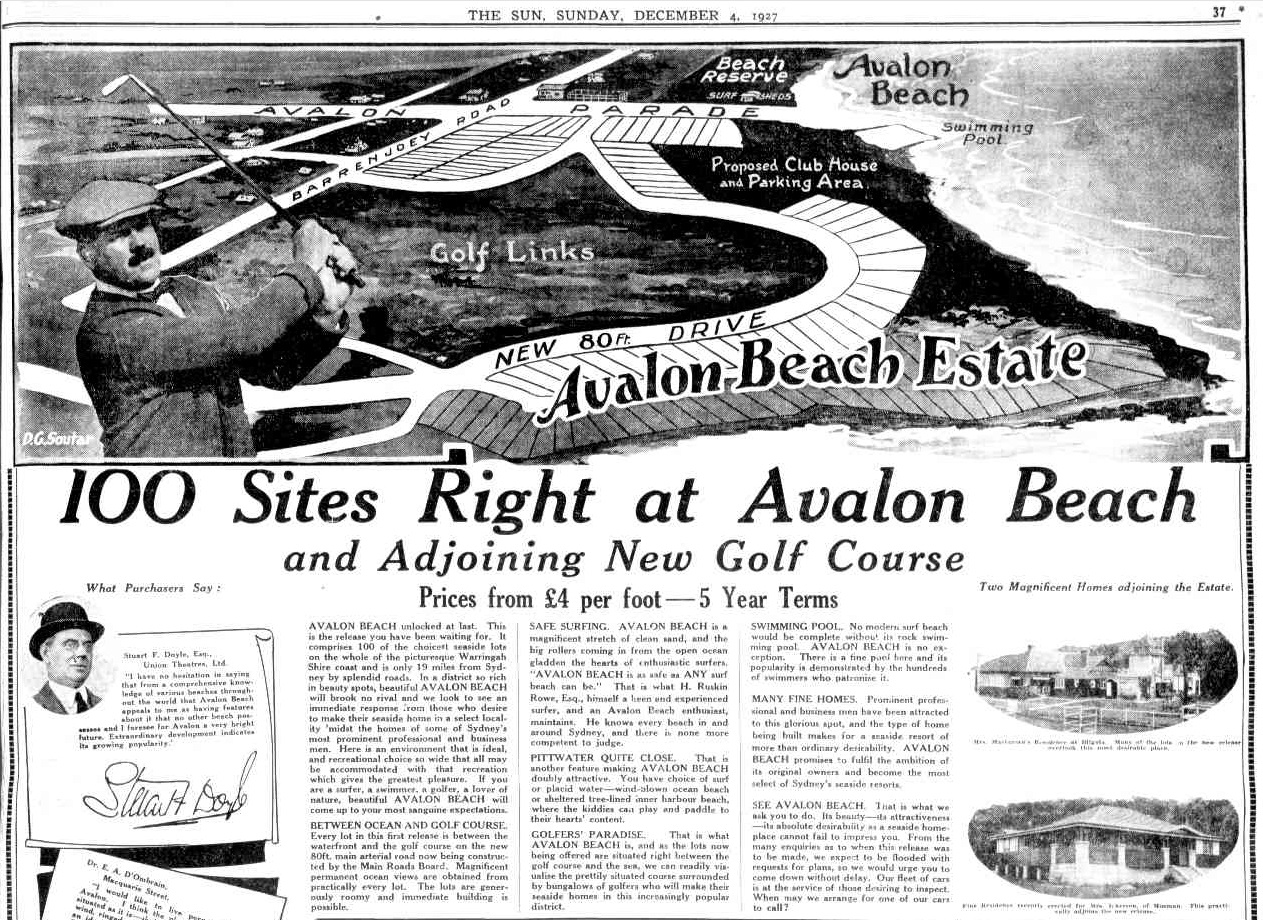
Advertising (1927, December 4). The Sun (Sydney, NSW : 1910 - 1954), p. 37. Retrieved from http://nla.gov.au/nla.news-article222741251

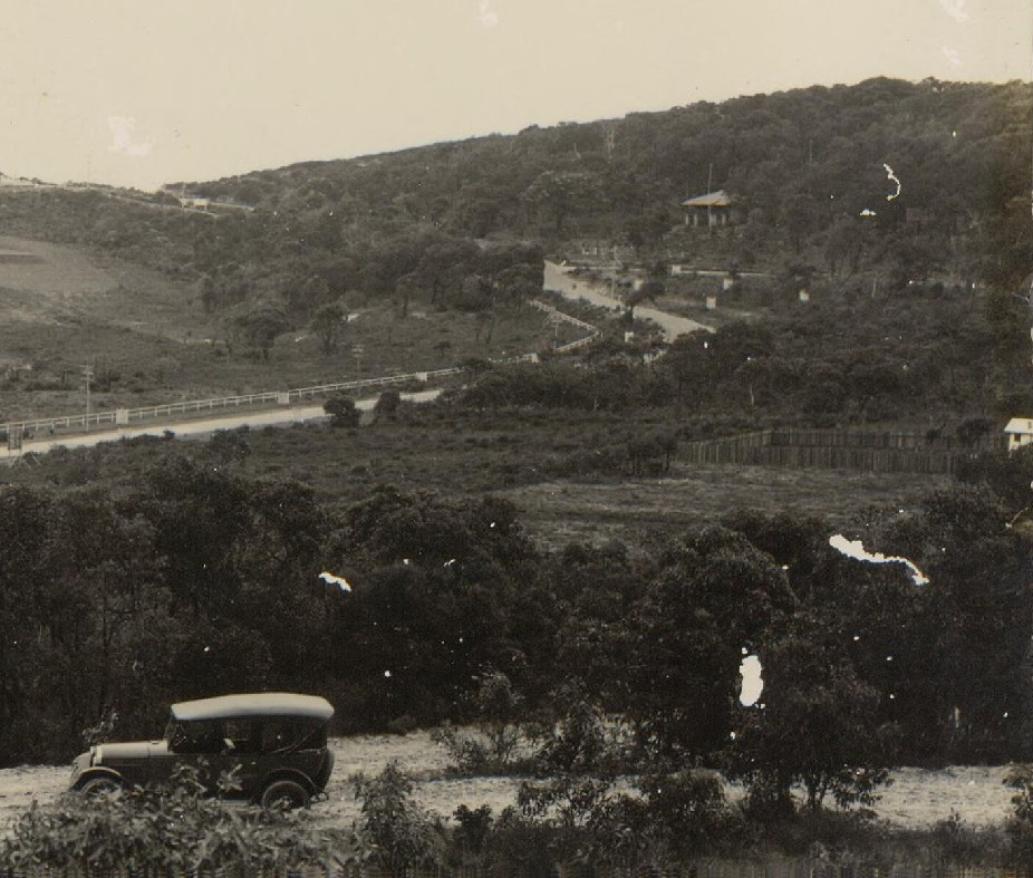
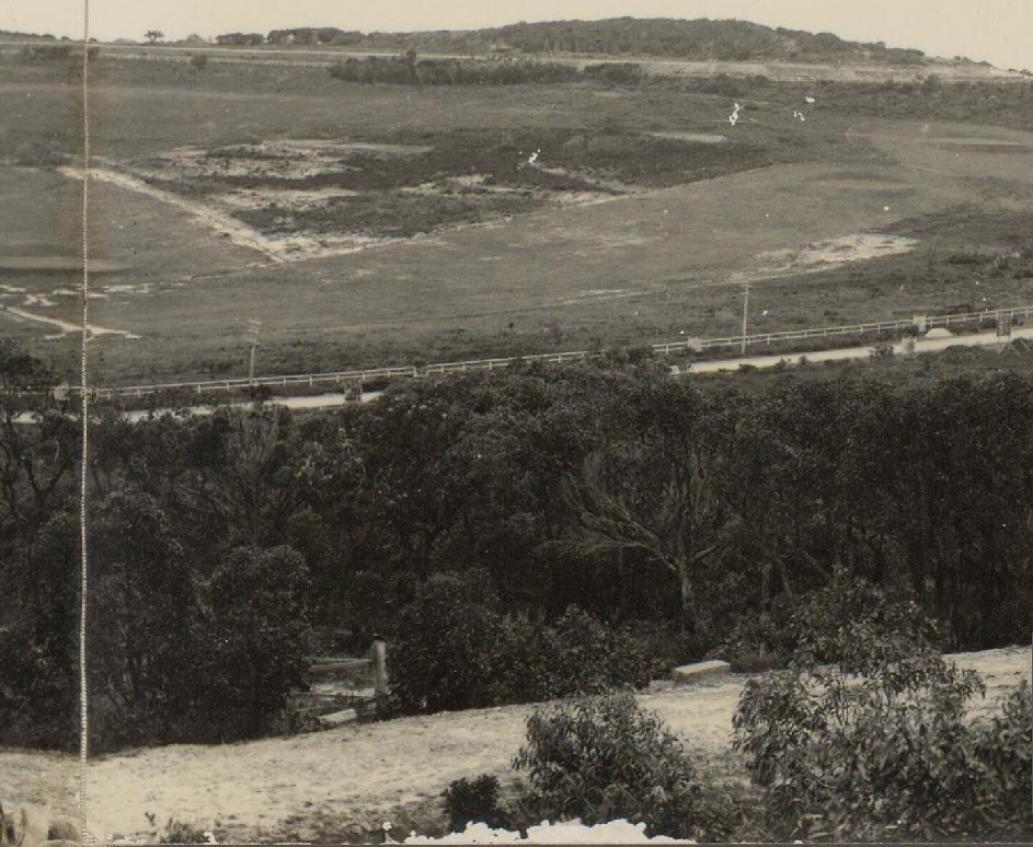
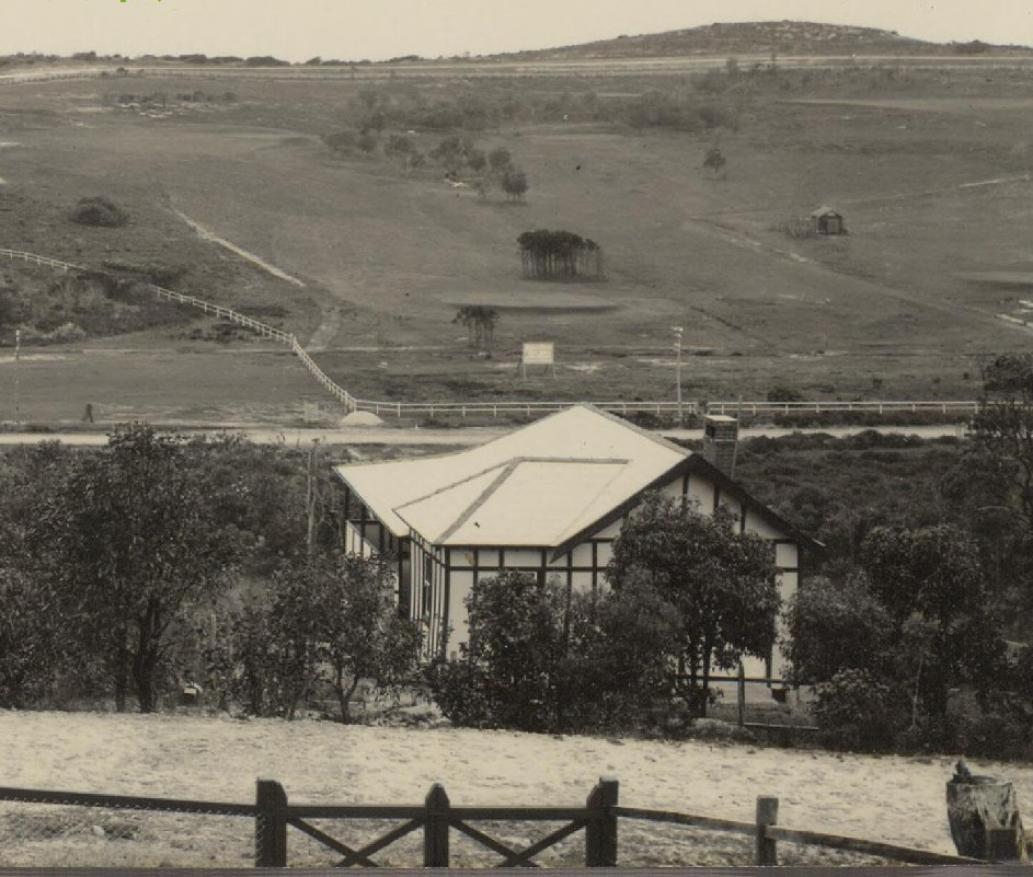
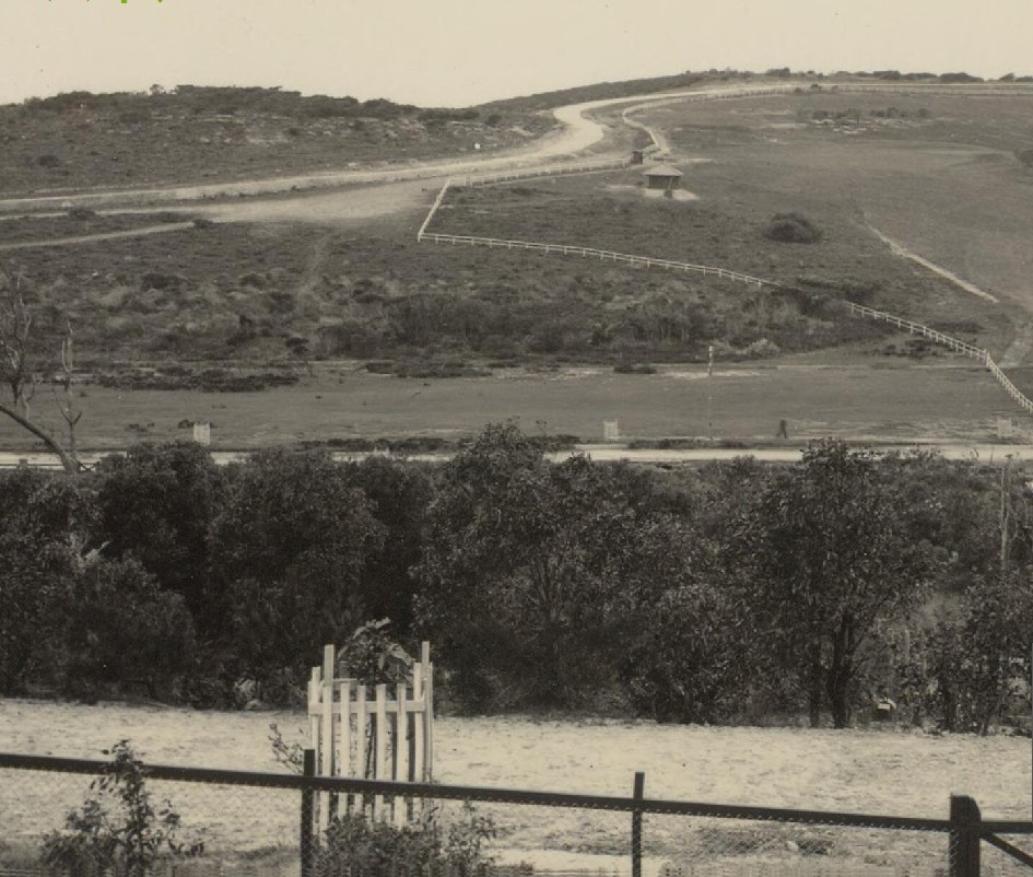
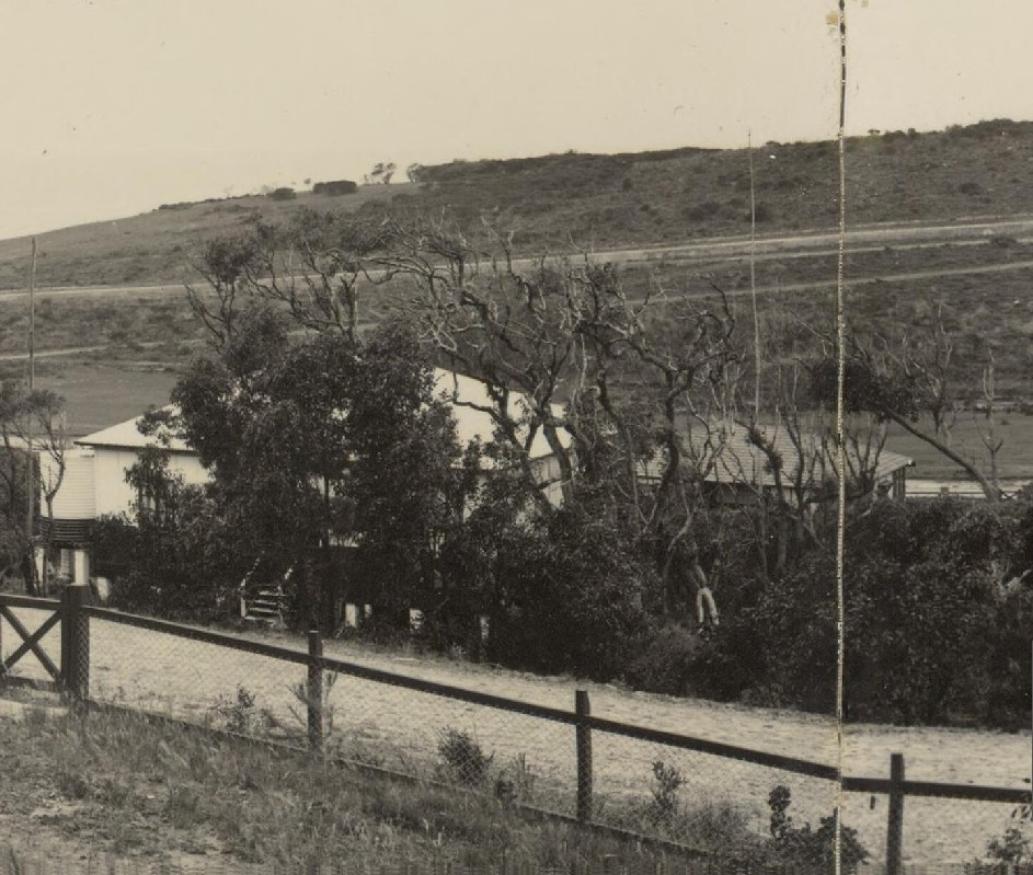
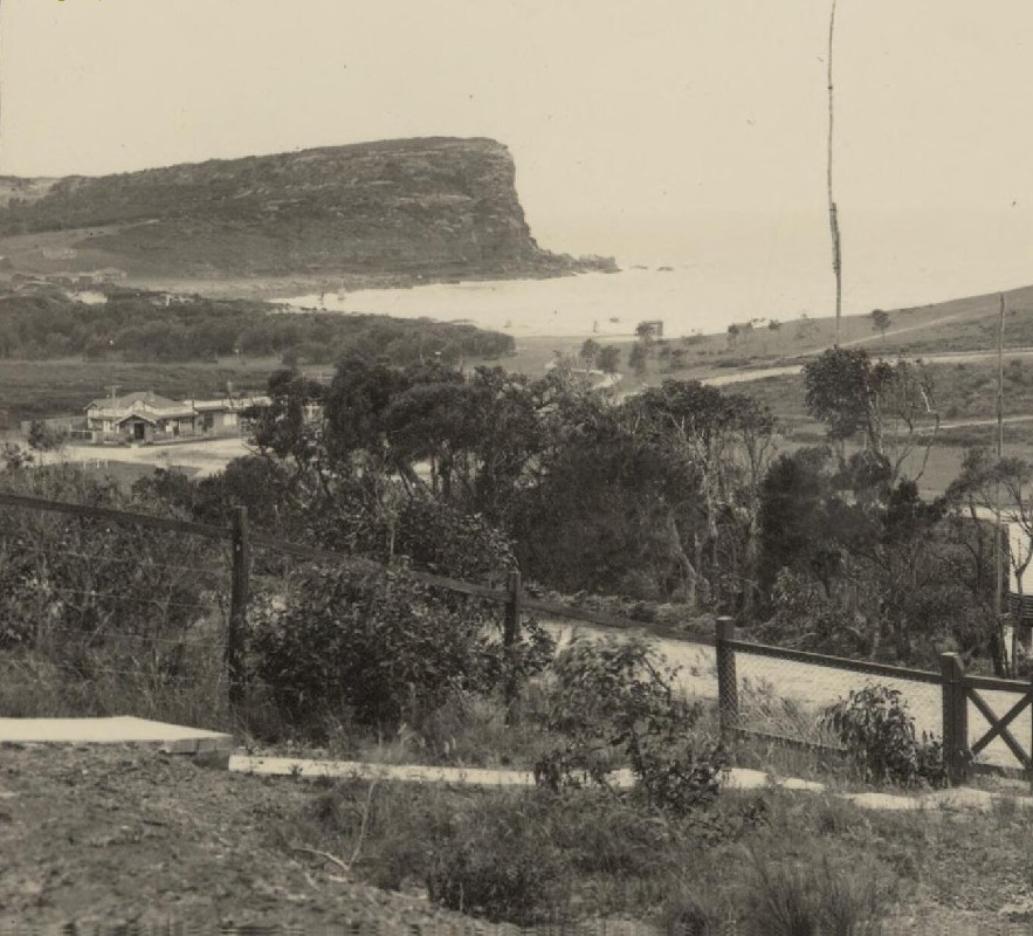

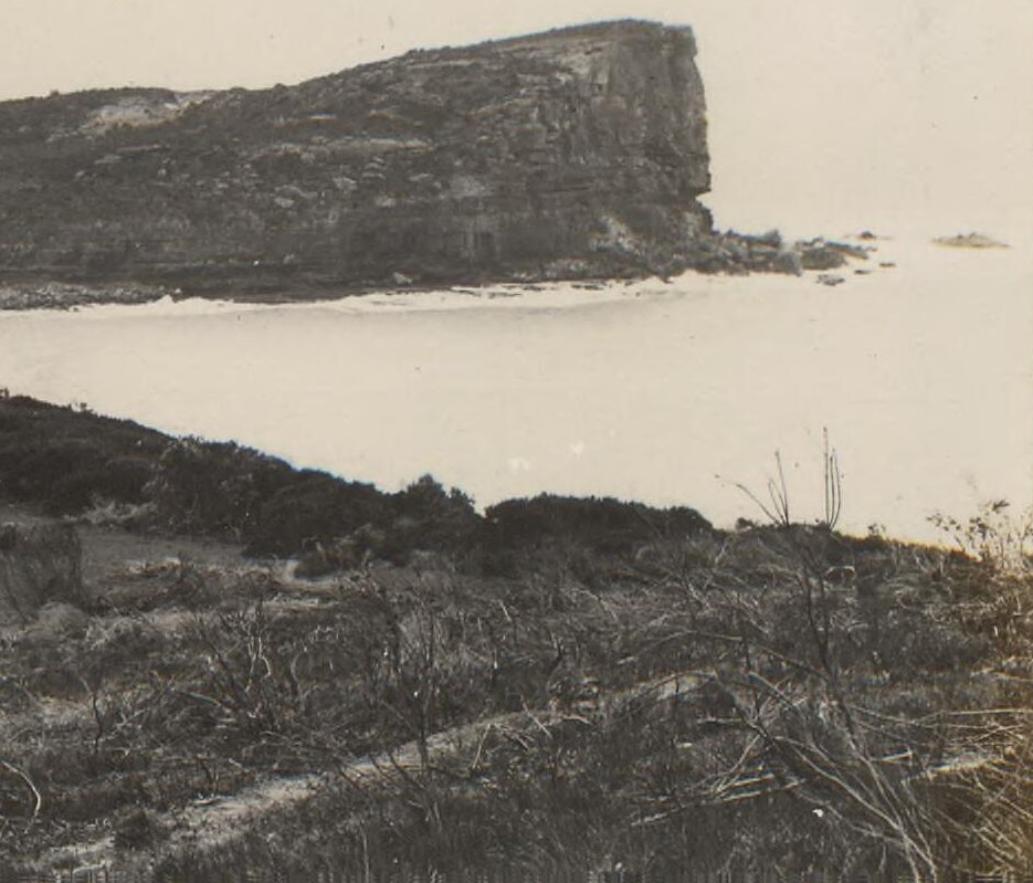
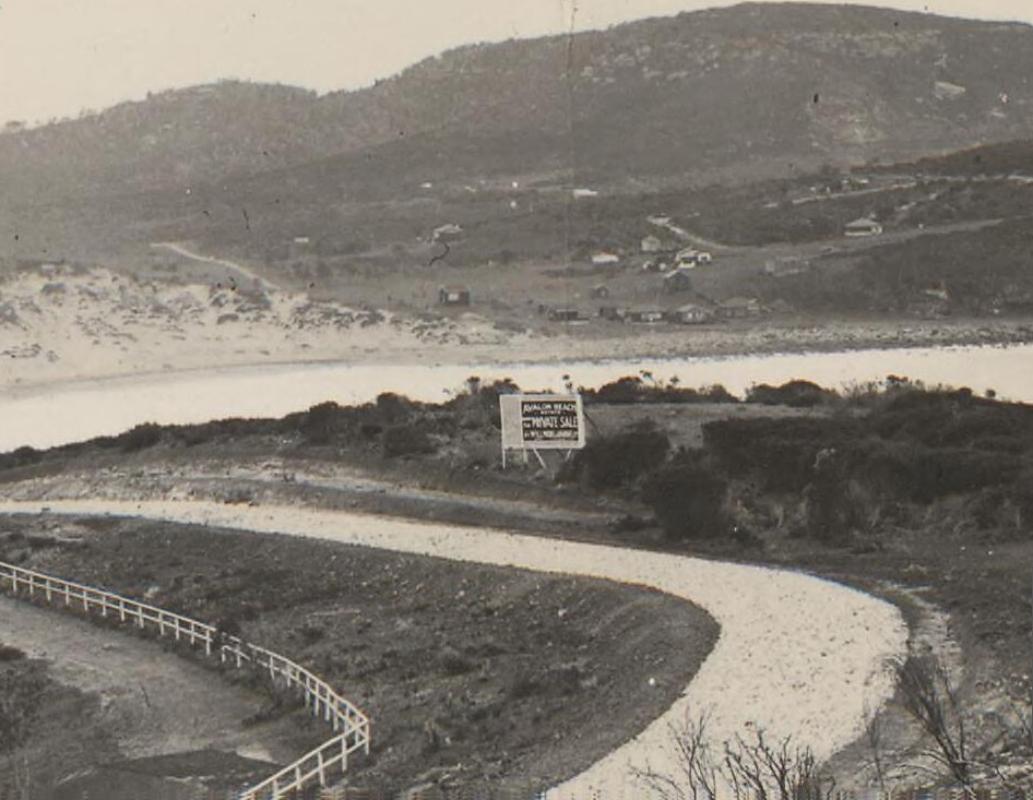
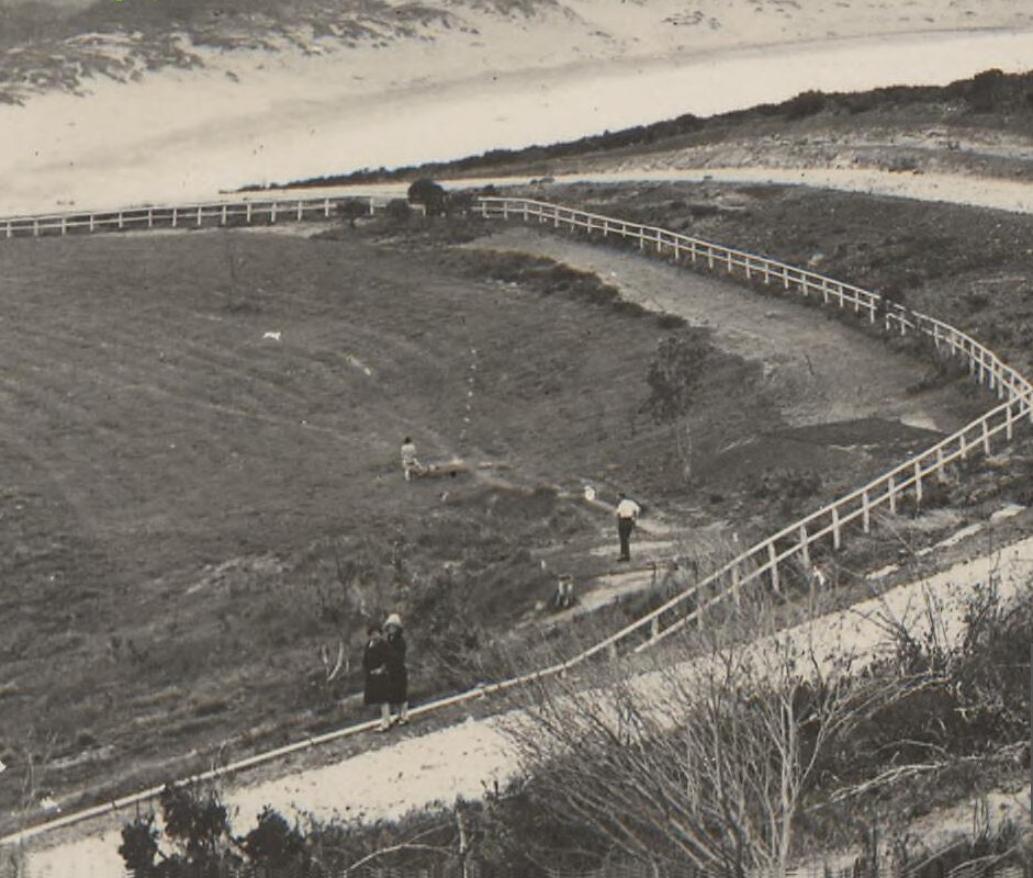
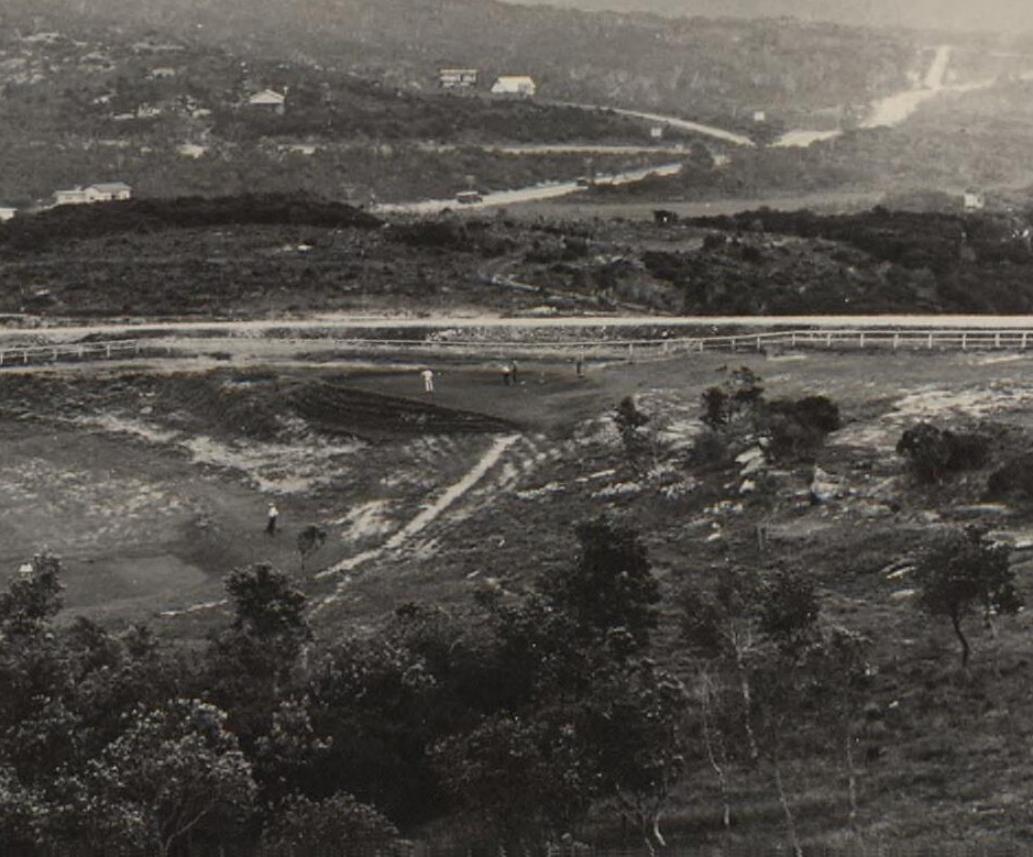
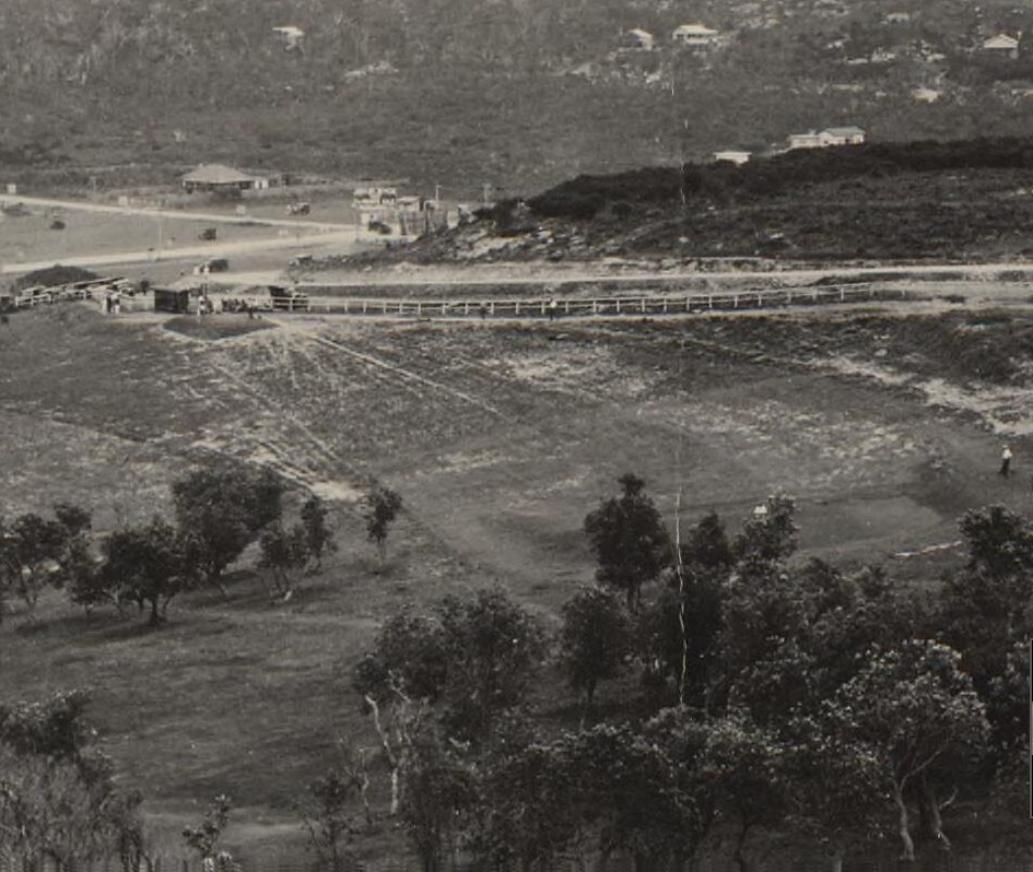
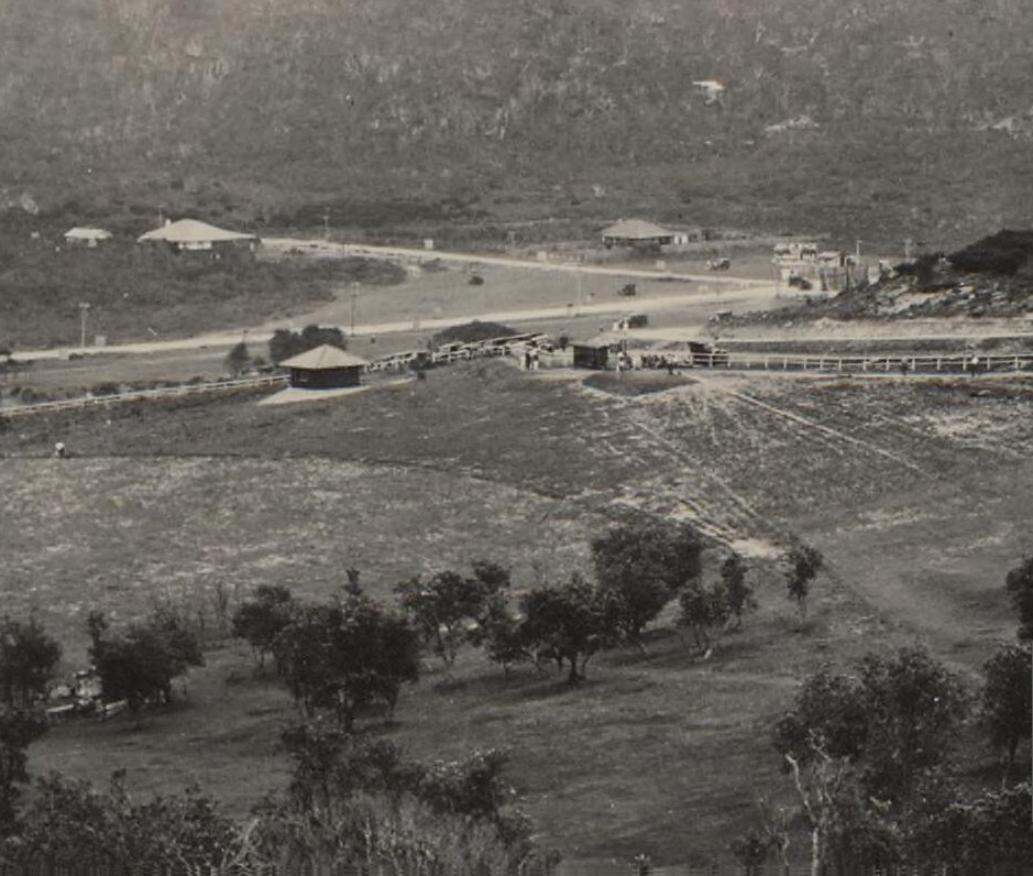
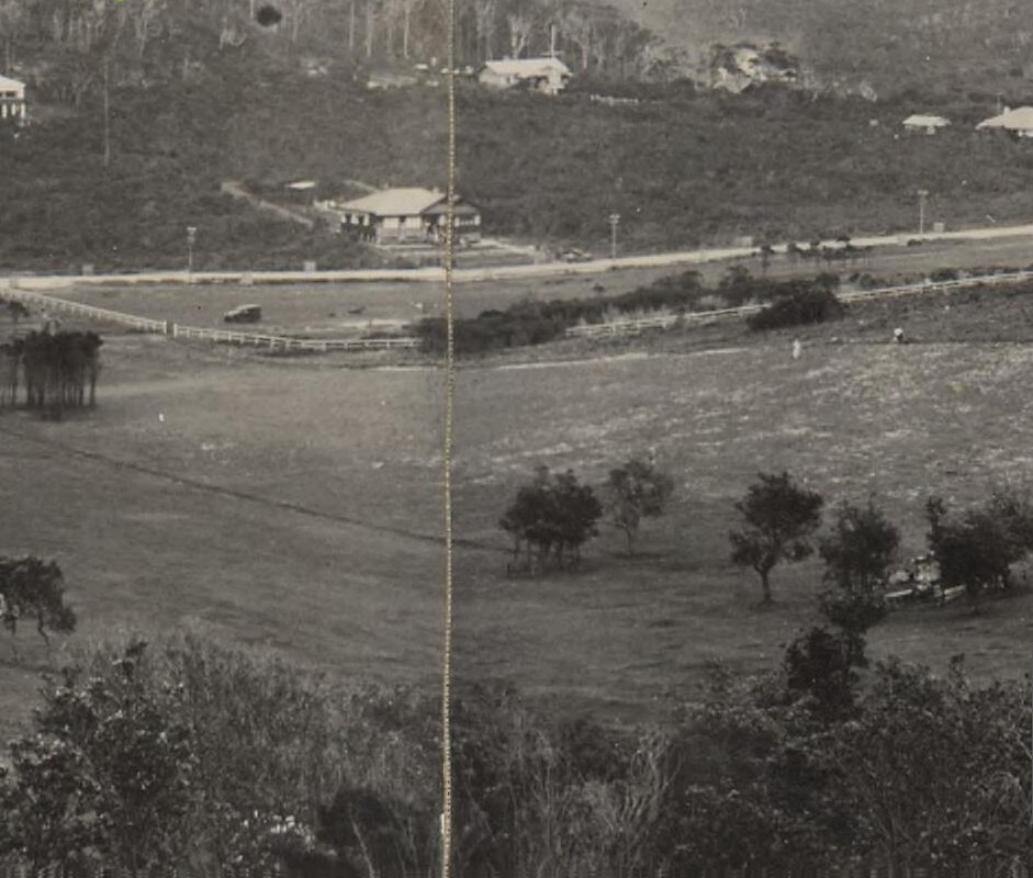
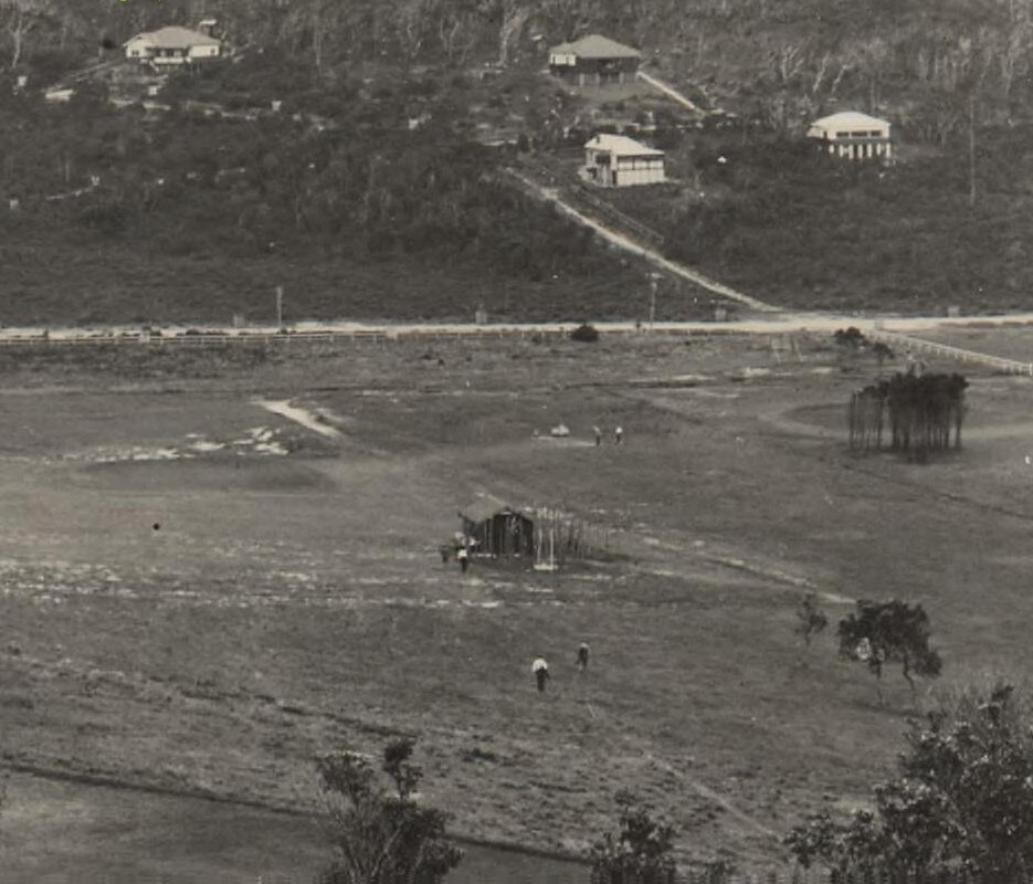
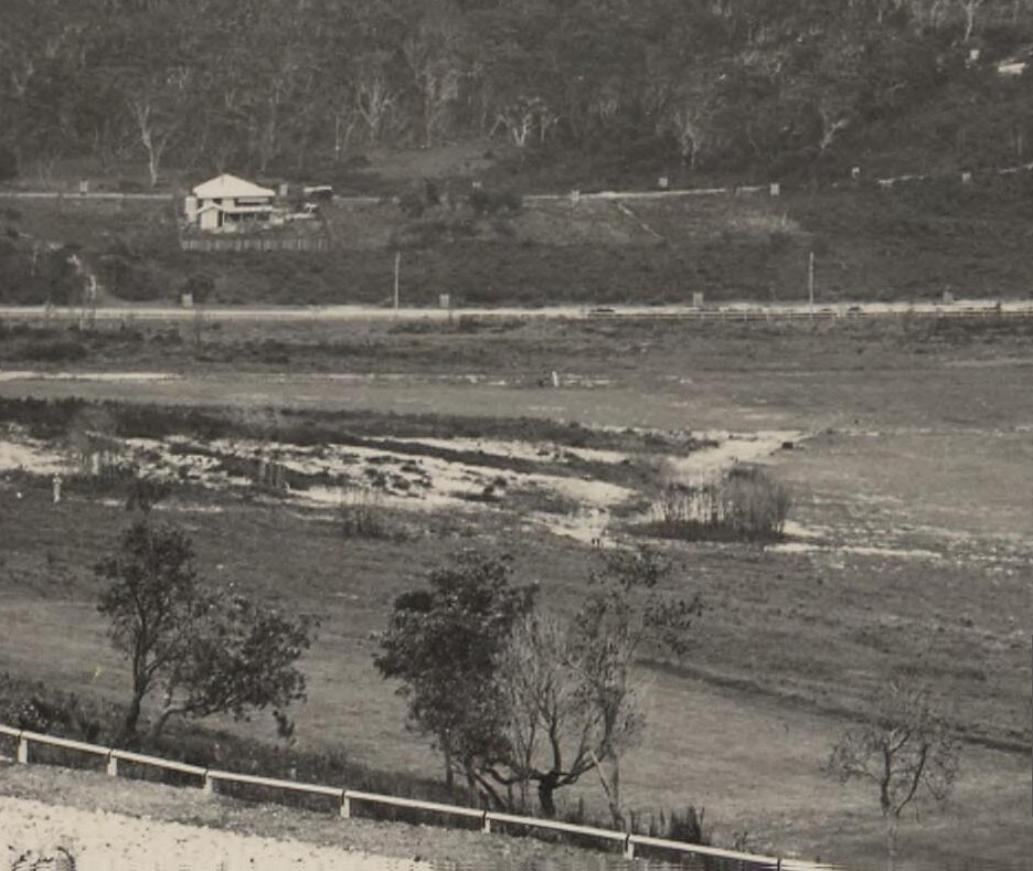
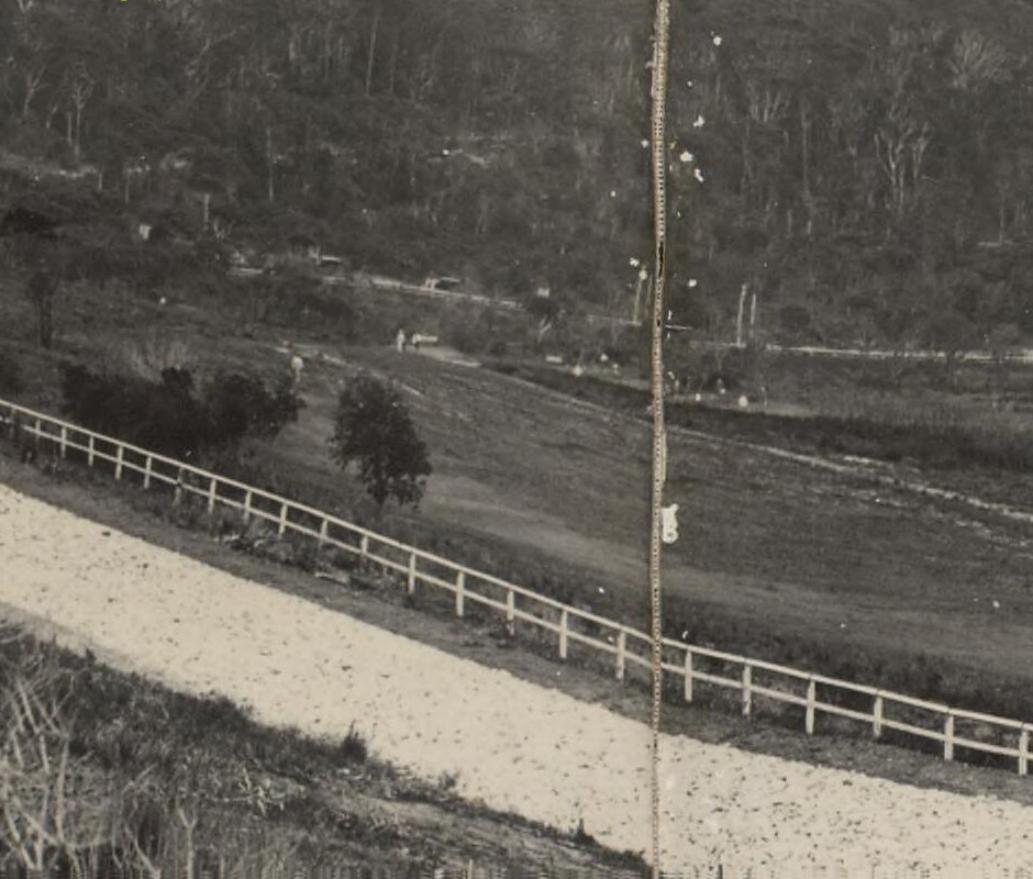
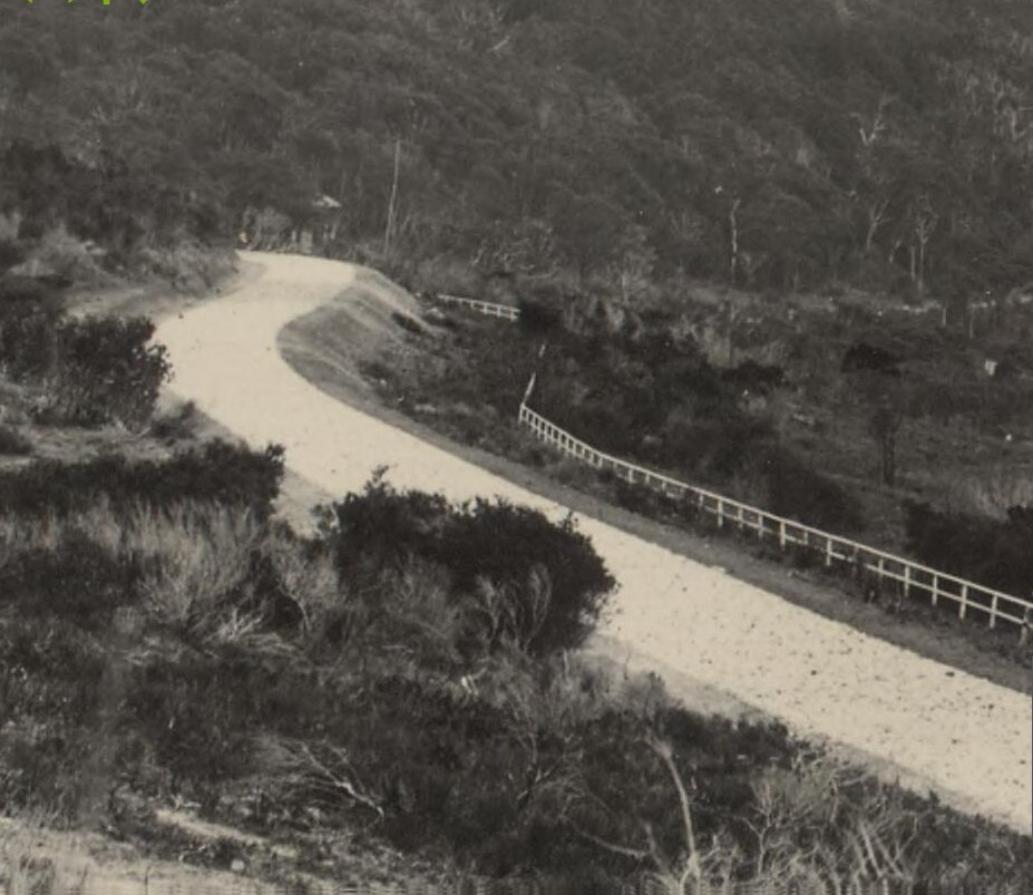
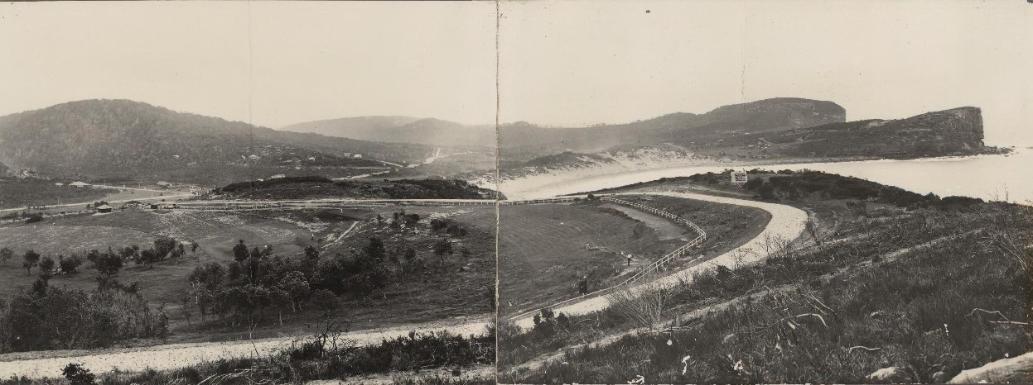
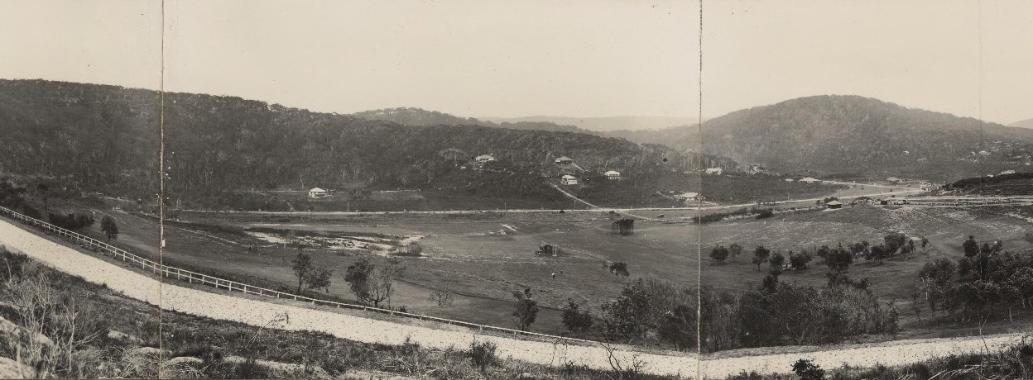
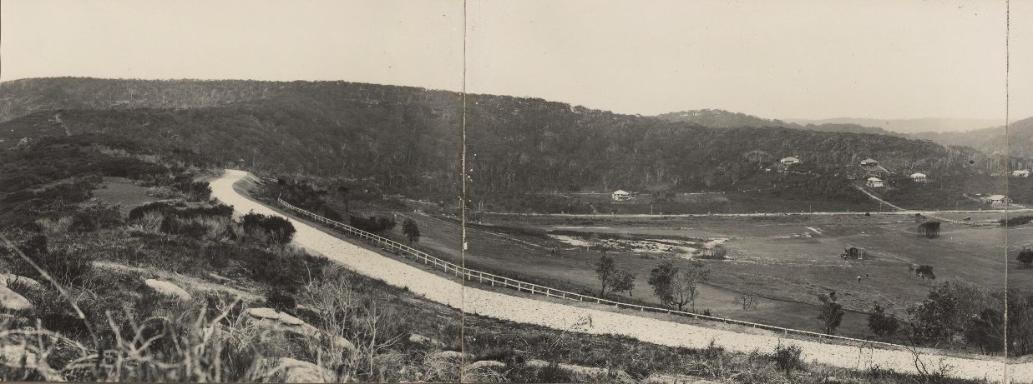
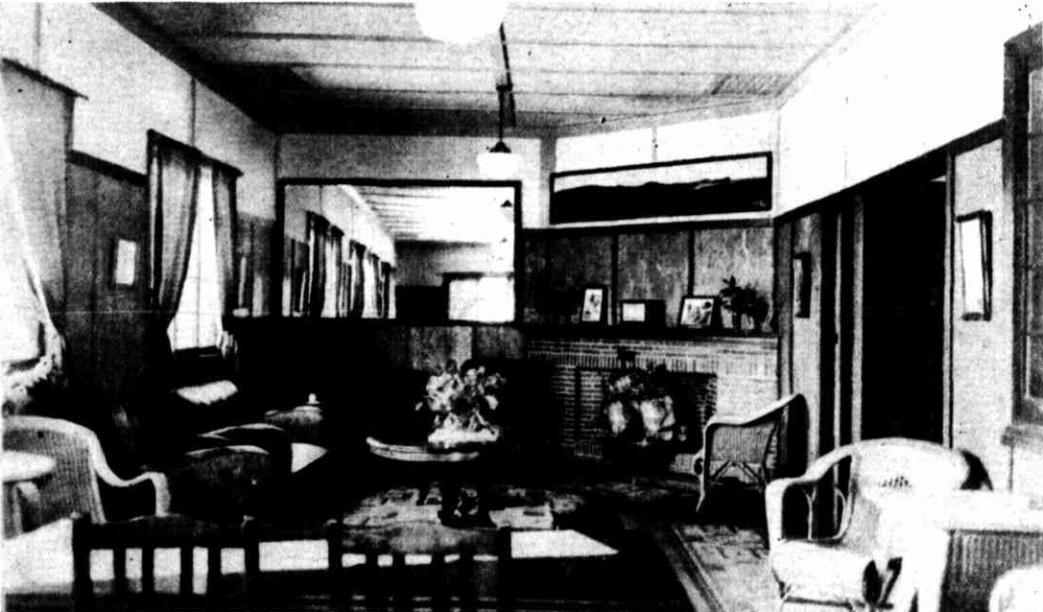
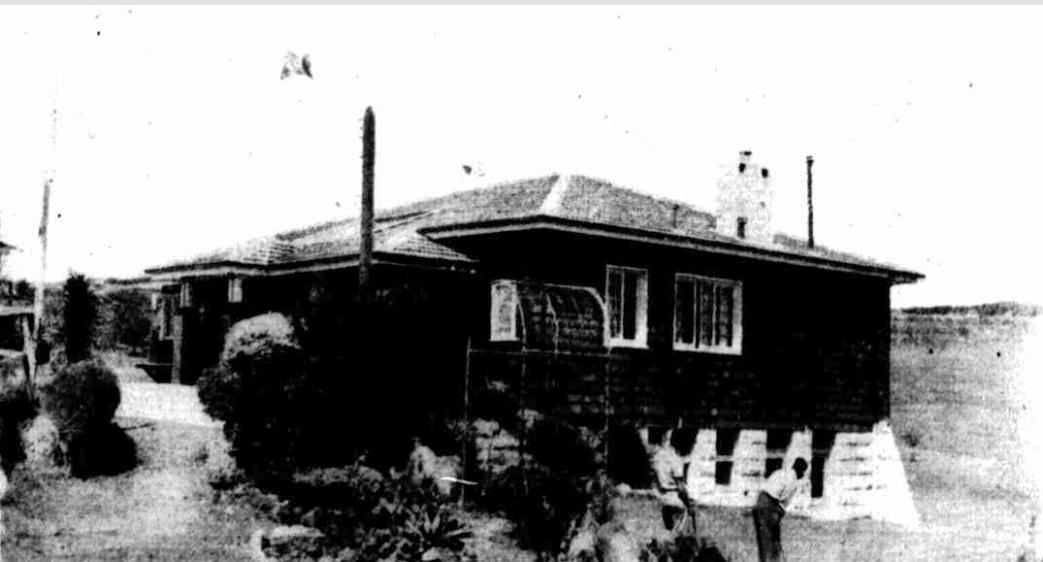
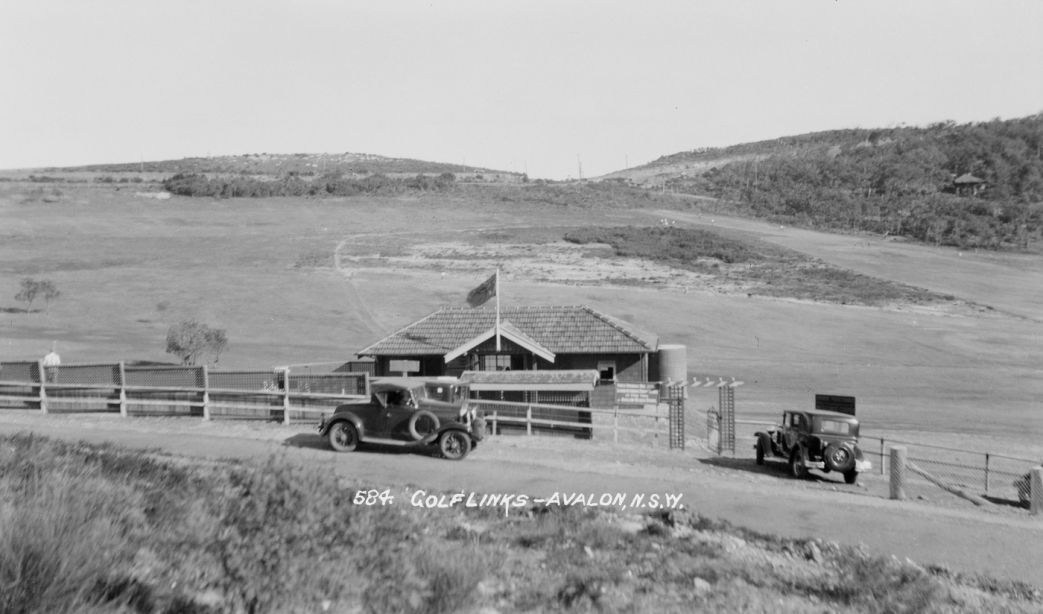
From Album by photographer Samuel Wood - postcard photonegatives of Avalon, Bilgola and Newport, ca. 1938 - courtesy State Library of NSW For more visit: Avalon Beach Golf Links: Pittwater Fields of Dreams II, Pittwater Roads II: Where the Streets Have Your Name - Avalon Beach, or Pittwater Roads II: Where the Streets Have Your Name - Bilgola
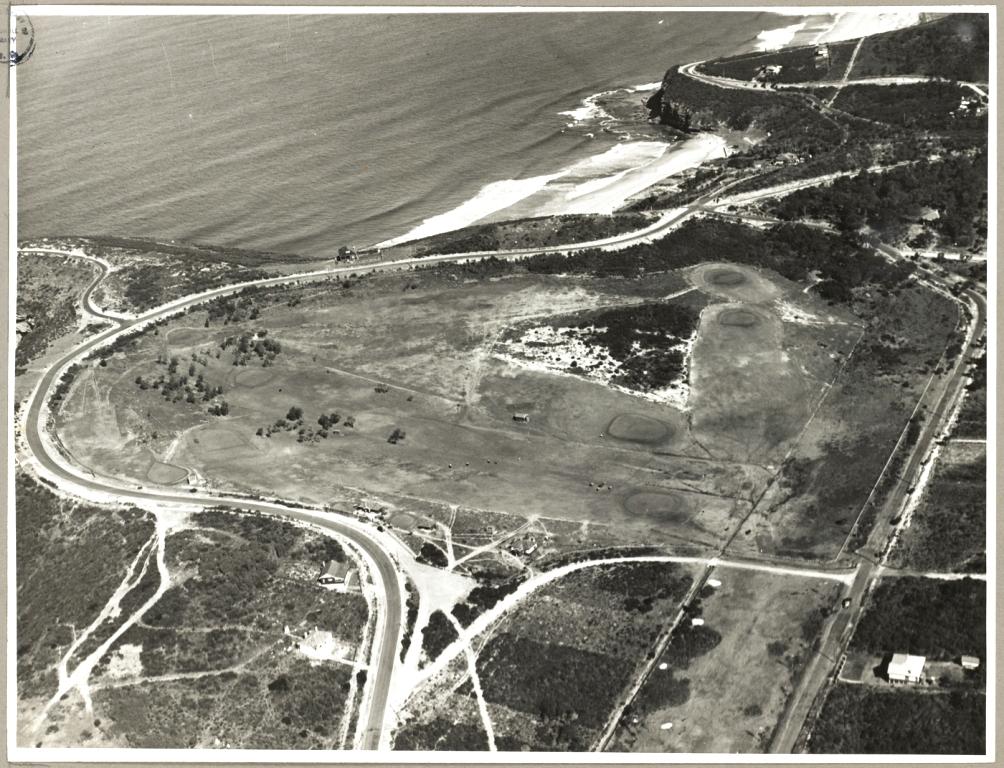
Mr. Souter designed the second nine holes for Roseville Golf Club in 1925, a further nine holes for Long Reef Golf Club was completed in 1927, and Soutar then laid out a new 18 hole course for Armidale Golf Club. It is interesting to note that when the Club purchased land for its new home in 1927, an associate member, Miss Mary White, paid Dan’s fee and expenses.
Soutar also undertook a site report for the New South Wales Golf Club in 1925, examining the land at La Perouse and putting forward a report that was most favourable. Oddly, after this, when the New South Wales Golf Club Company Ltd issued their prospectus in March 1926, it featured a course layout that had been prepared by ‘Neg’ Clark and ‘Jas’ Scott. Why Soutar’s design was ignored by the Company is not known.
In 1928 he designed 18 hole courses for Bankstown Golf Club and Wagga Wagga Country Club, as well as the first nine holes for Elanora Country Club. Soutar’s fee for designing and supervising the construction of these nine holes at Elanora was £250, a significant increase over his £25 Kingston Heath fee of some 5 years earlier. The Elanora Country Club's history records that Soutar ‘test-drove’ some of his holes before they were built - a member came upon Dan driving balls from on top of a large rock outcrop at the 9th hole, hitting off a mat down into the scrub-filled valley below. Soutar had some local lads attaching red flags to saplings where his balls landed and this rock eventually became the medal tee of today’s 9th hole.
Some insights into Elanora Country Club from the pages of the past:
THE COUNTRY CLUB PROPOSAL
Elanora Lookout
The proposal for the establishment on Elanora Heights, to the north of Lake Narrabeen, of a country club is carried a stage further by the announcement of Land Properties and Investments, Ltd., the company which owns the Elanora Estate of 518 acres, that it is taking into consideration the reservation of 200 acres for the purr pose, with a view of immediate action. The directors, incidentally, are members . of the Rose Bay and other golf clubs — Messrs. W. A. Freeman (a director of the Austral-Malay Tin Group), James Crockett (chairman of directors of James Crockett and Co., Ltd.), Colonel Eric Campbell (of Messrs. Campbell and Campbell, solicitors), and Colonel T. A. J. Playfair (chairman of directors of Thomas Playfair, Ltd.). The company's nominal capital is £500000, the purposes being to engage in the business of buyers and sellers of land and property, and to act as an investment trust and finance concern. The acquiring of the Elanora Estate is the first move. The price of the 518 acres, which allows of disposal of land for home sites and for a country club, also, , was £ 70,000, and an option of the purchase of 30,000 shares at par. The net profit, after allowing, for cost of roading, disposal, and other expenses, is estimated at £130,000. The actual site proposed for the country club is known as Elanora Lookout, from which, it is claimed, the view is in many respects unique. Mr. D. G. Soutar, the golf expert, has reported that the soil and situation are ideal for golf courses and other club grounds, and that these could be laid out economically within 18 months from the start of operations. THE COUNTRY CLUB PROPOSAL (1927, June 26). The Daily Telegraph (Sydney, NSW : 1883 - 1930), p. 3. Retrieved from http://nla.gov.au/nla.news-article247373545
BEAUTIFUL ELANORA HEIGHTS AT NARRABEEN
During the week a representative of the 'Sunday Times' was afforded the opportunity of seeing the beautiful Elanora Heights Estate, at Narrabeen. There can be little doubt that there is no other, land so ideally situated, within reasonable access of Sydney, which is so desirable.
The property has been purchased by Land Properties and Investments, Ltd. It consists of 518 acres of land, Torrens Title, and commands delightful views of the ocean and the lake. The company is offering £100,000 shares to the public, with a security of land valued to produce, on subdivision, £300.000.Here are some reasons why you should buy shares in Land Properties and Investments Ltd :
1. No promoters' shares have been or will be issued, and no cash paid to intermediary parties.
2. The company is already registered, and 25, 000 shares were underwritten before the prospectus was issued.
3. The company is already the possessor of a valuable property of 518 acres of land, Torrens Title, known as the Elanora Heights Estate. This was purchased for £70.000. and is independently valued to yield a net return of approximately £130,000.
4. The strength of the directorate lends increased value to the proposition. Not only does the value of the present property represent to the shareholder a tangible asset — land valued to return £230 for every £100 invested — but assurance is thus given that this first operation will be followed by other profitable operations, in all of which shareholders will benefit.
5. Each of the Directors has recently doubled his share holdings.'
6. A conservative estimate shows a net profit of at least £130,000.
7. On the property will be situated Sydney's first Country Club.
Mr. E. L. Walter, organising underwriter, will gladly give full particulars of this remarkably attractive investment to any reader of the 'Sunday Times' who calls at the office, National Mutual Building, 350 George street. If you live in the country, write for full descriptive literature of the Elanora Heights Estate. There is money in land such as this is. BEAUTIFUL ELANORA HEIGHTS AT NARRABEEN. (1927, November 27). Sunday Times (Sydney, NSW : 1895 - 1930), p. 10. Retrieved from http://nla.gov.au/nla.news-article128519218
One of the Directors of the above named Land Properties and Investments, Ltd was Thomas Alfred John Playfair (1890-1966), a committee-member of the Royal Sydney Golf Club, keen golfer, excellent horseman, who led the formation of the above proposed Elanora Country Club and was president 1928-65.
ELANORA LINKS
Still another golf links will soon be ready for play, this time the course is being laid out near Narrabeen for the Elanora Country Club. The 18 holes now under construction have been designed by D. G. Soutar, in consultation with W. R. Bertram, secretary of the Rose Bay Golf Club, and of these it is hoped to have 9 ready in April. The links will eventually consist of two courses, one of 18 holes for men, and the other of nine holes for women. The terrain is natural golf country. The nine hole course for women will be entirely outside of the 18-hole course area. A feature of the course will be the number of two-way holes – holes on which there will be one way for ‘duffers’ and another for the more skilled player. The links will eventually be within 35 minutes of the city, and, being from 350 to 500 feet above sea level, command magnificent panoramic views of sea and land. ELANORA LINKS. (1928, November 2). The Sydney Morning Herald (NSW : 1842 - 1954), p. 18. Retrieved from http://nla.gov.au/nla.news-article16506195
ELANORA GOLF CLUB
First Nine Holes Ready at Easter
The first nine holes of the Elanora Country Club's course, near Narrabeen, will be ready for play next April. That announcement was made by the committee of the club yesterday, when an inspection of the links, which have been under construction since June, was made. The course has been designed by D. G. Soutar, and is being constructed by R. G. Black. "Kersaint," a property on the boundary of the course, will be used as a temporary club-house, until the proposed club-house is erected. ELANORA GOLF CLUB (1928, November 2). The Daily Telegraph (Sydney, NSW : 1883 - 1930), p. 29. Retrieved from http://nla.gov.au/nla.news-article248042203
GOLF
AT ELANORA NEW COUNTRY CLUB ITS POSSIBILTIES
BY 'BRAMBLE'
THOUGH I had been told that what I should see on the course now being constructed for the Elanora Country Club, about two miles north of Narrabeen, would surprise me, that term was a mild one. I was astounded at the work which had been done, and at the wonderful potentialities of the links.
In the first place, no one who had not been over the course, could believe that such a large tract of splendid golfing country could be situated where It Is, In the midst of rocky bluffs, but there it is, and enough of It for a course or championship lengths, 6500 yards, and a nine holes course for women. And it must be almost unique in being a 'seaside course'— barely two miles from the surf— which varies from 320 to 500 feet above sea level. Incidentally there are glorious view, either of the ocean or of Narrabeen Lakes, which, but for the difference in the timber, might be Scottish lochs. The links have those gentle undulations one looks for in the best courses, and the soil could not be bettered. It Is almost all a black sand, rich in humus, with a fair amount of lighter sand which 'works up' splendidly, and the couch planted, in spite of a remarkably cold October, is coming along wonderfully on those fairways which have been harrowed.
GOOD WATER SUPPLY
Pipe lines convey a permanent water supply in oil fairways and greens, the source betas a rippling creek which, springing apparently from nowhere, keeps running in the driest weather and cascades over the rocks in miniature waterfalls. The possibilities Indeed for making the course and Its Immediate surroundings a notable beauty spot are very apparent As It is the views are remarkable. One can Indeed plainly see on a clear day as far as Broken Bay, and pick out distinctly the water tower at Waverley.
'BEST IN AUSTRALIA'
D G Soutar, who designed the links, thinks they will ultimately become the best in Australia, and I do not think he is over-optimistic. The work is being supervised by R. G. Black, formerly green-keeper to Royal Queensland, who knows what Is what, and, headed by the president, Lieut.-Colonel Playfair, the committee nan thrown themselves heart and soul into the project. They comprise Messrs. B. Burdekin, D. S. Evans., L. Keith Harrison. J. Crockett, A. S. Norris. J. H. T. McMurtrie. B. V. Russell, and Dr. R. I. Furber. What they have achieved so far is remarkable, for only starting in June, already holes 10 to 18 have been ploughed and planted, and 1 to 9 have been cleared. Nine holes should be ready for play by Easter, and the whole course six months later.
TEMPORARY ARRANGEMENTS
A lease of a commodious old home, 'Kersaint,' has been acquired for five years, and this will be the club house until a permanent one is built. There are at least two excellent sites for the latter. from either of this connection. If, or rather when, for it looks a certainly, matches of championship calibre arc played at Elanora, spectators will find many coigns of vantage from which the play can be followed over almost the wools of the course. When a road projected from Condamine-street is built, the club will be accessible inside 40 minutes from the metropolis. There Is a lot more to say about the Elanora Country Club, but It must keep for the present GOLF (1928, November 3). Evening News (Sydney, NSW : 1869 - 1931), p. 2. Retrieved from http://nla.gov.au/nla.news-article117466772
ELANORA GOLF LINKS
At the invitation of the Elanora Country Club committee, Kirkwood, who is returning to America today, and about a dozen of the leading Sydney professionals, had a look over the new course near Narrabeen yesterday. It was a revelation to them. "Ideal golfing country," was the unanimous comment of all the professionals. ELANORA GOLF LINKS (1928, December 8). The Daily Telegraph (Sydney, NSW : 1883 - 1930), p. 34. Retrieved from http://nla.gov.au/nla.news-article246828555
The Official opening took place in May, 1929:
ELANORA COUNTRY CLUB.
The official opening of the first nine holes of the Elanora Country Club golf links, at Elanora Heights, Narrabeen, and of the club's temporary club-house, will take place on Wednesday, May 29, at 2 p.m. The ceremony will be performed by the president (Colonel Playfair).
To mark the occasion a nine-hole stroke competition, open to members and visitors, will be played for the Elanora Cup. The cup has been donated by Mr. W. A. Freeman, and will be played for annually, on the anniversary of the opening of the club. The cup will remain the property of the club, a replica being given to the winner. The well-known Killara player I. K. Harrison has been appointed the first captain of the club. ELANORA COUNTRY CLUB. (1929, May 22). The Sydney Morning Herald (NSW : 1842 - 1954), p. 20. Retrieved from http://nla.gov.au/nla.news-article16558704
NEW ELANORA GOLF LINKS OPENED AT NARRABEEN
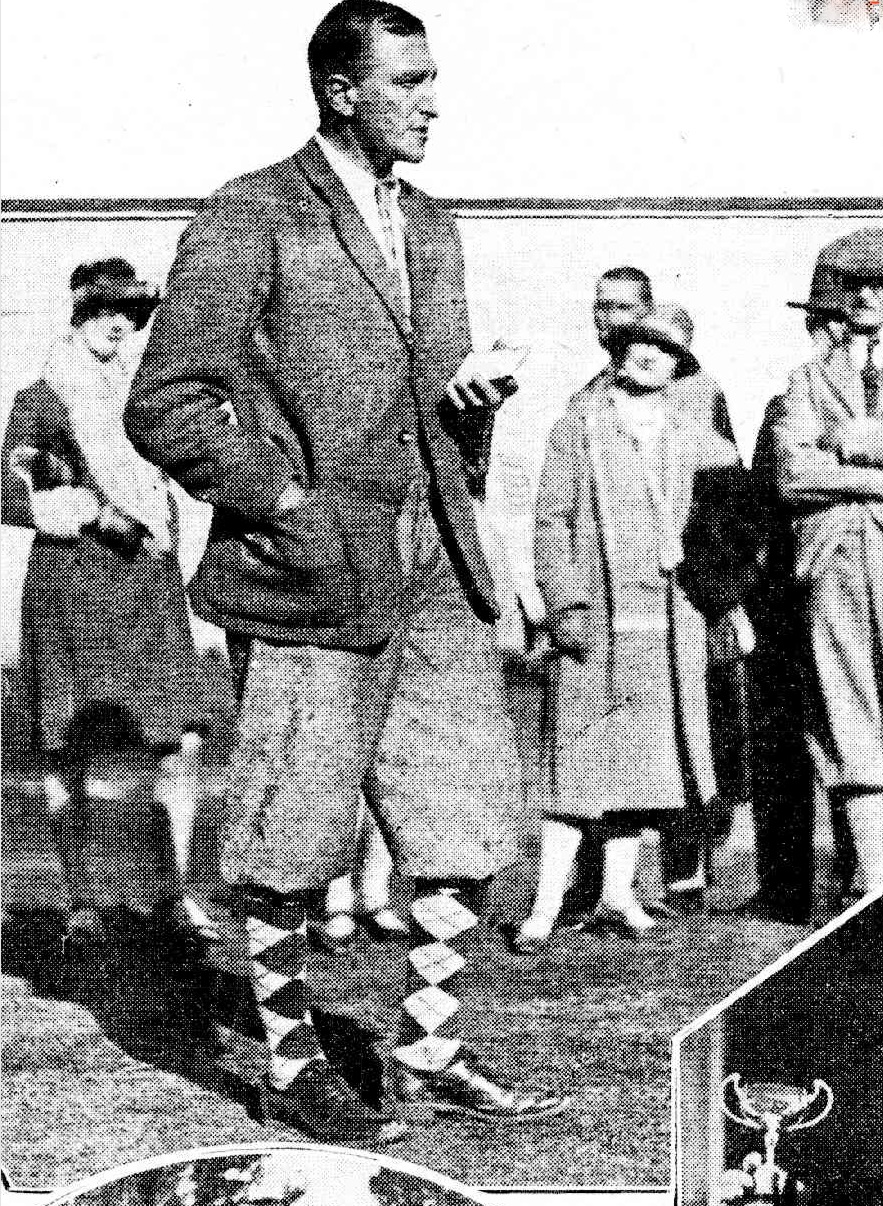
MR. PLAYFAIR, president of the new Elanora links, addressing golfers at yesterday's opening.
.jpg?timestamp=1574893971887)
KEEPING an eye on it, at Elanora yesterday. F. J. Thorn, a "Waratah”, competing.
.jpg?timestamp=1574894010115)
MRS. PLAYFAIR presented the Cups at the opening of the Elanora links yesterday and (left) duckboards. A PUZZLE FOR THE stranger, and Sir William Vickers has his doubts, watching the ball from the first tee at the new Elanora links yesterday.
.jpg?timestamp=1574894044715)
NEW ELANORA GOLF LINKS OPENED AT NARRABEEN (1929, May 30). The Daily Telegraph (Sydney, NSW : 1883 - 1930), p. 32. Retrieved from http://nla.gov.au/nla.news-article245646409
THERE is no doubt about the organising ability of the people behind the Elanora country club venture, near Narrabeen. Twelve months ago the place was all scrub. Last week a competition was held on nine well turfed holes of the course. The club already has a license, and a dilapidated old building, which formerly was an asylum for the insane, was converted in a few weeks into a comfortable, tasteful temporary club house. And on the opening day most of the leading golfers, numbers of the city's most distinguished men, two Ministers of the Crown, golfers from nearly every club — a crowd numbering some hundreds — were Inveigled out to the lofty heights of Elanora. That, in itself, shows what great organisers the Elanora people are.
SEEING dozens of motor cars around the Elanora club house, and crowds of people about, a local resident passing along the road was heard to say to a companion, "Hullo, what's on here?" "Must be going to open the asylum again," was the reply.
R. S. BLACK, green-keeper of the Elanora Country Club, has pinned his faith to "creeping vent" to grass the course. "Couch grass greens are no good," says he. Results obtained speak for themselves. NO LIMIT TO A GOLF BALL'S WICKEDNESS (1929, June 8). Smith's Weekly (Sydney, NSW : 1919 - 1950), p. 6. Retrieved from http://nla.gov.au/nla.news-article234417340
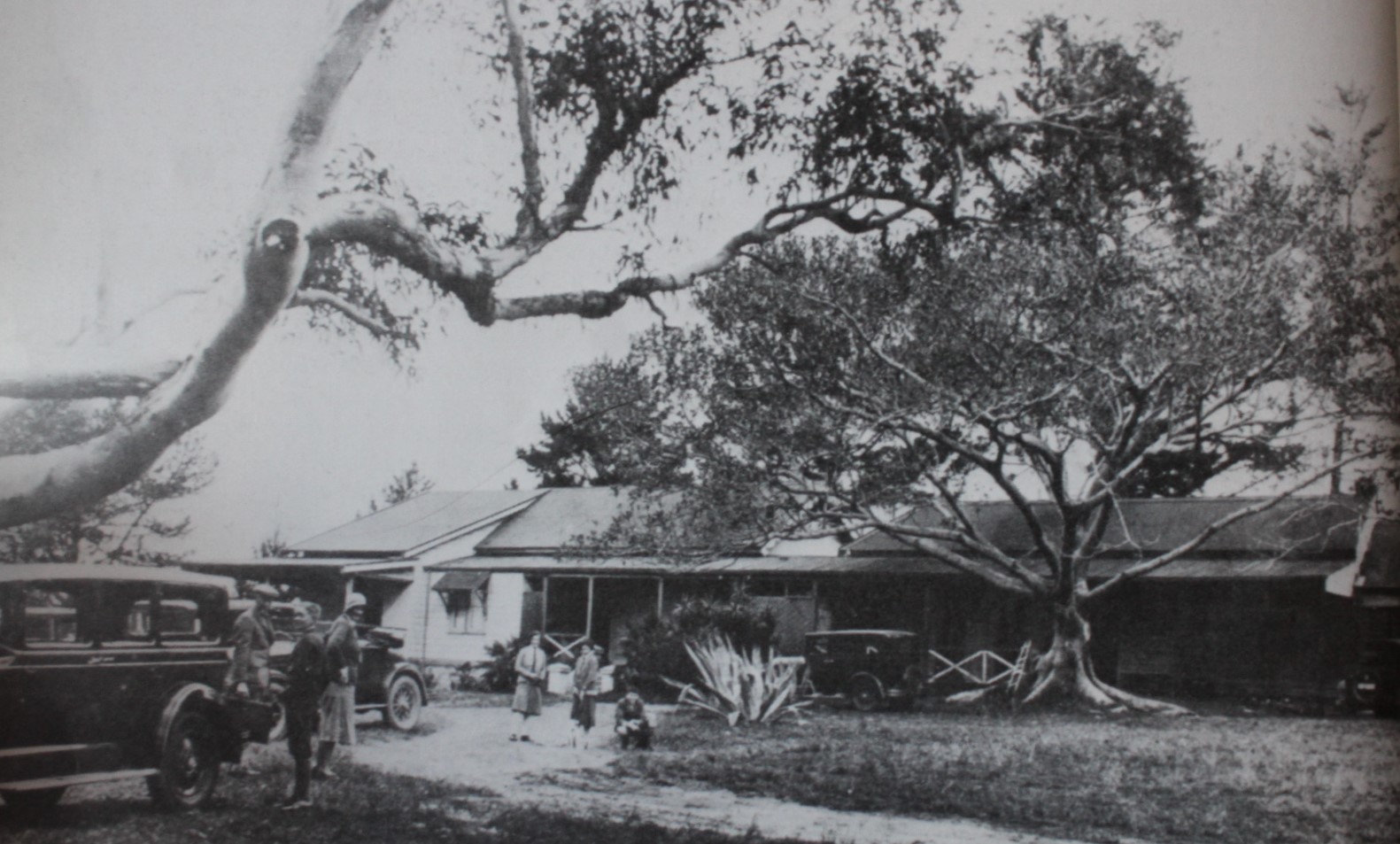

Fairfax Corporation. (1930). Golfers Walter Hagen and Mr. Kirkwood, New South Wales, ca. 1930 Retrieved from http://nla.gov.au/nla.obj-162636374
SURPRISE RESULT AT ELANORA
DAN SOUTAR AND BETTINGTON Head Big Field
HAVING finished 7 up in the open amateur and professional four-ball-best-ball-against-par competition at at Elanora (N.S.W.), Jim Ferrier and Sam Richardson, and Tom McKay and W. Mackenzie were preparing to play off the tie, and Richardson was actually at the top of his swing on the first tee, when someone cried out, 'Hey, there's a bettr card in !'
AND It was so. The Dan Soutar-R. H. Bettington combination were 8 up. They played fine golf all day and fitted in well, an essential to success In this style of competition. For each to.-, win the same hole is wasted effort. They, were 3 up in the morning round and 6 up in the afternoon. Ferrier and Richardson had rounds of 3 up and 4 up, and McKay and Mackenzie were 4 up, and 3 up. Others to shape 'well were : Keith Harrison and W. J. Clark (2 up and 3 up), G. Thompson and W. Bolger (2 up and 3 up), and C. C. Ruwald and C. Gray (2 up and 3 up). McKay and Mackenzie missed a golden chance of winning. They were .8 up with only two holes to play, but they lost one of them and succeeded only in squaring the other. ' McKay was in fine form and had a pair of 71's, an achievement ' equalled by Ferrler. Richardson also had a 71, but the best 18 holes performance was that of Charlie Gray, the North Brighton - professional, who had a round of 68, three strokes under par.
After lunch Soutar and Bettington had a great run. After winning the first hole and losing the second, they reeled off 4, 4, 3, 2, 3, thus winning four of five holes In succession. Over the 18-holes in their best ball was 65. Ferrier and Richardson had a best ball in: the morning of 68, and 66. In the afternoon McKay and Mackenzie had 67 and 68. SURPRISE RESULT AT ELANORA (1932, May 11). Referee (Sydney, NSW : 1886 - 1939), p. 20. Retrieved from http://nla.gov.au/nla.news-article135331707
The Elanora (N.S.W.) Country Club has probably the finest greens of any course in the vicinity of Sydney. A year or so ago the course was virgin bush. Much remains, of course, to be done, but at any rate the greens already are as near perfect as golf greens can be. The greenkeeper, Mr. Black, is an expert in these matters, and he has the valuable aid of secretary Major Tenbosch, who has also made a study of the troubles golf courses are heir to. Elanora demonstrates that creeping bent will do well on high lands as well, as low, but a plentiful application of water is essential. Indeed, on any kind of ground creeping bent is very thirsty. Fairways, recently top-dressed, have responded with an extraordinary growth of grass. SYDNEY'S GOLF COURSES (1932, June 8). Referee (Sydney, NSW : 1886 - 1939), p. 20. Retrieved from http://nla.gov.au/nla.news-article135336128
PICTURESQUE GOLF LINKS.
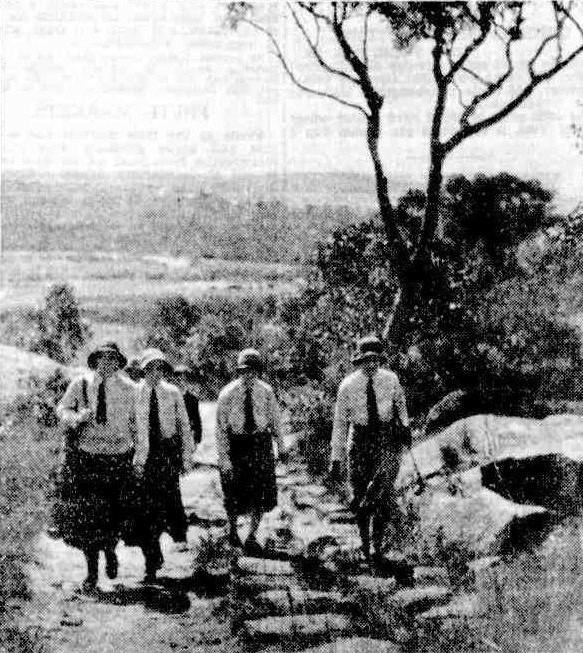
Women players climbing the hill to the fourth tee at the Elanora golf links. PICTURESQUE GOLF LINKS. (1932, September 15). The Sydney Morning Herald (NSW : 1842 - 1954), p. 12. Retrieved from http://nla.gov.au/nla.news-article16891967
AUSTRALIA'S MOST BEAUTIFUL COURSE
ELANORA COUNTRY CLUB
THE REFEREE' Commissioner is doing a round of the Sydney golf courses to report upon their architecture and condition. Killara course will form the subject of next week's article.
WHENEVER putting greens are discussed in N.S. Wales, they are invariably compared more or less favorably with those at Elanora. The greens at this beautiful country club have become the standard of comparison in this State, and a model which other clubs should strive to copy. Elanora is situated on the plateau which rises abruptly 100ft above the seaside resort of Narrabeen. By reason of ' its altitude, the course commands an uninterrupted view of many miles of magnificent coastline, the beauty of which is enhanced by the rugged country lying either side. To the south the tranquil waters of Narrabeen lagoon reflect the well wooded hills which surround it with mirror-like clarity. There is no more beautiful course in Australia, and visitors from abroad are all of the opinion that it compares very well with any in the world.
Elanora was made with great difficulty and expense. Thick scrub and hardy wild flowers were the only forms of plant life which the inhospitable soil would support. Rocky crags, jutting out in a most forbidding manner, offered resistance to those who blazed the course: The result of the effort, however, is amazing, for in a few years an interesting and beautiful golf links sprang from that unpromising terrain. Not long ago a visitor had to be taken to Elanora by main force; now a long waiting list bears witness to the club's deserving popularity.
SUPERIOR FAIRWAYS
The soil is the poor Hawkesbury sandstone series with a binding of pipe clay, surely not a very hopeful prospect for good fairways and greens. But it. has one peculiar feature which was shown by an analysis. It is very acid. Although the fairways were originally sown with couch and .bent, the acidity of the soil has promoted the growth of the bent and retarded that of the couch. Bent is now the dominant grass of the fairways, giving them an entirely different character from those of any other metropolitan course. The ball lies close, but the texture of the grass is so fine that there is no difficulty in getting it up. The club cuts through without effort and brassy shots can be played from very thick lies without the player having consciously to dig for the ball. Many thousands of sods of Queensland blue couch have been planted to lend more body lo the bent.
One has little hesitation in saying that, although the fairways are not cut frequently enough they are superior to those of most Sydney courses. The Elanora committee would never have any trouble in making a temporary green. Any part of the bent fairways if cut close, would provide a splendid putting surface. The greens are superb. They are more nearly perfect than the greens at metropolitan and other first-rate Victorian courses. They were planted originally with couch and immediately sown with New Zealand bent, agrostis tenuis, and Chewing's fescue. The acid nature of the soil discouraged the couch, which is not now to be seen. Indeed, the greens are thought to be composed entirely of bent, but the fescue is still well through them. This fact is disguised because the fescue and bent have not segregated themselves as they are reputed to do In the northern hemisphere. The flag of the bent is uniformly fine and consistently vertical. This desirable feature is due to the fact that the power mower was discarded some years ago in favor of the hand machine, and also that the nap is whipped up before the greens are cut.
The committee would be well advised during the winter months, to have the dew removed from the greens before the ever-growing Sunday traffic kills the fine grass around the hole.
From the time they were first put down Elanora greens have been frequently treated with very light topdressings of a humus-carrying good tentured loam, and fertilised with light dressings of sulphate 'of ammonia, separate, and mixed with sulphate of iron. The greens encourage good bold putting. There is never any question about the ball holding the line. If truly struck it will hold its line until it finally comes to rest. Lack of speed will not cause a putt to lose direction at Elanora. Again, the holding nature of the grass gives the player the comforting thought that if ho docs give his putt a go, it will not run far past the hole, should ho miss it at the first attempt.
Golfers from other courses are quite at a loss when trying to convey to others the great length of the putts they holed on the way round. Although Elanora deprives one of the excuse that 'the greens were bad,' this unfortunate state of affairs is practically nullified by the pleasure derived from putting.
Great attention has been paid to the drainage, and quite recently more pipes have been laid in several greens. Construction work on this course, under the general control of Mr. John Symonds, the captain of the club, has been all that one would expect from such a skilled engineer. Every weekend members notice an improvement here, an improvement there, and realise that Mr. Symonds and his right-hand man, Scott, the professional at Elanora, have not been idle.
Many lessons can be learnt from the development of this course. Elanora's weakest point is its bunkering. Most of the greens, although beautifully shaped, are wide open. Only one hole on the course could be truthfully called well bunkered; that is the new 10th. No doubt the committee have been postponing bunkering until the fairways are well grassed. This has been achieved and traps for the unwary are now overdue. When bunkers are constructed, it is to be hoped that they will not be anything like those at the back of the first green.
The holes requiring immediate bunkering are the first, fourth, 11th, 12th, 15th, and 18th. At these holes a good putter can get away with any kind of a second shot, a state which is not quite in accord with modern golf architecture. The ninth hole would be improved by tho addition of a small protecting bunker at the back of the green to catch a bold second, and prevent it rolling down the steep bank to a horrible lie at the bottom. At present the ninth encourages a weak second, as it is far better to be short than too far.
Elanora possesses a splendid variety of holes. Careful exploitation of the natural features of the terrain has endowed each hole with particular interest, the majority of which require careful placing of the drive. The two weak holes, the eighth and ninth, are about to be altered, and both' will soon be parred at five. The construction of tho new eighth green is most commendable, the shape requiring accurate placement of the second shot before the player has a chance of a birdie four. Alterations to the 11th and 18th are mooted, but probably the work, which will be considerable, will not be commenced until after this season. The idea of making the 18th into a dogleg by tucking it away to the left of its present position, is good, as it overcomes the glare from the setting sun, and also increases greatly the interest of the hole.
A SPORTING HOLE
At present there is only one diagonal hazard on the course, creating a twoway hole. This is the creek running diagonally to the short par four, 15th hole. The feature is a good one, the short player being compelled to play to the right and then chip in, the long hitter being free to take the direct line to the pin. Absence of two-way holes is unfortunate, and every effort should be made to introduce them. There is a great opportunity to do this when altering the 13th for play from the back tee, and also when putting down the new 18th.
The committee is making big efforts to beautify the course. The lily will not be glided aimlessly, but flowering shrubs and trees will be planted so as to give distinct arboreal character to each hole. For instance, oleanders will grow between the eighth and ninth, red flowering gums will be a feature near the 17th, while cypressus of several varieties will give an individual and striking character to the space between the fourth and 12th fairways. In addition to the trees which have been introduced, the native flora, forming a tigerish rough, is remarkably diverse and beautiful. The scrub is full of boronias, wattles, she-oaks, native fuchsias, geebungs, and Christmas bells. The bold masses of glistening black rock, making the natural contours of the land stand out in relief, the glorious views of ocean, lake, and headland make Elanora the most beautiful course in Australia.
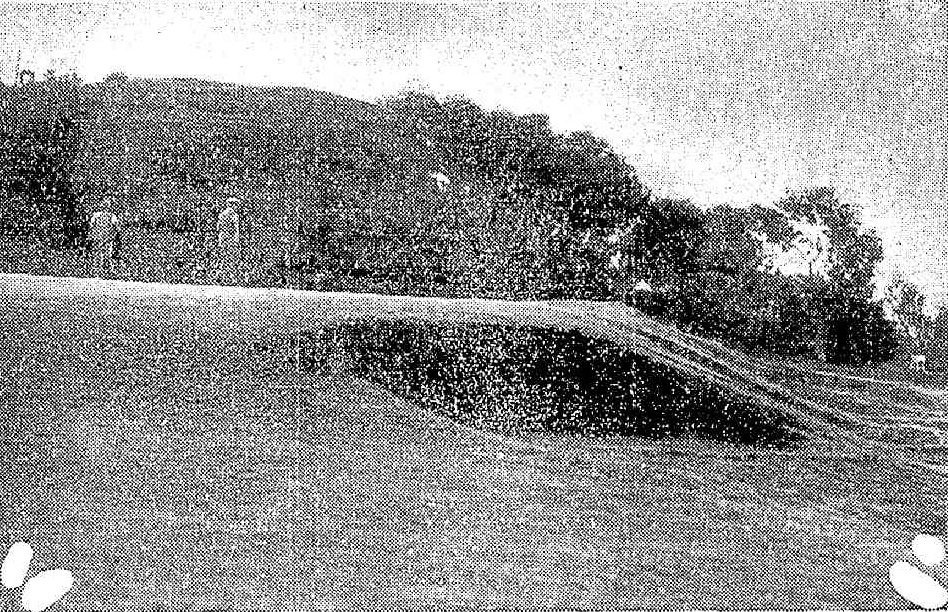
Bold Putting. The 13th hole at Elanora, showing the nest of bunkers on the right and the brooding rock at the back of the green. From the crevices of this rock grow ferns and wild flowers in profusion. Above the rock is the third tee. AUSTRALIA'S MOST BEAUTIFUL COURSE (1934, May 24). Referee (Sydney, NSW : 1886 - 1939), p. 22. Retrieved from http://nla.gov.au/nla.news-article136114478
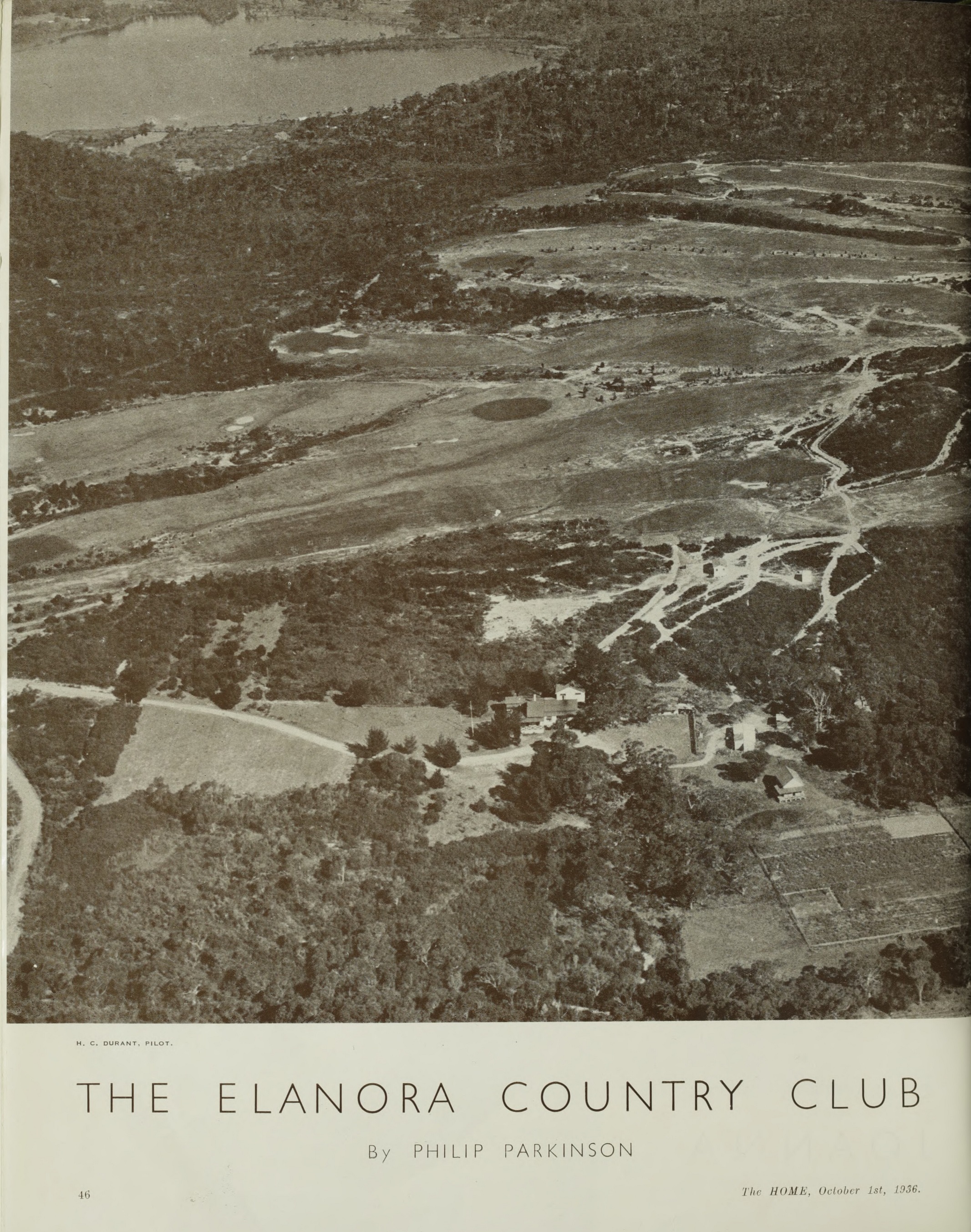
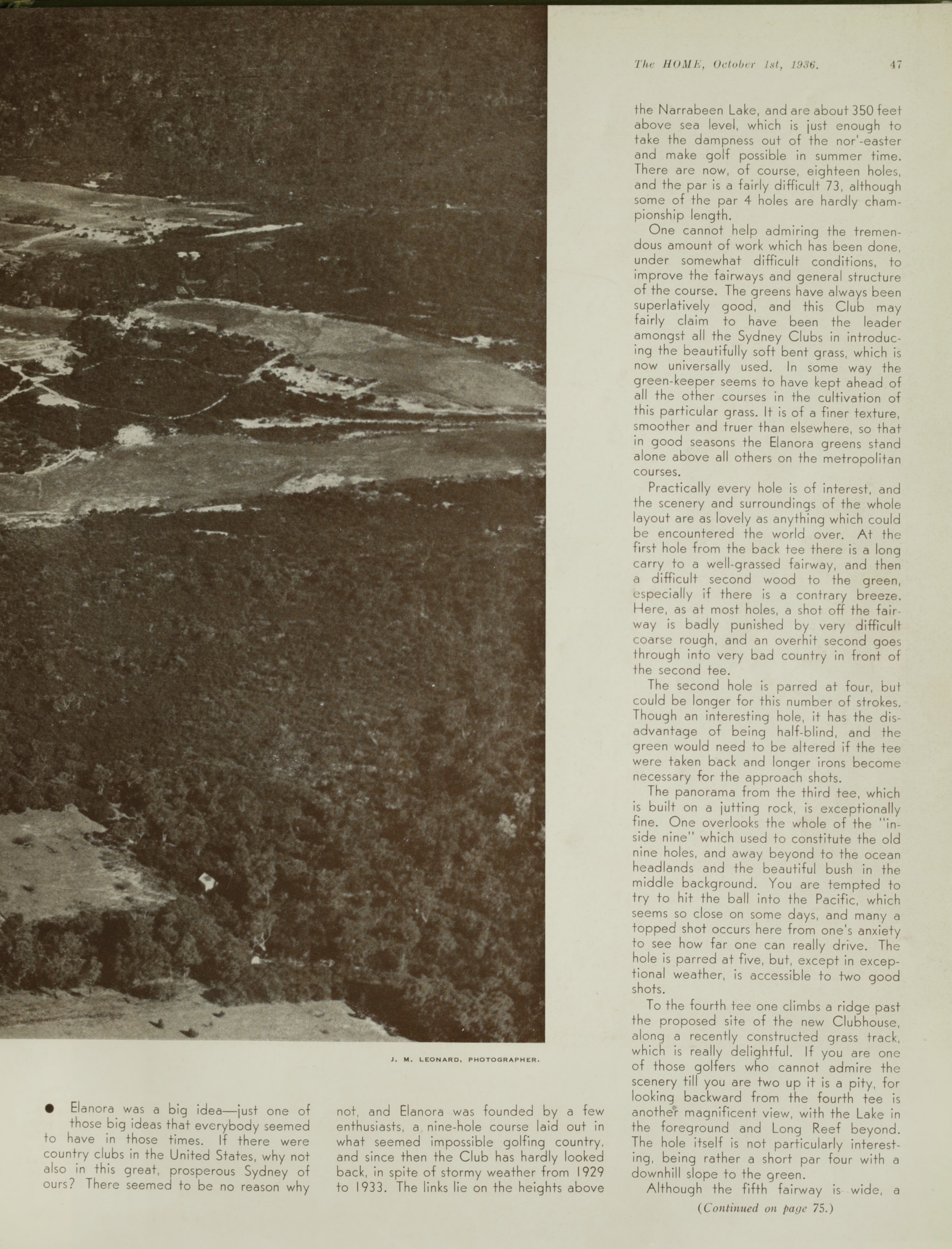
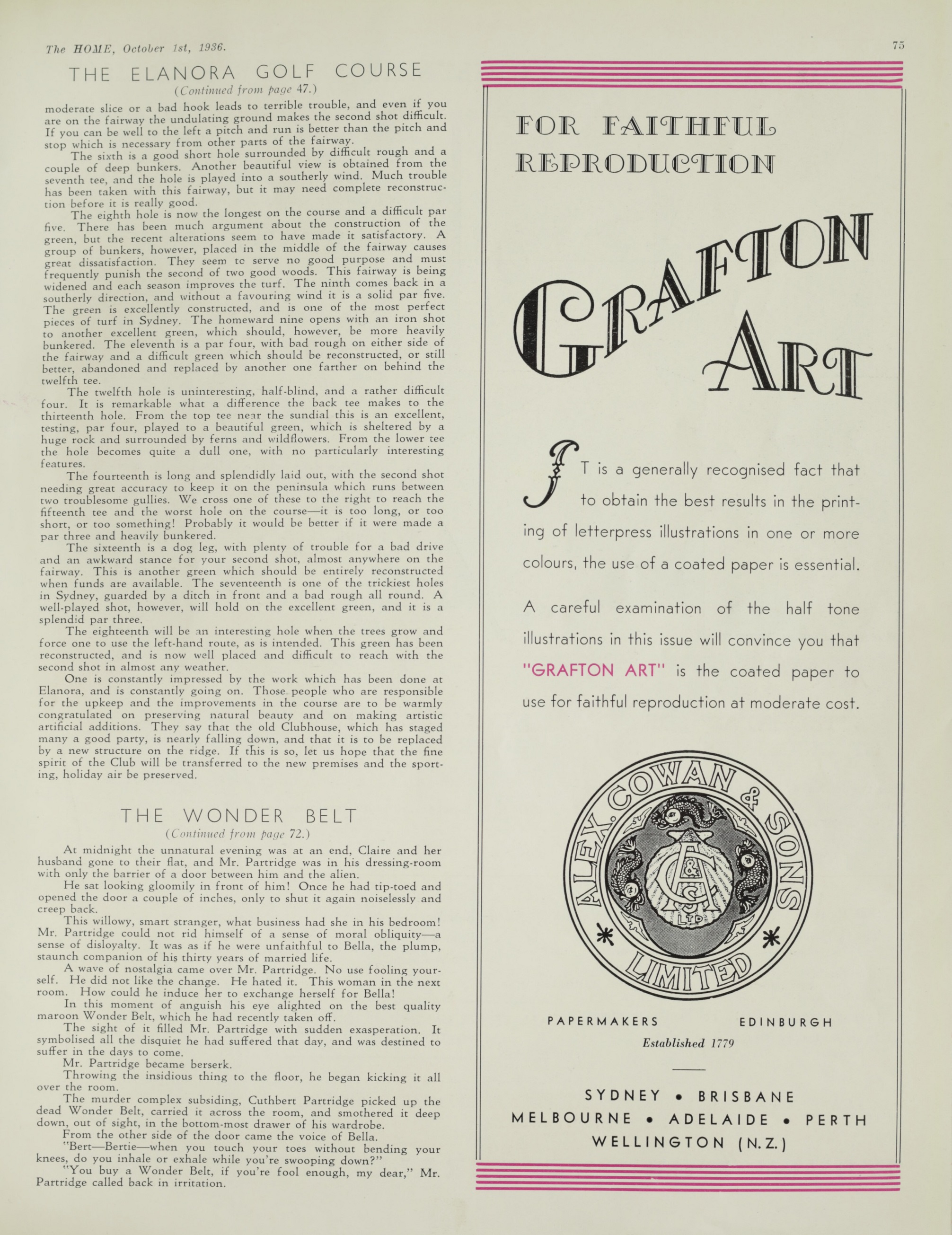
Elanora Golf Links - The Home, October 1st, 1936 pages 46, 47 and 75: (1920). The Home : an Australian quarterly Retrieved from http://nla.gov.au/nla.obj-386323299
Carr Clicks in One at Bayview
TONY CARR, the 16-year-old son of Mr. Carr, Killara committeeman, and brother of 'Slip', holed the 9th at Bayview in one yesterday. The Carr family do do the difficult things.
ELANORA— Keith Harrison Memorial Cup, for Professionals and Amateurs' H. W Hatterslcy and W. Mackenzie. 3 up. b up— 8 up; C. S. Healy and L. Kelly. 1 up. 5 up— 6 up; P S Arnott. and J. D. Spence. 2 up. 4 up—6 up; W Hawe and C. Gray 2 up 3 up 5 up C. C. Ruwald and W. Clark, 3 up, square — 3 up; A. W Fairfax and V. 6 Richardson, 2 up, 1 up— 3 up; A. W. Mayo and C. Booth, 3 up, sguare — 3 up; J. T Doyle and E. Bolger. 2 up, square— 2 up; Q. Thomson and A. Thomson, square, 2 up— 2 up; R. H. Bettlnglon and F. Bolger, 1 down, 2 up— 1 up; A. H. O'Connor and O. McDonald,2 up. 2 down — square; J. O. Gouldtng and A. Downes, 1 down, 1 up — square; B. P. A. Stuart and J. Fitzgerald, 1 down, square—1 down; G Soutar and D. G. Soutar, square, 1 down— 1 down; J McLuckle and F. Popplewell. 1 down, square— 1 down; P. S. Jones and L. Chaplin, 4 down. 2 up— 2 down; W. Welch and F. Eyre, 3 down, 1 up — 2 down: B. Esdaile and W. Thomson, square. 3 down. Carr Clicks in One at Bayview (1936, August 30). Truth (Sydney, NSW : 1894 - 1954), p. 7. Retrieved from http://nla.gov.au/nla.news-article169584725
Planet Golf states that in the early 2000s, problems with conditioning, drainage and tired greens led the Elanora Country Club to make a major overhaul to its course under the watchful eye of course architect James Wilcher. Beyond rebuilding the greens and bunkers, Wilcher’s only major routing changes were to reverse the 1st and 9th holes, and to build a brand new (and attractive) short par three 17th hole.
This isn't the only green space set aside for those who like golf. Situated on the same 'green hills' and just above the Elanora Golf Club, is the home of the Monash Country Club, on Powderworks road.
The Club, named after Lieutenant General Sir John Monash, one of Australia's greatest soldiers, started out as a Jewish Social Golf Club in 1931. The original members played their events on a number of different golf courses, such as, Ashlar at Blacktown, Bonnie Doon, Kogarah, Moore Park, Eastlakes, New Brighton and St Michael's. At St Michael's a small temporary clubhouse was provided in 1938.
During WWII the Army took over St Michael’s golf course, and because so many of the Monash members were enlisting in the forces it was decided to close down for the duration.
After cessation of hostilities many of the Monash golfers decided they would like to join golf clubs in Sydney but found that they were denied entry solely on the grounds that they were Jewish. A meeting was called to discuss a remedy to this problem and it was decided to build a new golf course where there would be no discrimination on the basis of colour, creed, race or religion.
A company called Monash Holding Limited was formed to find, and buy, a property on which a championship golf course could be built. The money for this venture was raised from the Jewish community of Sydney by the issue of shares in Monash Holdings Limited. Many applicants for shares never thought of this as an investment and most were not golfers. But they saw it as a way to overcome discrimination against Jews or other minorities.
Land was finally found and purchased at Narrabeen Heights, above Elanora Country Club. The construction of the course took place between 1948 and 1952. The first nine holes were opened in 1950. The clubhouse was opened in 1952.
In December 1957 a bush fire completely gutted the Clubhouse, as had happened at Elanora in 1937 and the loss of houses at 'Green Hills' in 1944. The Club was also suffering from one of the worst droughts in history. New plans were drawn up, and a much bigger and more luxurious Clubhouse was built in 1959, and the Club was then raised to Group 1 status by the New South Wales Golf Association.
Since that time various improvements have been made to the Clubhouse, which culminated in the completion of major extensions in February 1992.
To ensure what members had experienced elsewhere and prompted the vouchsafing of access for all for all time, a long-term lease was drawn between the landowner, Monash Holdings Limited and Monash Country Club. The terms of this lease, which has been extended from time to time, set out the basis for the structure and formalised the relationship that the founders saw for the future of the Monash Golf Club. During the terms of the lease the rental for the property was to be a peppercorn rental, sufficient only to cover the administration costs of Monash Holdings Limited. The “quid pro quo” for this low rental was that the members of the General Committee should always contain a majority of Monash Holdings members, elected from the membership by ballot in the normal way. This was designed to ensure that golf will be played on this land for the duration of the lease and, that the qualification for members shall never be based on race, creed, colour or religion, but solely on an individuals self worth, character and good standing.
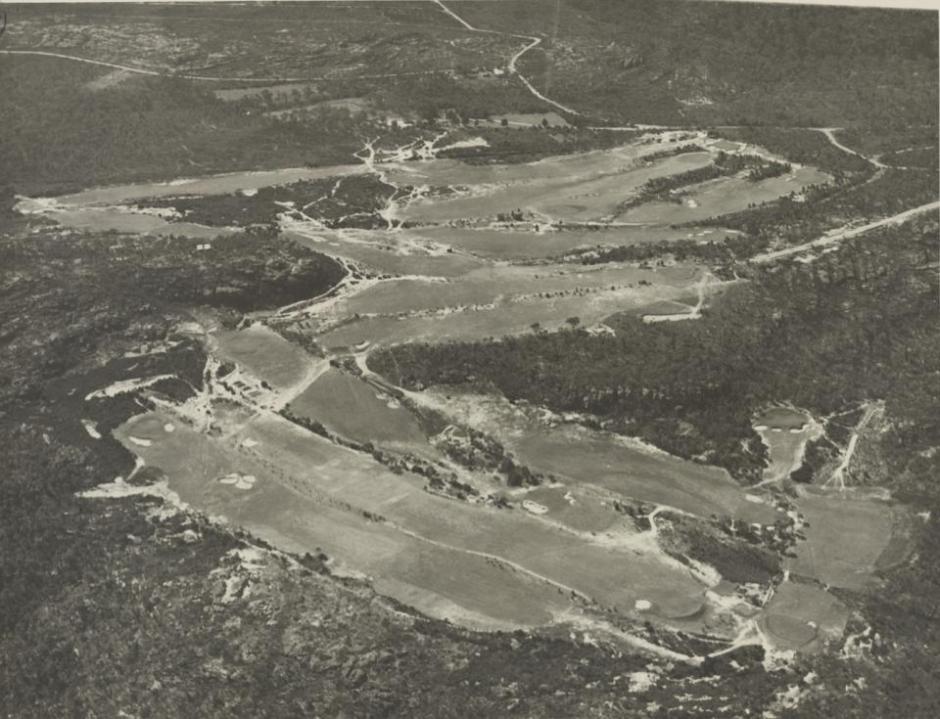
Above and Below: 54 aerial views of Sydney golf courses] / Hall & Co., ca. 193-? [Contents] Numbers 21-22. Ellanora [i.e. Elanora] Images No.: a2802022h and a2802021h courtesy State Library of NSW
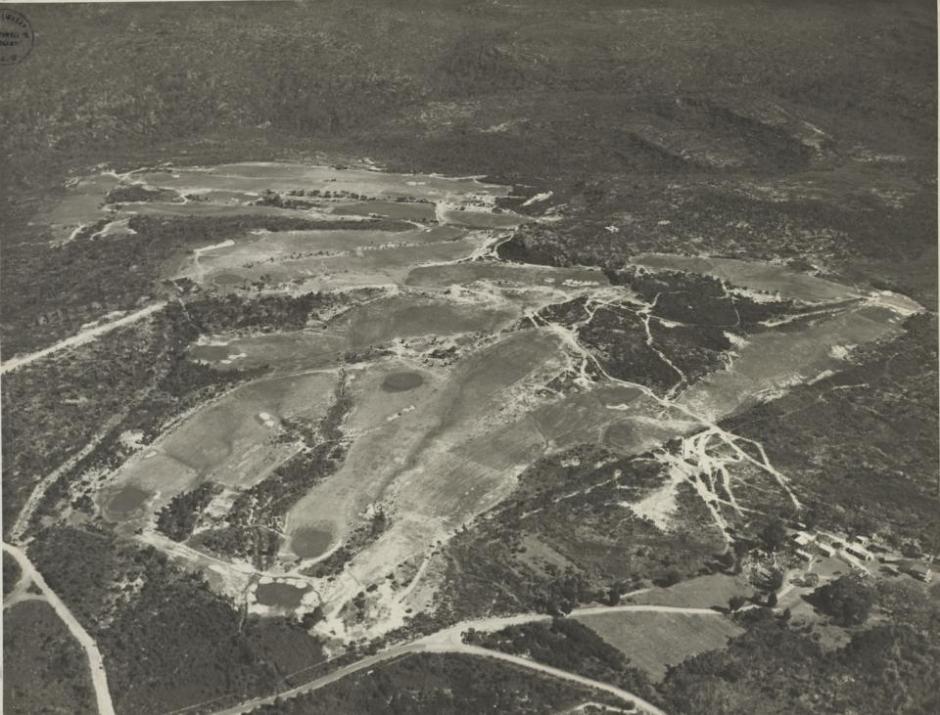
Although the beautiful links at Bayview runs last it was actually the second course laid out in Pittwater and continued to this day.
The first general meeting on newspaper records did not take place until mid 1933, however the originator of this course was hitting small balls around a paddock almost a decade prior to that and club records indicate a 'club' or sorts was formed in 1924 - perhaps months prior to one being formed at Mona Vale in 1925 and around the same time the Avalon Golf Links were being laid out and months prior to those being planned for Elanora in 1927-28.
Around 1920 New Zealand sheep farmer John Orr and his wife Christina (nee Stewart) arrived in Australia and purchased a parcel of land known as the Winnerreremy Swamp in Mona Vale. This was a parcel of 43 and a half acres originally granted to George McIntosh.
Orr ran sheep on the property, and, as he and his wife were golfers, he constructed six holes for their amusement. This was a difficult task amidst swampland, but the Orrs used a punt to drag trees along; mounded dirt up to plant the first fairways; then gradually filled in the rest. One of the main problems was that the tide would bring large amounts of salt water into the swamp twice a day; prompting Orr to design a set of flood gates, which were placed where Pittwater Road crosses Shaw's Creek (now the inlet which crosses the first fairway in front of the green). When the course was built, passers-by enquired as to whether they could play and gradually quite a number of individuals played regularly, and a club was formed in 1926. - Bayview Golf Club, 1998, pp. 11-12; Swancott, n.d., p. 36 - From; http://www.rta.nsw.gov.au/cgi-bin/index.cgi?action=heritage.show&id=4305013
John 'Jack' also 'Jock' Orr (a Scottish surname) was a keen golfer and it was not long before he had built six holes for his own enjoyment - the layout of these was to his own design - or what would work in with filling in land and reclaiming swamp areas. A generous man he asked others to play added more holes and Mrs. Orr entertained with afternoon tea.
A meeting of Pittwater residents took place at the residence of Mrs. Large, Mona Vale, when Mesdames Orr and Quirk, of Manly, acting as a deputation on behalf of the proposed Manly and District Maternity Hospital, gave addresses stressing the need of the hospital. Mrs. Orr pointed out the necessity of a maternity hospital in the thickly populated district, and of the many lives lost which could be saved by prenatal care and education.
A start with the work has been given by Mrs. Saunders, of Collaroy, who has placed her residence, fully equipped as a nursing home, at the disposal of the committee for a period free of cost. Four patients are already in the home, and all beds are booked up. Working centres have been formed at Deewhy, Collaroy, and Newport. At the conclusion of the meeting a Mona Vale committee was formed, to work for the establishment of the hospital. Mrs. Reweck was elected president; Mesdames Austin and Williams, vice-presidents; Mrs. Gardiner, secretary. NEAR AND FAR. (1926, May 26). The Sydney Morning Herald (NSW : 1842 - 1954), p. 8. Retrieved from http://nla.gov.au/nla.news-article16294441
In 1928 a small Clubhouse was built and a tin was nailed to an ironbark tree beside the 1st Tee, an honesty system of 1/- a round was agreed upon. This was the beginning of Bayview Golf Club.
Retired Sheep-breeder Makes Swamp Blossom Into Golf Course
WHEN Mr. John Orr retired from sheep-raising in New Zealand he came to Australia looking for somewhere to settle down and rest. He bought about 60 acres of swamp land at Bayview, Pittwater, and has constructed there a full championship golf course of nine holes. With flood gates to keep the flood tides off, he had the mud flats cleared and the timber grubbed from them. It is estimated that between 15,000 and 20,000 tons of timber, growing and rotting, was removed before the course could be laid. To-day there stand the fairways and greens of modern links, where a few years ago only swamp served as mosquito-breeding ground.
And Mr. Orr's home is a sanctuary for birds, with drinking fountains for the feathered friends.
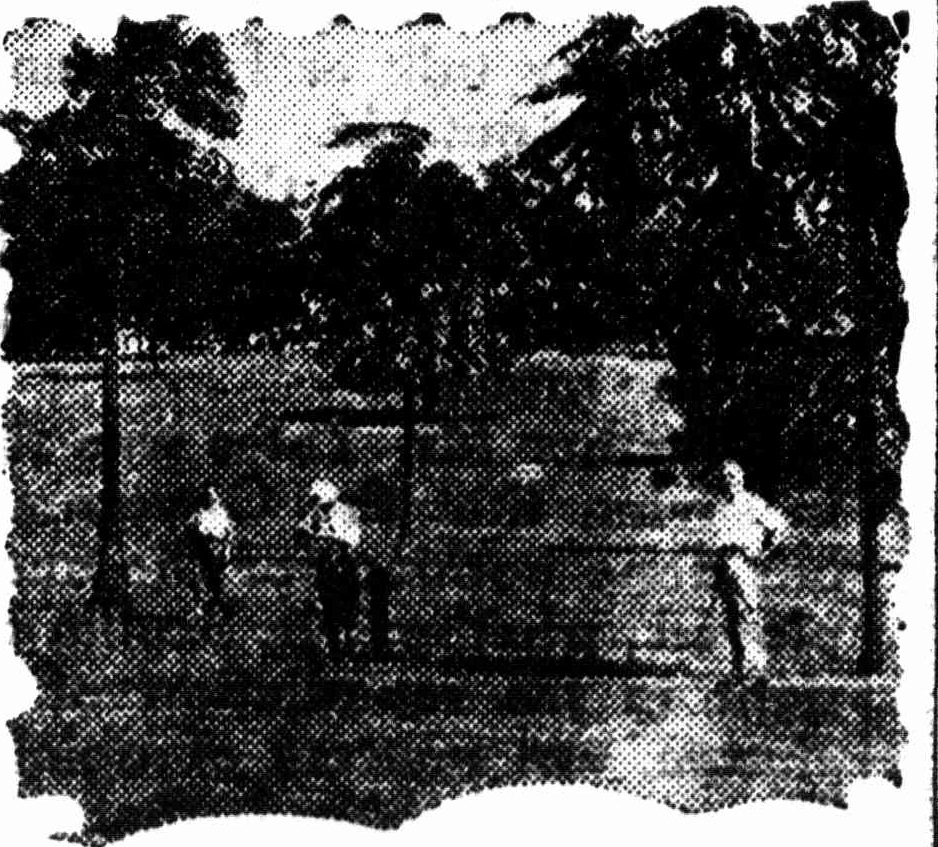
THE TRANSFORMED COURSE.
Retired Sheep-breeder Makes Swamp Blossom Into Golf Course (1930, May 19). Daily Pictorial (Sydney, NSW : 1930 - 1931), p. 5. Retrieved from http://nla.gov.au/nla.news-article246175823
In 1933 a larger Clubhouse was built and in 1933 more land was purchased on the far side of Cabbage Tree Road.
Noel Leahy, architect, reports that the tender of A. Corcoran, builder, Anzac-parade, has been accepted for the golf club house, Bayview, and that plans are being prepared for additions to a residence at Bondi. NEW WORKS. (1933, February 7). The Sydney Morning Herald (NSW : 1842 - 1954), p. 4. Retrieved from http://nla.gov.au/nla.news-article16950854
A clubhouse is being erected by A. Corcoran, under the supervision of Noel Leahy, architect, at the Bay View Golf Links, Mona Vale. The building, which is of face brick, with semi-glaze roof tiles, will provide accommodation for 100 members and 40 associates. NEW WORKS. (1933, April 25). The Sydney Morning Herald(NSW : 1842 - 1954), p. 2. Retrieved from http://nla.gov.au/nla.news-article16961886
The Bayview Country Golf Club will hold its opening dance at the club house on Saturday evening. NEAR AND FAR. (1933, May 31). The Sydney Morning Herald (NSW : 1842 - 1954), p. 5. Retrieved from http://nla.gov.au/nla.news-article16978434
BAYVIEW COUNTRY GOLF CLUB
At the first general meeting of the Bayview Country Golf Club (Mona Vale), the following officers were elected: — Patron, John Orr; president, C. V. Witt; vice-presidents, H. F. W. Fletcher, Dr. A. Dangar Burne, A. N. Bowden, W. Flimmel, Committee: H. Shindler, P. Berry, V. Parkinson. BAYVIEW COUNTRY GOLF CLUB (1933, July 13). The Daily Telegraph (Sydney, NSW : 1931 - 1954), p. 3. Retrieved from http://nla.gov.au/nla.news-article248131655
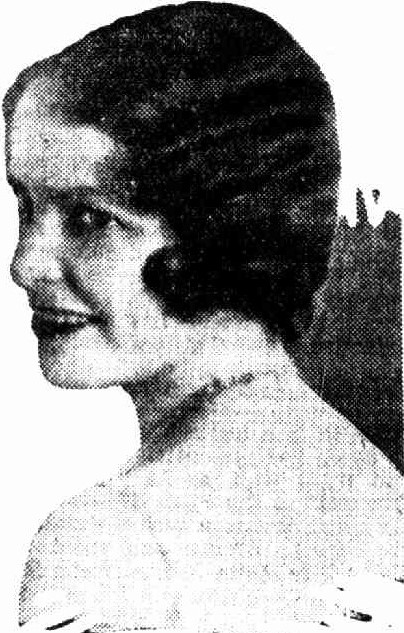
MISS MARY HARRISON, who has been elected first secretary of Bayview Country Golf Club Associates, and will share the duties of hostess at the next monthly "at home," to be held at the Clubhouse next Saturday. No title (1933, August 7). The Daily Telegraph (Sydney, NSW : 1931 - 1954), p. 4. Retrieved from http://nla.gov.au/nla.news-article248128954
From Warringah Shire Council records from their Minutes of Meetings:
46. John Orr, 17/9/33, re Council's requirement that the Bayview Golf Links sign at Mona Vale Park be placed back in its original position or removed altogether, stating the sign has never been removed from its original position, and that if the Council inquires into the matter, it would find there is more in it than meets the eye. Resolved, - That the Works Committee and A. Riding Councillors, in conjunction, fix a place for the sign. 47. Jas. Booth, offering to give a little land at the Bayview Rd.junction of Darley Street and Bayview Road for road widening Darley Str. purposes, the Council to waive some of the rates owing on the property. Referred to the Works Committee for report.
Large bowls of flowers from their own garden decorated the ballroom of the Bayview Country Golf Club on Saturday night, when Mr and Mrs John Orr entertained about 80 of their friends at a dance. An unusual frock of bronze and black ninon was worn by the hostess, whose guests included Mr and Mrs Allan Bowden, Dr and Mrs Belli Mr and Mrs P V Harrison Dr and Mrs Tange, Mr and Mrs H F Fletcher, Mrs J C Bragg, Mr and Mrs W Fimmel Mr and Mrs Les Bragg, Mr and Mrs R Eyles, Mr and Mrs Witt, Misses Mary Harrison, Ellie and Joyce Bowden, Betty Bragg. SOCIAL & PERSONAL. (1934, January 15). The Sydney Morning Herald (NSW : 1842 - 1954), p. 4. Retrieved from http://nla.gov.au/nla.news-article17040114
Bayview Country Golf Club will open its additional nine holes on March 17. COUNTRY CLUB GOLF (1934, March 13). The Daily Telegraph (Sydney, NSW : 1931 - 1954), p. 3. Retrieved from http://nla.gov.au/nla.news-article248967233
BAY VIEW GOLF TEAM
Following team has been selected to represent Bayview Country Golf Club against Northbridge in the second round of the Sydney Sub-district Association’s premiership on Saturday: H. Stevenson, H. D. Davidson, F. H. Rabone, J. Orr, H. Johnson, C. Tuffin, W. Bowden, J. Bowden, A. W. Bowden (captain), J. Dillon, A. Mitchell. BAY VIEW GOLF TEAM (1936, May 15). The Labor Daily (Sydney, NSW : 1924 - 1938), p. 4. Retrieved from http://nla.gov.au/nla.news-article237778359
VEREY'S GOLFERS' had a day out at the Bayview course recently as guests of W. G. Bown, the well known Bonnie Doon A Grade player. Hooks, Slices and Tops (1937, April 8). Referee (Sydney, NSW : 1886 - 1939), p. 3. Retrieved from http://nla.gov.au/nla.news-article127622526
GOLF COMPETITIONS. ASSOCIATES.
BAYVIEW Club Championship semi-finals Miss L O Connor beat Mrs Rabone 6 and 5 Miss A Robinson beat Mrs Davidson at 19th. GOLF COMPETITIONS. (1937, June 10). The Sydney Morning Herald (NSW : 1842 - 1954), p. 16. Retrieved from http://nla.gov.au/nla.news-article17374563
HOLLIDAY.-May 18, 1940, at North Sydney. Margaret, widow of the late Edwin Holliday, of Narrabeen, and loved sister of Mrs. John Orr, of Bayview Road, Mona Vale, In her 70th year. Family Notices. (1940, May 17). The Sydney Morning Herald (NSW : 1842 - 1954), p. 8. Retrieved from http://nla.gov.au/nla.news-article17678630
Private Golf Club Profits To Govt.
Mr. Jack Orr, proprietor of Bayview Golf Club, Mona Vale, will give proceeds from his course for the next three months to the Government for war expenditure. It is expected that the suggested programme of events will raise approximately £1000. The programme commenced yesterday, when scratch events for professionals and amateurs were held. Sam Richardson and Eric Cremin, two of Australia's leading professionals, played. Both events attracted good fields. More than £40 was taken. Private Golf Club Profits To Govt. (1940, May 27). The Daily Telegraph (Sydney, NSW : 1931 - 1954), p. 4. Retrieved from http://nla.gov.au/nla.news-article247763489
New Headquarters Opened
MEMBERS of the Ladies Auxiliary of the 7th Australian Cavalry Regiment entertained the members of the mens committee at afternoon tea yesterday when their new headquarters at Asbestos House York Street were opened. The president Mrs R N L Hopkins announced that a golf day would be held at the Bayview Golf Club on October 20 and a card party at Vere Mathews on November 5. Day by Day in Sydney. (1940, October 4). The Sydney Morning Herald (NSW : 1842 - 1954), p. 5. Retrieved from http://nla.gov.au/nla.news-article17696728
With the advent of the war and the death of John Orr in late 1941 the course became neglected. Fortunately, towards the end of the 40s, people filtered back to the course.
ORR. - November 3, 1941, John Orr, of Bayview and Papakura, Gisborne, New Zealand and loving husband of Christina Orr, and second son of the late Mr and Mrs John Kirrit Orr of Hawkes Bay, New Zealand.
ORR. -The Funeral of the late JOHN ORR, of Bayview will leave our Funeral Home Miller and Falcon Streets North Sydney THIS TUESDAY at 3 11 pm for Northern Suburbs Crematorium WOOD COFFILL LIMITED. Family Notices (1941, November 4). The Sydney Morning Herald (NSW : 1842 - 1954), p. 15. Retrieved from http://nla.gov.au/nla.news-article17771998
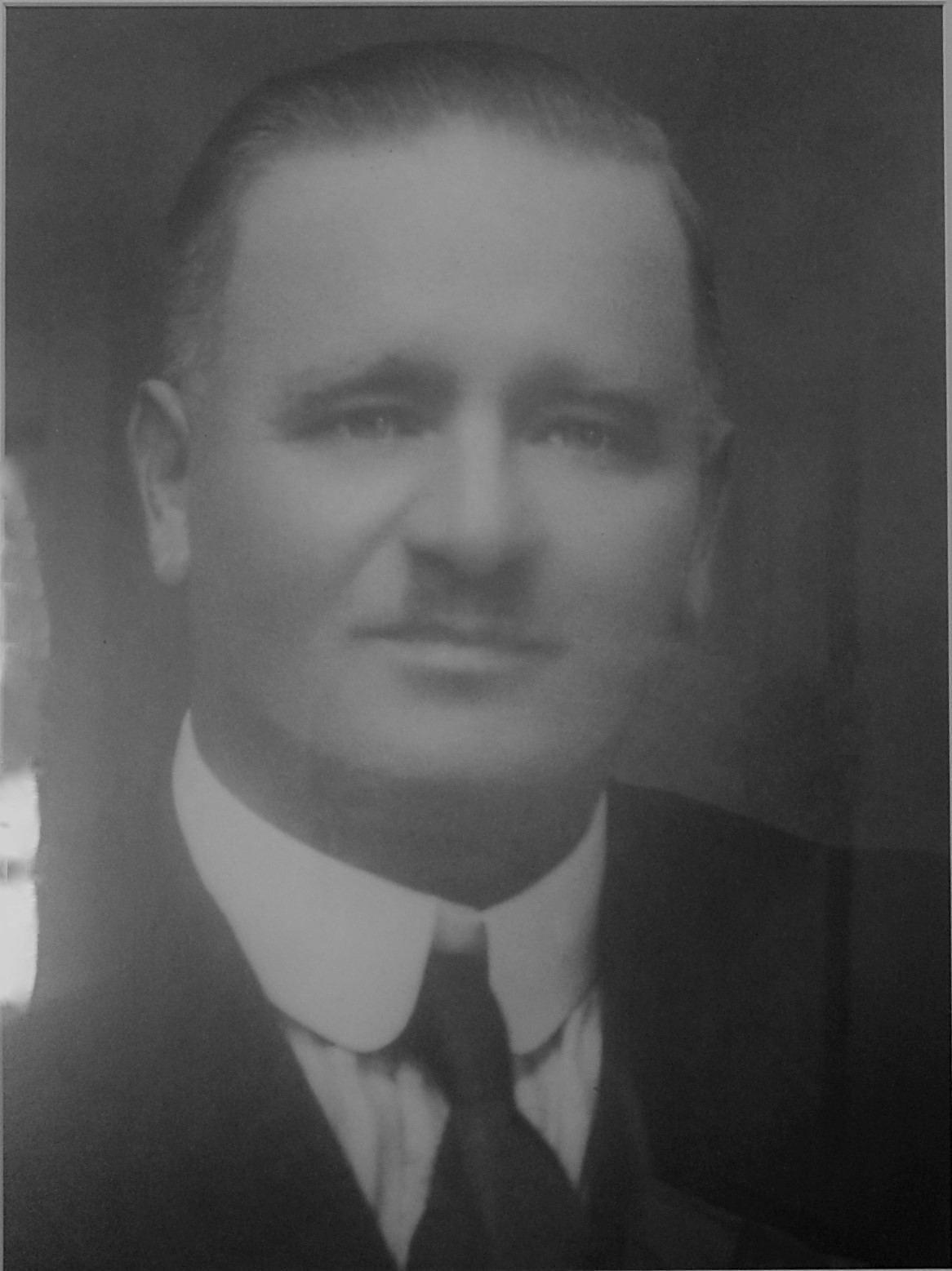
John Orr - photo taken from Portrait on display in Bayview Golf Club reception area
GOLF GROUNDSMAN INJURED BY TRACTOR
Golfers yesterday rescued a groundsman who was pinned under an overturned tractor at Bayview Golf Club, Mona Vale. Thomas Sexton, 55, of Botany Road, Waterloo, was driving the tractor when it overturned in a bunker. He was taken to Manly Hospital by Manly Ambulance and admitted with injuries to the left leg and knee. GOLF GROUNDSMAN INJURED BY TRACTOR (1943, November 1). The Daily Telegraph (Sydney, NSW : 1931 - 1954), p. 7. Retrieved from http://nla.gov.au/nla.news-article247802112
Liquor At Golf Club
Purvis Cornelius Smith, formerly of Bayview Golf Club House, Mona Vale, now of Greenknowe-avenue, Potts Point, was fined £5 in the Special Federal Court today for having purchased 10 gallon casks of beer otherwise than by way of bona fide security, not being a bona fide consumer or a wholesale or retail trader. John Henry McLelland investigating officer attached to the Customs Department, said he paid 6/- for two bottles of beer in the Bayview Golf Club on June 13, and 6/- more for another two bottles to take away. Later, three 10-gallon kegs of beer and 56 bottles of beer were found on the premises, McLelland said Smith said he had now severed his connection with the club in which he had been a partner with his brother. He had bought the beer, the subject of the charge, for a pre-wedding party for his son. Mr. Atkinson, SM, in convicting Smith, said he was satisfied Smith bought the beer to supply to members of the club. Liquor At Golf Club (1947, April 9). The Sun (Sydney, NSW : 1910 - 1954), p. 3 (LAST RACE). Retrieved from http://nla.gov.au/nla.news-article228990809
Player Caught It Bending
A golf ball landed in the hip pocket of A. H. Jones when he stooped to pick up his clubs on the ninth green in Bayview yesterday. The ball was hit by D. Sullivan, who was 245 yards away on the ninth tee. Player Caught It Bending. (1947, April 28). The Sydney Morning Herald (NSW : 1842 - 1954), p. 9. Retrieved from http://nla.gov.au/nla.news-article18023659
The Bayview Golf Course has had a number of name changes over the years Bayview Links, Bayview Country Club, Bayview Country Golf Links, but in 1948 Bayview Golf Club Limited was formed and the Course and Clubhouse leased by the Members. It was not until 1967 that the Members raised funds and purchased the Course and Clubhouse from Mrs. Orr.
Christina Denison Orr, passed away on the 7th of April, 1971.
MARBLES IS MORE FUN THAN CRICKET

MARBLES expert Eric Tingle of Newport, knuckles down in a game of "big ring" at Newport Hotel while local enthusiasts cheer him on.
Hotel manager Alec Drysdales said yesterday: "Marbles is the new craze. It's sweeping the peninsula from Manly to Palm Beach. We're building a ring for the customers."
The game began its new popularity a few weeks ago when someone started a "big ring" game during a Newport - Mona Vale picnic cricket match. Play was abandoned to watch the marbles experts. Since then a championship has been arranged, and the finals will be played today at Bay view Country Club at 3 pm. MARBLES IS MORE FUN THAN CRICKET (1948, July 4). The Sun (Sydney, NSW : 1910 - 1954), p. 1. Retrieved from http://nla.gov.au/nla.news-article229006491
Golfers Knuckle Down
To Grim Marbles Game
SYDNEY, Wed: Three hundred excited fans watched a grim, two-hour game of marbles between Newport and Bayview teams (grown ups, not children) at Bayview Golf Club on Sunday.
Highlights were:
♦ A rigid check against fudging.
♦ A player dropped out with an injured knuckle.
♦ A dramatic appeal against the light by Newport, who 'scraped in' with a narrow 3-2 win. Golfers Knuckle Down To Grim Marbles Game (1948, July 7). The Daily News (Perth, WA : 1882 - 1950), p. 1 (FINAL). Retrieved from http://nla.gov.au/nla.news-article83753914
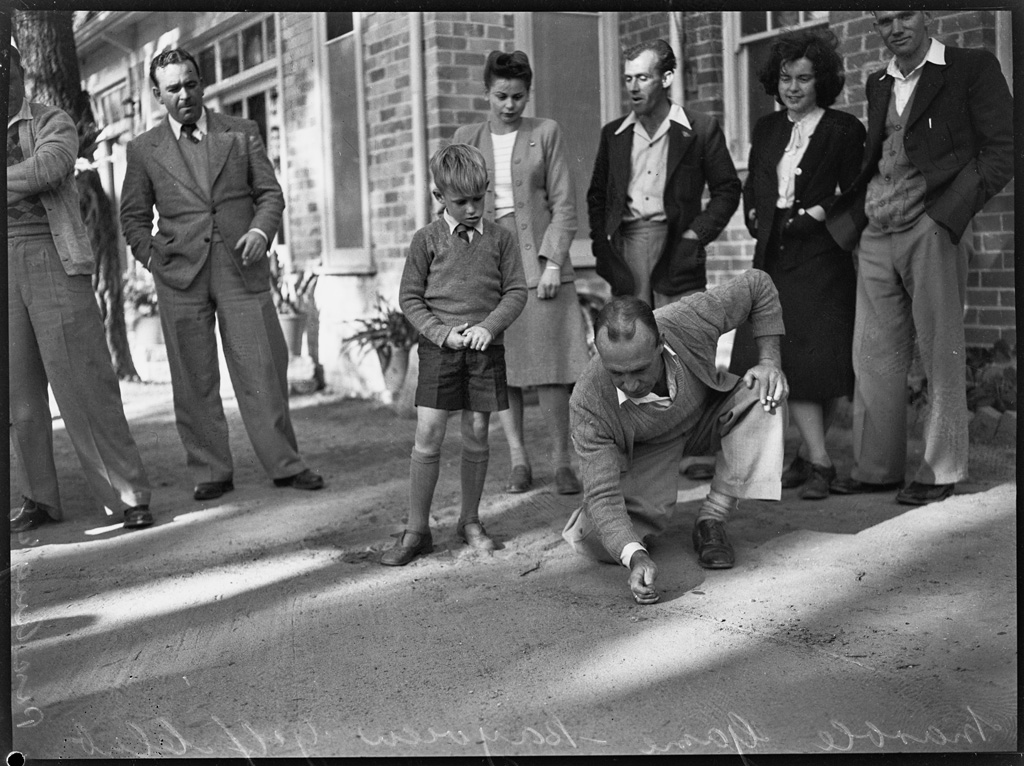
Marble game Bayview Golf Club / photographed by N. Herfort, Published August 1948 - Items: c16941_0007_c, c16941_0006_c, c16941_0011_c - courtesy Mitchell Library, State Library of New South Wales and Courtesy ACP Magazines Ltd.
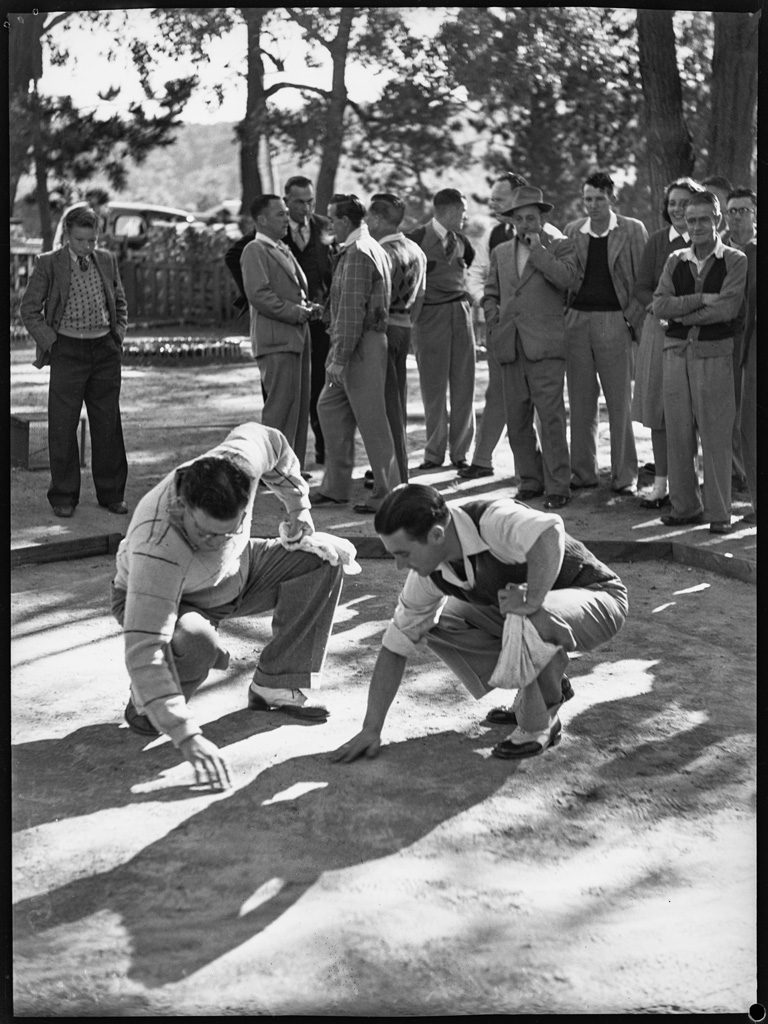

GOLF VACANCIES
Bayview golf club committee has decided to admit 50 more members. GOLF VACANCIES (1951, June 21). The Sun (Sydney, NSW : 1910 - 1954), p. 17 (LATE FINAL EXTRA). Retrieved from http://nla.gov.au/nla.news-article230766696
Bayview golf club continued giving back to the community, hosting golf days for many a local charity, as well as markets and events within the clubhouse itself to fund-raise for various causes, a policy it continues to the present time:
GOLF DAY FOR
FAR WEST HOME
Bayview Country Golf Club will hold a gala day next Wednesday for the Far West Children's health scheme. The programme includes a fourball-best ball v. par, individual Stableford, sealed nine holes, pitch and putt, and booby prize. All trophies for the day will be orders for Xmas poultry. GOLF DAY FOR FAR WEST HOME (1948, December 11). The Sun (Sydney, NSW : 1910 - 1954), p. 9 (FINAL SPORT LAST RACE). Retrieved from http://nla.gov.au/nla.news-article228691969
Daniel Gordon Souter continued playing golf professionally and teaching people. By mid 1934, and with The Depression making life harder for all, he was attached to another store as well as teaching - F. J. Palmer and Son Department store:
SOUTAR'S CHANGE

After many years' association with the Moore Park Golf Club as professional, D. G. Soutar has just signed a contract with F. J. Palmer and Son, and will become a member, of the golf section staff on Monday.
The veteran professional, who showed at Easter at Dubbo that he was still up with the best of them, will, however, not completcly divorce himself from the municipal course. Soutar will be in attendance at Moore Park on Saturday afternoons, Sundays, and holidays. — H.M. SOUTAR'S CHANGE (1934, April 13). The Daily Telegraph (Sydney, NSW : 1931 - 1954), p. 3. Retrieved from http://nla.gov.au/nla.news-article246432100
DAN SOUTAR TEACHES
THE move by the directors of Palmers' Park street store to employ Mr. Dan Soutar, the well-known self authority, is bearing noticeable fruit. Mr. Soutar's ability as a golf tutor is outstanding and pupils under Palmers' system now aggregate a large number. The price is distinctly reasonable and the benefits from the tuition are particularly noticeable. DAN SOUTAR TEACHES (1934, May 6). Truth (Sydney, NSW : 1894 - 1954), p. 11. Retrieved from http://nla.gov.au/nla.news-article169325130
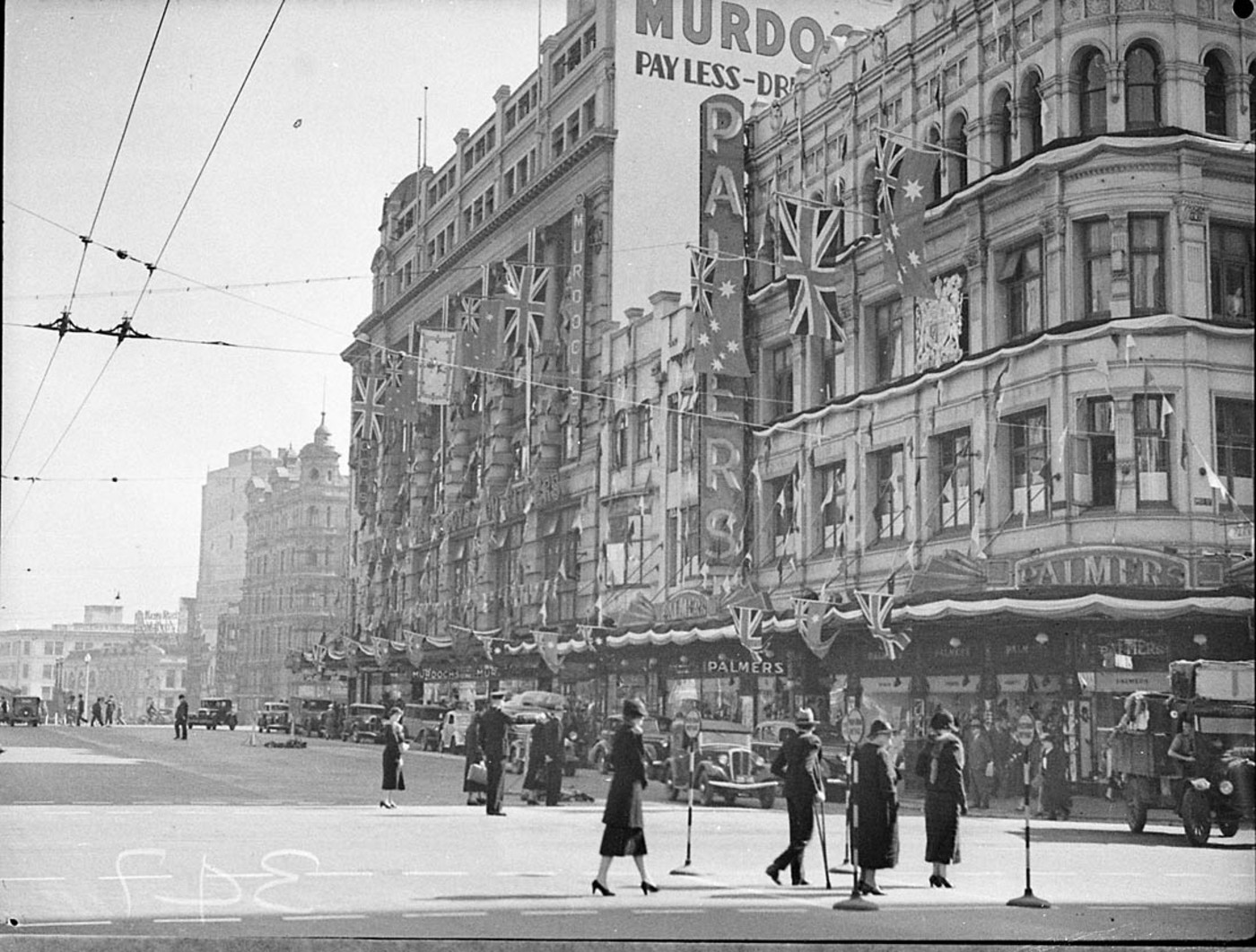
Palmer's and Murdoch's department stores decorated for Gloucester Royal visit or Coronation, 1934 or 1937 Item: hood_29908h, from the collections of the State Library of New South Wales.
All this time the Soutar family had a home at Manly, their sons Gordon and Douglas becoming valued members of North Steyne SLSC as well as golf players. Daniel Souter also had premises in Alison road, Randwick:
NORTH STEYNE'S NEW SURF MEN
Added Strength Welcome
(By "SUNBAKER.")
G. Soutar, son of the well-known golfer, has been included in North Steyne's senior surf team for the North Bondi carnival on December 7.
SOUTAR is only a junior, but has been more than holding his own in the senior point score events. Another new arrival in the team is D. Braddock, former secretary of the Palm Beach Club. Braddock qualified with a brilliant performance in the final on Sunday. These new men. will help to compensate for the loss of Thompson, who has been compulsorily retired under doctor's order. G. Riddington under doctor's orders. G. Riddington is the other loss. He has been ap-the Manly Council. As he is the club's quarter-mile champion he will be missed. North Steyne, Manly, and Queenscliff Instructors will be met by the ihstruction committee of the association at North Steyne on Sunday next, at 10.30 a.m. Club instructors north of Queenscliff will assemble at Collaroy at 2.30 p.m. NORTH STEYNE'S NEW SURF MEN (1929, November 19). The Daily Telegraph (Sydney, NSW : 1883 - 1930), p. 27. Retrieved from http://nla.gov.au/nla.news-article246821337
N. STEYNE SURF CLUB'S OFFICERS
Officials elected at the North Steyne Surf Life Saving Club's annual meeting last night were: — - ... Patron. Aid. A- Sellar. Mayor of Manly; president. Mr. C. W. Whitehead: captain. Mr. D. G. Soutar; vice-captain. Mr. C. Paton; hon. secretary. Mr. A. V. Robison; hon, treasurer, Mr. V. Christie; hon. race secretary Mr. J. Gosson; hon. assist, secretary. Mr. H. Richards: surf boats captain, Mr. J. H. Milne; hon. chief instructor, Mr. S. G. Berthold. N. STEYNE SURF CLUB'S OFFICERS (1934, September 4). The Daily Telegraph (Sydney, NSW : 1931 - 1954), p. 3. Retrieved from http://nla.gov.au/nla.news-article246681236
SURF LIFE-SAVING.
Big Seas Affect Carnival.
MANY BOATS CAPSIZE.
Events at South Curl Curl Club's surf carnival yesterday caused much excitement. One of the heaviest surfs of the season made the task of boat crews and swimmers difficult. In the first heat of the senior boat race every boat capsized. At one time three lines and belts were in use conveying assistance to the crews who were striving to bring overturned boats back to the beach. Eventually the race was abandoned but a special event was substituted and won by the Freshwater A crew from Queenscliff A both boats finishing full of water. The Manly boat overturned on the Journey outwards and more beltmen had to be sent out to assist the crew. ...
Beach Flag Relay Race North Narrabeen (F Collins A Griffin. W Allen S Wright) 1 Freshwater A (M Holliday D Wauchope O Goss L Hutchison) 2 North Steyne (J Carter C Paton D Soutar G Soutar) 3...SURF LIFE-SAVING. (1937, January 2). The Sydney Morning Herald (NSW : 1842 - 1954), p. 17. Retrieved from http://nla.gov.au/nla.news-article17306524
NORTH STEYNE CARNIVAL
3. Beach Sprint.— Final: D. Soutar (N. Steyne) 1, E. McMahon (N. Curl curl) 2, a. Doss (Freshwater) Surfing (1937, March 14). The Sun (Sydney, NSW : 1910 - 1954), p. 25 (Women's section). Retrieved from http://nla.gov.au/nla.news-article230336363
Wanted— A Strong Cleaner. Apply at Back.— Mrs. A. Soutar, 19 Arthur-street, Manly. WOMAN WINS £1018 15s. (1937, October 19). The Sun (Sydney, NSW : 1910 - 1954), p. 2 (LATE FINAL EXTRA). Retrieved from http://nla.gov.au/nla.news-article229440116
Steyne's Bondi 'Hoodoo'
NORTH STEYNE surfers are justified in claiming that Bondi is their "hoodoo" beach. In the last, four SL.SA. championships the North Steyne R. and R. team has had to rest content with a second placing. Last Saturday the club again finished second. An Interesting feature is that the personnel of the team has remained unchanged for four years. The North Steyne team comprised Bert Owen (capt.), Bill Furey, Rod Mullhumby, Brian Lilly, Stan Paton,' and Eric Morgan, with Gordon Soutar acting as coach. Steyne's Bondi 'Hoodoo' (1938, December 10). Daily News (Sydney, NSW : 1938 - 1940), p. 13. Retrieved from http://nla.gov.au/nla.news-article236315502
Around The Beaches
BILL FUREY WILL GO SOUTH LOSS TO NORTH STEYNE
By "BELTMAN"
"Wild" Bill Furey will be a temporary loss to North Steyne Surf Club. Bill has been transferred to Melbourne for two months — just at the start of the summer. That is enough to make anybody wild. Gordon Soutar, North Steyne coach, is trying to get together a team like last year's premiers. With Bill Furey away and others being called up for Militia training, his task is not going to be easy. ...
Carnival To-Day
Jack Beattie will trek with South Narrabeen to Whale Beach to-day, where an impromptu carnival will be held. Clubs competing will include Palm Beach, Newport, Avalon, South Narrabeen, and Whale Beach. Newport Club holds a very high opinion of Neale Porter, a junior, whose performance will be watched with interest at Whale Beach to-day. Around The Beaches (1939, November 12). The Sun (Sydney, NSW : 1910 - 1954), p. 27 (WOMEN SECTION SOCIAL). Retrieved from http://nla.gov.au/nla.news-article231502397
In November 1937 Daniel Gordon Souter entered a private hospital in Randwick for appendicitis and tragically contracted an infection from which he never recovered. He was survived by his wife, daughter and two sons. Mrs. D G Soutar (Annis) was also a golfer, and is credited with being the founding Captain of the Balgowlah Golf Club when it was formed in August 1925.
Some of the Tributes run when news of his passing broke:
D. G. SOUTAR.
FAMOUS GOLFER'S DEATH.
Fine Record as Player and Teacher.
(BY OUR GOLF REPORTER.)
Australia has lost one of its foremost golfers and authorities and critics on the game by the death of D. G. Soutar, the well known professional, at a private hospital in Randwick. Soutar was in his 55th year, and his death occurred unexpectedly, for, on the previous day, he was drawn to play in the professional foursome championship of the State at Bonnie Doon. Soutar had been in ill-health for some time, but there was nothing to suggest that he was so ill.
During his long association with the game, Soutar came into contact with thousands of players. He was an affable type, sincere and outspoken in his opinions, which were always respected. He always played to the rules, and was a modest winner and a generous loser. Many young players had valuable advice from him.
Like so many great players, Soutar learned his game in Scotland, coming from that famous nursery of the professionals, Carnoustie. That town has sent professionals to many countries, and to-day the Carnoustie school is noted for the soundness of its methods and its fighting temperament.
Soutar was born at Carmyllie in 1882, and as a youth played round Carnoustie with Carnegie Clark, who also emigrated to Australia and won three open championships, as well as many other events.
D. G. SOUTAR.
Soutar came to Australia soon after the beginning of the century. He was a cabinet-maker with the firm of Holdsworth, Macpherson, but it was not long before he revealed his quality as a golfer. In 1903 he won the amateur championship of Australia, and, in the following year, the open championship. Then followed an amazing run of seconds in the open. He was second seven times, in between times winning State and club championships.
In two Australian open championships, Soutar was a trifle unfortunate. Once he and F. Popplewell tied for second place. The title that year went to Ivo Whitton, who, on the advice of a Royal Melbourne committee man, dropped in what was considered to be the wrong place, after sending the ball into a clump of trees. A protest against Whitton was dismissed, but subsequently a leading Sydney authority of the day declared a ruling from the Royal and Ancient Club on the subject, and the verdict was that the protest should have been upheld.
The second instance was when Michael Scott, during the championship he won, drove from in front of one set of teeing pegs. In those days the penalty was disqualification, but Scott was not penalised, and Soutar had to be content with second place again. A ruling from St. Andrew's was against Scott.
Soutar played as an amateur for some time, but then he and his old friend, Carnegie Clark, went into partnership as professionals. Soutar was Clark's best man at his wedding, and one of the bridesmaids subsequently became Mrs. Soutar. Soutar was at Leura, and was also attached to the Manly club for many years, when J. H. Kirkwood first blossomed forth, and then at Moore Park. Recently Soutar was attached to the staff of F. J. Palmer and Son, Ltd.
MASTERLY SHORT GAME.
Amazing accuracy was the keynote of Soutar's game. He was seldom off the fairway, and though in his younger days he hit a fairly long ball, it was his work with the mashie niblick and niblick that was outstanding. Soutar always considered these his favourite clubs. He was also a deadly clipper and putter.
Even in his last years, Soutar could hold his own in shorter competitions. He was a masterly player in the wind. A short, restricted back swing and a peculiar hip action, anchored him even against the stiffest breezes. But it was his command over his shots that proclaimed his versatility. His wind-cheaters were famous throughout Australia, and so, too, were the deft green-biting pitches which so often gave him a place among competition leaders.
It is not so much as a player that Soutar will be missed. His knowledge of the game, and his administrative ability, were recognised everywhere. He was one of the guiding hands of the Professional Golfers' Association.
OFFICIAL TRIBUTES.
Mr. F. H. Greaves, chairman of the New South Wales Golf Council, said: "Soutar was one of our outstanding professionals. He was a good type and an excellent teacher, and he imparted a sound style to his pupils. He will be sadly missed, for we could ill afford to lose him."
The president of the Ladies' Golf Union, Miss Una Clift, said: "Soutar was undoubtedly a fine golfer, otherwise he would not have maintained his place among the leaders for so many years. He was an expert teacher of the mashie, and in his early days taught many who afterwards became champions. Soutar certainly had the interests of golf at heart, and was a firm believer in encouraging youth.
The Royal Sydney professional, F. Popplewell, said: "He was a wonderful old golfer. The P.G.A. is going to miss him, for his opinion was always keenly sought. He was not afraid to express his views, and they were always sound, backed by his years of experience. Dan always played strictly to the rules, and he saw that his opponents did the same. As a player he swept everything before him in his younger days, though few knew that he was extremely nervous."
M. L. Kelly, neatly summed up the views of younger players when he said: "'Old Dan, as we called him among ourselves, was a great help to young amateurs and professionals. Our competitions will not be the same without him. He was a great stickler for the rules, and I always enjoyed a game with him, for he taught me much in various directions."
The Moore Park and Kogarah clubs intended holding four ball competitions today, but out of respect for Soutar have postponed the events.
Soutar is survived by Mrs. Soutar, two sons and a daughter. One of the sons, Gordon, is a member of the Long Reef Club. The funeral service will be held at the Kinsela Funeral Parlours, Darlinghurst, to-morrow, at 10 o'clock, afterwards leaving for the Northern Suburbs Crematorium. D. G. SOUTAR. (1937, December 1). The Sydney Morning Herald (NSW : 1842 - 1954), p. 19. Retrieved from http://nla.gov.au/nla.news-article17441758
GOLFER SOUTAR PASSES
Many Successes As Amateur And Pro. LONG CAREER
Dan Soutar, leading professional golfer, died yesterday, peritonitis, having supervened following an operation. He was 55 years of age, and is survived by his wife, two sons, and a daughter.
Mr. Soutar came to Australia from Carnoustie, Scotland; at the age of 20. He played as an amateur for the old Marrickville club In 1903 and 1904, and was amateur champion of Australia, New South Wales, and Boonie Doon club in 1903. He also won the State championship the following year. He turned professional in 1903, and won the open championship In Melbourne. He was runner-up In the Open In 1906-10 and 1913 and 1920, and was third in 1904 and 1911.
He was a caddy on the' famous Carnoustie course, 41 years ago. Two years later he was apprenticed to the carpentering and joining trade. As a member of the Carnoustie club he won many trophies against the best amateurs in Svetland. Dan won many minor competitions and was always noted for his tenacity. He landed the N.S.W. professional title in 1903 and proved 23 years later when he won the title for the second time that age was no handicap in the Royal and Ancient game.
Two Royal Sydney cups and Australian medals also found their way on to his. side-board. He was the winner of the Victorian Professional Championship In 1922. His first major win was at Royal Sydney Course six years ago In the Dunlop cup.
Mr. Soutar was attached to the Manly Golf Club, for 11 years where for five years, Joe Kirkwood, the famous exponent of "trick" shots, was his assistant. He resigned from Manly and became Instructor to the Moore Park Golf Links, where he taught hundreds of golfers the finer points of the game. Until quite recently he had been attached to the sports department of a leading city firm. He was a member of the management committee of the P.G. A. and was, held in high regard by players and officials alike.
The funeral will take place tomorrow. GOLFER SOUTAR PASSES (1937, December 1). The Labor Daily (Sydney, NSW : 1924 - 1938), p. 2. Retrieved from http://nla.gov.au/nla.news-article237435144
DAN SOUTAR DEAD
Famous Golf Pro.
GOLFERS in all parts of the Commonwealth will learn with regret that Dan Soutar, famous Sydney golf professional, died on Tuesday.
MR. SOUTAR was a product of famous Canoustie course, and his charming manner and knowledge of the etiquette of the game soon made him a warm favorite in golf circles of Australia. He arrived in this country at the top of his form and was for many years a difficult man to beat in the best company. He won a number of first-class competitions, and put thousands of players who went to him for instructions on the right track.
Mr. Soutar will always be remembered for the prominent part he played in the formation of the Professional Golfers' Association. Among the many titles he won during the 20 years he was a resident of Australia were the Australian championship, 1903, the N.S.W. champion-ship, 1903 and 1904, the Open the following year, the Victorian championship in 1922, and the Dunlop Cup in 1931. He was runner-up in the Open on several occasions.
Mr. Soutar will long be remembered as the architect for many leading clubs of New South Wales and other States. For ten years he served as professional at Manly and for some time he had Joe Kirkwood as his assistant.
AN APPRECIATION
THE passing of Dan Soutar is a distinct personal loss to those who knew him well. To them he was more than a noted golfer — one of the greatest figures in Australian golf — he was a man of high principles, with nothing mean in his make-up, one who did much to place the golf professional on the plane he enjoys to-day.
ONE talk with him would bring home the fact that he was not a "glorified caddie boy," as professionals were once described and treated in Great Britain. A strong personality, he did not demand respect. It went out to him naturally. In his job he did not obtrude his views, giving them only when they were asked for. Then he stuck to them.
RETAINED by one club as an adviser to the green committee, he clashed with the captain of the club. Neither would give way. The job meant bread and butter to Soutar at the time, but he did not hesitate.
THE prospect of getting another job was not bright— there were not so many golfers as there are to-day — and he resigned, to the amazement and regret of the man with whom he differed. The captain tried to get him back. Soutar remained adamant.
AS a teacher of golf he had no compeer in Australia. An illustration: I am sure Colonel Arnott will not mind me telling this story. The Colonel had a long course of instruction from one of Australia's best known professionals, and was still unable to break 100. Regretfully, the pro. told him that he was afraid that taking any more money from him for lessons was an imposition.
ARNOTT went to Soutar, and telling him about his previous experience, asked him if he could do anything. "My trouble," said. Arnott, "is that I have a stiff, left wrist. Is there any way of getting over that?" "I'll let you know in a week," said Soutar.
Later Soutar rang Arnott. "I'll have a go," he said. Under Soutar's tuition Arnott was down to 3 against bogey at Royal Sydney inside a year.
THEREAFTER for years Arnott had a round with Soutar once a week at Manly. And at the end of the round Soutar was £1 the richer.
SOUTAR was thorough, as indicated in this case. To be able to instruct Arnott how to play decently, notwithstanding a stiff wrist, he had placed his own left arm in splints, as if it were broken, and went laboriously through swings for hours on end, so that he could properly instruct, his pupil.
WE hope for Dan that the courses are good on the other side.— H.S.T. DAN SOUTAR DEAD (1937, December 2). Referee (Sydney, NSW : 1886 - 1939), p. 21. Retrieved from http://nla.gov.au/nla.news-article127614146
Although most of the above state he was 55, his family's Notice states he was 54:
SOUTAR.-November 30, 1937, at a private hospital, Randwick, Daniel Gordon Soutar, beloved husband of Annie Soutar, and loving father of Heather, Gordon, and Douglas, aged 54 years. (Golf professional.)
SOUTAR.-November 30, 1937, at a private hospital, Randwick, Daniel Gordon Soutar, beloved son of Annie Soutar and the late James Soutar, of Wee Waa, and beloved brother of Jean, Nell, Vi, Douglas, James, Walter and Bert. Family Notices (1937, December 1). The Sydney Morning Herald (NSW : 1842 - 1954), p. 14. Retrieved from http://nla.gov.au/nla.news-article17441723
SOUTAR.-The Relatives and Friends of Mrs. ANNIS SOUTAR and of HEATHER, GORDON, and DOUGLAS SOUTAR, ore klndlv Invited to attend the Funeral of her beloved HUSBAND and their FATHER, Daniel Gordon; to leave the Kinsela Chapels, Oxford Street-Taylor Square, Darlinghurst, TO-MORROW, THURSDAY, immediately after a short Service, to commence at 10 a.m., for the Northern Suburbs Crematorium. CHARLES KINSELA. Funeral Director. Oxford Street and Taylor Square, 'Phones. FL4130-7-B. Darlinghurst.
SOUTAR.-N.S.W. MASONIC CLUB.The Members of the above Club are kindly invited to attend the Funeral of their late esteemed Brother, DANIEL GORDON SOUTAR, on THURSDAY MORNING. (See family notices,) Family Notices (1937, December 1). The Sydney Morning Herald (NSW : 1842 - 1954), p. 13. Retrieved from http://nla.gov.au/nla.news-article17441740
His father, as referred to above, also came to Australia:
FARMING ON THE PILLIGA.
What Water Will Do.
Mr. James D. Soutar, Pilliga Scrub, Wee Waa, when sending his subscription and the name of a new subscriber to Uncle Wiseman this week, wrote :— It is now two years since fifty-nine blocks of land were thrown open for settlement, and I took up one of them; but the two years having been a very dry period it was with difficulty that we got enough water for ourselves, and for a few milking cows. I am pleased to tell you now, however, that the wheel of progress is turning. I now have a constant flow of water from a bore about 100 yards from my kitchen door, nice water, too, and clear as crystal, and there are now five bores with good supplies, two of them running over, and all within a five-mile area. I have 100-acres under wheat this year, and one small paddock is over the top of a 6ft. fence already. All around here is now teeming with industry; trees are disappearing, and fields of wheat are waving in their stead. FARMING ON THE PILLIGA. (1915, September 14). The Farmer and Settler (Sydney, NSW : 1906 - 1955), p. 7. Retrieved from http://nla.gov.au/nla.news-article116680762
SOUTAR- August 11 at Wee Waa, James Dick Soutar, late of Carnoustie, Forfarshire, Scotland aged 76. Family Notices (1934, August 16). The Sydney Morning Herald (NSW : 1842 - 1954), p. 10. Retrieved from http://nla.gov.au/nla.news-article17084643
FUNERAL OF D.G. SOUTAR
Last Tributes By Sportsmen
Preceded by a service at Kinsela's chapel. Taylor-square, Darlinghurst. the funeral of the late D. G. Soutar, the well-known golfer, took place today at the Northern Suburbs Crematorium.
The last rites were conducted by the Rev. W. J. Grant, of the Presbyterian Church, Randwick. Many sporting organisations were represented. Among the mourners were Messrs. P. .T. Greaves, O. H. Wines. R. J. Withycombe, and W- E. Bain (N.S.W. Golf Council). G W. Eastway (Northern Golf Club, Melbourne), T. Tombleson (Royal Sydney Golf Club), W. C. Sturrock. H. M. Barker, J. B. Ferrier, and Jim Ferrier (Manly Golf club), F. J Walshe, D. A. McMillan. G. Johnson, P. G. Goldstein, and R. Farrell (Moore Park Golf Club). Frank Mc-Mullen, G, Orrelll, and H. J. Benjamin (Bonnie Doon Golf Club), J. M. Arnott and Percy Arnott (Concord Golf Club). W. A. Hudson (Long Reef Golf Club), Fred. Harris (N.S.W. Golf Club). H. Gordon (Pennant Hills Golf Club), L. Giddings (New Metrop. Golf Club), J. Ross (Randwick Golf Club), F. G. Shrimp-ton (Wentworth Falls Golf Club), O. Campbell (Dubbo Golf Club), O. J. C Moore (Lakes and Pymble Golf Clubs), A. T. Barton (The Lakes Golf Club), D. A. Day (Roseville Golf club), Sidney Riley (president of the P.G.A.), J. C. Bell and P. Sydney Jones, jun, ("Golf in Australia"), J (F. J. Palmer and Son. Ltd.). T. M. Condon (Gollin and Co.), G. Webb, R. Walden, and A. Carter (North Steyne Surf Club), T. S Smith (Manly Football Club), H. W Bennett and F. G. Wilson (Customs Department), W. H. Hellings and H J. Sneddon (N.S.W. Masonic Club) C. N. M. Walker, C. A. le Maistre Walker, R. G, W. Woods, S, G Piddington. R. A. Wheeler, R. S. Robinson. J. S, Shackell (C. A. le Maistre. Walker, Son and Co.), and Roland Green. FUNERAL OF D.G. SOUTAR (1937, December 2). The Sun (Sydney, NSW : 1910 - 1954), p. 16 (LATE FINAL EXTRA). Retrieved from http://nla.gov.au/nla.news-article232009825
The children of Daniel and Annis Soutar all married and grandchildren were born. His sons would continue to enjoy the game, with one, Gordon, becoming a keen player of the Long Reef Golf Course where his mother was also the Associates President from 1939 until she passed away in 1955. Annis Soutar was also the first female Life Member at that same club.
Children’s marriages:
5544/1937 SOUTAR DOUGLAS GORDON DUNN ELIZABETH LLOYD SYDNEY
6075/1947 SOUTAR GORDON RICHARDSON RUSSELL IRENE MARY WOOLLAHRA
31071/1942 HARMAN REGINALD RICHARD SOUTAR HEATHER JOYCE MANLY
HARMAN-SOUTAR.—The Engagement is announced of Heather, daughter of Mrs. A. Soutar and the late D. G. Soutar, of Manly, to Reginald R. Harman, elder son of Mr. and Mrs. A. Harman, of Manly. Family Notices (1942, July 21). The Sydney Morning Herald (NSW : 1842 - 1954), p. 10. Retrieved from http://nla.gov.au/nla.news-article17812779
HARMAN (nee Heather Soutar).-April 26, to Mr. and Mrs. Reginald Harman, of Greenwich Point-a daughter (Danielle Annis). Family Notices (1944, May 13). The Sydney Morning Herald (NSW : 1842 - 1954), p. 18. Retrieved from http://nla.gov.au/nla.news-article17907427
The 2018 Golf Digest list of the World's 100 Greatest Golf Courses lists five Australian Courses among its top 20, while numerous other Australian Professionals and Golf Course Architects are listed as designers, illustrating this island remains a place where great golf courses are.
These open spaces, from Palm Beach down to Manly, are the green reserves that have kept the area looking, in the flow of their landscapes, very similar to what it was prior to these courses being built. Indigenous plants and animals that may have been long gone otherwise have been retained due to the adherence of these designs to the original definitions of 'golf links'.
Some cite the fees players had to pay, along with a strict dress code, as a means to exclude many at some local clubs, as well as other courses in metropolitan Sydney. These costs would certainly put the game at a registered club out of the budget of many.
Most of the golf clubs about Sydney are beginning to feel the effects of H.C.L. Long-reef Club, which started off light-heartedly in its swaddling clothes at £2/2/ per year subscription, had only existed for a few weeks when it was found necessary to increase the amount to £3/3/, and it is questionable if they can make things go even at this fee.
One of the cheapest clubs about Sydney is Cammeray (£2/2/; entrance fee and £3/3/ sub.). The club has no control over its links, which are situated on a public park given up largely to cricket, football, tennis, stray dogs, herds of wild horses, Bolshevik idlers (who biliously look upon even the poorest of golfers as mere joints in the tails of the idle rich), and swarms of children; so that the erratic player is always liable to find himself in court on a charge of doing grievous bodily harm to some one. With all these disabilities it was thought that £3/3/ per year was quite enough to pay at Cammeray for one's golfing privileges, but the Club is beginning to find it necessary to consider the question of raising the fee. If things get much worse scores of golfers will presently begin to find the game rather too costly.
Numbers of young men (bank clerks, etc.) learn the game in the country, where it is cheap, and have to abandon it when they come to the metropolis owing to the excessive cost. It is impossible to be a regular playing member of some of the Sydney Clubs at less than £25 per year. GOLF NOTES. (1921, December 23). The Land (Sydney, NSW : 1911 - 1954), p. 13. Retrieved from http://nla.gov.au/nla.news-article102968468
However, built as they were, at the centre of subdivisions and to attract people on weekends, during the Summer 'Season', as well as make these places attractive during every other season of the year, the fees paid by these early members, along with the popularity of the sport itself, have ensured we still have places where players may exhale among salt breezes instead of cheek by jowl housing... and possibly swear a little bit into those same breezes as those small balls slip elusively and determinedly in the wrong direction.
Thanks to the inspiration and passion for the game of golf of Daniel Gordon Soutar and his fellow Scotchmen, such as Mr Orr, Mr. Wiltshire, Mr. Playfair and Mr. Small, we have a bank of greens conserved wherein, to use Soutar's own words from his 1906 book, 'The Australian Golfer':
'The mental attitude of nine Australians out of ten towards this game is at first one of lofty, amused tolerance.' On casually coming across golfers on the links they vote the past time as 'the slowest yet,' but 'they cannot quite account for the fact that for nine out of every ten men — even including the young, and vigorous— it exercises a fascination almost appalling in its intensity. This, till a friend suggests that the recruit should try a round. Once the round is tried, the die is cast. ' The scoffer becomes the disciple. 'That is all but inevitable.'

References and Extras
- TROVE - National Library of Australia
- Manly Golf Club - Club History. Retrieved from: www.manlygolf.com.au/cms/membership/club-history
- Mona Vale Golf Club History. Retrieved from http://mvgc.com.au/history/
- The Oaks-La Corniche, Mona Vale
- The Australian Golfer by DG Soutar, Angus and Robertson, 1906 /
- Pittwater Roads II: Where the Streets Have Your Name - Avalon Beach
- Pittwater Roads II: Where the Streets Have Your Name - Warriewood
- Pittwater Roads II: Where the Streets Have Your Name - Elanora Heights, Green Hills and Ingleside
- Pittwater Roads II: Where the Streets Have Your Name - Mona Vale
- Pittwater Roads II: Where the Streets Have Your Name - Bilgola
- The Story of Golf in New South Wales by David J Innes, New South Wales Golf Association, 1988 /
- Pro Golf - Out of the Rough - Illustrated History of Professional Golf in Australia by Colin de Groot and Jim Webster, 1991 /
- Golf in New Zealand by GM Kelly, The New Zealand Golf Association, 1971 /
- Far and Sure - The Auckland Golf Club, 1894-1994 by Derek Dow, 1994 /
- Elanora - A History of Elanora Country Club by H Barry, Elanora Country Club /
- The Royal Adelaide Golf Club, 1892-1992, by Michael Cudmore, The Royal Adelaide Golf Club, 1992 Royal Adelaide Golf Club Ken Soutar (Dan’s grand nephew) Concord Golf Club /
- The Test Of Time by Stewart H Williams, Kingston Heath Golf Club, 1981 Kingston Heath Golf Club /
- Australian Golf - the Game and the Players by Jack Pollard, 1990 Al Howard (son of Tom Howard - friend of Dan Soutar) Ian Arnold - Historian, Indooroopilly Golf Club Bob Ross ‘ Archivist/
- Historian, Pymble Golf Club /
- 25 Great Australian Courses by Tom Ramsey, 1981 /
- Australia’s Finest Golf Courses by Darius Oliver, 2003,
- The Professional Golfers Association of Australia for the use of photographs.
Carnoustie Golf Links is in Carnoustie, Angus, Scotland. Carnoustie boasts four courses - the historic Championship Course, the Burnside Course, the Buddon Links Course and a free-to-play short, five-hole course called The Nestie. Carnoustie Golf Links is one of the venues in the Open Championship rotation and has hosted golf's oldest major on eight occasions (1931, 1937, 1953, 1968, 1975, 1999, 2007, 2018), as well as the Senior Open Championship in 2010 and 2016 and the Women's British Open in 2011. Golf is recorded as having been played at Carnoustie in the early 16th century. In 1890, the 14th Earl of Dalhousie, who owned the land, sold the links to the local authority. It had no funds to acquire the property, and public fundraising was undertaken and donated to the council. The original course was of ten holes, crossing and recrossing the Barry Burn; it was designed by Allan Robertson, assisted by Old Tom Morris, and opened in 1842. The opening of the coastal railway from Dundee to Arbroath in 1838 brought an influx of golfers from as far afield as Edinburgh, anxious to tackle the ancient links. This led to a complete restructuring of the course, extended in 1867 by Old Tom Morris to the 18 holes which had meanwhile become standardised. Young Tom Morris won a major open event there that same year. Two additional courses have since been added: the Burnside Course and the shorter though equally testing Buddon Links.
PERSONAL
Mrs. W. H. Hunt, of Springwood, has been bereaved by the death of her father, Mr. Arthur Jabez Small, who passed away at his residence, Shirley Road, Wollstonecraft, on Monday, October 5. Much sympathy is extended to Mrs Hunt in her sad loss. SPRINGWOOD (1953, October 8). Nepean Times (Penrith, NSW : 1882 - 1962), p. 8. Retrieved from http://nla.gov.au/nla.news-article100974740
Native Names for Property
"New Reader": (1) Adina, good; Mama, flowing water; Allambie, a quiet place; Allara, day; Allawah, I camp here; Attunga, high place; Allungra, the sun; Baanya, camp; Banool, hill; Banoon, sweet water; Banyandah, home on the waters; Baranball, towards the east; Berakee, place of stone; Barega, win; Bareena, plant like a ti-tree; Balrina, summit: Baringa, light; Barkoola, tow; Barranduna, bush myrtle; Bimbil, box trees; Bindaree, river; Birubi, southern cross; Booral, big, high, large; Brinawa, place where rock lilies grow; Bringa, sunset; Bucaan, running stream; Bulwarra, pelican; Bundilla, meeting of waters; Bunyana, good or sweet; Caloola, an old battle field; Carawatha, place of pines; Carbethon, cheerful; Carcolla, gum trees; Carranya, sand hill; Chepana, coast, seashore; Coorong, Moreton Bay pine; Cooyong, Bandicoot; Curbarra, plenty; Currawarra, pine tree; Curringa, black duck; Currong, silver wattle; Elanora, home by the sea; Elimatta, my home; Elouera, pleasant place; Eurobin, big lagoon; Girrahween, place of flowers; Coonda, star; Goreen, wind; Gooyong, a camp; Illira, shelter hut; Illoura, pleasant place; Iluka, near the sea; Immarna, camp; Karuah, native plum tree; Kiata, summer; Koonda, the sun, day; Keoringle, happy home; Kjarrara, south; Kowari, far; Kumboorah, east; Kuringal, in the bush; Kurrung, a creek; Kurrara, place of opossums; Kyeema, dawn; Kyalla, north; Lowanna, beauty; Lumeah, here I rest; Maroopna, deep water, or water-hole; Merrigal, place of many dogs; Milleara, to set at a distance; Miowera, emu; Mirrabooka, southern cross; Miolong, tide coming in; Moora, a camp; Moorilla, stone; Moorillah, pebbly ridge; Mumong, sky; Myoora, a camp; Myuna, clear water; Nairana, eagle; Narweenda, fine day; Neerini, high, elevated; Noogaleek, mine, belonging to me; Nyora, native cherry; Oceana, fuel; Oorong, camp; Panamuna, ocean; Tarrarara, bend of a river; Tocumwal, deep hole; Toolangatta, many currajong trees; Trawalla, much rain, wild water; Turumbol, rainbow; Urella, eaglehawk; Wallung, stone; Waree, wind; Warella, canoe; Warrah, honeysuckle; Weabra, camp; Weerona, resting place; Wilga, a tree like the willow; Wiralie, black cockatoo; Woorarra, mountainous place; Wyralla, black and red cockatoo; Yarrallah, camp; Yarrabin, white gum tree. Native Names for Property (1948, December 17). The Land (Sydney, NSW : 1911 - 1954), p. 31. Retrieved from http://nla.gov.au/nla.news-article105818456
Soutar Golf Course Designs
Whilst attached to the Royal Sydney Golf Club, Daniel Soutar’s first design foray was a nine hole course on the police paddock in Mudgee in 1906 which is no longer in existence. In May that year he reported upon his design for the new Adelaide Golf Club’s course at Seaton in South Australia, however, his design did not receive approval from the Committee.
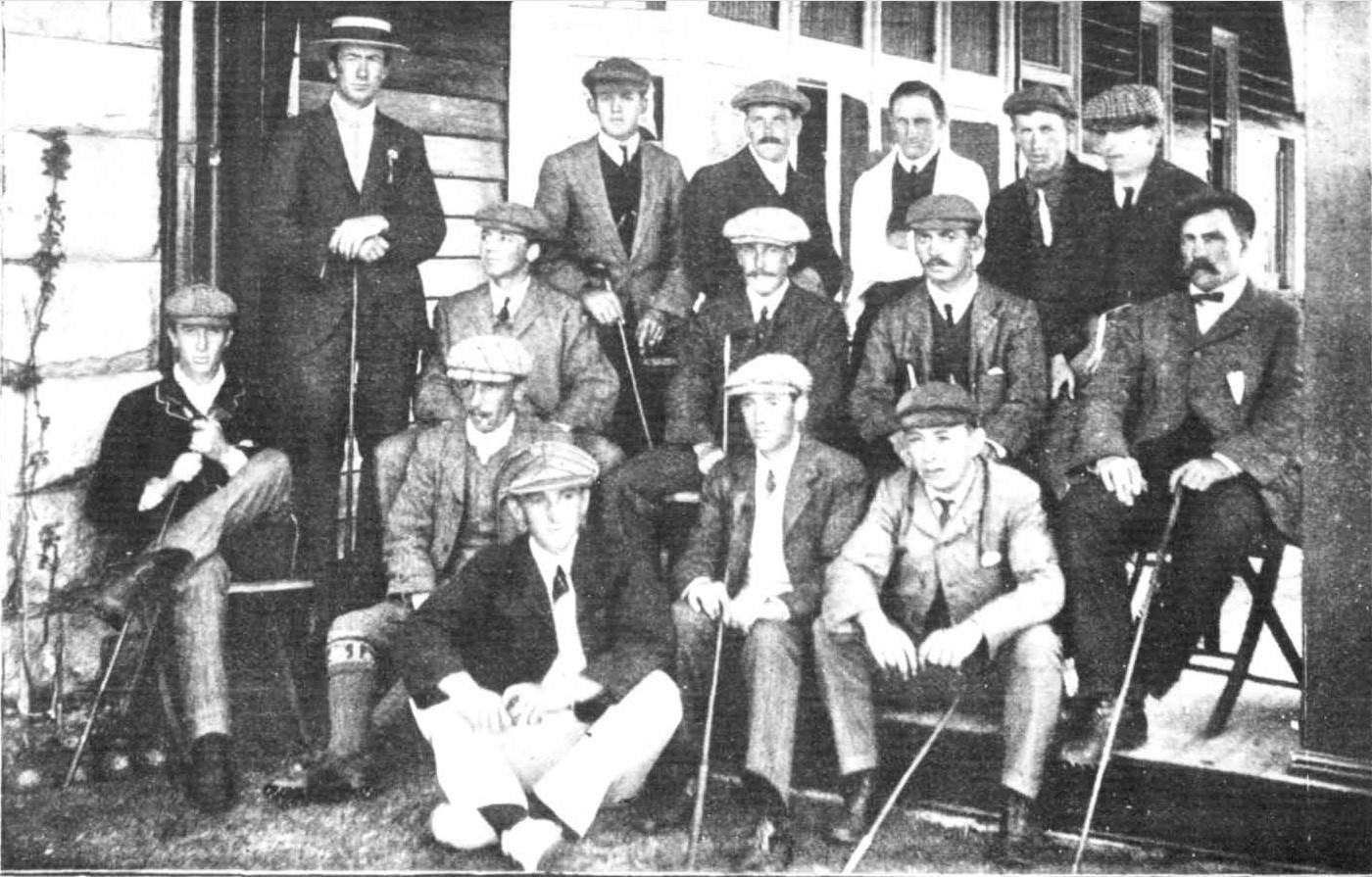
Back Row, Left to Right— L. H. Harper (Vic.)- D- Hood (N.Z.) D. G. Soutar (amateur champion 1903, open champion 1905). T. Popplewell (NSW) F. Popplewell (X.S.W.), J. Patterson (N.S.W.).
Second Row. — V. East (N.S.W.), Carnegie Clark (open champion), F. G. Hood (N.Z.), R- Banks (Vic.)
Front Row— W. D. Clark (N.S.W.), A. M'Laren (Vic), J- M'Laren (Vic, on ground), G. L. Martin N.S.W.), W. Thomson (Queensland).
A GROUP OF PROFESSIONALS. Golf Pictures. (1906, October 24). The Sydney Mail and New South Wales Advertiser (NSW : 1871 - 1912), p. 1062. Retrieved from http://nla.gov.au/nla.news-article163687177
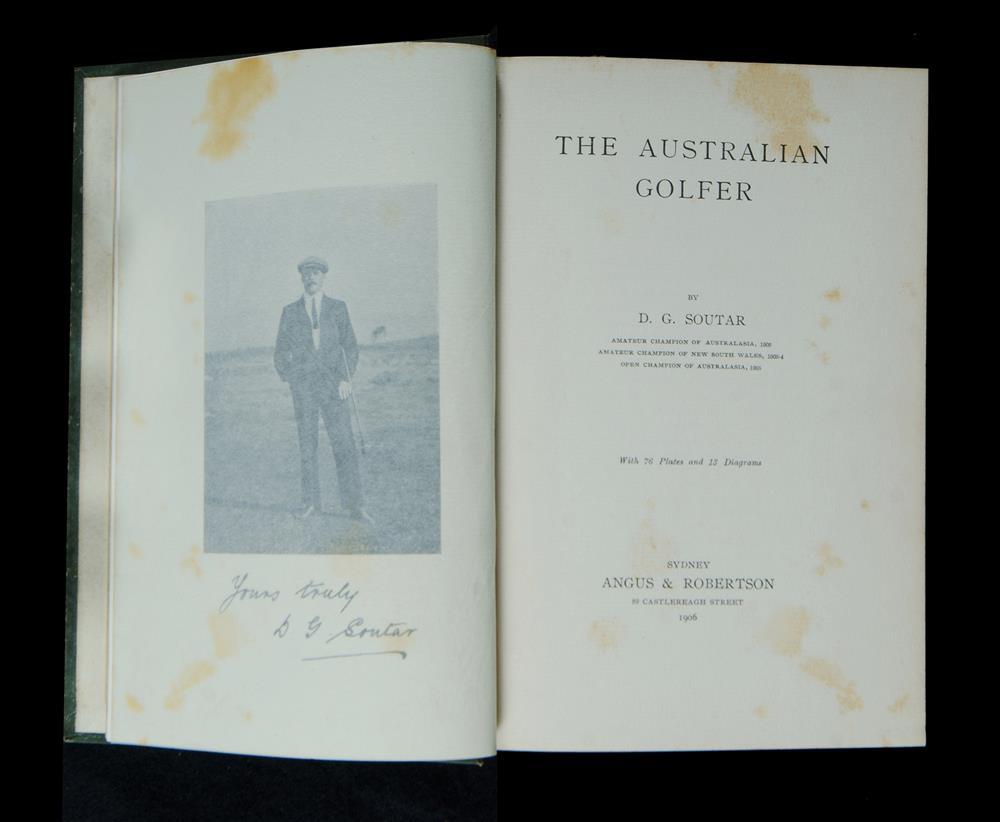
In 1907 he laid out the course for Marrickville Golf Club (from September 1907 the club altered its name to Bonnie Doon GC) and in the same year saw the opening of one of his better known designs, the course for the Concord Golf Club. Here he had some 136 acres to work with and laid out a 6,100 yard 18 hole course for the members and a ladies nine holer of around 2,000 yards.
After leaving Leura Golf Club late in 1910, Soutar was invited to New Zealand in 1911 and played an exhibition match with FG ‘Fred’ Hood at the Auckland Golf Clubs new Middlemore course. Dan received the all-up sum of £15 to play the exhibition and advise the Club on bunkering the course. On this same trip he also designed the course for the Christchurch Golf Club (Shirley) with assistance from Kiwi J A Clements. Soutar apparently did not enjoy his time in New Zealand, writing to his wife from Christchurch on the 15th May 1911:
"In a way I am rather sorry that I came over here as I think they are a rather dry harsh crowd and appear to look down on a professional. Of course, I am writing of the committee, and to give an instance, I went out to the links with the secretary who is not altogether a bad sort and he introduced me to some of his committee and none of them even asked if I would have a cup of tea or even a drink of water or have a look through the clubhouse, but of course that does not trouble me and I will get along alright without that.”
THE GAME IN NEW ZEALAND.
The well-known Sydney professional, D. G. Soutar, who has just returned from a trip to New Zealand, where he was engaged on behalf of the Christchurch Club, to lay out new links, speaking of the game there, says:—
"taking the game generally, it appears to be on the up grade, and the players, especially the ladies, struck me as being keener to have a game than the players over here, but I expect the climate has a good deal to do with it, as the air is much keener and more bracing, especially in the Southern island. Taking the standard of play all-round, I should say it is at least three or four strokes below the Australian standard, although some of the players, such us B. B. Wood and J. C. Burns, of Auckland would give any of our players over here a very good go, and I think that A. Duncan, of Wellington, is a trifle better than our leading New South Wales players. At the same time, however, I think he was playing better when he was over in Sydney (or the Australian championship, a few years ago, he struck me as being thinner, and not quite as fit as when he was over in Sydney. The latter and B. B. Wood played a game against Clements, the Christchurch professional, and myself, and were just a little too good for us, finishing 2 up on the round.
"I found great difficulty in judging the distances, and was always short in my approaches, otherwise I was playing well.
"Clementa Is the best professional player in New Zealand, and may come over to Sydney for the championship this year, and if he does come will undoubtedly do very well, if he gets accustomed to the different grass over here.
"In New Zealand there is very little couch grass, and the courses generally are much below the standard over here. For one thing, the soil is much different, being mostly volcanic, and consequently much heavier in wet weather. The ground at Shirley (Christchurch G.C.), is very suitable for golf, and if well grassed would provide a very good test of the game, although some of the fairways are rather narrow, owing to the limited area at their disposal. There is a new club being formed at New Brighton, the Manly of Christchurch, where the soil is the most suitable for golf of any I have seen in either Australia or New Zealand.
"There is a great future for this club, and if enough money can be raised to buy and improve the present ground, it should easily be one of the best courses in Australasia. It will undoubtedly cost a lot of money, but that difficulty should not be unsurmountable, and I think the benefits derived would compensate for the Initial outlay.
"I did not go to the Wellington links, but I understand they are very heavy in wet weather, with tho croons excellent, although the wormcasts are a bit troublesome at times. The Auckland Club have a splendid property, and will have very good links, although like Wellington they will be what are termed .inland links, owing to -the heavy nature of the soil. There are a number of very good natural hazards, such as rushes, whins, etc., and a number of inlets from the river, which provide very sporting shots. There is a short hole after the. style of the "death or glory" hole at Glenelg (S.A.). only the hazards are more severe.
"There are also a number of very good two-shot holes, where hazards have either to be carried from the tee or the .approach. "The centre of the course is rather 'uninteresting, being devoid of hazards, and will have to be artificially bunkered by planting trees, and raising mounds, etc., but taken altogether it will be a very interesting course, and as the length is about 6300 yards, it will be the longest course in Australasia." THE GAME IN NEW ZEALAND. (1911, June 17). The Daily Telegraph (Sydney, NSW : 1883 - 1930), p. 20. Retrieved from http://nla.gov.au/nla.news-article239096644
Upon his return to Australia he ventured to Mudgee to design a new nine-holer on Amber’s Paddock at South Mudgee.
Whilst attached to the Manly Golf Club, he designed a nine hole course for Wentworth Falls Golf Club in 1913 (the current 2nd to 9th holes remain) - these were opened in 1915:
GOLF
By 'AULD REEKIE.'
WENTWORTH FALLS LINKS OPENED.
The Wentworth Falls (N.S.W.) links were officially opened by the Hon. J. H. Cann, Acting Premier, on Saturday. Mr. Cann was accompanied by Mr. Dooley, member for Hartley. The chairman of directors, Mr. R. M. Pitt, extended a wclcometo Mr. Cann.
The course has been laid out by D. G. Soutar, the Manly professional, who has made the best of the 40 acres at his disposal. The links are situated close to the railway, and are gently undulating, with a creek running through them, which has been cunningly used as a hazard. Recent rains have greatly benefited the greens and tees, the former of which, excepting the seventh, are very good. The fairways are not as yet well, grassed but, as Mr. Pitt remarked in his speech, they are being sown with English grasses, and no expense is being spared in making them up to standard. The foundation stone of the clubhouse, a commodious building, which, when finished, will have accommodation for 50 visitors, was laid by Mr. Cann. The building is being erected according to plans of Mr. Arthur Wright, and will contain a billiardroom, etc. Tennis courts and a large croquet lawn are being .'laid out close to the club-house.
THE EXHIBITION MATCH. D. G. Soutar and, J. Kirkwood, of Manly, and F. Popplcwell (Kensington) and C. Campbell (Leura) played, an exhibition match of 36 holes. Each played good golf, Soutar, perhaps, being in the best form. The former pair won by. 3 up and 2 alter being 1 up at the end of 18 holes, where the best balls were 71 to 72, the' best ball in the afternoon being 68 to 71, totalling for boutar and Kirkwoou 139 to topplewell and Campbell's 143. The length of holes -and bogey are : 1, 400yds (5) ?:'. 2,, 150yds (3); 3, 400yds (5); 4, 521yds (6) ; 5, 350yds (4) ; 6, 118yds (3); 7, 280yds (4) ; 8, 340yds (5); ; 9, 118yds (3). Bogey, 38.',. Soutar .took the 'first hole in a good 4 to 5, Kirkwood the second with a well-played iron shot and putt for 2...GOLF (1915, April 7). Referee (Sydney, NSW : 1886 - 1939), p. 14. Retrieved from http://nla.gov.au/nla.news-article129354825
In 1916 he totally redesigned the Concord Golf Club’s course, due to changes in the land under the Club’s control. In 1917, he designed the first nine holes for Bowral Golf Club’s fourth course.
In 1918 his improvements for the Manly Course went ahead:
THE MANLY GOLF COURSE.
Bunkered writes from Manly: — The Editor, the Arrow — 'Admitting that Tee Tee is an able exponent of the rules and theory of the game, and a player whose game is to be respected, he is at least candid in his confession respecting the designing of golf courses. In his criticism of the bunkers recently constructed at the fifteenth hole at Manly, he assumes they were never designed to catch anything other than casual water in the rainy season. Nevertheless, during the present very dry season many players have already been in them, and evidences of the many footprints he refers to indicate that they were neither tourists nor novices. Players at Manly were so accustomed to the easy approaches to many of the greens that they (possibly including Tee Tee) naturally resent any interference with their mechanical methods. Bunkers are not designed 'to catch all sorts of shots, fairly or unfairly played,' as it is clearly defined by the best authorities on the designing of golf courses that no good shots should be unfairly penalised. This is the weak spot in our Manly course, and is frequently commented upon by metropolitan and visiting players from other States. Tee Tee and other critics perhaps lose sight of the fact that crossing exists at the fifteenth and sixteenth holes, and in the designing of these new bunkers they are part of a scheme which it is intended to carry out when the sixteenth hole is remodelled. The ground committee, in their desire to improve the links and the play of the many who casually and indifferently play unbunkered greens, take full responsibility for the design and position of these bunkers, nor were they in any way guided by or influenced by the local professional, theorists, or other advisers. Failing to serve the purpose for which they were designed, it will be at least consoling to the player who is five down to his opponent to know that his round has not altogether been in vain, as he will have time to pause and reflect and derive amusement to some extent at what Tee Tee assumes has emanated 'from the fertile brain of the ground committee.' THE MANLY GOLF COURSE. (1917, August 25). Arrow (Sydney, NSW : 1916 - 1933), p. 8. Retrieved from http://nla.gov.au/nla.news-article103523643
GOLF NOTES
SOUTAR'S SCHEME FOR RE-MODELLING MANLY LINKS
By TEE TEE.
I don't think I have ever seen the Manly course looking so well as it does now, or playing so well. The fairways are well grassed and the lies perfect for wooden play. Some of the greens are spongy and difficult to putt on, though they look very good.
D. G. Soutar has submitted a scheme to the committee for re-modelling the links, which will, if adopted— and it is now under consideration — do away with three-fourths of the drains which are now such a bugbear, extend the course (which is at present 5542 yards in length) to over 6000 yards, and at the same time do away with play over the tenth hole, the land of which is very valuable for building sites. I look upon this hole as one of the best of its kind I have played on, but its loss would be greatly mitigated by the loss of the drains. I sincerely hope the scheme will be adopted. If it is, I will give full particulars at a future date in the Referee.
The Wentworth Falls management is keenly alive to the necessity of running the competition at Easter on correct lines, for it requested the services of D. G. Soutar for the holidays to handicap, etc. Unfortunately for him and the Wentworth Falls G.C., Manly could not see their way clear to grant him leave of absence. Why, it is a difficult matter to say, as there is practically no work for a professional to do in the holidays, except sell a few balls. There is no teaching done then, as all the players enter for the competitions. Luckily for Wentworth Falls, O. H. Wines will handicap and run the competitions for the club, so everything will run smoothly. There are competitions on every day, the principal one being a 36 holes bogey handicap for the shield, to be played on Easter Saturday, in conjunction with separate competitions morning and afternoon. Full particulars appeared in the last issue of the Referee.
I was surprised to hear that J. Kirkwood, formerly of Manly, but now of Riversdale (Vic.) is married. He has taken the plunge rather early, as he is only just 21. E. Moss, formerly of Killara, has also married, while Arthur East, of Concord, is the proud possessor of a son. Good luck and prosperity to them all. There is a great danger of thinking one's shots are unique when they are far from it. Playing the fourth at Manly the other day, I hit the ball from the tee underneath the socket, brought it round to square-leg, and nearly hit Farquhar, who was standing in the correct position behind me. Needless to say, I broke the club. Soutar, playing the 14th one day some time ago from some long grass, on which the ball was cocked up, got too much under it, and cut right down to the core with the top edge of the driver, while Vardon relates a story of a golfer in two rounds obliterating the name of the maker of the club through the ball making constant contact on that spot.
The Belvidere links at Blackheath are now in the best of condition, and the club is about to start competition play. It has instituted an event entitled the Dam Cup, open practically to everyone, full particulars of which, with the rules regulating the play, appeared in this week's Referee. The entrance fee is 7/6, and the competition a four-ball, best-ball, the winners being entitled, amongst other things, to all the balls found in the wire-enclosed dam in the centre of the course during the time they re-main the holders of the cup. The winner of the greatest number of matches gets all the balls found in the water bunker guarding the seventh green during the year. There should be a large entry at Leura for the events on Easter Monday, though I can't see that anyone has much chance of ousting Eric Apperly from the title of Blue Mountains champion. I should very much doubt, however, if he will repeat his last year's performance, for, with a strong westerly wind blowing, he put up a record in the morning, holing out in 68: out 3 4 3 3 4 5 4 4 3 — 33; home 4 5 5 4 4 3 4 4 3 — 36. I cannot call to mind the afternoon round, except that he took four putts on the first green and fancy he finished in 72, with the ground and greens covered with hail. He will be partnered this year, as last, by L. A. Dimant, who won the handicap competition played in conjunction with the champion-ship. There would appear to be, however, no danger of congestion however many turn out for a game, Mr. Portus apparently being able to manage any number, over 70 playing in one day without inconvenience. It would be interesting to find out how many he could pack on to the nine holes, for with 70 most of the metropolitan and suburban courses would be congested.
At Manly, A. Cameron, of Trangie, won the bogey competition with a fine return of 2 up from the 3 mark. I fancy this was his last game before returning home. I was very much impressed by the correct way he played his iron shot — short, snappy stroke, with wrists and forearms — and one which is rarely seen in country players and seldom in the metropolitan, except the' very best He did not strike form on the first half, for he lost the first in 5, won the second with a stroke, halved the next two, and followed with a good 5 for a win outright at the long fifth. The winner would go a long way if- he played regularly on the metropolitan and suburban courses, with players capable of extending him. L. A. Dimant (1) and W. Kither (5) came next with 1 down, the former being unlucky in losing two holes through the loss of his ball, especially as the shots were not really bad ones. - He was one down at. the turn. W. Kither was out in' 41, the strokes being lost at the first, fifth and ninth, though one was gained at the 8th, which he won in 3, and which gave him a square at the turn on the second half; he lost the 13th and - 16th,' but won the ' 1 lth with a - perfectly played 4. . 1 G. P. Sayers, 1 down and 1 down, was two down, the next best being G. E. R. McCarthy (7) 6 down. This player recently finished with a 2 and 3,.and'I was .asked if it -was a record. I find ' that Soutar once finished , in 3, 3, 2, 3, so it'is not. '.'I must congratulate T. Wall on his pluck in jotting in a card of 13 down. I have two cards in my possession where two players 'finished 18 down. In the B grade H. V. de Velde:(9) won with 4 down. B. J. Smart (15) was 5 down.
I think golf must have a peculiar fascination for the medical profession, Drs. Barron and Roy. Minnett, both having joined Manly, are practising assiduously. I am glad to say that they, instead of as most of us did, doing the best we could, have put themselves in Soutar's hands at the start, and are practising instead of playing round. I don't think I ever saw anyone frame so well at the start at Minnett, for he was using the half shot with the mid iron, and timing them beautifully, the length obtained being quite out of the ordinary. Few experienced players but start to hit from the top of the swing instead of reserving the full force until the moment of impact. Minnett, after only one lesson, had apparently quite grasped this essential. I tip him to make, in a short time, a very fine player indeed. Soutar is lucky in getting such material to work on, and may be depended upon to make the most of it. GOLF NOTES (1918, March 22). Arrow (Sydney, NSW : 1916 - 1933), p. 8. Retrieved from http://nla.gov.au/nla.news-article103526296
GOLF NOTES
GEZIRA SPORTING CLUB : MANLY CHANGES
By AULD REEKIE.
In response to numerous requests, including some from Melbourne, I give particulars of the alterations that the committee propose to carry out on the Manly golf course. The scheme is drawn up by D. G. Soutar, and was called for in order to release, if necessary, the valuable land on which the tenth hole is laid out, to do away to a great extent with the drains which intersect the course at most of the holes, and make for congestion through the players having to locate the balls in the water and then fish them out. They are a very unfair form of hazard, as the scratch and back marker are both penalised to the same extent — the loss of a stroke.
The length of holes in yards and bogeys of the present course are : Out . . .. 302 494 137 374 565 292 160 2« 310-2*1 JSogey ..A f- 3 5 « 4 3 i 4 — S3 Home .. 1E0 3S5 377 132 590 2&J 212 09 375-2661 Bogey ..3053 04436 — 38 Giving a total length of 5542 yards with a bogey of 76,'while the new course will have a bogey of 79 and a length of 5886 yards, which will be extended to o»w 6000 yards. The new figures will be: Out .... 312 360 308 458 140 385 497 292 450-303] liogey .. fl 3 4 u it 56 4 5 — 40 Home .. 325 340 383 14G 400 501 110 262 3S8— 2S5J Bogey .. i 4 5 3 5 6 3 4 6 — 39
At present the public road is played over on three occasions, whereas in the new scheme this will be done away with. To the majority of golfers it will no doubt cause a good deal of surprise, as a great many of them looked upon the present course as a first-class holiday test of golf, but there can be no doubt that the alteration will be a decided improvement and bring the course up to a championship standard, notwithstanding that it will be very flat, the elimination of the tenth taking away — with the exception of, perhaps, the eleventh— the only hole of a hilly nature. Strange to say, J. S. Worthington objected to many of the American courses as being too hilly and having too many blind holes, a notable exception being Travis course at Garden City, New York. He goes on to state that a fiat course is always the best test of golf — firstly, because you obtain no assistance from the hilly slopes, and every yard you go must be brought about by your own exertions; secondly, what is more important still, is the fact that it is always more difficult to judge distances on a flat course, which is a very important element in the game. Under the scheme, which has been adopted by the committee, the network of drains adjacent to the fifth and eighth greens and the sixth and eighth tees will be done away with. The arrangement will also do away with playing over the road at the second and fourteenth holes.
One of the causes, Soutar informs me, of the flooding of the lower part of that links adjacent to the fifth green and approaches, is that a drain was cut right in the heart of the course to link up with an arm of the lagoon at a right angle, the result being that the water banked up and soon flooded the low lying part of the course. To minimise this flooding the drain will be blocked at its entrance ta the links to the left of the twelfth fairway, and deflected into the drain in front of the twelfth green, and will now through a very small corner of the links instead of into the heart of the course, at present. When this has been done the only drain on the course will be the present one from the vicinity of the ninth tee, which flows into an arm of the lagoon at the 'Peninsula,' the one m front of the eleventh green, which will be extended to connect with the deflected water somewhere in the vicinity of the back tee at the present fourteenth hole, and the third drain at the twelfth, which will become the main drain for the storm water outside the course. That this will be a decided improvement can be seen at a glance by anyone who knows the present course— and most golfers do— as all the drains on that part of the course beyond the road going to the second with the exception of the two mentioned, in front of the eleventh and twelfth greens, can be filled up when required. The water hole in front of the present sixth tee will be extended and deepened to form an artificial lake, and be a beauty spot instead of a muddy swamp, as at present. This lake will not be played over, but will be so extended that it will divide the present sixth and eighth fairways, which, under the new scheme, will become the eighth and ninth fairways. GOLF NOTES (1918, May 22). Referee (Sydney, NSW : 1886 - 1939), p. 12. Retrieved from http://nla.gov.au/nla.news-article120302201
After moving to Moore Park Golf Club, Dan designed a nine hole course for Armidale Golf Club in 1922, which is sadly no longer in existence. Al Howard, golf course architect in his own right, is the son of Tommy Howard, one of Dan’s closest friends and he relates Soutar’s experiences at Armidale:
“In 1922 Dan was planning a nine hole course at Armidale and was informed that the centre of the site was required for aeroplanes and that permission for bunkers could not be granted. Now presenting a dour Scotsman with such a golfing ultimatum was a trifle unwise and maybe, just maybe, Dan bequeathed them a few mounds at Armidale for bumpy landings just as a reminder that a grand old champion had passed that way.”
He travelled to Brisbane to lay out Indooroopilly Golf Club’s course in 1923 (now known as St. Lucia Golf Course), and most famously, designed the Kingston Heath Golf Club’s course in Melbourne in 1923. In fact, 1923 was a very busy course design year for him:
LAYING OUT COURSES
Soutar for North Queensland
D. G. Soutar is a busy man these days. Apart front his work touching the game at Moore Park, his services have been eagerly sought after to lay out new courses. At the beginning of the year the Elsternwick (Victoria) Club prevailed upon him to Inspect the ground and lay-out its new course at Cheltenham. He has also laid-out the new courses at Roseville, Middle Head, Mittagong, and the extension of Wentworth Falls to eighteen holes. The laying-out of the proposed new courses on the Botany water reserve have also been placed in his hands. His fame as a golf architect has travelled to North Queensland, and he leaves for Townsvllle on Saturday next to Inspect new ground purchased by the North Queensland Club and lay-out . the course. Soutar intended visiting Melbourne to defend his title of professional champion of Victoria, but will have to forfeit, he was also too busy to spare the time to go to Adelaide to play in the Australian championship. Although he has made few appearances in big golf this year he is far from being finished as a player. Laying-out golf courses Is remunerative work, and must be done as opportunities arise, while the winning at championships can wait. He hopes to be amongst them next year. LAYING OUT COURSES (1923, October 23). The Sun (Sydney, NSW : 1910 - 1954), p. 5 (FINAL EXTRA). Retrieved from http://nla.gov.au/nla.news-article222674408
A nine hole course for Mosman Golf Club was completed in 1924 (no longer in existence) and Pymble Golf Club’s course in 1925.
At Pymble, Dan wrote a report in December 1924 that was later reproduced in the Club’s prospectus. He commented that the “course is now laid out and work can be commenced straight away, and went on to say that “our detailed plan is in the hands of the surveyor, and will be furnished you when complete”. The reference to ‘our plan’ relates to the involvement of Dan’s friend Carnegie Clark, who provided a supporting report to the Club and suggested some alterations to Dan’s layout. The prospectus contains a plan of the course drawn by surveyors, presumably the ones referred to in Soutar’s report. The layout of the first course, as reconstructed by Club historian Bob Ross in 2001, varied in many respects from the course depicted in the prospectus. The first nine holes were opened in February 1926 and the full 18 in March 1928.
In 1924 work commenced on clearing the site for the Avalon Golf Course in Pittwater to a design by Dan Soutar and the course was open for play in October 1926. The second nine holes for Roseville Golf Club followed in 1925, a further nine holes for Long Reef Golf Club was completed in 1927, and Soutar then laid out a new 18 hole course for Armidale Golf Club. Worth noting is that when the Club purchased land for its new home in 1927, an associate member, Miss Mary White, paid Dan’s fee and expenses.
Soutar also undertook a site report for the New South Wales Golf Club in 1925, examining the land at La Perouse and putting forward a report that was most favourable. Oddly, after this, when the New South Wales Golf Club Company Ltd issued their prospectus in March 1926, it featured a course layout that had been prepared by ‘Neg’ Clark and ‘Jas’ Scott. Why Dan’s design was ignored by the Company is not known.
In 1928 he designed 18 hole courses for Bankstown Golf Club and Wagga Wagga Country Club, as well as the first nine holes for Elanora Country Club. Soutar’s fee for designing and supervising the construction of these nine holes at Elanora was £250, a significant increase over his £25 Kingston Heath fee of some 5 years earlier. The Elanora history records that Soutar ‘test-drove’ some of his holes before they were built - a member came upon Dan driving balls from on top of a large rock outcrop at the 9th hole, hitting off a mat down into the scrub-filled valley below. Soutar had some local lads attaching red flags to saplings where his balls landed and this rock eventually became the medal tee of today’s 9th hole.
Soutar also laid out a unique indoor course at Sydney’s State Theatre. It was described in ‘Pro Golf - Out of the Rough: “An outdoor appearance was given by the State artist, Mr Findlay, who did the wall decorations. It gave the appearance of being out on the golf links with a vista of trees, fairways and greens in undulating country, with here and there a glimpse of the sea from the cliffs. The fairways and greens in the 8000 square feet ‘paddock’ had a very grassy look, a special type of green felt being used, complete with undulations.”
BONNIE DOON. — Soutar Memorial. Stableford. Amateur: R. E. Batger -G) 37, M. Kemp (81 36. Professionals: S. Richardson (1) 37, E. Cremin (scr.) 36, K. Kagle (1) 36, W. A. Podmore (4) 35. Baker (Asquith) Holes In 1 (1947, July 20). Truth (Sydney, NSW : 1894 - 1954), p. 16. Retrieved from http://nla.gov.au/nla.news-article168784575
Land District—Metropolitan ; Shire—Sutherland.
Parish Sutherland, county Cumberland; Special Lease 1927-17; 207 acres; holder, Daniel Gordon Soutar. Reason for forfeiture—non-payment of rent. L. 30 '23,393. FORFEITED HOLDINGS. (1931, January 16). Government Gazette of the State of New South Wales (Sydney, NSW : 1901 - 2001), p. 254. Retrieved from http://nla.gov.au/nla.news-article220235560
In the Supreme Court of New South Wales.
PROBATE JURISDICTION.
In the will of Daniel Gordon Soutar, Iate of Alison-road, Randwick, in the State of New South Wales, golf professional, deceased.
PURSUANT to the provisions of the Wills, Probate and Administration Act, 1898-1932, of the Testator's Family Maintenance and Guardianship of Infants Act, 191(51934, and of the Trustee Act, 1925: Notice is hereby given that all creditors and other persons having any claim or demand upon or against the estate or otherwisp interested in the property and assets of the abovenamed deceased, who died at Randwick, on the 30th day of November, 1937, and probate of whofce will was granted by the Supreme Court of New South Wales, in its Probate Jurisdiction, on the 15th day of March, 1938, to Perpetual Trustee Company Limited, of 33-39. Hunter-street, Sydney, are hereby required to send, on or before the 28th day of May next, full particulars of their claim and demands upon the said estate or in respect of the said property and assets or any part thereof to Perpetual Trustee Company Limited, 33-39 Hunter-street, Sydney, ,at the expiration of which time the said Perpetual Trustee Company Limited, as executor of the will of the said deceased, intends to proceed to administer the said estate and to convey and distribute the property and assets of the said deceased to and among the parties and persons entitled thereto, having regard only to the claims and demands of which they shall then have notice; and the said Company will not, in respect of the property and assets or any part thereof so conveyed or distributed, be liable to any person of whose claim they shall not have had notice at the time of such conveyance or distribution.—Dated this 21st day of March, 1938.
For Perpetual Trustee Company Limited,
H. V. DOUGLASS, Managing Director. Lorton, Links & Duke, Proctors. PROBATE JURISDICTION. (1938, March 25). Government Gazette of the State of New South Wales (Sydney, NSW : 1901 - 2001), p. 1312. Retrieved from http://nla.gov.au/nla.news-article225071133
Mona Vale
In the Supreme Court of New South Wales.
PROBATE JURISDICTION.
In the will of Ernest Hope Caten, late of Manly, in the State of New South Wales, journalist, deceased.
PURSUANT to'the Wills, Probate and Administration Act, 1898, the Testator's Family Maintenance and Guardianship of Infants Act, 1916, and the Trustee Act, 1925: Notice is hereby given that all creditors and other persons having any debts, claims or demands upon or affecting the estate of the abovenamed deceased, who died on the 15th day of May, 1936, and probate of whose will was granted by the Supreme Court of New South Wales, in its Probate Jurisdiction, on the 16th day of July, 1936, to Elizabeth Jessie Caten and Harold Norbert Chippindall, the executrix and executor named in the said will, are hereby requested to send particulars of such debts, claims and demands to the said executrix and executor, at the" office of the undersigned, on or before the 27th day of April, 1938, at the expiration of which time the said executrix and executor will proceed to distribute the assets of the deceased amongst the persons entitled thereto, having regard to the debts, claims .and demands only of which they shall then have notice; and the said executrix and executor will not be liable, for the assets so distributed, to any person of whose debt, claim or demand they shall not have had notice at the time' of such distribution.—Dated this 23rd day of February, 1938.
H. N. CHIPPINDALL,
Proctor,
20 Martin-place, Sydney.
PROBATE JURISDICTION. (1938, February 25). Government Gazette of the State of New South Wales (Sydney, NSW : 1901 - 2001), p. 970. Retrieved from http://nla.gov.au/nla.news-article228138118
From Warringah Shire records on Beeby Park-Mona Vale Golf Links in the lead up to WWII:
18. Mona Vale Golf Club, 24/10/35, stating inability of Club to adopt the suggestion that in return for a five years' extension of the Club's occupancy of Beeby Park, the Club should pay an annual rental of £200 from let January next. Resolved.- That consideration stand over until the first meeting in January.
51. Lands Dept., 2/12/35, advising that the Department has Park no objection to the adoption of the proposed name "Beeby Park" for Swamp Reserve, and the plans and records of the Department have been noted accordingly. "Received"
9/2/1937: By Cr. Hewitt - Will the Engineer make an inspection of the pipes leading from Beeby Park (formerly Black Swamp Reserve) to the ocean, the first pipe of which is becoming loose, and furnish a report to the Council as opportunity permits.
27/7/1937: Cr. Hewitt reported that the Mona Vale Golf Club was prepared to plant and protect 120 Norfolk Island Pines and 20 Christmas Bush trees on Beeby Park, provided the Council supplied the trees. Resolved - That consideration of this matter be deferred until the President reports to next meeting.
10/8/1937: (b) Resolved, - That the-Council purchase for the Mona Vale Golf Club 120 Norfolk Island Pines and 25 New Zealand Jàs Trees, at an estimated cost of £9. (Crs. Hewitt, Hughes) 2. Land Board Office's letter, 4/7/37, inquiring whether there are any objections to the granting of the application of Pittwater Shell &Lime Co. Ltd.. for a dredging Permissive Occupancy within Pittwater below highwater mark fronting Bayview Park for the purpose of a pipe-line and power-line already installed without authority: - That the Council raise no objection to the proposal, and it be left to the Shire Engineer to see that the spoil from the Bayview Company's operations is placed on Bayview Park in accordance Park with the Council's wishes.
72. Mona Vale Golf Club, 16/2/39, requesting an extension of the Club's occupancy of Beeby Park at Mona Vale for a Mona Vale period of ten years from 20th October, 1940, such occupancy to be on the same terms and conditions as at present for the first five years, the position then to be reviewed and an equitable rental arranged should the condition of the course justify it. - That the Club's request be approved.
The MacFarlanes - of Pittwater, Newport and Mona Vale
Mr. C. P. Macfarlane, of the National Bank, left yesterday to spend his annual leave with Mrs. Macfarlane at Pittwater. Mr. G. V. Ranson, who has been on duty at the bank's Deepwater branch, is relieving in Mr. Macfarlane's absence. PERSONAL (1939, January 28). Glen Innes Examiner (NSW : 1908 - 1954), p. 4. Retrieved from http://nla.gov.au/nla.news-article178536943
MR. and Mrs. C. P. MACFARLANE, of Glen Innes, are spending a holiday at Pittwater. ENGAGED. (1940, October 31). The Sydney Morning Herald (NSW : 1842 - 1954), p. 19. Retrieved from http://nla.gov.au/nla.news-article17695765
Airman Officially Presumed Dead
Flight-Sergt. Donald Macfarlane
Flight Sergeant Murdo Donald Davidson Macfarlane, of the RAAF, only son of Mr and Mrs C. P. Macfarlane, of 8 Onslow Avenue, Elizabeth Bay, Sydney, who was on April 24, 1944, posted missing while navigating a Wellington aircraft over the North Sea, is now officially presumed to have lost his life. Flight-Sergt. Macfarlane was well-known in Glen Innes, where his father was for some years manager of the local branch of the National Bank. He was a particularly fine type, and all who had the privilege of his acquatotence held him in the very highest esteem. The gallant airman's parents will have the deep sympathy of a very wide circle of friends In Glen Innes and district. Airman Officially Presumed Dead (1945, May 8). Glen Innes Examiner (NSW : 1908 - 1954), p. 4. Retrieved from http://nla.gov.au/nla.news-article185424997
MACFARLANE.-April 24, 1944, posted missing whilst navigating a Wellington air-craft over the North Sea, now officially presumed dead, Flight-Sergeant Murdo Donald Davidson Macfarlane, R.A.A.F., only son of Mr. and Mrs. C. P. Macfarlane, 8 Onslow Avenue, Elizabeth Bay, N.S.W., and grandson of the late Captain Murdo Donald Macfarlane, formerly of Stornoway, Isle of Lewis, Outer Hebrides. Family Notices (1945, May 5). The Sydney Morning Herald (NSW : 1842 - 1954), p. 26. Retrieved from http://nla.gov.au/nla.news-article27933941
SON OF CECIL PITHIE MACFARLANE AND IVY ANNABEL LETITIA MACFARLANE
Cecil Pithie Macfarlane - Born: 1893, Died: 21 May 1950
Service number 32733
Ranks Held rank of Gunner, Held rank of Bombadier
Birth record: 1893 in Stornoway, Ross-shire, Scotland
Death record: 21 May 1950 in Sydney, NSW, Australia
Relationships
Father - Murdo Donald Macfarlane
Mother - Cecilia Pithie Mackenzie
Wife - Ivy Annabel Letitia Macintyre
Organisations
2nd Australian Divisional Trench Mortar Brigade
2nd Australian Divisional Artillery Headquarters
Main sources
MacFarlane Cecil Pithie : SERN 32733 : POB Stornoway Scotland : POE Sydney NSW : NOK W MacFarlane Ivy Annabel (webpage)
First World War Embarkation Rolls: Cecil Pithie Macfarlane (website)
MACFARLANE, Cecil Pithie (Michael), May 21 1950, at Sydney, late of the National Bank of Australasia, husband of Annabel, and father of Donald (RAAF, dec. ). Privately cremated. Family Notices (1950, May 24). The Sydney Morning Herald (NSW : 1842 - 1954), p. 32. Retrieved from http://nla.gov.au/nla.news-article18163695
MR. C. P. MACFARLANE
Following a short illness the death occurred in Sydney on May 21 of Mr. Cecil Pithie Macfarlane, a former manager of the Glen Innes Branch of the Bank of Australia. During his stay in Glen Innes Mr. Macfarlane was an enthusiastic member of the Town Beautification Committee and other bodies which had for their object the advancement of the cultural life of the town. He was a strong supporter of the Caledonian Society and held the office of treasurer for a number of years. He was also appointed vice-president on several occasions.
During his service with the Mayfield branch of the bank, Mr. Macfarlane earned recognition for his action in overpowering single-handed an armed hold-up bandit. A well-read and informed man, his death will be regretted by the many friends in Glen Innes who enjoyed his kindly hospitality. Mr. Macfarlane served in World War I., and his only son, Donald, made the supreme sacrfice while serving wth the R.A.A.F. in Europe. Prior to his death he was on the staff at the head office of the National Bank in Sydney. He is survived by his widow, who resides in Sydney. MR. C. P. MACFARLANE (1950, June 21). Glen Innes Examiner (NSW : 1908 - 1954), p. 1. Retrieved from http://nla.gov.au/nla.news-article182098222
Commemorations
MACFARLANE C. P. on the East Face of the Mosman War Memorial
Macfarlane, C.P. on the Scots Kirk Presbyterian Church Mosman Roll of Honour
DR. J. S. MacFARLANE DEAD.
Dr. J. Stewart MacFarlane, of Gladesville, who died on Monday in Ryde Hospital after a short illness, was a resident doctor at the Royal Prince Alfred Hospital. He practised at Lithgow and Cessnock before he came to Sydney about four years ago. He is survived by Mrs. MacFarlane and two daughters, who are in the women's Services, and two sons, Leslie, serving in the A.I.F.. and Donald, a member of the R.A.A.F. DR. J. S. MacFARLANE DEAD (1943, October 20). The Sydney Morning Herald (NSW : 1842 - 1954), p. 11. Retrieved from http://nla.gov.au/nla.news-article17882489
MACFARLANE -October 18 1943 Dr John Stuart MacFarlane beloved husband of Martha and father of Nell, Mary, Les (A I F ) and Don (RAAF) and son of the late John Macfarlane member for Clarence.
MacFARLANE. The Relatives and Friends of the late Dr J S MacFarlane are invited to attend his Funeral to leave Presbyterian Church Gladesville. This Morning Service commencing at 10.15 for Crematorium Northern Suburbs T J Andrews ADFD 187 Victoria road Gladesville. Phones LA2373 etc Hunters Hill
MACFARLANE -The Officers and Brethren of Lodge Horace Thompson No 324 U.G.L of N S W are invited to attend the funeral of their late estemmed Wor. Bro. Dr J S Macrarlane For further particulars see family notice H M Hall W M I Shaw Sect. Family Notices (1943, October 20). The Sydney Morning Herald (NSW : 1842 - 1954), p. 14. Retrieved http://nla.gov.au/nla.news-article17882542
Marriage to Martha: 11710/1915 MACFARLANE JOHN S MOXHAM MARTHA PARRAMATTA
WEDDING BELLS.
MACFARLANE—MOXHAM.
On August 21, at St. John's Church, Parramatta, Dr. ' Macfarlane, of Gundagai, son of the late Mr. J. Macfarlane and Mrs. Macfarlane, of Dulwich Hill, was married to Martha, only daughter of Mr. T. R. Moxham, M.L.A., and Mrs. Moxnam, of Parramatta, Rev. W. Knox officiating. The bride entered the church on the arm of her father, and wore a gown of ivory crepe ninon, the court train caught with sprays of orange blossom.- Her bridal veil was worn with a coronet of orange blossom, and she carried a shower bouquet tied ' with streamers. Miss Gladys Thompson and Miss Shannon acted as bridesmaids, wearing frocks of rose pink crepe de chine and shadow lace. They wore black tulle hats, with pink and black crowns, and their bouquets were of pink flowers. The bridegroom was attended by Dr. Brooks as best man, and Mr. Leslie Moxham as groomsman. A reception, was held at 'Stalam,' the residence of the bride's parents. WEDDING BELLS. (1915, August 31). The Gundagai Times and Tumut, Adelong and Murrumbidgee District Advertiser (NSW : 1868 - 1931), p. 2. Retrieved from http://nla.gov.au/nla.news-article129661974
OBITUARY.
MRS. MARY AGNES MOXHAM.
Mrs. Mary Agnes Moxham, widow of Mr. Thomas Robert Moxham, who repre-sented Parramatta in the State Parlia-ment for 16 years until his death In 1916, has died at her home at Sorrell Street. Parramatta. She was aged 73.
Mrs. Moxham became president of the Parramatta branch of the Red Cross Society during the last war, and held the office until her death. Recently, she had been elected to the New South Wales executive.
She was president of the Parramatta auxiliary of the Crown Street Women's Hospital, vice-President of the local auxiliary of the Ryde Home for incurables, and president of the U.A.P Women's League at Parramatta. Among, other social and church work, she filled the position of vice-president of the Church of England National Emergency Services.
Mrs. Moxham is survived by three sons, Stanley, Thomas, and Allan, who are in partnership on properties at MuIIengudgery and Murrawondie, and one daughter, the wife of Dr. MacFarlane, of Gladesville.
The funeral leaves the house at 2.30 p.m. to-day for St. John's Church. Parramatta, and Rookwood Crematorium. OBITUARY. (1940, December 10). The Sydney Morning Herald (NSW : 1842 - 1954), p. 7. Retrieved from http://nla.gov.au/nla.news-article27949300
HEIRLOOM VEIL
SHIRLEY HUDSON was the third generation in her family to wear the ivory cut tulle veil which off set her lovely gown for her wedding last night to Donald Stuart MacFarlane.
Bridesmaids Sheila Craig, Fay Plasto, and the bride's sister, Judy, wore gowns of pale blue moire taffeta with floral curvettes. Leslie MacFarlane, Ted Hudson, and Keith Robinson attended the bridegroom, who is the younger son of the late Dr. J. S. MacFarlane and of Mrs. MacFarlane of Newport.
After the ceremony at St. Anne's, Strathfield, where the bride's parents, Mr. and Mrs. Colin Hudson, of Strathfield, were also married, a reception took place at Amory. HEIRLOOM VEIL (1947, May 15). The Daily Telegraph (Sydney, NSW : 1931 - 1954), p. 22. Retrieved from http://nla.gov.au/nla.news-article248484253
MCFARLANE - FENNER. - Joan, daughter of Dr. and Mrs. N. E. Fenner, of Collaroy to Leslie MacFarlane Mataranka Station, Mataranka, N T., elder son of the late Dr. J. S. MacFarlane and of Mrs. MacFarlane, of Newport Beach. Family Notices (1948, July 1). The Sydney Morning Herald (NSW : 1842 - 1954), p. 12. Retrieved from http://nla.gov.au/nla.news-article18076241
Not a relative, but of interest:
Dr John MACFARLANE (1813 - 1873)
Date of Birth: 31/07/1813
Place of Birth: Glasgow, Scotland
Date of Death: 06/07/1873
Place of Death: Sydney
Position Start End Period Notes
Member of the NSW Legislative Council 18 Aug 1858 13 May 1861 2 years 8 months 26 days First (Quinquennial) Appointments under the Constitution Act. Date of Writ of Summons 17 August 1858.
Member of the NSW Legislative Council 03 Sep 1861 26 May 1870 8 years 8 months 24 days Life Appointment under the Constitution Act. Date of Writ of Summons 24 June 1861
Qualifications, occupations and interests
Medical practitioner. Educated at Grammar School. Matriculated to University in 1826. Medical Doctor 1837. Diploma of Licentiate of Midwifery. Sailed to Arctic regions and visited Australia as ships surgeon. Settled in Sydney in 1840. Became a medical practitioner. Honorary physician in Sydney Infirmary from 1847 until 1869. Appointed examiner of Faculty of Medicine at University of Sydney in 1856. Visited Victoria in 1857 and awarded degree at University of Melbourne. Vice President of Australian Medical Association in 1859, President in 1860. Physician to Benevolent Asylum. Destitute Children's Asylum. Hebrew Ladies Benefit Society. Trustee of Australian Museum 1869 until 1873. Member of Committee which financed St Andrews College at University of Sydney. Masonic Provincial Grand Master of the Scotch Constitution in New South Wales in 1856. Later Grand Master of Grand Lodge of New South Wales.
Personal: Married in 1847 and had issue, 2 daughters and 3 sons. Presbyterian.
THE LATE JOHN MACFARLANE. M.D.
On the 6th instant, John Macfarlane, M.D., died at his residence in Bligh-street, in this city, after an illness of about three months' duration, and was interred on the 9th instant, in the Old Presbyterian Burying Ground, Devonshire-street, his funeral having been attended by a numerous and most respectable assemblage of sorrowing friends-the service at the grave being performed by the Rev. Dr. Lang.
Dr. Macfarlane was born in the city of Glasgow, in Scotland, on the 31st of July, in the year 1813, and was, therefore 60 years of age when he died. After passing through the usual course at the Grammar School, he entered the University of that city, pursuing his' studios in the undergraduate course, and afterwards devoting himself to the study of medicine in all its branches; till he obtained his degree of Doctor of Medicine, and entered upon the practice of his honourable profession, in which he attained eminent and well-merited success. His follow students at the University were the present Archbishop of Canterbury (Dr. Tait), the late Dr. Norman M'Leod, of Glasgow, and the late Mr. James Halley, one of the ablest Greek scholars of his day, of whom he always entertained an affectionate remembrance.
Before settling for life, as he did eventually in Sydney, in the year 1840, Dr. Macfarlane made two or three voyages to these colonies-one of them to South Australia- as the surgeon-superintendent of emigrant ships, and on one of these occasions, when he had taken his passage by the ship City of Edinburgh on his return voyage to England, the vessel, being laden with' wool, took fire at sea when near the coast of New Zealand, and the passengers and crew, who were all fortunately saved, had to take to the boats, and were eight days at sea in the greatest danger ere they reached the Australian land.
"Our brother here,'’ observed the Rev Dr. Lang, in his address at the grave, "has been an eminent and distinguished member of this community for upwards of thirty years past. As a physician he was eminently distinguished for that philanthropy and charity which characterizes and forms one of the glories of the medical profession; contributing his time and his services, and not infrequently his money, to the poor and needy, and visiting the fatherless and widows in their affliction. After the death of the late Dr. Mitchell in the year 1869, he became President of the Medical Board, of the colony; and for a series of years, from the year 1857 till 1871, when he resigned his seat, he was a member of the Legislative Council."
In the year 1847 he married Agnes Grace, third daughter of the late Major Johnstone, of the 60th Regiment of Foot, who died in the year 1862 ; and he leaves a family, of three sons and two daughters to mourn their loss. THE LATE JOHN MACFARLANE, M.D. (1873, July 12). The Sydney Morning Herald (NSW : 1842 - 1954), p. 8. Retrieved from http://nla.gov.au/nla.news-article13319426
Agnes Grace Johnstone, b. 24 Mar 1830, Bolton, Lancashire, England, d. 15 Mar 1862, Sydney, New South Wales,(Age 31 years)
MARRIED. Yesterday, at St. Andrew's Church, by the Rev. Dr. McGarvie, John Macfarlane, Esq., M.D., to Miss Agnes Grace Johnstone, daughter of Major Johnstone, of the Paterson, and late of the 50th Regiment. Family Notices (1847, August 14). Sydney Chronicle (NSW : 1846 - 1848), p. 3. Retrieved from http://nla.gov.au/nla.news-article31752993
DEATH.
MAC FARLANE-On the 15th instant, at her residence, King-street, Agnes Grace, wife of the Honorable John MacFarlane, M.D., M.L.C., third daughter of the late Major Edward Johnstone, of H.M. 50th Regiment. Family Notices (1862, March 17). Empire (Sydney, NSW : 1850 - 1875), p. 1. Retrieved from http://nla.gov.au/nla.news-article60510189
Children:
1. Johnstone Macfarlane, b. 3 Aug 1848, Sydney, New South Wales, Australia Find all individuals with events at this location, d. 29 Aug 1849, Sydney, New South Wales, Australia (Age 1 years)
2. Edward Macfarlane, b. 11 Jan 1850, New South Wales, d. 9 Aug 1918 (Age 68 years)
3. John Alexander Macfarlane, b. 15 Jun 1852, New South Wales, Australia
MACFARLANE—June 11, John Alexander, second son of the late John Macfarlane, M.D., aged 23 years. Family Notices (1875, July 2). The Sydney Morning Herald (NSW : 1842 - 1954), p. 9. Retrieved from http://nla.gov.au/nla.news-article13356479
4. Anne Johnstone Macfarlane, b. 20 Aug 1854, New South Wales d. 2 May 1901 (Age 46 years)
NATHAN-MACFARLANE.-November 23, at Yarrandaile, by the Rev. Edward Holland, Henry Lyod Nathan, Esq., manager of the Joint Stock Bank, Dubbo, to Anne Johnstone, daughter of the late Dr. John Macfarlane, M.L.C. Family Notices (1878, November 30). Australian Town and Country Journal (Sydney, NSW : 1870 - 1907), p. 42. Retrieved from http://nla.gov.au/nla.news-article70597013
5. Mary Rae Macfarlane, b. 2 Nov 1856, Sydney, New South Wales, Australia Find all individuals with events at this location, d. 26 Nov 1856, Sydney, (Age 0 years)
6. William Macpherson Macfarlane, b. 14 Apr 1858, New South Wales, d. 6 Feb 1938 (Age 79 years)
7. Grace Agnes Macfarlane, b. 1860, New South Wales, d. 23 Oct 1935 (Age 75 years)
DEATH OF MR. EDWARD MACFARLANE.
Mr. Edward MacFarlane (formerly Under-Secretary for Lands) died yesterday, at his residence, McDonald-street, Paddington. The late Mr. MacFarlane, who was the second son of the late Dr. John Macfarlane, was born at Sydney on January 11, 1850. He commenced his education at Fort-street School, and was a member of the class taught by the late Mr. F. Bridges (late Under-Secretary for Public Instruction). He subsequently attended the Sydney Grammar School for nearly eight years, and in 1865, after successfully passing a competitive examination, entered the Surveyor-General's Office.
In 1872 he took up the position of field assistant, serving first with Mr. District Surveyor Fisher, and afterwards with Mr. J. M. Tarves. After obtaining his licence his first charge was a drought-stricken district, with Canonbar as its centre. In 1876 he was appointed to the field staff of the Surveyor-General's office, with headquarters at Dubbo. In January, 1881, he acted as district surveyor at Bourke, and four years later was appointed district surveyor for the Bourke, Cobar, and Wilcannia land districts. In 1887 the land district of Wilcannia was added to the district under his supervision, so that he had charge of survey in more than 59,000,000 acres.
Mr. Macfarlane held the chairmanship of the Bourke Land Board from 1896 to 1899, when for health reasons he was transferred to Tamworth. The deceased gentleman was appointed Acting Under-Secretary for Lands on September 4, 1903, Under-Secretary in 1904, and he retired from the service on July 2, 1908. Since that time he had been actively interested in the estate of the late Mr. Henry Lynd Nathan.
In 1883 he married a daughter of the late Mr. James Horsfall, of Bourke. His wife pre-deceased him. He has left three daughters, all of whom are war workers in India. His only son, Captain Edward MacFarlane, was killed at the front. His brother is Mr. W. M. MacFarlane, C.S.M. DEATH OF MR. EDWARD MACFARLANE. (1918, August 10). The Sydney Morning Herald (NSW : 1842 - 1954), p. 14. Retrieved from http://nla.gov.au/nla.news-article15797518
Second John MacFarlane to represent The Clarence:
THE PREMIER IN THE NORTH.
ULMARRA, Tuesday.
The Premier (Mr. Carruthers), together with Mr. John Macfarlane, M.L.A., and a number of visitors, stopped here this morning for a brief period. Mr. Carruthers was welcomes by the Mayor and residents. The Premier, in acknowledging tho reception, said that on his recent visit to Tasmania he had noticed that everyone on the land seemed to be making a home, which was not the case generally In New South Wales. The Clarence was similar to Tasmania In its homes, only on a larger scale, and the river was the best in the State. He would do all he could to encourage development. THE PREMIER IN THE NORTH. (1905, May 3). The Sydney Morning Herald (NSW : 1842 - 1954), p. 6. Retrieved from http://nla.gov.au/nla.news-article14706389
DEATH OF MR. MACFARLANE M.L.A.
Sydney, Saturday.
Mr. John Macfarlane, M.L.A. for The Clarence, died at his residence, Marrickville, yesterday, aged 62 years. Mr M'Farlane had been a member of the Legislative assembly for 28 years. DEATH OF MR. MACFARLANE, M.L.A. (1915, July 12). Barrier Miner (Broken Hill, NSW : 1888 - 1954), p. 1. Retrieved from http://nla.gov.au/nla.news-article45337494
MACFARLANE JOHN 12681/1915 Parents: JOHN MARY Registered at: MARRICKVILLE
Parents Marriage: 632/1841 V1841632 123 MACFARLANE JOHN LAURIE OR LAWRIE MARY at: PN (Presbyterian in District of Whittingham)
OBITUARY.
MRS. ELLEN MACFARLANE.
Mrs. Ellen McFarlane, widow of Mr. John McFarlane, for many years Parliamentary representative for the Clarence, died at a private hospital at Petersham, on Tuesday last, at the age of 66, after several weeks' illness.
Deceased was a native of Ulmarra, and was the eldest daughter of the late Wm. Quayle, one of the pioneers of. the Clarence district. Mrs. McFarlane spent her earlier life on this river, and on her marriage, upwards of 40 years ago, went with her husband to Sydney, residing at Petersham and Dulwich-Hill, till the death of the latter, when she removed to Eastwood. She leaves two sons, Dr. J. S. McFarlane, of Parramatta (formerly of the Clarence and Lismore), and Mr. Victor McFarlane, of the Railway Department. Her mother, Mrs. Quayle, of Tyndale, who is upwards of 90 years of age, survives her. Miss. Quayle, also of Tyndale, and Nurse Quayle, of Petersham, are sisters of deceased, while the surviving brothers are Angus, Robert, and William, of the Clarence. The interment took place at Rookwood on Wednesday, when the remains were deposited in a grave adjoining those of her late husband, who predeceased her by 14 years. Rev. J. McCallum, Presbyterian minister, of Marrickville, conducted the funeral service at the mortuary and graveside, and the chief mourners were the two sons and sisters named, Messrs. Duncan, George and Alex McFarlane, and D. Henderson, brothers-in-law, and Misses N. and J. McDougall, nieces of the deceased. OBITUARY (1929, January 19). Daily Examiner (Grafton, NSW : 1915 - 1954), p. 4. Retrieved from http://nla.gov.au/nla.news-article195048909
Marriage was in 1884: 4388/1884 MACFARLANE JOHN QUAYLE ELLEN ULMARRA
26. M. E. Macfarlane, 2/7/43, (a) complaining that her property at Wollstonecreft Avenue, Avalon Beach, becomes water-logged craft after heavy rein owing to defective road drainage, requesting that the trouble be rectified; (b) also requesting that attention be given to the bad condition of WollstonecraffAvenue. Resolved, (a) that an recommended by the Engineer, the maintenance staff put in some drains and open upthe natural channel, and (b) the maintenance staff attend to the roadway of Wollstonecraft Avenue. (Crs. Williams, Hitchcock)
OBITUARY. MR. W. M. MACFARLANE.
Mr. Wm. Macpherson Macfarlane, who died recently, had a long and distinguished career of public service. He Joined the Lands Department in 1881, and two years later transferred to the Justice Department. In 1902 he was stipendiary magistrate for Sydney.
In 1910 he was appointed Comptroller-General of Prisons. Four years later he was appointed to the newly-created position of Chief Stipendiary Magistrate for the metropolitan district. He held this position for 10 years, when, he retired. After retirement his experience was availed of from time to time by both State and Commonwealth. He frequently undertook the hearing of State Public Service appeals and Inquiries, and acted as a Royal Commissioner for the Commonwealth In the case of the Irish envoys and in the inquiry into pilfering of cargoes on ships and wharves.
Mr. Macfarlane was the son of the late Dr. John Macfarlane, M.L.C., one of the first physicians of the Sydney Infirmary and Dispensary, afterwards Sydney Hospital. He was born in 1858 In Macquarie Street, Sydney, where St. Stephen's Church now stands. OBITUARY. (1938, February 12). The Sydney Morning Herald (NSW : 1842 - 1954), p. 20. Retrieved from http://nla.gov.au/nla.news-article17424087
GRETA
Doctor Appointed
GRETA, Tuesday.
Out of fifteen applications for the position of resident doctor for Greta, Dr.John Stuart MacFarlane, of Parramatta, has been chosen. He takes up his practice on Wednesday. Dr. MacFarlane graduated from the Sydney University in January, 1908. He has had practices In various parts of New South Wales and Queensland. He is well-known in the South Maitland district, he having had a practice at Cessnock from 1922 to 1925. He then disposed of his practice, and took twelve months' special study at Vienna (Austria), specialising in surgery, obstetrics; diseases of women, and skin diseases. GRETA (1931, January 13). The Maitland Daily Mercury (NSW : 1894 - 1939), p. 5. Retrieved from http://nla.gov.au/nla.news-article125156152
MCFARLANE - FENNER. - Joan, daughter of Dr. and Mrs. N. E. Fenner, of Collaroy to Leslie MacFarlane Mataranka Station, Mataranka, N T., elder son of the late Dr. J. S. MacFarlane and of Mrs. MacFarlane, of Newport Beach. Family Notices (1948, July 1). The Sydney Morning Herald (NSW : 1842 - 1954), p. 12. Retrieved from http://nla.gov.au/nla.news-article18076241
Manly
Mr Albert Hunt, of Chard Road, Brookvale, gave his recollections of Warringah as he knew it in 1885, in an article published in the Manly Daily Pictorial, on October 24th, 1933:
“Starting from the south-eastern corner, the access from Manly to Queenscliff across the Curl Curl Lagoon (now known as Manly Lagoon) was by a footbridge.
Up the hill from the bridge was Mr George Pile’s cottage, and on top of Queenscliff Hill was a pavilion, long since demolished. On the Queenscliff Road was Mr R Evans’s partly-completed residence. On Crown Road was Mr A McIlrick’s weatherboard cottage. These were the only homes on Queenscliff, which was then a paradise of wild flowers.
On Freshwater Creek, towards the beach, was the iron cottage owned by Mr Tom Mitchell, a well-known contractor, who helped to construct the Pittwater Road. At this time, Mr Robert Pfoeffer had just gone into occupation of his home on Harboard Road. Lower down Harboard Road (towards Brookvale) was Mr Allum’s cottage. An old man named Mr George Dean lived on the site now occupied by Mr W D Peterkin.
Northwards, on what was better known then as Rosehill, was a cottage owned by Mr Graham, a well-known tailor, then in business in George Street, Sydney. At the base of what is now known as Harboard Road, going towards Pittwater Road, was a Chinese garden, conducted by Peter Lee, a well-known identity of that time. Adjoining the Chinese garden were two cottages, occupied respectively by Mr G Ingram and Mr John Criddle.
At the junction of Harboard and Pittwater Roads (better known as Hunt’s Corner) my parents lived for many years. They have resided in Brookvale for about 33 years. On the Queenscliff side of the lagoon (on Pittwater Road) was the cottage which still retains the name of ‘Burnside’, but has since been much improved. Where Hayman and Ellis’s timber yard now stands there was an orchard.
Along Pittwater Road (towards Brookvale) was Mr James Tobin’s Broadview dairy. Past that was what was known as the haunted house (now occupied by Mr A T Keirle). No wonder it got the name, as it was in this vicinity that two bullocks, owned by Miles and Tobin, used to meet in combat, and the noise and dust they used to create was enough to scare anybody passing at night. Along Condamine Street was a dairy owned by Mr Barwick.
The creek in this vicinity was very beautiful at this time, and along its banks grew many tall cypress pine trees. Behind these was a beautiful fernery, which was well guarded by the Rev R S Willis (the then Manly Church of England minister) and his family. Mr Willis owned ‘Fernholme’, which still stands on the site occupied by Peterson Bros dairy.
WATER FOR MANLY.
To the Editor.
Sir,— Your correspondent "Civis" has done good service in directing public attention to the splendid source for a water supply for Manly which exists at the head of Curl Curl Creek ; but he is in error in thinking that the land needs to be resumed by the Government, for after the survey by Mr. Surveyor Fariola about seven years ago the whole of the Government land forming the watershed of Curl Curl Creek was, I understand, reserved from sale. It is therefore, now Crown land. For such purpose, as I have frequently pointed out, this land is admirably suited. It consists of over 2500 acres of gathering ground at an elevation capable of supplying all portions of Manly 50ft above high water mark by gravitation. With a small expenditure a large reservoir, to equalise the supply between wet and dry seasons, could be constructed, and the capacity of the valley is equal, calculated at two-thirds of the average rain-fall of 10,000,000 gallons per day throughout the year. The municipal council should apply to the Government to have the land vested in them as trustees, and then should offer a premium for the best design for supplying Manly with the water which is at the door of their borough.— Yours, &c., GEORGE PILE. WATER FOR MANLY. (1884, October 15). Evening News (Sydney, NSW : 1869 - 1931), p. 7. Retrieved from http://nla.gov.au/nla.news-article107279103
BATHING AT MANLY.
Mr George Pile writes -" There is no danger in surf bathing at Manly if the northern end of the beach (or Freshwater beach) is selected for the purpose, because the under-current only sets in at its southern end, and in view of this well-known fact it does seem passing strange that the municipal authorities should have selected as a site for the public bathing shelter the most dangerous spot on the whole beach "BATHING AT MANLY. (1903, March 11). The Sydney Morning Herald (NSW : 1842 - 1954), p. 4. Retrieved from http://nla.gov.au/nla.news-article14500009
The Manly Wild Flower Show
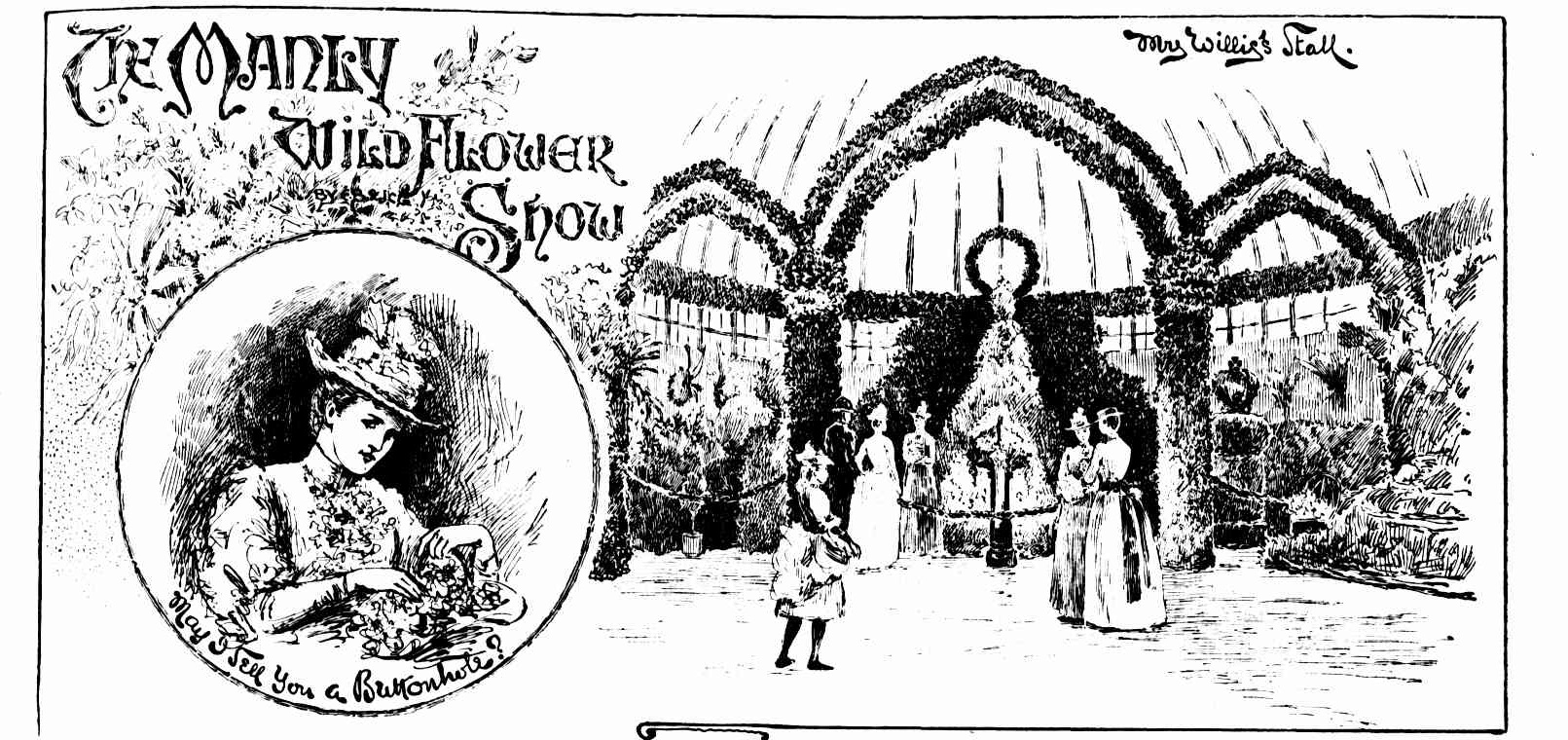
The show of wild flowers lately held at the pretty little watering place of Manly was a thing to be remembered as a gathering of the beautiful both in nature and art. It must be that all kinds of loveliness possess affinity, for that quality could not be attributed to the flowers alone ; the eye of the visitor straying frequently to the fair faces and figures that passed him, decked in robes which were sufficient to cause a Greek goddess to forswear her nudity.
Rich glowing colour was everywhere; in the clusters of Waratahs which graced the greenery of decoration pillars, in the dress materials which flitted between the fern fronds of the rockery, in the giant lilies which towered above their fellows, and in the features of the flower sellers as they charmed victims to their doom, forcing them to disgorge whatever they had about them, and decorating them for the sacrifice in countless bouquets. The band of the 1st. Regiment was in attendance in the grounds, and above the hum of many voices rose the sound of music softened by distance, inducing a soothing effect upon the male portion of the visitors, which lulled them into a false sense of security from which they awoke but to find that the combined attractions of flowers and faces had stripped them of their wealth.
On entering the pavilion, the exterior of which somewhat resembles the Mormon Tabernacle at Utah, one found oneself in a building decked to the roof in flowers and ferns, whilst in front a wing extended where rock lilies gleamed amongst a wealth of native foliage. To the right and at one end of the main building the principal feature was a stall presided over by Mrs. Willis, assisted by Mesdames Ger-man and Ridge, and the Misses Hamilton, Biddulph, Lovegrove, Drake, Wilson, Deuchar, M'Kenzie, Shaw, Wadsworth, Thomson, Willis, and Hawkes.
This arbour of beauty was separated from the public by three splendid arches com-posed of lilly-pilly leaves and berries, faced with clusters and columns of waratahs and pink heather. The interior radiant with masses of yellow and white rock lilies, native roses, boronia, heaths and cabbage-tree palms, arranged in a most artistic manner.
Opposite to it a stall of some-what similar proportions and style was presided over by Mrs. A. Morris and Miss Miller, assisted by the Misses Gore, Docker, Morse, and Hoskings. The principal feature here was a bank of flowers at the back, capped with a plume of feathers of rock lilies resting upon a background of zannias, whilst a pyramid of blossoms, topped with a fountain, occupied the centre.
To the right and left of the entrance were two exquisitely decorated stalls, presided over respectively by Mrs. Smedley, assisted by Mrs. Watson, the Misses Russell, Campbell, Jenner, Watson, Grafton, Scarr (2), Lyne (2), Kirkby, and by Mrs. Ritchie, who has for her assistants Mesdames Farmer, Garde, and Harris, and the Misses Orr, Richards (2), Montague, Hoskings, Russell, and "Watson. Both of these stalls were perfect bowers of blossom and fern, reflecting the greatest credit upon the taste of the proprietors ; indeed, the labour which the arrangements must have entailed throughout speak volumes as to the indefati-gable qualities of the so-called 'weaker' sex.

Passing into the fernery, under arches of mosses, lilies, and greenery, beautiful in design-the work of Mrs. Townsend-one passed on to 'Fernholm,' where Mrs. Chamberlain and the Misses Pym, aided by the Misses Gibbes, Wilshire, and Stevens, reign supreme. Here was a bush scene of a swagman camped out, apparently undisturbed by a phenomenal fall of gigantic leaves, any one of which, striking him, would be calculated to do him grievous bodily harm. The idea was exceedingly novel and interesting, and was carried out, as far as possible, with due regard to detail.
At the next stall Mrs. C. R. Austen and Mrs. T. C. Haylock presided, assisted by Mrs. Craven, the Misses Craven, Ada Austen, Lillie Austen, Robinson, Hack (2), Eastwood, Morgan-Williams, Haylock, Hensley, B. Kilminster, and E. Kilminster. Everyone has experienced the effects of the craze for wall decorations, consist-ing of embellished gin bottles, frying-pans, rolling pins, etc., but here we come upon the Ultima Thule of this eccentric taste, a severe parody on the society and fads of the day, in the shape of a hand-painted boot of antique structure, now turned into a flower vase. There is more pathos, however, about an old boot than an empty liquor flask. It was once a sturdy, matter-of-fact sort of foot covering ; now, with its painted toe, and gaudy pink silk lace, with flowers and ferns waving above it, there was something of a want of reverence about its look, against which the yawning holes gave feeble protest. Underneath this exhibit were printed on a card the following words :
By dainty foot I have been worn
O'er hill, or vale, at eve, at morn,
In mazy dance, at banquet hall,
Now finding rest on flower stall.Tho' old and worn, yet you will find
Art and beauty in me combined,
Transpos'd by chance from mud or snow,
To grace a Manly Flower Show.
A distinguished personage who was present suggested the change
Transpos'd perchance by many a toe.
At a stall adjoining Mesdames Haylock and Austen's display is one presided over by Mrs. Bow, assisted by the Misses Eox (2), Shorter, Ahronson (2), Graham, Bow, and other ladies. The stall is exceedingly prettily arranged, with the words ' Consider the Lilies ' worked in flowers upon a crimson ground. Besides the stalls a refreshment tent is conducted by Mesdames Tibbits, Barton, and Moore. A maypole dance, performed by a number of little girls dressed in Watteau costume, takes place in an ad-joining tent, and is superintended by Mesdames Lowe, Mostyn, Hawkes, and Miss Rolfe.
The very greatest credit is due to the mayor of the borough (Mr. J. Cameron), Mr. C. W. Marshall (hon. sec.), Mr. Et. M. Shannon (assistant hon. sec.), and Mr. C. GK Warburton (hon. treasurer), who carried out the arrangements connected with the holding of this exhibition.
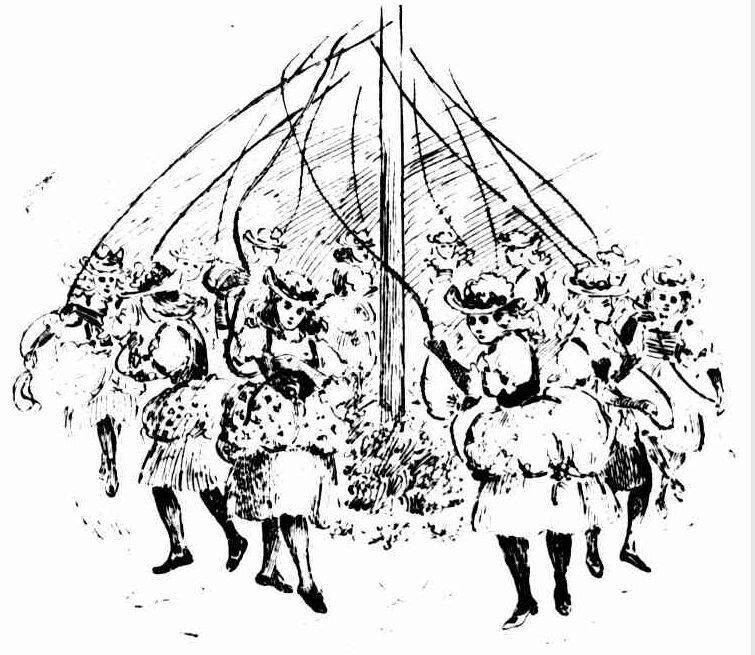
THE MAY-POLE DANCE.
The MANLY WILD FLOWER Show (1889, September 19). Illustrated Sydney News (NSW : 1881 - 1894), p. 15. Retrieved from http://nla.gov.au/nla.news-article63622020
HARPER. — March 7, at Fernholme, Manly Vale, Maria Grafton Harper, beloved wife of W. A. Harper, aged 58 years. Family Notices (1894, March 8). The Sydney Morning Herald (NSW : 1842 - 1954), p. 1. Retrieved from http://nla.gov.au/nla.news-article13943244
WANTED, 100 White Leghorn Pullets. Price, with particulars, to Flemming, Fernholme, Manly. Advertising (1898, March 13). Sunday Times (Sydney, NSW : 1895 - 1930), p. 11. Retrieved from http://nla.gov.au/nla.news-article125522621
HAMLET.—Feb. 14th, 1900, at her residence, Fernholme, near Manly, the wife of William M. Hamlet, Government Analyst, of a son. Family Notices (1900, February 17). The Daily Telegraph (Sydney, NSW : 1883 - 1930), p. 1. Retrieved from http://nla.gov.au/nla.news-article237178091
STATE PARLIAMENT v. MANLY C.C.
An eleven representing the Parliament of New South Wales played the Manly and District Cricket Club on Monday, and won by 198 runs. The Manly team had a warm time, for their opponents scored 256, G. S. Briner being top scorer with 75. Then, owing to' the accurate bowling of J. Storey and W. J. Ferguson, they were disposed of for 57, five of the batsmen failing to score. STATE PARLIAMENT v. MANLY C.C. (1902, December 10). The Australian Star (Sydney, NSW : 1887 - 1909), p. 2. Retrieved from http://nla.gov.au/nla.news-article228946574
CURL CURL DAIRY.
This is the property of Mr. Alexander Ralston, a worthy Scotsman, and is situated on a creek of the same name, about 2½ miles from Manly on a sweeping bend of the road to Narrabeen. The farm comprises 17 acres, 10 of which are under maize, sorghum and oats. It is a well sheltered spot, and is comparatively immune from the fierce, westerly gales.
As a dairy it is unique in the experience of your correspondent, as its cows, of which there are 60, are hand-fed, are milked regularly all the year round, and are regaled, head to head, from two rows of bails. The cows are simply in splendid condition, and compare favourably with those which are nourished only on the native grasses. They are milked twice a day, and twice a day the sweet, fresh milk from them is carted into Manly and duly delivered to customers. A shed 80ft. by 24ft. and 12ft. high, is used for storing the fodder.
There is an engine for chaff-cutting and other matters, and the water required, for general purposes, is pumped up by a windmill from Curl Curl Creek through a quarter of a mile of piping. The home at the dairy is spacious and lofty, and, as befits a dairy, is kept scrupulously clean. A genuine scotch hospitality is dispensed here. Adjoining the Curl Curl dairy is what is known as Fernholme egg farm, a model of enterprise conducted by Mr. T. A. Hutchinson, of which more anon. CURL CURL DAIRY. (1906, May 18). Albury Banner and Wodonga Express (NSW : 1881 - 1938), p. 15. Retrieved from http://nla.gov.au/nla.news-article100677849
In 1906, it was necessary to supplement the local Manly Dam water supply by connecting it with the metropolitan system (supplied by the Upper Nepean Scheme). This was done by installation of a main from Condamine Street connected to a reservoir in Brady Street, Mosman under Middle Harbour, at the Spit.
Department of Public Works, Sydney, 22nd August, 1907
"WATER AND DRAINAGE ACT, 1902," AND "WATER AND DRAINAGE AND ARTESIAN WELLS (AMENDING) ACT, 1906."
"CURL CURL LAGOON DRAINAGE TRUST."
Notification of proposal for the construction of works of Drainage, and the constitution of a Trust for maintaining, administering, and extending such works.
WHEREAS Section 6 of the " Water and Drainage Act, 1902," provides amongst other things that in respect of any works of drainage the Minister (that is, the Secretary for Public Works) shall notify in the manner therein enacted proposals for the construction of such works, and the constitution of a Trust for maintaining, administering, and extending such works : Now, therefore, I, The Honorable Charles Alfred Lee, the Secretary for Public Works for the time being in and for the State of New South Wales, in pursuance of the powers conferred upon"me by the hereinbefore in part recited section of the last-mentioned Act and by the 4< Water and Drainage and Artesian Wells (Amending) Act, 1906, and of all other powers me hereunto enabling, do hereby notify that it is proposed to construct the works of drainage referred to in the proposal hereto, and to constitute a Trust to l»e called and known as the "Curl Curl Lagoon Drainage I rust, for maintaining, administering* and extending such works, in accordance with the particulars set forth and described in the proposal hereto, that is to say :—
The proposal hereinbefore referred to is as follows :—
(a) Resumption of the purposes for which proposed to constitute the Trust:—To prevent the water resulting from heavy rains accumulating and to discharge same into the ocean.
(b) Plan and description of the works and of the land, whether covend with water or not, to be taken or acquired for the purposes of such works and their cost or estimated cost .—
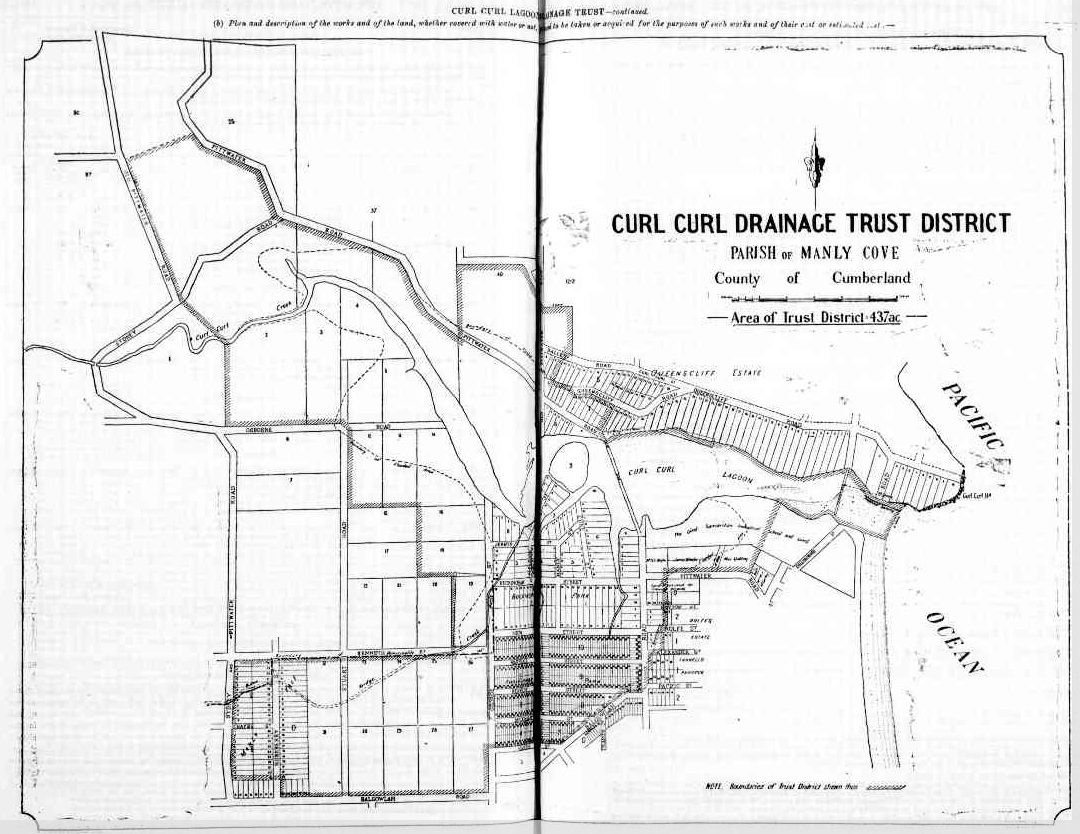
%20-%20Copy.jpg?timestamp=1573855072578)
.jpg?timestamp=1573855097347)
(II.) Description of the works :—Opening a channel through the sand bar at the mouth of the Lagoon.
The works above described are subject to such deviations and modifications of route as may hereafter be deemed necessary.
(III.) Estimated Cost of the Work ... ... ... ... ... ... ... ... ... £20
(c) Rate of interest, which shall be paid by the Trust:—£4 per centum per annum.
(d) Charges to be paid by the Trust fur water to be supplied by the Crown, and the conditions of such Supply :—No water is to be supplied by the Crown.
(e) Maximum rate which may be assessed by the Trust :—One shilling per acre per annum.
(f) Description of the Trust District :—
All that area or tract of country comprising part of the parish of Manly Cove, county of Cumberland, State of New South Wales: Commencing at the intersection of a north-western side of Balgowlah Road with the northern side of Harris-street, "Addiscombe Park Estate " subdivision ; and bounded thence, bearing generally westerly, by the northern side of the said Harris-street, a line, part of the western side of George-street, southerly, part of a northern side of Balgowlah Road, to the eastern side of Roseberry-street, part of that side of that street to the south-western corner of allotment 23, section D, of the " Manly Vale Estate," a line and the southern boundaries of allotments 19 and 10, section E, to the Sydney and Pittwater Road ; thence northerly, by part of the eastern side of the last-named road, to Kenneth Road, by part of the southern side of that road easterly to the north-western corner of block 26, a line northerly and the eastern and northern boundaries of block 20, the eastern boundaries of blocks 17 and 15, and the northern boundary of the last block to Stuart Road, part of the eastern side of that r ad to the north-western corner of block 12, a line to the southeastern corner of block 3, part of a northern side of Osborn Road westerly, the eastern boundary of block 1, a line across Curl Curl Creek to the intersection of a south-eastern side of Sydney Road with the prolongation south-easterly of a north-eastern side of Old Pittwater Road, a line and part of that side of that road to its intersection with the prolongation easterly of a southern side of a road separating blocks 86 and 87, a line at right angles to a north-eastern side of Old Pittwater Road, already described, north-easterly to Pittwater Road, by south-western sides of that road generally south-easterly to the western boundary of block 40, a line northerly, part of the western boundary of block 40, the north and north-eastern boundaries of that block, and a prolongation to the eastern side of Old Pittwater Road, a line due east 5 chains, a line due south to Dalley Road, a line south-westerly to the north-western corner of allotment 10, section 5, of the "Queenscliff Estate,'' the northwestern and southern boundaries of that allotment, the southern boundaries of allotments 11, 12, and 13, a line to the north-western corner of allotment 43, section 1, the north-eastern boundaries of allotments 43, 42,41, 40, 39, 33, 37, and 36, and the south-eastern boundary of the last-mentioned allotment to a north-eastern side of Pittwater Road, by an eastern side of that road to high-water mark in Curl Curl Lagoon, by h.w.m. in that lagoon easterly to a point on the ocean, 9J chains at right-angles easterly from the footbridge, a line south-easterly to low-water mark on the ocean ; thence by line southerly 9 chains; thence by a line westerly to the Good Samaritan Industrial School and land property, by part of the northern boundary of that property to its intersection with the prolongation northerly of the south-eastern boundary of Miss Spalding's land ; by that prolongation and thence; south-eastern boundary of the said Miss Spalding's land to a northern side of Pittwater Road, part of that road westerly to the south-east corner of Mrs. Baylis' land, a line and the western boundary of allotment 21, section (I, of a subdivision, a line and the western boundary of allotment 5, section 2, Rolfe's Estate, a line, the western boundary of allotment 4, section 1, a line, the western boundary of allotment 20, section 1," Farrell's Paddock," the northern and western boundaries of allotment '22, a line to the south-eastern corner of allotment 61, section 9, " Addiscombe Park " Estate, and a northern and south-western side of the aforesaid Balgowlah Road, generally south-westerly to the point of commencement—as shown on the accompanying plan, having an area of 437 acres, or thereabouts.
(g) Number of Trustees, being either three or five :—Five.
(h) Number of years within which the cost of the work shall be extinguished by a sinking fund :—One.
Given under my hand, at Sydney, this 22nd day of August, in the year one thousand nine hundred and seven.
J. A. HOGUE,
For Secretary for Public Works.
Sim:. Section 8 of the Act enables that if, within eight weeks after the notification of any proposal, a petition is presented to t'ic Minister signed by at least one-third in number of the occupiers of Crown land, including homestead selectors, conditional levees, and settlement leesees, and owners of other land within the proposed Trust District, objecting to the proposal, he shall refer the proposal to the Board for inquiry and report."
Section 9 reads—
(1) If within the said period no such petition is received, or if the Board reports in favour of the proposal, with or without modifications, the Governor may constitute the Trust with such modifications of the proposal as the Board may recommend, or, where no reference is ma<lu to the Board, with such modifications as the Minister may think fit.
(2) The constitution of the Trust shall be notified by the Minister in the Gazette.
(3) Upon such notification the conditions of the proposal, with such modifications (if any) as aforesaid, shall be binding on the Trust and on the Crown ; and the Minister may, out of the funds raised under this Act, carry out the works described in the proposal. "WATER AND DRAINAGE ACT, 1902," AND "WATER AND DRAINAGE AND ARTESIAN WELLS (AMENDING) ACT, 1906." (1907, August 28). Government Gazette of the State of New South Wales (Sydney, NSW : 1901 - 2001), p. 4894. Retrieved from http://nla.gov.au/nla.news-article226594977
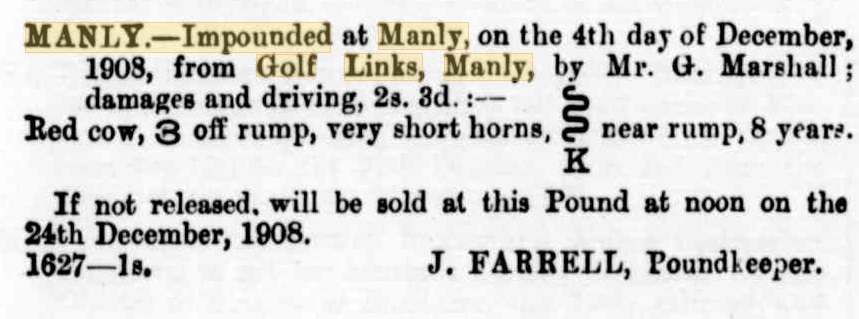
MANLY.—Impounded at Manly, on the 4th day of December, 1908, from Golf Links, Manly, by Mr. G. Marshall; (1908, December 9). Government Gazette of the State of New South Wales (Sydney, NSW : 1901 - 2001), p. 6623. Retrieved from http://nla.gov.au/nla.news-article226596551
GOLF.
BY MASHIE-NlBLICK.
NOTES.
Over sixty lady golfers took part in the opening competitions on the new course for associate members at Kensington. They all spoke in most flattering terms of the course, and its possibilities when its newness wears off, and a few more bunkers are scattered about to catch stray shots. Sydney has long ! been in great need of a first-class course for ladies, one which they can have all to themselves. It must be admitted that, in the past, they have been shoved too much into the background, and any course has been deemed good enough for them.
Speaking of ladies' links reminds me that Lord Moncrieff, who died a few weeks back, was one of the first to sound a note of warning to the lords of creation of the coming invasion of the links by woman, and he was amongst the earliest to advocate the establishment of ladies' links. Discussing the 'abstract right of women to play golf at all,' he wrote as follows ' (nearly twenty years ago):
'I have always advocated a liberal extension of the right of golfing to women. Not long ago their position was degraded. Bound to accompany their lords and masters to golfing resorts for the summer, months, they had to submit to their fathers, husbands, and brothers playing golf all day and talking golfing shop the whole evening, while they themselves were hooted off the links with cries of 'Fore,' if they ventured to appear there.'
Matters have greatly changed since those lines were written, and ladies' golf is now at a very high standard in England. In New South Wales we have a fairly large number of lady players, and the play of several of them will favourably compare with that of the leading lady players in the old country, but we should like to hear of more young gills taking up the game. I trust that the opening of this new course will induce any waverers to take up the game without further ado.
Results of opening competitions were:— The foursome handicap (bogey) resulted in a win for Misses Trevor-Jones and Boys (handicap 6), with a card of 2 down, and Misses F. Wray and F. Christoe (handicap 6) were runners-up with a card of 3 down. The putting competition resulted in a tie between Miss Una Clift, Miss F. Wray, and Mrs. Hill, and in the play off, Miss Clift won the first prize, and Miss Wray the second. These trophies were presented by Mr. D'Arcy, the captain of the club. The popularity of open competitions was further demonstrated on Saturday, when one hundred golfers took part at Bonnie Doon in the open competitions arranged by that club.
The Bonnie Doon Club is so noted for the excellent way in which it conducts this sort of business that it was only to be expected the meeting should be an unqualified success. The professionals' stroke competition (38 holes) brought forth XI competitors, and D. G. Soutar gave us one of the best exhibitions of good, sound, solid golf that has vet been witnessed in these parts. From first to last he played well within himself, and with that easy confidence which spells success. He was very accurate from the tees, and his approaching and putting were never at fault. He returned the best card both in the morning and in the afternoon— 73 and 74 respectively — and his grand total for the day, 147, was 11 strokes better than any other score. In addition to winning the five guineas prize for the 30 holes competition he secured the special prize of two guineas for the best single round with a card of 73. Frank O'Brien and J. Donald, who carried off first and second prizes a month ago at Killara, tied for second place on Saturday. In the morning O'Brien was 7 4 and Donald 76, and in the afternoon Donald was SO to O'Brien's 84, thus they tied with 158. In the play-off (9 holes), both played splendidly, and Donald got the verdict by one stroke. The leading scores (gross) were:— D. G. Soutar (Leura), 73; 74=147; J. Donald (Manly), 78, 80=158; F. O'Brien (Killara), 74, 84=158; Carnegie Clark (Royal Sydney), 81, 76=159. East was 104, and Popplewell 166.
Of the younger professionals Charlie Campbell did well to get 167. Early starters in the open bogey competition for amateurs had a slight advantage over the competitors In the afternoon, when the wind was a bit troublesome. The best cards were:— Dr. R. J. Pope (lidcp. 3), 3 up; H. W. M'Lelland (1), 2 up; A. Orr (4), 1 up; W. Tilley (6), 1 up; R. Aitken (3), sq; J. Wilson (8), sq; P. R. Russell (8), 1 down; R. M'Coy (7), 1 down; 0. L. Mackenzie (scratch), 2 down; J. Smith (I), 2 down; A. Mills (3), 2 down; C. A. Sinclair (8), 2 down; A. Core. (6), 2 down; H. R. Richardson (II), 2 down. Royal Sydney played a stroke competition, and the best ' cards were returned by: — I?. R. Graham, 89—9 *80; N. O. Lockhart, 95—13=82; H. Maeneil, 86—383, while A. G. Wesche (9) and A. E. Evans (8) were each 84 net. Australian Golf Club's bogey handicap was won by W. E. Read (hdep. 8), with an excellent card of 2 up, and A. E. D'Arey (lidcp. 1), W. McMurray (4), and H. B. P. Hepworth (i) tied for second place with square cards. O. H. O'Brien (scr.) was 1 down. There wag a batch of good cards in Hunter's Hill monthly medal, as will be seen by the following: — J. Buckland, 85—11=74; R. K. Manning, 94—10=76; R. Smith, 107 — 31=76; R. D. Fitzgerald, 82 — 5=77; A. S. Edwards, 87—10=77; R. L. Ranken, 85—7=78; F. Dubolse, 97—19=78; and R. J. Roberts, 86—7=79. A tie resulted in Dobroyde's monthly medal between J. M. Edwards, S9— S=S1, and J. Buchanan, 111—80=81; E. T. Jones was third with 102—18=84, and F. S. Shenstone (0), G. B. Robertson (10), B. Jones (12), W. E. Bain (15), and A. Mitchell (20) tied for fourth place with 85 net. Killara disposed of the first round of matches in their club's championship. The matches were over 18 holes, and there were no surprises. R. Colquhoun had no difficulty in beating M. C. Faviell 8 up and 2; E. J. Spriugthorpe easily defeated W. P. M'aschwitz by 7 up and 6. N. V. Pockley was 4 up and 3 in his match against A. Turnbull. C. E. Graham beat F. Amphlett 3 up and 2, and W. T. Macphcrson beat O. Rowe after a most exciting contest. They were all even at the 18th hole, but Macpherson secured the 19th, and with it the match. C. E. Cowdery secured a most meritorious win against II. G. Hyde by 6 up and 5. J. A. Thompson beat L. Upward 3 up and 1, and M. Tilbury was 8 up and 2 against G. J. Doyle. The second round will be played off next Saturday. Killara also played off their silver putting competition in both grades. Results: — A grade: C. E. Cowdery, 92—12=80; O. Rowe, 93—12=81; P. W. Pone. 88— 5=S3. B grade: D. B. Sheridan, 106—85=81; R. W. Gillespie, 103—18=85: C. W. Cox, 102— 18=86. Other competitions in and around Sydney resulted as follows : —Concord's quarterly medal: D. . Roxburgh, 108 — 27=76; R. H. Meares, 98 — 20=78.
Cammeray Olub (mixed foursomes): F. Alderson and Miss Doak (9), square; C. R. Grossman and Mrs. MacPhail (10), 3 down; J. Dcighton and Mrs. Furbar (6), 4 down.
Manly Club (mixed foursomes): R. W. Pritchett and Mrs. Duret (15), 7 down; J. S. Thorn and Mrs. Oliphant (13), 8 down; A. V. Hilliard and wife (18), 8 down. Drummoyne (stroke competition): H. Ireland, 1 101—20=81; A. N. Epps, 110—27=83.
Royal Sydney's Associates' (choice score) competition (nine holes) : Mrs. Thiel, 37—5=32; Miss Nea Mort, 40—5=35. | A.G.C. 's Associates' choice score event (nine holes): Miss F. Wray, 41— 3=oS; Miss F. Christoe, 44—5=39; Mrs. Lothbridge, 44 — 4=40; Miss F. Hill, 44 — 3=41. Newcastle Golf Club opened their season with ail 18 holes stroke competition, and J. W. Greaves secured an easy win with 85—9=74. E. A. Merewether was second with 80— 9*=fc0; then came G. North, 94 — 12=82; J. Burke, 86—8=83. The best gross scores were: — J. R. Hooper's 84, Greaves' 85, and J. Burke's 86. Goulburn opened its season with mixed foursomes, and Miss Walker and Hawkins, 89—8=81, secured first prize, and Mrs. Walker and Riley came next with 96—14=82. It has now been definitely decided that the Australian championship open meeting shall be held at Sandrington at the beginning of October. Mixed foursomes (15 holes) at Armidale were won by W. Cunningham and Mrs. Scott, 88—16=72, with Mrs. Cameron and E. Furness occupying second place with a card of 85—11=74. Mrs. Furniss and H. S. Mobs were third with 88 — 7—76. Mom Vale's . bogey competition was won by A. B. Johnson (bdep. 7), 2 up. Fitz W. Hillett) was second with a ft down card, and A. H. Garraway (61 Was third with a Mark down'. GOLF. (1909, April 28). The Sydney Mail and New South Wales Advertiser (NSW : 1871 - 1912), p. 59. Retrieved from http://nla.gov.au/nla.news-article164293845
GOLF.
MANLY G.C.
PROFESSIONALS' SCRATCH COMPETITION.
SOUTAR AND POPPLEWELL TIE.
Under perfect weather conditions a scratch competition of 36 holes, for professionals, was played on the above course yesterday. A number of spectators watched the play which was of an interesting character throughout. The result was a tie between D. G. Soutar and F. Popplewell, at a total of 153 each for the two rounds. Popplewell in the morning did an excellent round of 76, made up as follows -Out: -4, 6, 4, 4, 5, 4, 4, 4, 3-38; home:3, 4, 5, 4, 6, 4, 4, 3, 5-38=76. This was the best performance before lunch, though closely followed by Carnegie Clark and D G Soutar whose cards were 77 each. In the afternoon …. GOLF. (1910, May 26). The Sydney Morning Herald (NSW : 1842 - 1954), p. 12. Retrieved from http://nla.gov.au/nla.news-article15139462
ALDERMAN JAMES BONNER.
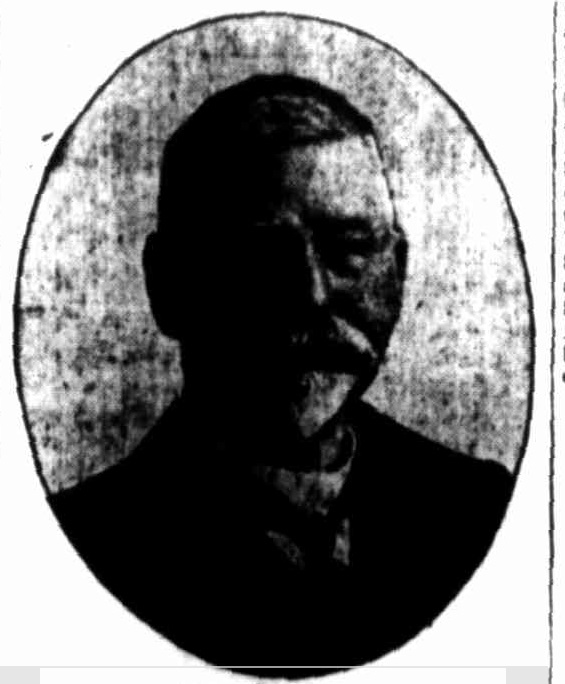
who has been elected Mayor of Manly for the fourth year in succession is a native of Exeter, Devosnshire, England and came to Australia In 1856— virtually a native of Australia. Fourteen years ago he purchased the business of Soutar and Martin, Globe Foundary, Ultimo, where he has carried on business ever since. In 1901 Mr. Bonner visited all the Iron Industries in Great Britain. As showing the magnitude of his business, Mr. Bonner supplied all the ironwork used in the construction of Messrs Anthony Hordern's new buildings in George-street, also the water cranes at the Central Station. Three years ago, in response to numerous requests, he consented to contest the Fairlight Ward in the Manly municipality, and was elected unopposed. He was also elected Mayor without opposition, a position he has held for the last three years. At the last election he was returned at the head of the poll. Mr. Bonner has done much towards the progress of Manly. One of the most important works to his credit is the Manly Town Hall. He has also occupied the position of President to the Manly Bowling Club for the past three years and was president of the Ironmoulders Association of New South Wales. Before settling down in New South Wales he travelled the whole of the states, Tasmania and New Zealand. NEW MAYORS. (1911, February 10). Evening News (Sydney, NSW : 1869 - 1931), p. 10. Retrieved from http://nla.gov.au/nla.news-article113936919
D. G. SOUTAR
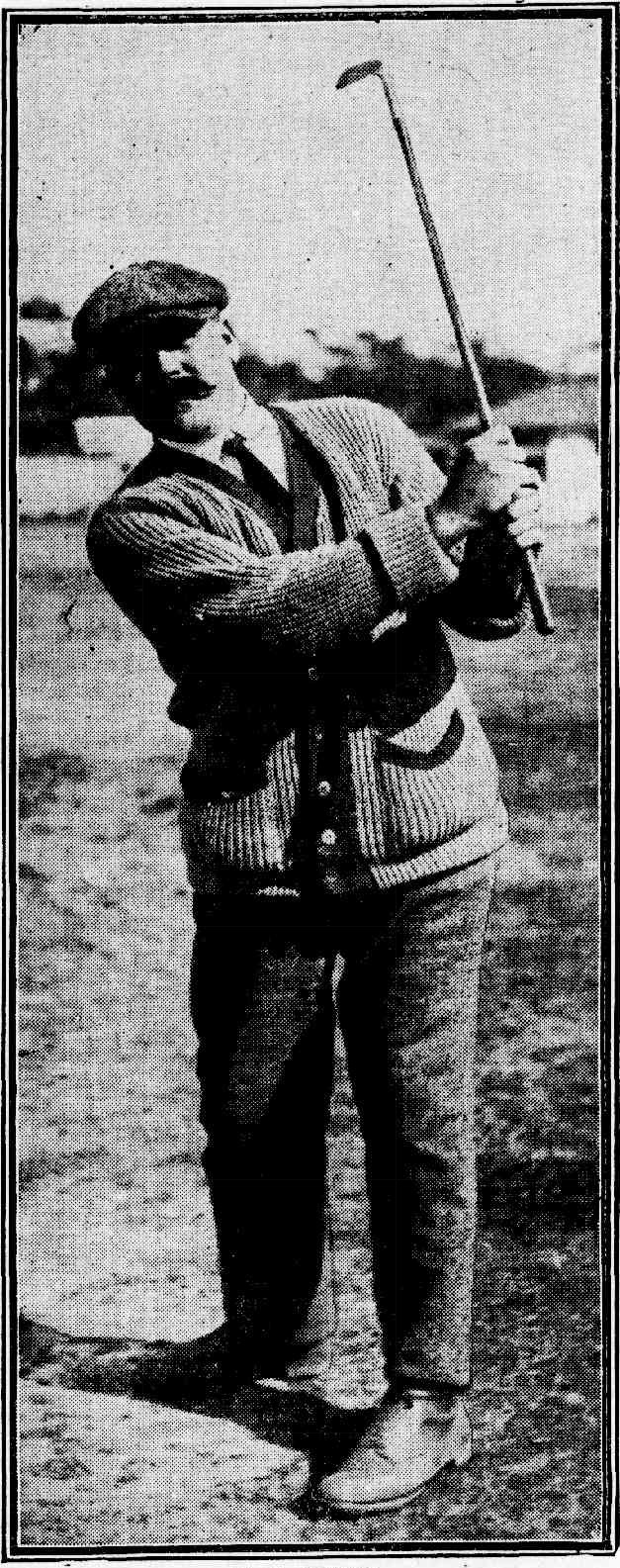
Winner of the golf match for professionals at Manly yesterday. Soutar has a remarkable record for consistency. The Australian open championship was Instituted in 1904. That year he finished third. In 1905 he won, the previous year's champion, Hon. M, Scott, finishing second. ' Then for five years in succession, 1906-7-8-9-10, he was the runner-up. Last year he was third. , Before becoming a professional, Soutar played as an amateur, and in 1903, and again In 1904. he won the amateur championship of New South Wales'. It Is probable that soft courses suit him better than hard ones, for his drive is all carry, while he is an adept at the pitch mashie shot. He Is also a consistently good putter. He has recently discarded the cleek in favor of a spoon, with which he does effective work through the green. PROFESSIONAL GOLF. (1912, August 22). The Daily Telegraph (Sydney, NSW : 1883 - 1930), p. 4. Retrieved from http://nla.gov.au/nla.news-article238632216
PHENOMENAL GOLF.
The match between Joe Kirkwood, at Manly, and Reg Clark, of Rose Bay, for £10 a-side, 36 holes, at Rose Bay, and 38 holes at Manly, was commenced at Rose Bay on Monday, when Kirkwood played in phenomenal fashion. Over the 30 holes he finished no less than 13 up on his older rival. In the morning he went round in 77, but in the afternoon he considerably improved upon this effort, his round being 68. This equals Carnegie Clark's record for the course.
The 30 holes at Manly will be played to-day. Kirkwood is employed in Soutar's shop at Manly. He is still a youngster. He is growing quickly, and in recent months has added considerably to the length of his drive. He gets a run on his ball from the tee with a slight hook, and is particularly accurate through the green. His approach shots of the pitch variety are a strong part of his play, and he loses nothing on the greens. All courses seem to come alike to Kirkwood, who, on Saturday, was 3 up on bogey from the plus 2 mark at Concord. PHENOMENAL GOLF. (1914, June 4). Clarence and Richmond Examiner (Grafton, NSW : 1889 - 1915), p. 8. Retrieved from http://nla.gov.au/nla.news-article61630411
BONNIE DOON V. MANLY.
LAST SATURDAY'S GAME. PERFORMANCE OF R. SAYERS. D. G. Soutar reviews last Saturday's golf at Manly, discussing the game of several notable players.
The postponed matches between Manly and Bonnie Doon, In 'the A. and B grades, were played last Saturday, and resulted In a narrow win for the visiting teams. The A teams played at Manly and the B teams at Bonnie Doon, and strange to say the result was a win by five matches to four in each case. Considerable Interest was taken in the match at Manly, as a win for Bonnie Doon would place that team in a very strong position for the premiership, while a defeat would put Manly out of the running altogether.
The links were rather soft after the recent rains, but taking everything Into consideration were in very good order. Little or no advantage was obtained by local knowledge, very often an Important factor in these engagements. The morning gave every promise of an ideal, day for golf, but, unfortunately, the rain came down towards midday, and continued off and on all the afternoon, being only heavy enough to make conditions unpleasant without interfering with the play.
Bonnie Doon had out- their strongest team with the exception of L. W. Mogg, who, I am sorry to hear, is on the sick list O. H. O'Brien, ex-State champion, and on his day the best player New South Wales has produced, and Dr. Gordon Craig made, I think, their first appearance for their club this season. On paper Manly had a strong team, but it could have been improved upon. To anyone who follows the doings of the various teams the most prominent feature is that the same team nearly always represents each particular club, regardless of whether the men are playing up to form or not. Any change Is usually due to sickness or players being unavailable. With some clubs, of course, It Is a case of "needs must," but with Manly it is not so, as they have such a strong reserve to fall. back upon. I think the reserve could have been called upon with advantage for the match against Bonnie Doon.
The Manly B team is a notoriously strong one, and it is common knowledge that some of the members have been putting up better performances than their confreres in the A team. Of course. It may have been that the selectors did not wish to weaken the B team and thus make' a certainty of winning that grade, but it should be kept in mind that the A grade premiership is the blue ribbon of suburban golf. Defeat by Bonnie Doon meant that -the chance of winning that blue ribbon was gone as far as Manly were concerned, as they had already been defeated by Killara. On the' other hand, a defeat did not mean that the B team was out of the running, but only that their position was jeopardised, and they would have to fight hard to win.
The most pleasing feature from the Manly point of view was the return to form of J. B. Ferrier, and the meritorious win by R. Sayers over Dr. Gordon Craig. J. B. Ferrier has not played up to his form for some time past, but on Saturday he played very well, especially from a match point of view. He had two bad holes, taking six for the second — although he won the hole — and seven for the fifth, and reached the turn in 39, and a lead of four up. He played steadily coming home, and eventually won by five up and four to play, a very decisive win. In all fairness to T. E. Howard, It must be admitted that he was far from well, and his putting suffered in consequence. He was driving and approaching well, but missed three or four very short putts.
R. Sayers is a striking example, If any example Is required, of the benefit to the game through encouraging the young and promising players. Last year he was In the C team, and at the beginning of this season It was doubtful whether he would get his place in the B team, there being six candidates for the last four places. By sheer merit he was awarded a place, and never looked back afterwards. He continued to do well In competitions, and actually qualified first In the club championship. He was subsequently beaten in the match play stage, but only on the last green, after a very strenuous match with G. S. Freeman. When a vacancy occurred in the A team he was awarded the place, and right well did he justify his Inclusion. Most young' players would have felt awed at the task of playing against a good and seasoned player like Dr. Gordon Craig, but it was not so in his case. He played up to form, and soon placed the issue beyond doubt, winning very comfortably by five up and three to play. It was the most meritorious win on either side, and the congratulations at the finish were genuine and hearty. Another good win was that of O. H. O'Brien over D. G. Ferrier, as the latter has been doing very well over Manly lately.
By their win Bonnie Doon have considerably strengthened their prospects of winning the premiership, although they will have to play their best and not leave anything to chance when they meet Dobroyde on the latter club's links. Dobroyde is just the type of team to upset calculations, as in W. C. Sturrock, Dr. G. B. Thomas, K. Harrison, and F. S. Shenstone they have four players who can always be depended upon to do well on "their own links. .It only requires a surprise victory or two to put the team In a 'winning position. As I predicted at the beginning of the season, I expect Bonnie Doon to win, although there is no certainty about it. But one thing Is certain— their win would be a popular one, as they have tried hard for the past ten years and have been unsuccessful, so that It Is up to them to record a win. BONNIE DOON V. MANLY. (1914, July 28). The Sun (Sydney, NSW : 1910 - 1954), p. 3 (FINAL EXTRA). Retrieved from http://nla.gov.au/nla.news-article229864796
MANLY LAGOON
To save their garden areas from being flooded Chinese gardeners during the week opened the sand bar at the mouth of the lagoon adjoining the Curl Curl Beach, Manly, to the sea. The lagoon carried a fine body of water, and when the channel was cut it spee-dlily tore a passage fifteen to twenty yards wide and eight feet deep. While much of the fish and crustacean life in the lagoon escaped to the sea, it is expected there will be an inrush of whiting, mullet, and tailer. MANLY LAGOON (1919, May 11). The Sun (Sydney, NSW : 1910 - 1954), p. 9. Retrieved from http://nla.gov.au/nla.news-article221450874
'Appy' Eyre
TO have represented New South Wales at football and thus duplicated the performance of his father is one of F. P. Eyre's claims to fame. But another is his victory in the Australian Open in 1930. Boisterous weather made the contest just as much an endurance as a golfing test. Eyre survived both, and can look back with pride and satisfaction on a magnificent performance.
Eyre — known to Manly people as 'Appy, after his father, who was the first life-saver on that famous beach, and who for years rendered yeoman- service in that direction— also figured prominently in match events. My first recollections of Eyre are as a footballer. A tall, rangy lad, few would recognise him now as the Eyre of the football field. Now he is as burly as an American wrestler. Cheerful, with a fine philosophy of life,, Eyre is very popular with his members at Long Reef. He is a born humourist and always ready for a practical joke. At Dubbo, where the professionals enjoy themselves during the Easter tournament, 'Appy is the life and soul of the party. Oh one occasion he returned to the hotel at which the visitors were staying and called out 'Fire ! ' When everyone turned out he calmly told them 'the fire was in the grate:' . Their comment's on his conduct have ..never been published. . '... There was the time, too, when, after * a certain incident concerning the opening of a famous bridge, he introduced a friend as the unofficial actor to mine host in the presence, of a large number of fettiers whose sympathies were decidedly against the person concerned in the incident. Fortunately, mine host was a man of quick decision and in a trice had the visitors in another room. Eyre in his early golfing days was most erratic, but he was wonderful at' recoveries. I remember telling his friend 'Bill' Corry about his skill in this direction. 'Well,' said Bill, with a twinkle, 'he should be. He gets enough practice, you know.' But I always think Eyre's remark after a disastrous round worth repeating. A friend was sympathising with him when- Eyre cut him short with: 'I'm not worrying, old man. I know I'm good.' That remark earned roars of laughter from his friends, though many, not knowing him, would be inclined to think the speaker was rather conceited about his prowess. But Eyre, though a fine player, knew his limitations. GOLF: (1938, August 10). Sydney Mail (NSW : 1912 - 1938), p. 24. Retrieved from http://nla.gov.au/nla.news-article166526371
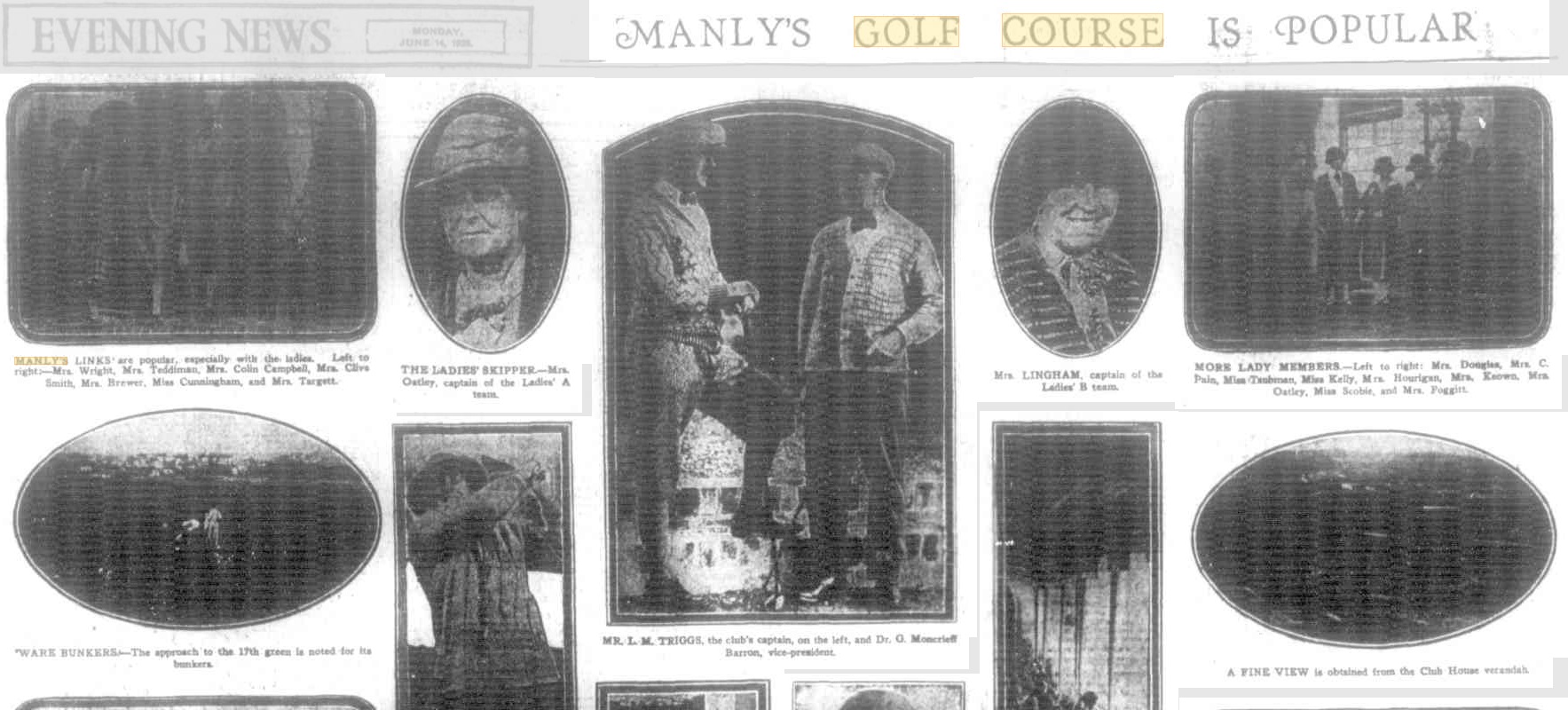
.jpg?timestamp=1574727718588)
MANLY'S GOLF COURSE IS POPULAR (1926, June 14). Evening News (Sydney, NSW : 1869 - 1931), p. 12. Retrieved from http://nla.gov.au/nla.news-article114384301

JOE KIRKWOOD is a camera addict. Here he is filming Walter Hagen playing at Manly. No title (1930, March 10). Daily Pictorial (Sydney, NSW : 1930 - 1931), p. 3. Retrieved from http://nla.gov.au/nla.news-article246125157

Fairfax Corporation. (1920). Golfer Joe Kirkwood with a camera, New South Wales, ca. 1920 Retrieved from http://nla.gov.au/nla.obj-157535255
GREEN PESTS.
BLACK BEETLES PREVALENT.
Green committees and greenkeepers generally have much to contend with from pests This year black beetles are causing them some trouble Last year crickets were the pests and although crickets are still in evidence on some courses, they have apparently been ousted by black beetles, which, in some quarters, have been very active on the greens.
Various remedies have been suggested to eradicate the beetles, the Manly Club finding the use of carbon bisulphide most effective. Injected Into the ground, the carbon bisulphide suffocates the beetles, according to the experts. Arsenate of lead has also proved effective, particularly at Roseville.
-Greenkeepers are wondering what the pest will be next year. Still, the report of the research committee, appointed by the New South Wales Golf Council, will be at their disposal, and It Is evident that the knowledge accumulated by that committee will be of Inestimable value to those who are en-trusted with'the difficult task of keeping the course and greens In a satisfactory condition. GREEN PESTS. (1932, November 2). The Sydney Morning Herald (NSW : 1842 - 1954), p. 17. Retrieved from http://nla.gov.au/nla.news-article16927259

Golf at Manly - taken for Golf in Australia Feb. 1939 Item: hood_18902h, courtesy State Library of NSW
Balgowlah
DONT BE FLATTERED!
FAST COURSES
GOLFERS AND THEIR SCORES
(By D. G. Soutar)
At this time of the year, especially when a dry spell is on, with the fairways becoming exceptionally fast and the rough thinner — In many Instances being burnt out — it is not surprising that low scoring is the order of the day. Saturday's golf results were cases in point. While congratulating the players who returned good, cards, it might do some good to warn them against accepting those scores as their true form. Every player who is keen upon improving his game should analyse his score, picking out the weak shots which failed to get trapped and the exceptionally good ones which he did not expect to bring off. With regard to the latter every player who can hit a ball reasonably well is likely to have two or three exceptionally good shots in a round, and, of course, the lower his handicap the greater number of good shots. He should not, therefore, discount these shots too heavily, but should rather look upon thorn as something ' likely to be repeated or even bettered. On the other hand, bad shots which flukily escaped trouble should, be debited with the loss of at least one stroke. It is well to be on the safe side, as, although shots have .been holed from hazards on the rough, It much more frequently happens that two strokes or more have been required to recover. While the back-markers improve their scores by a stroke or two when the courses ore fast, it is the middle and long markers who get the most advantage. Another type Is the short but accurate driver. He often finds the two-shot holes within his reach,' and a fair sprinkling of fours come his way, while the long holes are occasionally done in five. A case of the back-marker coming to light with a great round was R. Withycombe, of the Killara club, who from the scratch mark won the bogey competition easily with a card of 6 up. Although it Is rare that a back-marker stands out so prominently (the next card was 2 up), I was not at all surprised, as Withycombe is one of our most promising young players, who, on his day, can hold his own with the best of them. In addition,' Killara is in good order Just now, the fairways being very fast and the greens slow— an ideal state of affairs for a player in form.
GREENS LOOK WELL
I cannot remember having seen the Killara greens looking better, and Withycombe took full advantage of that fact. Tho same remark applies to Concord, where the policy of keeping a good growth of grass on the greens has been a huge success, and fair to everyone. The low scores at Moore Park were mainly due to the Saturday course being some threo strokes easier than tho full course. The alteration is necessary, as the cricketers occupy a small area of the course on Saturdays.
BALGOWLAH RE-OPENING
The Balgowlah course will be reopened on Saturday next with an exhibition four-ball best-ball match between D. G. Soutar (Moore Park) and Charlie Gray (Balgowlah) against P. Eyre (Long Reef) and C. E. Barnes (Manly). Laid out in Balgowlah Park, the course has only been in play since the beginning of the year, and is naturally in a rough state. To remedy this the course has been closed for a month, and the members have formed "working-bees" over the week-ends, the result being most satisfactory. Some of the greens have been enlarged, and the fairways cleared up generally.
A big roll-up of members is expected, and in the event of D. G. Soutar being unable to play his place will, In all probability, be taken by W. Corry.
On Sunday the Long Reef club will give a send-off to Charlie Gray, who leaves for America on the 18th, and an all-day match has been arranged. The sides will be D. G. Soutar and C. Gray (who has been under Soutar's guidance since he was quite a little chap) against P. Eyre and W. Corry. These players met in a friendly game last summer, when Eyre and Corry were victorious by a small margin, but Soutar and his youthful partner hope to reverse that result. The morning round will start, at 10.30, and the afternoon round at 2.30, and those desirous of witnessing a match between the best players will he assured of seeing an exhibition of good golf. All the players are in form, Eyre having a couple of weeks ago won the "Sun-Herald" £500 (the professional championship of Australia), while Soutar is the holder of the New South Wales championship. DON'T BE FLATTERED! (1926, November 2). The Sun (Sydney, NSW : 1910 - 1954), p. 5 (CUP EDITION). Retrieved from http://nla.gov.au/nla.news-article224130004
GALA DAY
— BALGOWLAH SPIRIT NEW CLUBHOUSE
(By D, G. Soutar)
Yesterday was a gala day at Balgowlah, when the new clubhouse was officially opened by Alderman A. T. Keirle, the Mayor of Manly.
In tracing the history of Balgowlah Park, Alderman Keirle expressed the view that up to a year or so ago few people were aware that such a fine area existed. Up to then the ground was covered with thick scrub and only a small portion of the park was cleared to lay down two cricket pitches and tennis courts, the rest being a wilderness. To Captain Whytock, one of the oldest and keenest players, the existence of the course is due. He saw the possibilities of making a fine little nine-hole course, and mainly through his efforts the Interest of the Manly Council was aroused, and to-day the club has a short but sporting nine-hole course which should prove a great nursery for future champions, because to play the course successfully good shots must be executed.
"WORKING BEES"
In order to get the course into the best possible order "working bees" have been formed, and they have been attended with great success, a considerable amount of cleaning up having been done and many of the greens remodelled. Alterations have been made to the course, and they have brought, about a decided Improvement. It only requires good soaking rains to crown their efforts with success. A four-ball-best-ball exhibition match was played between F. Eyre and E. Barnes and C. Gray and myself. The time at our disposal would allow only of nine holes being played, the match being followed by far and away the biggest crowd I have seen outside a championship event. The match was even and was enjoyed immensely by the large crowd, who appreciated the flashes of bright play, all of the players coming to light at some stage or other. Gray and I won by one hole, the beat-ball scores being as follow: — Soutar and Gray — 5 3 3 3 4 5 3 2 4 — 32.. Eyre and Barnes — -1 3 4 3 3 6 4 3 3 — 33. Bogey — 5 3 4 3 4 5 3 3- 4 — 34.
CLUB'S SUCCESS The distances of the holes are: — 1st, 333 yards; 2nd, 115 yards; 3rd, 210 yards; 4th, 176 yards; 5tli, 231 yards; 6tl), 440 yards;- 7th, 157 yards; 8th, 118 yards; 9th, 202 yards. Total, 2042 yards. ' Sir John Vicars umpired the mulch. . The success of the Balgowlah Club Is a striking testimony to the growth of the game. Formed less than a year ago, the membership (150 men and 100 women) is" full, and there 'is a fairly long waiting list. With this example the Manly Council and Warringah Shire should have no hesitation In going straight ahead with the proposed new links Immediately beyond the present Manly links. Success would be assured before the first "divot" was lifted. GALA DAY (1926, November 7). The Sun (Sydney, NSW : 1910 - 1954), p. 16. Retrieved from http://nla.gov.au/nla.news-article224132125
NINE HOLE COURSE OPENED
The Major of Manly (Alderman A. T. Keirle) on Saturday afternoon officially opined the new nine hole course at Balgowlah, and stressed the great value the links were to the district. Land in the vicinity of the new course, he said, had increased in value, and had given an impetus to building operations. The Manly Council and the Warringah Shire Council proposed to establish another course-the fourth in the district- Immediately beyond the present Manly links.
Mr. W. Scott Fell, M L.A., and Aldermen Barton and Quirk also spoke.
Captain W. Whitock is the president of the new club, and a considerable amount of volunteer work has been expended in making the links. The clubhouse is an attractive brick building, and the money to build it was advanced by the Manly Council, the club paying 8 ½ per cent, interest on the loan.
During the afternoon an exhibition four ball best ball game was played between K. Eyre and E. Barnes and C. Gray and D. G. Soutar. Only nine holes were played, and Gray and Soutar won by one hole, the best ball scores being: Soutar and Gray, 5, 3, 3, 3, 4, 5, 3, 2, 4-32; Eyre and Barnet, 4, 3, 4, 3, 3, 6, 4, 'Bogey li: 6, 3, 4, 3, 4, {, S, 3, 4-34. NINE HOLE COURSE OPENED. (1926, November 8). The Sydney Morning Herald (NSW : 1842 - 1954), p. 8. Retrieved from http://nla.gov.au/nla.news-article16316728
C. Gray, Balgowlah Professional, Bound for America
CHARITY MATCH. .
The principal event on Saturday will be an exhibition four-ball game at Moore Park, D. . G. Soutar and H. R. Sinclair . against Jr. Popplewell and W. Corry. A collection will be taken up for the Cancer Fund. The game should provide some fine golf and be well worth watching. The last charity match played there,' for a brother professional, gave great pleasure to a large gallery, and a substantial sum was raised.
GOING TO AMERICA.
. Mr. W. Whytock made a presentation to C. Gray, the Balgowlah ' professional on behalf of the members. Gray is going to America to join J. H. Kirkwood. Very popular with all the members, and, in fact, with everyone who knows him, his services will be greatly missed. It is always u pleasure, however, to see young and enterprizing young men get a chance of advancement. Gray will be sure to do well. GOLF (1926, November 17). Referee (Sydney, NSW : 1886 - 1939), p. 16. Retrieved from http://nla.gov.au/nla.news-article128103504
MRS. BREWSTER,
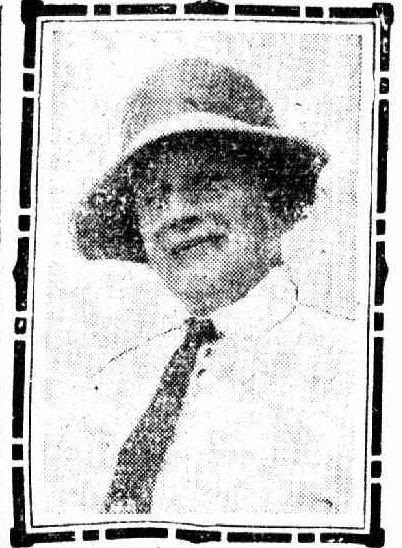
honorary secretary of the Balgowlah Golf Club Associates, at Manly. No title (1927, January 25). The Daily Telegraph (Sydney, NSW : 1883 - 1930), p. 10. Retrieved from http://nla.gov.au/nla.news-article245881919
BALGOWLAH GOLF CLUB BALL
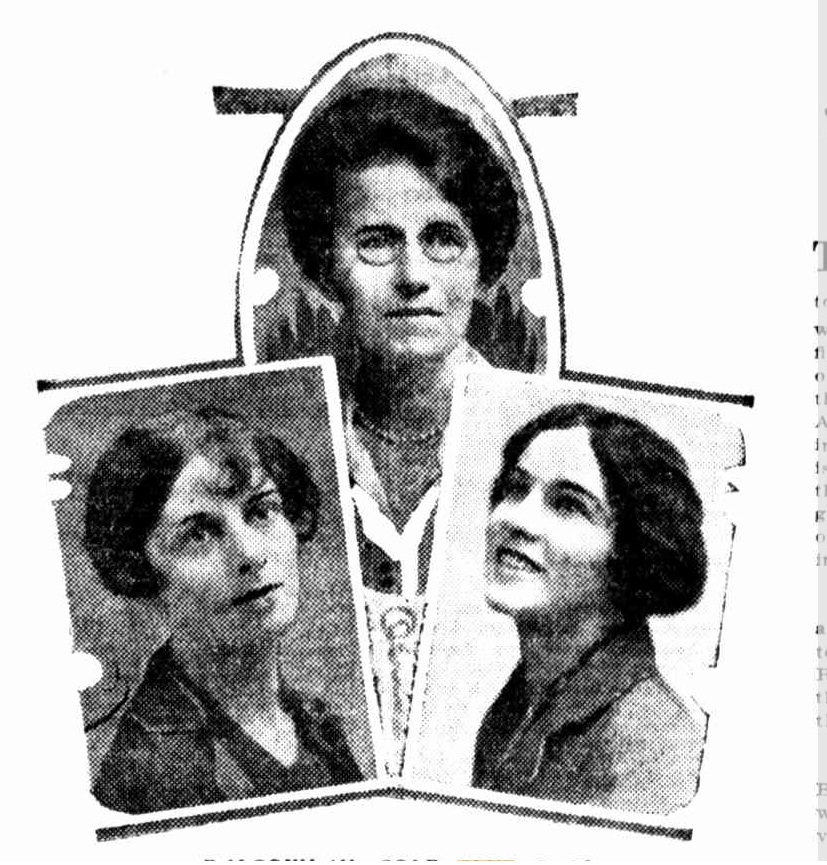
The Balgowlah Golf Club members will have their first big ball in the clubhouse on Saturday night. Mrs. Dodds ( centre ) is the president for the ball ; Mrs. Clive McCoy ( left ) is the hon. treasurer, and Miss Rai McIlvride (right) is the hon, secretary. — Dayne photo. BALGOWLAH GOLF CLUB BALL (1927, January 27). The Sun (Sydney, NSW : 1910 - 1954), p. 21 (FINAL EXTRA). Retrieved from http://nla.gov.au/nla.news-article223478693
BALGOWLAH GOLF CLUB DANCE.
A dance was given at the Balgowlah Golf Club on Saturday night, to mark the end of the club's first year. The associates of the club, under the presidency of Mrs. H. Dodds, were the organisers of the dance, which was held in the reception room and verandahs of the new club house. Hanging baskets of ferns and bowls of crimson and white roses wore used ns decorations. Mrs. H. Dodd was in a block beaded gown. Mrs. T. McCoy, hon. treasurer of the associates' committee, wore Jade taffeta and silver lace. The hon. secretary, Miss Rae McIlvride, was in pink and blue taffeta. Other committee members present were Mrs. R. Newman, who was in black marocain; Mrs. C. Cochrane. In pink georgette, trimmed with satin roses of the same colour; Miss Dalton, who was in apple green' georgette; Miss Hindman, wearing old rose marocain; Miss M. Bullivant, who had a frock of blue chenille embossed georgette; and Mrs. D Soutar, in a blue beaded gown.
Guests of honour were the Mayor and Mayoress of Manly (Mr. und Mrs. A. T. Keirle), who were accompanied by Mrs. Collins (Mayoress of Wagga). Mrs. Kellie chose a black georgette gown. Mrs. Collins was in black and red. Other guests were Miss Snow Brown, who was In a frock of mauve georgette. Mrs. Montague, wearing a black sequinned frock. Mrs. M. Magner, in gold tissue Miss Enid McIllree's frock was of pink georgette. Mrs. Shortridge wore black georgette trimmed with feathers, Mrs. Cole Milne was in a black beaded georgette frock. Mrs. H. Joskell wore cinnamon georgette draped with lace. Mrs. M. Fredericks' rod taffeta was trimmed with golden lace. During the I evening, an exhibition of dancing was given by Mr. and Miss Tiernan. BALGOWLAH GOLF CLUB DANCE. (1927, January 31). The Sydney Morning Herald (NSW : 1842 - 1954), p. 4. Retrieved from http://nla.gov.au/nla.news-article16351118
BALGOWLAH ASSOCIATES
Mrs. J. B. Brown's trophy.-Qualifying round and match play: Mrs. Soutar beat Mrs. Gately In the final.
Mr. Newcomen's Trophy.-Knockout competition: Mrs. Beal (36) beat Mrs. Cox (21), and Miss Reid (17) beat Miss Garden (17) In the semi-finals, and the result pave a win to Miss Reid.
The fourth round of the L.G.U. medal resulted In a win for Miss E. Lamrock.
A scaled nine-hole competition for Mrs. Soutar's trophy was won by Miss C. Reid. BALGOWLAH ASSOCIATES (1930, June 24). The Sydney Morning Herald (NSW : 1842 - 1954), p. 13. Retrieved from http://nla.gov.au/nla.news-article16701811
Balgowlah Golf Club at 506 Sydney Road, Balgowlah: http://balgowlahgolfclub.com.au/
Long Reef

Long Reef - Collaroy, circa 1912
Long Reef
— Ex-Minister's Foresight.
Mr. Arthur Griffith, when a member of the Cabinet, secured for the people at least one beach, besides resuming what is now known as Griffith Park, which is to the north of Deewhy Lagoon embraces the whole of Long Reef, and stretches from the sea back to the tramline. This area the council has improved. The chief trouble is that nobody out-side the council seems concerned — and it is a vote in the wilderness, begging a smile for Cinderella. Building and Building Land (1921, February 2). Evening News (Sydney, NSW : 1869 - 1931), p. 8. Retrieved from http://nla.gov.au/nla.news-article117300305
Most of the golf clubs about Sydney are beginning to feel the effects of H.C.L. Long-reef Club, which started off light-heartedly in its swaddling clothes at £2/2/ per year subscription, had only existed for a ,few weeks when it was found necessary to increase the amount to £3/3/, and it is questionable if they can make things go even at this fee. One of the cheapest clubs about Sydney is Cammeray (£2/2/; entrance fee and £3/3/ sub.). The club has no control over its links, which are situated on a public park given up largely to cricket, football, tennis, stray dogs, herds of wild horses, Bolshevik idlers (who biliously look upon even the poorest of golfers as mere joints in the tails of the idle rich), and swarms of children; so that the erratic player is always liable to find himself in court on a charge of doing grievous bodily harm to some one. With all these disabilities it was thought that £3/3/ per year was quite enough to pay at Cammeray for one's golfing privileges, but the Club is beginning to find it necessary to consider the question of raising the fee. If things get much worse scores of golfers will presently begin to find the game rather too costly. Numbers of young men (bank clerks, etc.) learn the game in the country, where it is cheap, and have to abandon it when they come to the metropolis owing to the excessive cost. It is impossible to be a regular playing member of some of the Sydney Clubs at less than £25 per year. GOLF NOTES. (1921, December 23). The Land (Sydney, NSW : 1911 - 1954), p. 13. Retrieved from http://nla.gov.au/nla.news-article102968468
Long Reef Golf Club - Club History:
The Club’s history dates from the period immediately after World War One. At that time, those wishing to play golf in the northern beaches area could do so only at Manly – there was no other course. In the 19th Century, the Long Reef headland was used for light farming. It was owned by the Salvation Army until 1912 when it became Crown Land administered by Warringah Shire Council. For some years it was a popular camping ground.
The golf club was started in 1921 as a 9 hole layout. Because the lower part of the headland was swamp the golf holes were confined to the upper ground. By today’s standards the course was a bit primitive. Grazing cattle constituted an early problem and wire fences were erected around the greens. The swamp was drained and filled in the late’20’s and the course was extended to a full 18 holes in 1931.
The course took a backward step during WW11. Damage was caused to the course when the Army used a greater part of it as an artillery range. Golf continued on non-firing days over an adapted nine holes. The greatest damage, was the repercussions that followed the flattening of the large beach side sane dunes in 1943. Sand invaded much of the southern part of the course, blocking water sources and fairways.
The course was repaired and redesigned following plans made by Eric Apperly in 1946, with further changes to course design made to ease the sand problem in 1965 when an extra piece of land was acquired to create what is now the first and second holes, designed by Al Howard. In the 90’s the establishment of boundary contours and planted vegetation helped stabalise the dunes.
During the first 70 years, there were many very wet periods during which the lower holes (where the swamp had been) became flooded. In 1990 action was taken to correct this. Several large ponds were constructed and course drainage was directed via these, with any overflow passing out to sea on the southern side of the course. The pond water has been used as a primary source of irrigation water. The ponds have also become a habitat for aquatic wildlife and as many as 8 pelicans have been seen there recently.
The first Clubhouse in 1923 was originally little more than a shed. There have of course been many subsequent improvements to the building and these have continued every few years to the present day. With the north-easterly ocean aspect, members and public have always enjoyed one of the most scenic clubhouse locations in the state.
A vital part of any club is its members. Long Reef is no exception and there have been many outstanding players over the years. In the early years Wally Smith was probably the best and just before and after World War II, Gordon Thomson was very hard to beat. His crown was worn in the 50s and 60s by Des Lofthouse who won more Club Championships than any other player (12). Since the early 70s things have been more evenly shared and no single player has been dominant.
There have also been some outstanding lady members with Ruby Watts, perhaps at the top of the list. Dulice Fouracre holds the record of 8 individual Championship wins.
Long Reef today remains a constant golf challenge for all players. The winds has always been the main obstacle to a good score and few can claim to have mastered it. The course itself has improved a lot over the years and it is now a testing layout with fairways and greens of which all members are proud. Retrieved from https://longreefgolfclub.com.au/about-us/club-history/
Annis Soutar (nee Jackson) and wife of Dan Soutar, was Long Reef Golf Club's Ladies President from 1939-1955 and the First woman Life Member. Annis passed away in 1955. The LRGC states Annis was a driving force for 16 years as Associates’ President spanning the war years.
Long Reef clubhouse opening on Saturday February 17th, 1923:
LONG REEF LINKS.
OPENED ON SATURDAY.
On Saturday afternoon the clubhouse and golf links of the Long Reef Gold Club, Collaroy, were officially opened by Sir William Vicars The links lie within Griffith Park, an area under the control of the Warringah Shire Council, and commands beautiful views. Sir William Vicars congratulated the Shire President (Councillor Parr) upon the council's efforts to popularise the park.
Owing to the dry weather the links were not in the best condition, but an interesting; exhibition match was played by E. B. Apperly (amateur champion of New South Wales) and Carnegie Clark against D. G. Soutar and P. G. Merrilees. LONG REEF LINKS. (1923, February 19 - Monday). The Sydney Morning Herald (NSW : 1842 - 1954), p. 10. Retrieved from http://nla.gov.au/nla.news-article16035719

Official Opening of the Course and Club House. Feb 1923. - Daniel Soutar can be seen (with the moustache)
GOLF COURSE AT COLLAROY
(By FAIRWAY.)
The advent of a golf course at Collaroy is of more than passing interest. Sydney is badly off for seaside links, and anything calculated to remedy the shortage will be eagerly hailed by golfers as a whole. There Is scope for plenty of them, and the experience of this latest enterprise may go far to encourage other localities In striking out with a concrete scheme where they have previously been restrained by doubt. In the end nothing short of a first-class championship seaside links will suffice, but the ultimate goal can only-be reached by degrees, and it Is through the medium of areas like Collaroy that the main object will be achieved. The little bit of ground now at the ' disposal of the club has neither the 'expanse nor contour suitable for the , best class of course, but there is a j lot of good country adjacent, and development is not likely to be lost sight 'of by the energetic promoters who have brought the movement to its present advanced stage. The existing area is not yet in a state of perfection. After daily experience of the long-established metropolitan courses it may appear crude; actually it is a wonderful improvement on the original, and reflects considerable credit on Mr. Mann, well known at Bonnie Doon. who has been created the first president, and Mr. Lambert, who is carrying out the secretarial duties. Fairways, even on a nine-hole course, require a Jot of preparation, but with the support now being given to the club it is only a matter of time when everything that is necessary in this direction will be thoroughly carried out. Anyway, what the golfer suffers in bad lies will be more than compensated by the glorious views he encounters when he looks up for Inspiration. From most points on the course one has a clear view of the coastline as far as Manly on the south side, and up to Barrenjoey on the north. It is a most picturesque setting, and one that looks its best (luring the season when it will be within the focus of golfers.
NOT SANDY COUNTRY.
The course, although on the shores, is, unfortunately, not sandy country throughout; in fact, only the first two holes are of the type which one mentally associates with seaside links. Long Reef promontory has quite a good golfing surface, but the sandy lowlands stretch in the other direction. There is a large area of beautiful golfing country immediately adjacent, south to west of the second hole, and this will be a ready outlet when expansion is decided upon. The present course is on a reserve kindly made available for the game by the shire council. Natural hazards are not plentiful, but occasional trees are there to hamper the wayward ball. At the short fourth the right-hand player will find more than ordinary inducement to cure his slice. To follow the pushed-out hall entails a descent of anything up to 100ft., and probably a futile search into the bargain. The fifth and sixth are up and down mid-fairways, and offer refreshing interlude between the strain of the outward and inward holes 'along the seaboard. From a playing j point of view, the second is probably the best, and would be considered a ' good sport hole anywhere. It is well guarded with natural sandy hazards, and the pitch to the green is a fascinating shot.
HELP FOR THE "YOUNG IDEA."
The wholesome effect of a course convenient to a popular holiday resort , is not always fully appreciated. In my opinion, it is a big factor in the solution of the "young idea" difficulty which threatens to stagnate golf in any growing metropolis. A boy who would look quite out of place in the average club-house has a fine opportunity during his periodical holidays to .become familiar with the touch of a club and the various points of the ; game without in any way interfering with his healthy interest in other sports which may strictly be more appropriate to his age. In such conditions, too, ho can more readily be inveigled into carrying clubs for his seniors. Left to his own ability to observe and imitate, he will soon form an attachment and acquire an action that may be left to his safe keeping ' though they may be dormant for years afterwards.
Nothing strikes more forcibly in the records of club play than the rareness of a new name amongst the lower handicaps. The history of inter-club games is a case in point. Practically the same teams appear year after year. Yet a young man, who had had a passing acquaintance with the game as a boy, would reach this preliminary stage in his second season of serious play. No doubt golf will continue for years to be referred to as the old man's game, but its prizes will nevertheless go to the young and vigorous athletes. It is not suggested that their successes will be gained by a combination of brute force and ignorance qualified or unqualified. The element of force will certainly contribute very largely to the achievement of results, but the plain, straightforward punch up to the hole will be based on real knowledge as well. That knowledge will unconsciously be absorbed by the boy who comes in contact with the game, and while the ability to apply it may wane through want of practice, it will always be there to work up again, quickly or slowly, according to the time it has been in disuse. GOLF (1923, February 20). The Daily Telegraph (Sydney, NSW : 1883 - 1930), p. 8. Retrieved from http://nla.gov.au/nla.news-article245829477
GOLF
Long Reef Club's Course
The committee controlling the destinies of the Long Reef Club is a live body. Commencing in a rather primitive way some two years ago, the club has gone ahead at a tremendous rate. A new clubhouse was built last year, but Is already too small for the rapidly increasing membership, and additions will be necessary for the comfort of members. With regard to the course, mistakes have been made, which could have been obviated by more experienced committeemen. In the first place, when it was decided to lay down turf greens they were made too small. Two or three of the greens are already showing defects in planning, and an effort has been made to minimise them by sloping the additions, thereby creating more or less of a crown in the centre. GOLF (1923, September 14). The Sun (Sydney, NSW : 1910 - 1954), p. 5 (FINAL EXTRA). Retrieved from http://nla.gov.au/nla.news-article222681083
BEAUTIFUL LONG REEF GOLF COURSE
A HAPPY GROUP— Lady members of the Golf Club at Long Reef, one of Sydney's most picturesque courses, happy at the prospect of a round. Left to right: Miss M. Lawler, Mrs. Emannel, Mrs. Stanley (captain), Mrs. Davis (associate secretary), and Mrs. Gaffney.
FROM THE CLUB HOUSE a pretty view is obtained. It takes in Fisherman's Beach, on the left.
A BEAUTIFUL PANORAMA from one of the greens, which takes in Dee Why Beach and Manly. Bogey has no terrors for golfers in such surroundings.
EVEN KEEN GOLFERS such at (left to right) Mr. F. Felton, Dr. Hoodie, and Mr. W. Whytock (captain of the club) are impelled to halt and admire the beautiful view.
"THE PRO." — Frank Eyre is the professional at Long Reef, and a vigorous and capable golfer, too. "MAC" is the green-keeper, -cheery soul, popular with every-body. "MR. SECRETARY." — The secretary of the Long Reef Club is Mr. A. P. Lambert. CAPTAIN AND VICE-PRESIDENT— Mr. W. Whytock (left) the captain, and Mr. H. C Moses, vice-president.
THE CLUB HOUSE is of the bungalow type suitable to the surroundings.
.jpg?timestamp=1574742452412)
.jpg?timestamp=1574742508172)
.jpg?timestamp=1574742545757)
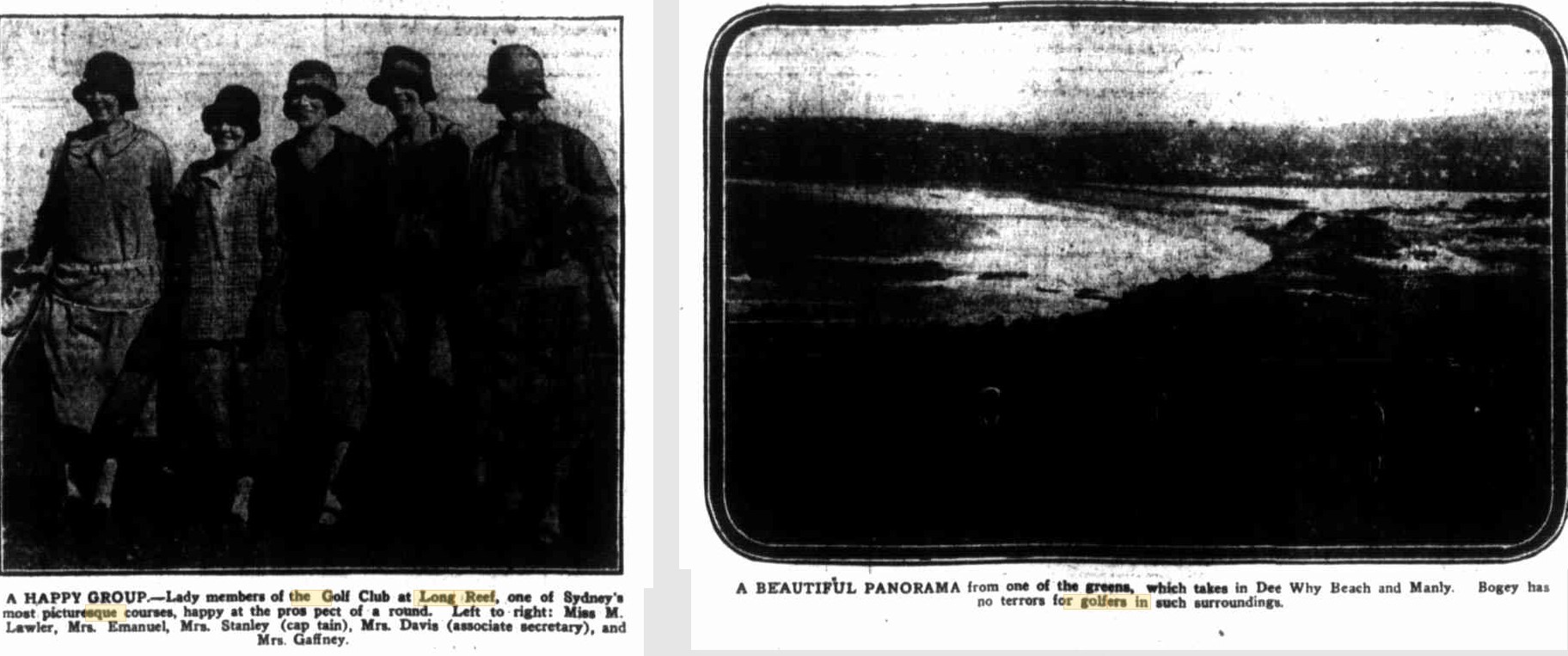
BEAUTIFUL LONG REEF GOLF COURSE (1926, May 17). Evening News (Sydney, NSW : 1869 - 1931), p. 12. Retrieved from http://nla.gov.au/nla.news-article117283491
LONG REEF GOLF LINKS FROM THE AIR.
DEEWHY IS ON THE LEFT AND COLLAROY ON THE RIGHT. LONG REEF GOLF LINKS FROM THE AIR. (1929, August 17). The Sydney Morning Herald (NSW : 1842 - 1954), p. 18. Retrieved from http://nla.gov.au/nla.news-article16576494

POLICE APPEAR AS GOLFERS (1933, July 31). The Labor Daily (Sydney, NSW : 1924 - 1938), p. 5. Retrieved from http://nla.gov.au/nla.news-article236576266
Long Reef Golf Club

.jpg?timestamp=1574742130554)
.jpg?timestamp=1574742172597)
Jutting into the Pacific Ocean, with rollers crashing on to its rocky base, the Long Reef course, at Collaroy, is one of the most picturesque in the State. Magnificent panoramic views are obtainable on all sides. Members themselves are happy, jolly acquaintances, as our Kerwin Macgraith discovered on his visit. Long Reef Golf Club (1935, May 22). Sydney Mail (NSW : 1912 - 1938), p. 32. Retrieved from http://nla.gov.au/nla.news-article166109342
ANOTHER WIN FOR VETERAN
Soutar Wins P.G.A. Cup
VETERAN golfer, Dan Soutar, won the P.G.A. Cup, played for at Long Reef on Tuesday, with a round of 70, by one stroke from Frank Eyre, the local professional. BOTH are of the old school of golfers and they disclosed once again that in playing ability they can hold their own . notwithstanding tho appearance in recent years of a crop of young; professionals, who, while they may be more brilliant on occasion, cannot afford to make mistakes or they, will find themselves among the 'also started' division. The bright young stars of recent months, C Booth and P Bolger, were competitors, but Bolger could do no better' than a 73, which tied for third place with Vic. James Booth had a day off and returned a 76. The holder of the Cup, C. Gray, took 78.
The weather conditions suited the short-swinging Soutar. A strong nor'easter' blew, and the seaside course missed none of it. The event gave W Bolger his first opportunity to play in competition golf since his recent illness In the circumstances, he did quite well, returning a 74. The other convalescent, 'Sam' Richardson, who, like Bolger, is a member of the team to visit the United States, has recovered, but decided to take no risks, and looked on.
The pros. made a picnic day of it. They invited amateurs to come along, and in the morning four-ball games were played. In the afternoon, in addition to the Cup amateurs played in a stroke handicap. Tom Heard (set ) and D. McDougall (12) won the four-ball with a 4 up, and the handicap for amateurs was won by J C Ives (79-12, t-7) The main scores in the PGA Cup were:— D. G.,. Soutar .70, F P Eyre 71, V Bolger 73, V James 73, A Thomson 74, W Bolger 74, M L Kelly 74, J Bassett 75, W Clark 75. W Ginman 75, A Downes 7b, C Booth 76, D Spence 77. U Gray 78, T Reard 78, R Can 81, G Fitzgerald 82, A Keane 83, N Johnson 83. M. Waugh 84,,R Spring 84. ANOTHER WIN FOR VETERAN (1935, December 12). Referee (Sydney, NSW : 1886 - 1939), p. 20. Retrieved from http://nla.gov.au/nla.news-article135521928
Gordon Soutar, alike his mother, remained a member of the Long Reef Golf club:
In the Long Reef v Ryde Parramatta game, C. F. Esdaile and Ron Jennings were featured in a photo-finish on the 20th green, where Esdaile won the match and incidentally the game for the Long Reef team. Jennings, though three down at the 13th, won the next three holes to make the match square and halved the 17th, 18th and 19th holes, only to see Esdaile play a magnificent second to the 20th green to clinch the match.
Gordon Soutar, who uses today the putter that his father, Dan Soutar, made famous many years ago, proved that it has not lost its magic touch when he holed an eight-footer across the 17th green to defeat Frank Smith with two up and one to play. ...GOLFERS DO BATTLE AT MANLY (1949, March 27). Truth (Sydney, NSW : 1894 - 1954), p. 33. Retrieved from http://nla.gov.au/nla.news-article168880679
Balgowlah
DONT BE FLATTERED!
FAST COURSES
GOLFERS AND THEIR SCORES
(By D. G. Soutar)
At this time of the year, especially when a dry spell is on, with the fairways becoming exceptionally fast and the rough thinner — In many Instances being burnt out — it is not surprising that low scoring is the order of the day. Saturday's golf results were cases in point. While congratulating the players who returned good, cards, it might do some good to warn them against accepting those scores as their true form. Every player who is keen upon improving his game should analyse his score, picking out the weak shots which failed to get trapped and the exceptionally good ones which he did not expect to bring off. With regard to the latter every player who can hit a ball reasonably well is likely to have two or three exceptionally good shots in a round, and, of course, the lower his handicap the greater number of good shots. He should not, therefore, discount these shots too heavily, but should rather look upon thorn as something ' likely to be repeated or even bettered. On the other hand, bad shots which flukily escaped trouble should, be debited with the loss of at least one stroke. It is well to be on the safe side, as, although shots have .been holed from hazards on the rough, It much more frequently happens that two strokes or more have been required to recover. While the back-markers improve their scores by a stroke or two when the courses ore fast, it is the middle and long markers who get the most advantage. Another type Is the short but accurate driver. He often finds the two-shot holes within his reach,' and a fair sprinkling of fours come his way, while the long holes are occasionally done in five. A case of the back-marker coming to light with a great round was R. Withycombe, of the Killara club, who from the scratch mark won the bogey competition easily with a card of 6 up. Although it Is rare that a back-marker stands out so prominently (the next card was 2 up), I was not at all surprised, as Withycombe is one of our most promising young players, who, on his day, can hold his own with the best of them. In addition,' Killara is in good order Just now, the fairways being very fast and the greens slow— an ideal state of affairs for a player in form.
GREENS LOOK WELL
I cannot remember having seen the Killara greens looking better, and Withycombe took full advantage of that fact. Tho same remark applies to Concord, where the policy of keeping a good growth of grass on the greens has been a huge success, and fair to everyone. The low scores at Moore Park were mainly due to the Saturday course being some three strokes easier than the full course. The alteration is necessary, as the cricketers occupy a small area of the course on Saturdays.
BALGOWLAH RE-OPENING
The Balgowlah course will be reopened on Saturday next with an exhibition four-ball best-ball match between D. G. Soutar (Moore Park) and Charlie Gray (Balgowlah) against P. Eyre (Long Reef) and C. E. Barnes (Manly). Laid out in Balgowlah Park, the course has only been in play since the beginning of the year, and is naturally in a rough state. To remedy this the course has been closed for a month, and the members have formed "working-bees" over the week-ends, the result being most satisfactory. Some of the greens have been enlarged, and the fairways cleared up generally.
A big roll-up of members Is expected, and in the event of D. G. Soutar being unable to play his place will, In all probability, be taken by W. Corry. On Sunday the Long Reef club will give a send-off to Charlie Gray, who leaves for America on the 18th, and an all-day match has been arranged. The sides will be D. G. Soutar and C. Gray (who has been under Soutar's guidance since he was quite a little chap) against P. Eyre and W. Corry. These players met in a friendly game last summer, when Eyre and Corry were victorious by a small margin, but Soutar and his youthful partner hope to reverse that result. The morning round will start, at 10.30, and the afternoon round at 2.30, and those desirous of witnessing a match between the best players will he assured of seeing an exhibition of good golf. All the players are in form, Eyre having a couple of weeks ago won the "Sun-Herald" £500 (the professional championship of Australia), while Soutar is the holder of the New South Wales championship. DON'T BE FLATTERED! (1926, November 2). The Sun (Sydney, NSW : 1910 - 1954), p. 5 (CUP EDITION). Retrieved from http://nla.gov.au/nla.news-article224130004
GALA DAY
— BALGOWLAH SPIRIT NEW CLUBHOUSE
(By D, G. Soutar)
Yesterday was a gala day at Balgowlah, when the new clubhouse was officially opened by Alderman A. T. Keirle, the Mayor of Manly.
In tracing the history of Balgowlah Park, Alderman Keirle expressed the view that up to a year or so ago few people were aware that such a fine area existed. Up to then the ground was covered with thick scrub and only a small portion of the park was cleared to lay down two cricket pitches and tennis courts, the rest being a wilderness. ' To Captain Whytock, one of the oldest and keenest players, the existence of the course is due. He saw the possibilities of making a fine little nine-hole course, and mainly through his efforts the Interest of the Manly Council was aroused, and to-day the club has a short but sporting nine-hole course which should prove a great nursery for future champions, because to play the course successfully good shots must be executed.
"WORKING BEES"
In order to get the course into the best possible order "working bees" have been formed, and they have been attended with great success, a considerable amount of cleaning up having been done and many of the greens remodelled. Alterations have been made to the course, and they have brought, about a decided Improvement. It only requires good soaking rains to crown their efforts with success. A four-ball-best-ball exhibition match was played between F. Eyre and E. Barnes and C. Gray and myself. The time at our disposal would allow only of nine holes being played, the match being followed by far and away the biggest crowd I have seen outside a championship event. The match was even and was enjoyed immensely by the large crowd, who appreciated the flashes of bright play, all of the players coming to light at some stage or other. Gray and I won by one hole, the beat-ball scores being as follow: — Soutar and Gray — 5 3 3 3 4 5 3 2 4 — 32.. Eyre and Barnes — -1 3 4 3 3 6 4 3 3 — 33. Bogey — 5 3 4 3 4 5 3 3- 4 — 34.
CLUB'S SUCCESS The distances of the holes are: — 1st, 333 yards; 2nd, 115 yards; 3rd, 210 yards; 4th, 176 yards; 5tli, 231 yards; 6tl), 440 yards;- 7th, 157 yards; 8th, 118 yards; 9th, 202 yards. Total, 2042 yards. ' Sir John Vicars umpired the mulch. . The success of the Balgowlah Club Is a striking testimony to the growth of the game. Formed less than a year ago, the membership (150 men and 100 women) is" full, and there 'is a fairly long waiting list. With this example the Manly Council and Warringah Shire should have no hesitation In going straight ahead with the proposed new links Immediately beyond the present Manly links. Success would be assured before the first "divot" was lifted. GALA DAY (1926, November 7). The Sun (Sydney, NSW : 1910 - 1954), p. 16. Retrieved from http://nla.gov.au/nla.news-article224132125
NINE HOLE COURSE OPENED
The Major of Manly (Alderman A. T. Keirle) on Saturday afternoon officially opined the new nine hole course at Balgowlah, and stressed the great value the links were to the district. Land in the vicinity of the new course, he said, had increased in value, and had given an ímpetus to building operations. The Manly Council and the Warringah Shire Council proposed to establish another course-the fourth in the district- Immediately beyond the present Manly links.
Mr. W. Scott Fell, M L.A., and Aldermen Barton and Quirk also spoke.
Captain W. Whitock is the president of the new club, and a considerable amount of volunteer work has been expended in making the links. The clubhouse is an attractive brick building, and the money to build it was advanced by the Manly Council, the club paying 8 ½ per cent, interest on the loan.
During the afternoon an exhibition four ball best ball game was played between K. Eyre and E. Barnes and C. dray and D. G. Soutar. Only nine holes were played, and Gray and Soutar won by one hole, the best ball scores being: Soutar and Gray, 5, 3, 3, 3, 4, 5, 3, 2, 4-32; Eyre and Barnet, 4, 3, 4, 3, 3, 6, 4, 'Bogey li: 6, 3, 4, 3, 4, {, S, 3, 4-34. NINE HOLE COURSE OPENED. (1926, November 8). The Sydney Morning Herald (NSW : 1842 - 1954), p. 8. Retrieved from http://nla.gov.au/nla.news-article16316728
C. Gray, Balgowlah Professional, Bound for America
CHARITY MATCH. .
The principal event on Saturday will be an exhibition four-ball game at Moore Park, D. . G. Soutar and H. R. Sinclair . against Jr. Popplewell and W. Corry. A collection will be taken up for the Cancer Fund. The game should provide some fine golf and be well worth watching. The last charity mntch played there,' for a brother professional, gave great pleasure to a large gallery, and a substantial sum was raised.
GOING TO AMERICA.
Mr. W. Whytock made a presentation to C. Gray, the Balgowlah ' professional on behalf of the members. Gray is going to America to join J. H. Kirkwood. Very popular with all the members, and, in fact, with everyone who knows him, his services will be greatly missed. It is always u pleasure, however, to see young and enterprizing young men get a chance of advancement. Gray will be sure to do well. GOLF (1926, November 17). Referee (Sydney, NSW : 1886 - 1939), p. 16. Retrieved from http://nla.gov.au/nla.news-article128103504
BALGOWLAH GOLF CLUB DANCE.
A dance was given at the Balgowlah Golf Club on Saturday night, to mark the end of the club's first year. The associates of the club, under the presidency of Mrs. H. Dodds, were the organisers of the dance, which was held in the reception room and verandahs of the new club house. Hanging baskets of ferns and bowls of crimson and white roses wore used ns decorations. Mrs. H. Dodd was in a block beaded gown. Mrs. T. McCoy, hon. treasurer of the associates' committee, wore Jade taffeta and silver lace. The hon. secretary, Miss Rae McIlvride, was in pink and blue taffeta. Other committee members present were Mrs. R. Newman, who was in black marocain; Mrs. C. Cochrane. In pink georgette, trimmed with satin roses of the same colour; Miss Dalton, who was in apple green' georgette; Miss Hindman, wearing old rose marocain; Miss M. Bullivant, who had a frock of blue chenille embossed georgette; and Mrs. D Soutar, in a blue beaded gown.
Guests of honour were the Mayor and Mayoress of Manly (Mr. and Mrs. A. T. Keirle), who were accompanied by Mrs. Collins (Mayoress of Wagga). Mrs. Kellie chose a black georgette gown. Mrs. Collins was in black and red. Other guests were Miss Snow Brown, who was In a frock of mauve georgette. Mrs. Montague, wearing a black sequinned frock. Mrs. M. Magner, in gold tissue Miss Enid McIllree's frock was of pink georgette. Mrs. Shortridge wore black georgette trimmed with feathers, Mrs. Cole Milne was in a black beaded georgette frock. Mrs. H. Joskell wore cinnamon georgette draped with lace. Mrs. M. Fredericks' rod taffeta was trimmed with golden lace. During the I evening, an exhibition of dancing was given by Mr. and Miss Tiernan. BALGOWLAH GOLF CLUB DANCE. (1927, January 31). The Sydney Morning Herald (NSW : 1842 - 1954), p. 4. Retrieved from http://nla.gov.au/nla.news-article16351118
BALGOWLAH ASSOCIATES
Mrs. J. B. Brown's trophy.-Qualifying round and match play: Mrs. Soutar beat Mrs. Gately In the final.
Mr. Newcomen's Trophy.-Knockout competition: Mrs. Beal (36) beat Mrs. Cox (21), and Miss Reid (17) beat Miss Garden (17) In the semi-finals, and the result pave a win to Miss Reid.
The fourth round of the L.G.U. medal resulted In a win for Miss E. Lamrock.
A scaled nine-hole competition for Mrs. Soutar's trophy was won by Miss C. Reid. BALGOWLAH ASSOCIATES (1930, June 24). The Sydney Morning Herald (NSW : 1842 - 1954), p. 13. Retrieved from http://nla.gov.au/nla.news-article16701811
THE N.S.W. GOLF CHAMPION.
OSCAR O'BRIEN'S RECORD.
O. H. O'Brien, who established a record on Saturday by winning the amateur golf championship of New South Wales for the third time, has been identified with New South Wales and Australian golf for a period extending over seven or eight years. O'Brien was 26 years of age on June 10, the day, strangely enough, that this year's championship commenced. He is slightly built, and has what judges of the game consider a very attractive style. He laid the foundation of his game on the old Sydney Golf Club's course at North Bondi. He was about 12 years of age at the time, and at first played with an old bush stick and gutta balls. Shortly afterwards the Royal Sydney Club -imported the late James Scott as professional, and from him the present- champion got his first club.
His best round, was then a moderate 97, but some two or three years afterwards he reduced this to 75. After leaving school his hours for practice were naturally curtailed, but having a holiday' at the time when the Australian Golf Club held the first "open'' championship meeting at Old Botany, he entered as an unattached player, and created a mild surprise by running into third place In New South Wales amateurs. His partner, on this occasion, was Dr. Gordon Craig, who, no doubt, recognising his abilities as a player, suggested that lie should join the Marrickvllle Club. O'Brien acted on the doctor's suggestion, and almost from that date (about 1903) he has occupied a prominent position in the game in this State.
At this time D. G. Soutar, who was a member of Manukulla Club, was amateur champion of Australia, and open champion of New South Wales. Being a member of the same club O'Brien played as much as possible with Soutar who improved his game considerably, with the result that he went through his first season In the suburban matches without defeat. In the following year, acting on the advice of Clark and Soutar, he changed his style, which, however, had a temporarily discouraging effect, for in that year's State championship at Botany he did very badly. In the open championship in 1904 he qualified 9th.
His first success was gained In 1906, when he won the State championship from T. S. Cheadle, at Rose Bay, after giving one of the finest exhibitions of golf seen to that date. The record of the course at that time was 78. - O'Brien equalled this in the morning, and did a 76 in the afternoon. Cheadle, at the same lime, establishing a fresh record by doing his second round in 74. In the same year O'Brien qualified 4th in the open championship of Australia, and first amongst the amateurs. In the play off for the amateur championship he defeated C. Feistead in the first round, but was beaten in the semi-final at the 19th hole by the ultimate winner, E. A. Gill, of Queensland.
A few months afterwards he accepted the position of secretary to the Australian Club at Kensington, which position he filled with great success. He resigned last year in order to commence business on his own account, and as a mark of their appreciation of his services the members presented him with' a purse of sovereigns.
In 1907 he was first in the qualifying round, but was beaten in the play-off by E. P. Simpson, who eventually won the event. In 1908 he again qualified 'first, and regained the championship by defeating C. L, Mackenzie in the final. In 1909 the conditions of the championship were altered the first four qualifying instead of eight. O'Brien on this occasion just failed to qualify, being fifth on the list. . In 1909 he again qualified, but was beaten in the 'play-off. after a close match, by tho open champion- Claud Feistead.
On Saturday last ho won tho Championship for the third time, after playing brilliantly for rounds of 79 and 75 in the semi-final against E. L. Apperly, and after a most exciting match in, the final with C. H. Reading.
Mr. O'Brien has also represented New South Wales in the series of lnter-State matches in 1905 1906 1907, 1908, and 1909, and was picked last year but was unable to play. In addition he has won the Australian Club's championship for the past two years In succession, the Hamden Cup 1908, 1909, Ellesmere Cup 1909, and the Manly autumn record 1909 and 1910. THE N.S.W. GOLF CHAMPION. (1911, June 21). The Daily Telegraph (Sydney, NSW : 1883 - 1930), p. 15. Retrieved from http://nla.gov.au/nla.news-article239093117
Golf,
AN. HOUR WITH FRANK T. O'BRIEN.
The genial Frank O'Brien, Killara's Sydney popular professional is in our midst. His active, athletic figure walked into our sanctum this
mornlng and accosted us with a ''Fore there ! How do !" He looks you square in the eye, but we take it that that is part of the game 'concentrate your gaze on the ball (of the eye)." Well be concentrated, and we listened to him talking the gibberish of that game they call gowff, which originated in Scotch Jamie the First's time nigh 300 years long syne.
The clan O'Brien is akin tae the cloh; o' Braid in the gowfing world, because, yo ken, R you do happen like,, to meet aln o' thae chlels o' gowfers ye canna help yer-sel but reca' the doughty deeds of Uang Jamie Braid in bonnie Scotiland and The O'Brien o' 'Australia,
The "concentrated' gaze" at this stage of our reflections 'foozled" us, however, so with a sudden i"cleek" we recollected and "teed" off again and "sliced" the vernacular "bunkerwise."
We asked him for some information about tho ancient game and what ho thought of our local "gowfers" and how they; compare with the Southern devotees of the game. Our visitor, however, has a system and a thorough one at that, in teaching golf. He also has a system in his conversational way and likes to impart his information in his own style without leading questions, so we simply gave him rope for we are listening to tho history of golf from its infancy in Australia.
He again concentrated and begins :
Well, Mr, Editor, since you ask me in a general way for Impressions, I don't think can do better than just start at the beginning and give you some idea of the history and progress of the sport, but remember in that case as I have very little time on my hands we shall have to skip the "hints on, driving" which I promised you; they shall come later. I can fully understand that you would like to acquaint your readers with a few particulars regarding a sport which is making such immense strides throughout tho civilised world. I can claim to be one or oldest professional golfers in Australia, that of course you must remember that golf has only been In vogue on this continent for about 20 years. It would take too long to go into a connected history of the sport, so I shall have to be brief with my facts.
The first club formed in Sydney comprised four members who formed themselves into the Union Club. These four enthusiasts picked upon Moore Park as their rendezvous but later on betook themselves to Concord where they were given a course by that wealthy Sydney lady, Miss Walker. This move was only temporary, however, and more accessible links were looked for. Bondi was chosen. At this period there were 40 members, the leading spirits bring Messrs. Hugh McNiel, Kent, Dobbin and Burnside.
A move was then set afoot to procure a professional, and the services of Jim Scott, from Scotland, were secured. Lord Hampden at this time was Governor of New South Wales and he was an enthusiastic golfer; and, a first-rate sport. He became a member, as also did his aide-de-camp Captain Feilding, his secretary Captain Stanley, and Colonel Savage of the Governor's staff.
From the Bondi Club emerged the Royal Club of Sydney under the patronage of royalty, the glamour of the vice-regal party of golfers popularised the game wonderfully and from that time its popularity Increased at a great rate. It was at this period that I became Initiated into the mysteries of the royal and ancient game of golf. I became apprenticed to Scott the professional and served some few years with him.
Naturally I struck out for myself later on, and my first engagement was with the old Strathfield Club.Hero I had the pleasure of tutoring a former resident o! your town, Mr. Win. Tilloy, now of Sydney Stock Exchange. It is 16 years since I began giving Instructions in the game, and during these years I may say I have put fully 2000 golfers through my hands and was responsible for laying out the Killara, Mona Vale, Bowral, Strathfield, Avoca, Medlow Bath, Greenwell Point, Shoalhaven River (South Coast) and Beecroft links. Within a radius of 15 miles of Sydney there are at present a member ship of the various clubs of 3000, the Royal Sydney has over 800 members. In the country districts are another 3000 players. I mention this fact in order to get your readers to realise the prevalence of the game In New South Wales, since 1 am quite aware Charters Towers sends down to that State its annual stream of holiday seekers and that if they should be so fortunate, made or female, to possess a knowledge of the game they certainly will not find time hanging heavy on their hands 'or be mortified in being unable to take part in a twosome or a foursome with their friends, for everyone plays golf.
I am up here at the present time to impart what knowledge I have acquired in the game to members of the local club. I may say that it was with considerable diffidence that my committee agreed to give me the necessary leave of absence to come to North Queensland, particularly as the present time is my busiest period of the golfing season. With true sporting spirit of the golfer, however, assisted with a tittle soft persuasion from your townsman, Mr, W. F.-R. Boyce, I was relieved from duty for the time being. I shall only be here for a couple of weeks and I expect to have a very busy time. The booking so far, indeed, indicated a very strenuous time for me. So far l am satisfied that I must have splendid material to work upon in your city. The members I have on any hands are keen and adaptable and I anticipate a successful session with splendid results. A drawback most of your golfers have had to contend against is the fact that they have not so far been privileged to meet first-rate players such ,as we have round Sydney. There are inexperienced, the want of a model being felt. Then I must say your golfers are heroes playing under such adverse circumstances on such links as these possess. I hope before I leave here, to induce the committee to make improvements and amend some of their local rules.
I am rather surprised that the ladies of your district have not yet taken the golfing craze. In New South Wales it is different. Ever since Miss Parbury did so well in the Ladies' World Open Championship a great impetus has been given to ladies' golf in Australia and I see no reason, why Charters Towers should not be able to turn out a lady player who can hold her own with those of the other States. Since my arrival here I have only had lbs pleasure of instructing one lady golfer. I shall be only too pleased If others come for tuition to set apart a special after-noon for them. O'Brien is to be seen in practice at Sayers' Park' every afternoon, and those Interested cannot do better than take the opportunity of seeing his methods. Golf. (1912, July 11). The Evening Telegraph (Charters Towers, Qld. : 1901 - 1921), p. 3. Retrieved from http://nla.gov.au/nla.news-article214385149
